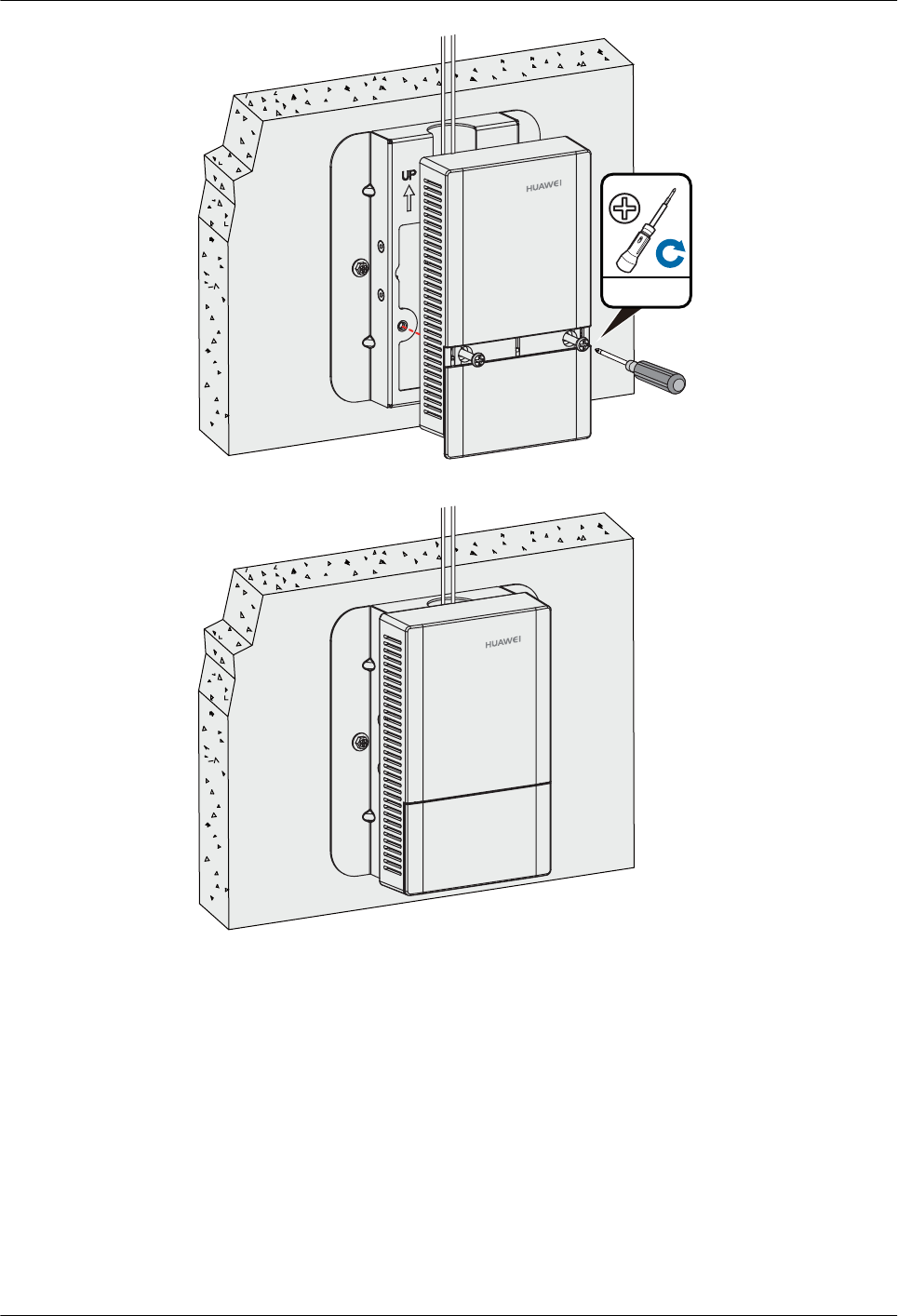Huawei Technologies AP2030DN Wireless LAN Access Point User Manual Hardware Installation and Maintenance Guide
Huawei Technologies Co.,Ltd Wireless LAN Access Point Hardware Installation and Maintenance Guide
Contents
- 1. Users Manual
- 2. Regulatory Compliance Statement
Users Manual

AP2030DN
Hardware Installation and
Maintenance Guide
Issue 05
Date 2016-07-22
HUAWEI TECHNOLOGIES CO., LTD.

Copyright © Huawei Technologies Co., Ltd. 2016. All rights reserved.
No part of this document may be reproduced or transmitted in any form or by any means without prior written
consent of Huawei Technologies Co., Ltd.
Trademarks and Permissions
and other Huawei trademarks are trademarks of Huawei Technologies Co., Ltd.
All other trademarks and trade names mentioned in this document are the property of their respective
holders.
Notice
The purchased products, services and features are stipulated by the contract made between Huawei and the
customer. All or part of the products, services and features described in this document may not be within the
purchase scope or the usage scope. Unless otherwise specified in the contract, all statements, information,
and recommendations in this document are provided "AS IS" without warranties, guarantees or
representations of any kind, either express or implied.
The information in this document is subject to change without notice. Every effort has been made in the
preparation of this document to ensure accuracy of the contents, but all statements, information, and
recommendations in this document do not constitute a warranty of any kind, express or implied.
Huawei Technologies Co., Ltd.
Address: Huawei Industrial Base
Bantian, Longgang
Shenzhen 518129
People's Republic of China
Website: http://www.huawei.com
Email: support@huawei.com
Issue 05 (2016-07-22) Huawei Proprietary and Confidential
Copyright © Huawei Technologies Co., Ltd.
i
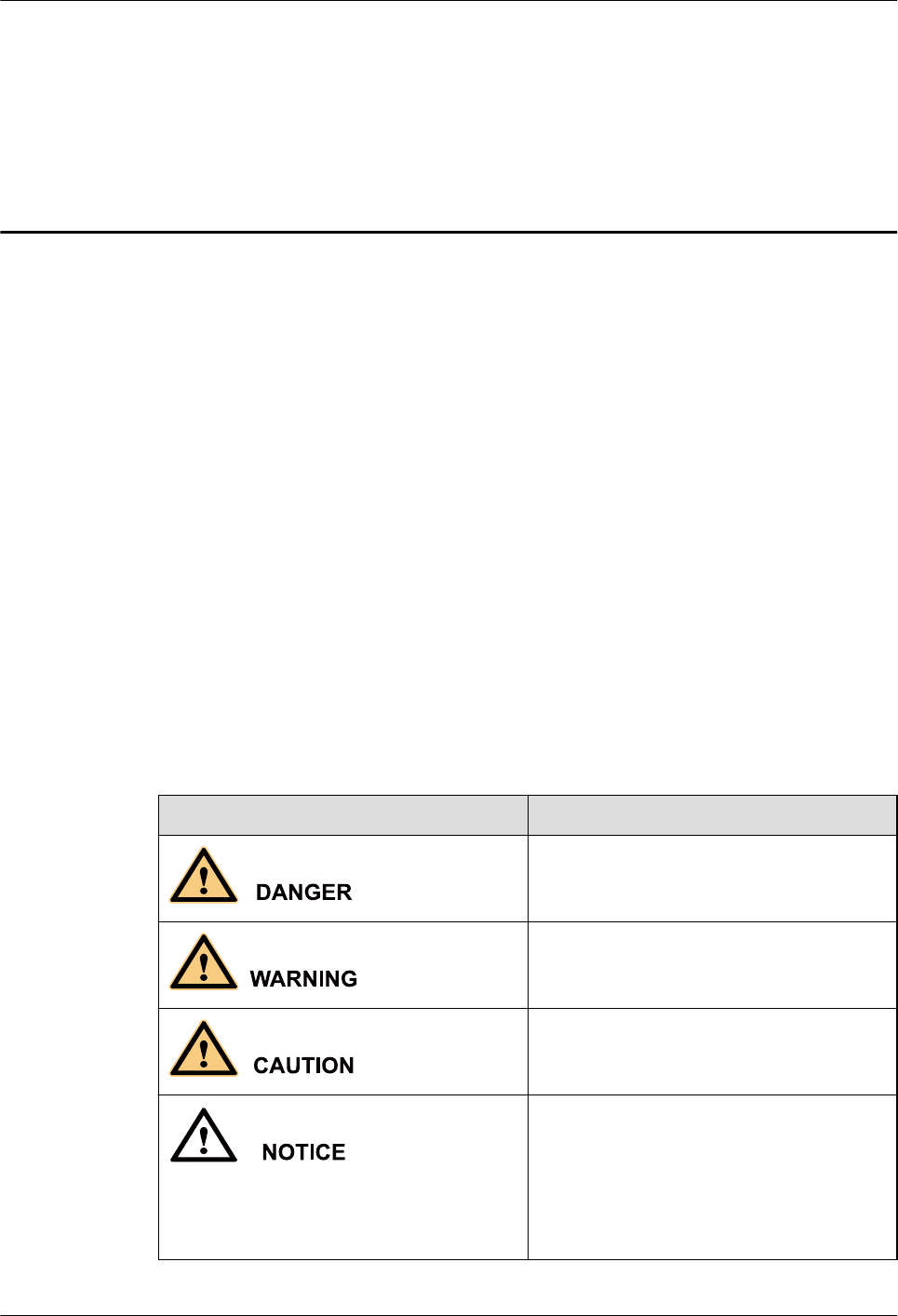
About This Document
Intended Audience
This document describes hardware features of the AP2030DN and provides basic installation
methods.
This document is intended for:
lNetwork planning engineers
lHardware installation engineers
lCommissioning engineers
lOnsite maintenance engineers
lSystem maintenance engineers
Symbol Conventions
The symbols that may be found in this document are defined as follows.
Symbol Description
Indicates an imminently hazardous situation
which, if not avoided, will result in death or
serious injury.
Indicates a potentially hazardous situation
which, if not avoided, could result in death
or serious injury.
Indicates a potentially hazardous situation
which, if not avoided, may result in minor
or moderate injury.
Indicates a potentially hazardous situation
which, if not avoided, could result in
equipment damage, data loss, performance
deterioration, or unanticipated results.
NOTICE is used to address practices not
related to personal injury.
AP2030DN
Hardware Installation and Maintenance Guide About This Document
Issue 05 (2016-07-22) Huawei Proprietary and Confidential
Copyright © Huawei Technologies Co., Ltd.
ii

Symbol Description
NOTE
Calls attention to important information,
best practices and tips.
NOTE is used to address information not
related to personal injury, equipment
damage, and environment deterioration.
Change History
Changes between document issues are cumulative. The latest document issue contains all
changes made in previous issues.
Issue 05 (2016-07-22)
This version has the following updates:
The following information is added:
lInstalling the Device into Other Junction Boxes.
lInstalling the Device on a Wall or Ceiling.
Issue 04 (2015-12-12)
This version has the following updates:
Optimized the section Logging In to the AP.
Issue 03 (2015-08-05)
This version has the following updates:
Updated the packing list.
Issue 02 (2015-05-18)
This version has the following updates:
Modified descriptions about PoE fault troubleshooting.
Issue 01 (2015-01-31)
Initial commercial release.
AP2030DN
Hardware Installation and Maintenance Guide About This Document
Issue 05 (2016-07-22) Huawei Proprietary and Confidential
Copyright © Huawei Technologies Co., Ltd.
iii

Contents
About This Document.....................................................................................................................ii
1 AP2030DN Overview....................................................................................................................1
1.1 Device Structure............................................................................................................................................................. 2
1.2 Indicator Description...................................................................................................................................................... 3
1.3 Basic Specifications........................................................................................................................................................5
1.4 Ordering Information......................................................................................................................................................6
2 AP Installation............................................................................................................................... 7
2.1 Preparing for Installation................................................................................................................................................ 8
2.2 Installation Flowchart..................................................................................................................................................... 8
2.3 Unpacking the Equipment.............................................................................................................................................. 9
2.4 Determining the Installation Position............................................................................................................................. 9
2.5 Installing the Device..................................................................................................................................................... 11
2.5.1 Installing the Device into an 86-Type Box................................................................................................................ 11
2.5.2 Installing the Device into Other Junction Boxes....................................................................................................... 12
2.5.3 Installing the Device on a Wall or Ceiling.................................................................................................................14
2.6 Cable Connection......................................................................................................................................................... 17
2.7 Checking the Device After Installation........................................................................................................................ 19
2.8 Powering on the Device................................................................................................................................................19
3 Logging In to the AP................................................................................................................... 20
3.1 Logging In to the Device Using STelnet/Telnet........................................................................................................... 21
4 Hardware Failures....................................................................................................................... 22
4.1 A Device Fails to Be Powered On................................................................................................................................23
5 Appendix.......................................................................................................................................25
5.1 On-site Cable Assembly and Installation..................................................................................................................... 26
5.1.1 Cable Assembly Precautions..................................................................................................................................... 26
5.1.2 Assembling Power Cables......................................................................................................................................... 27
5.1.3 Assembling Ethernet Cables......................................................................................................................................35
5.1.4 Installing Cable Accessories......................................................................................................................................49
5.1.5 Replacing the Mold of the Crimping Tool.................................................................................................................65
5.2 Environmental Requirements for Device Operation.................................................................................................... 68
5.2.1 Environmental Requirements for an Equipment Room............................................................................................ 68
AP2030DN
Hardware Installation and Maintenance Guide Contents
Issue 05 (2016-07-22) Huawei Proprietary and Confidential
Copyright © Huawei Technologies Co., Ltd.
iv

5.2.2 Requirements for Power Supply................................................................................................................................76
5.3 Equipment Grounding Specifications...........................................................................................................................79
5.3.1 General Grounding Specifications.............................................................................................................................79
5.3.2 Grounding Specifications for an Equipment Room.................................................................................................. 79
5.3.3 Grounding Specifications for Devices.......................................................................................................................79
5.3.4 Grounding Specifications for Communications Power Supply.................................................................................80
5.3.5 Grounding Specifications for Signal Cables............................................................................................................. 81
5.3.6 Specifications for Laying Out Grounding Cables..................................................................................................... 81
5.4 Engineering Labels for Cables..................................................................................................................................... 82
5.4.1 Introduction to Labels................................................................................................................................................82
5.4.2 Engineering Labels for Optical Fibers.......................................................................................................................90
5.4.3 Engineering Labels for Network Cables................................................................................................................... 93
5.4.4 Engineering Labels for User Cables..........................................................................................................................94
5.4.5 Engineering Labels for Power Cables....................................................................................................................... 95
5.5 Guide to Using Optical Modules.................................................................................................................................. 98
5.6 Fault Tag..................................................................................................................................................................... 101
5.7 Installation Checklist.................................................................................................................................................. 102
AP2030DN
Hardware Installation and Maintenance Guide Contents
Issue 05 (2016-07-22) Huawei Proprietary and Confidential
Copyright © Huawei Technologies Co., Ltd.
v

1 AP2030DN Overview
About This Chapter
Huawei AP2030DN is an enterprise-level wall plate AP. It uses an 86 mm plate and can be
easily installed in an 86-type box. The AP2010DN is beautifully designed, with built-in
antennas, a hidden indicator, and a sliding panel. The AP2030DN can connect to wireless
terminals through wireless connections or to wired terminals using wired cables.
1.1 Device Structure
1.2 Indicator Description
1.3 Basic Specifications
1.4 Ordering Information
AP2030DN
Hardware Installation and Maintenance Guide 1 AP2030DN Overview
Issue 05 (2016-07-22) Huawei Proprietary and Confidential
Copyright © Huawei Technologies Co., Ltd.
1
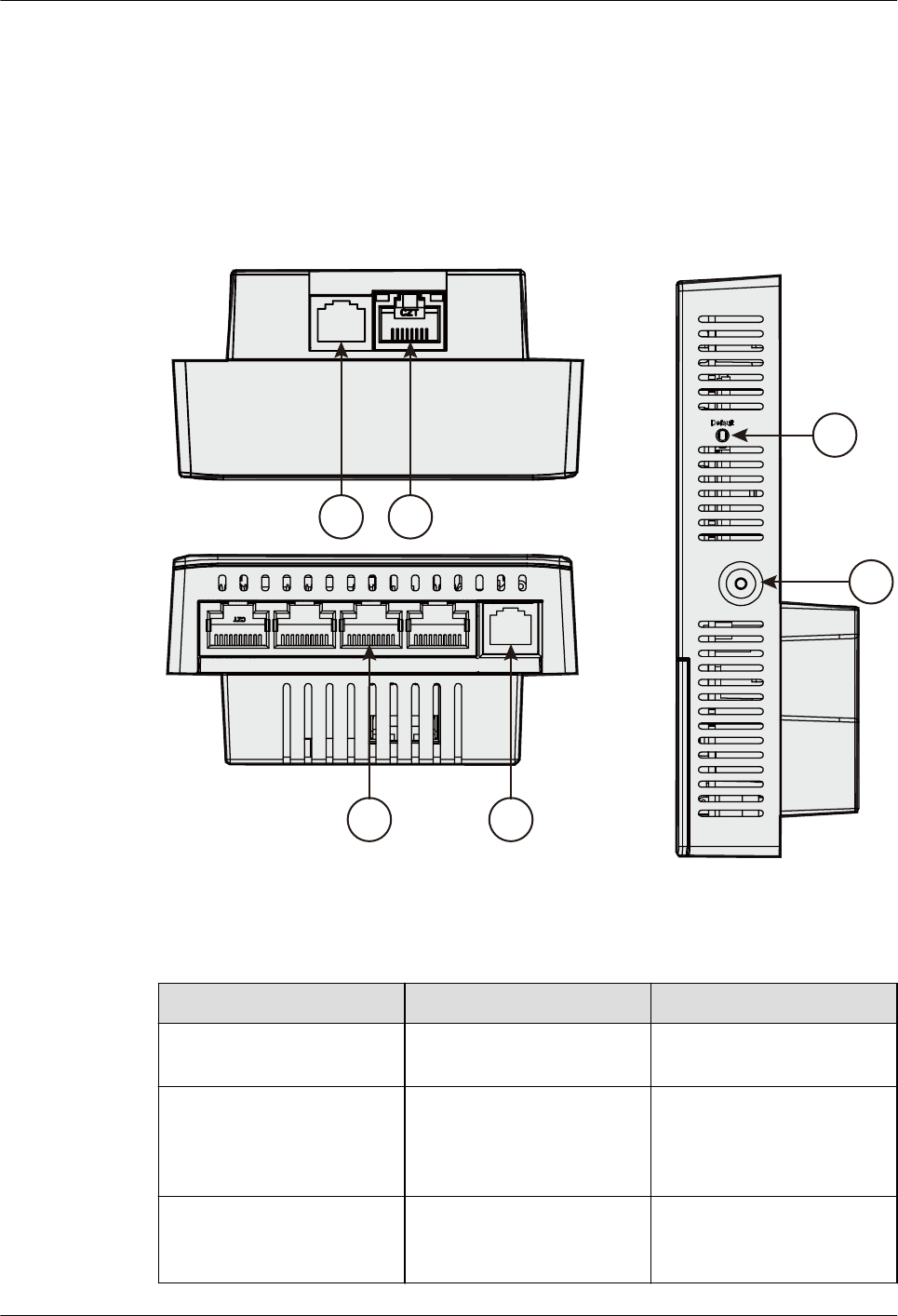
1.1 Device Structure
Figure 1-1 show the appearance of AP2030DN.
Figure 1-1 Appearance of AP2030DN
Side view
DC 12V
1
5
6
Top view
2
3 4
Bottom view
Table 1-1 describes interfaces on AP2030DN.
Table 1-1 Interfaces on AP2030DN
No. Name Description
1 Phone Phone interface: connects to
a traditional PSTN.
2 GE/PoE 10/100/1000 Mbit/s
interface: connects to the
wired Ethernet and supports
PoE power input.
3 ETH0~ETH3 10/100 Mbit/s interface:
connects to the wired
Ethernet.
AP2030DN
Hardware Installation and Maintenance Guide 1 AP2030DN Overview
Issue 05 (2016-07-22) Huawei Proprietary and Confidential
Copyright © Huawei Technologies Co., Ltd.
2
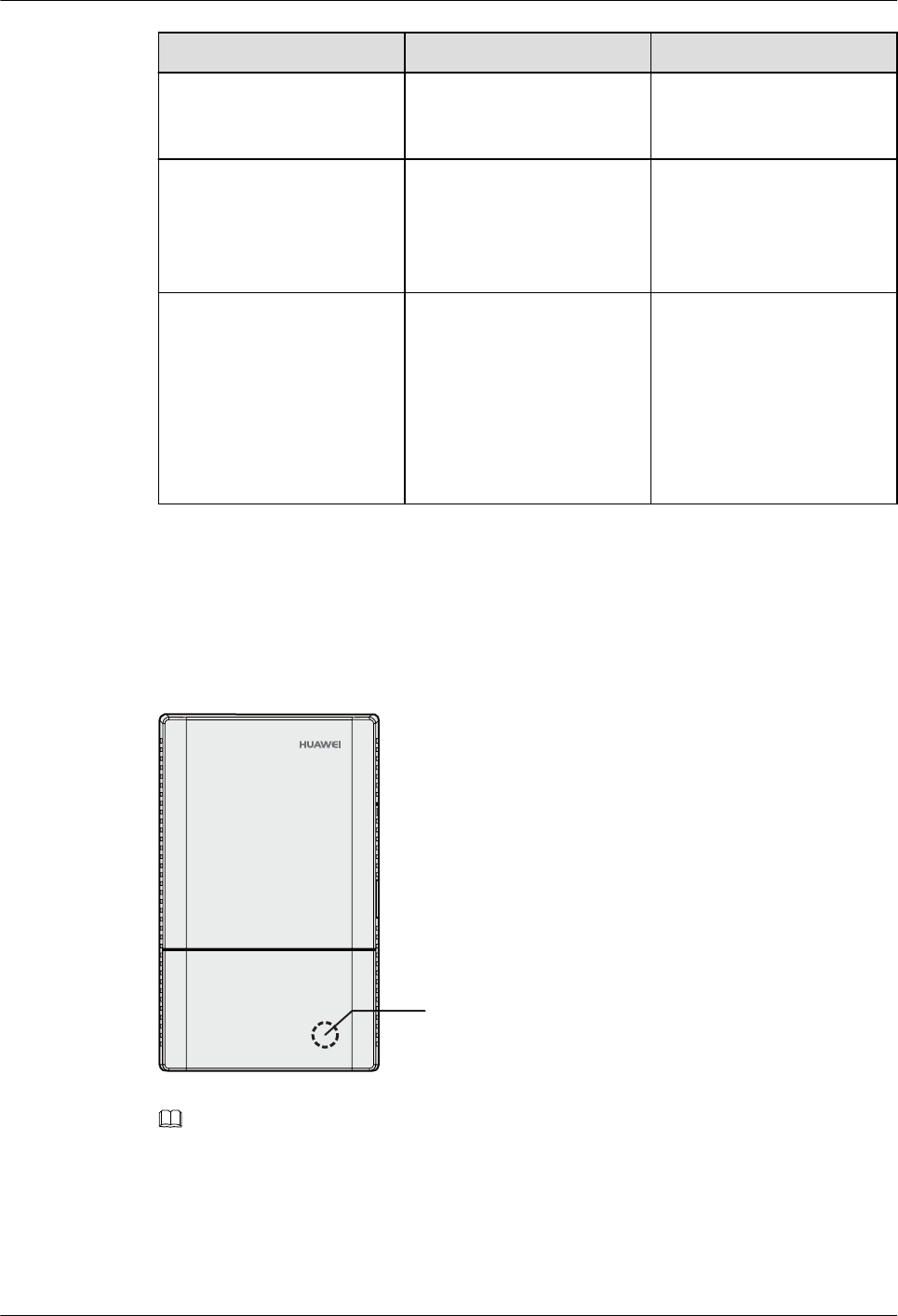
No. Name Description
4 Phone Phone interface: connects to
a POTS phone or modem
device.
5 Default Reset button: restores
factory settings and restarts
the device if you hold down
the button more than 3
seconds.
6 DC 12V The device supports the PoE
power supply and DC power
supply.
To connect the device to a
DC power source, use the
power adapter delivered
with the device; otherwise,
the device maybe damaged.
1.2 Indicator Description
AP2030DN provides only one indicator, as shown in Figure 1-2.
Figure 1-2 Indicator on the AP2030DN
Indicato
r
ETH0 ETH1 ETH2 PhoneETH3
NOTE
lThe indicator is located inside the panel, which turns on after the AP is powered on.
lIndicator colors may vary slightly at different temperature.
AP2030DN
Hardware Installation and Maintenance Guide 1 AP2030DN Overview
Issue 05 (2016-07-22) Huawei Proprietary and Confidential
Copyright © Huawei Technologies Co., Ltd.
3

Table 1-2 Description of the indicator on the AP2030DN
Type Color Status Description
Default status after
power-on
Green Steady on The AP is just
powered on and the
software is not
started yet.
Software startup
status
Green Steady on after
blinking once
After the system is
reset and starts
uploading the
software, the
indicator blinks
green once. Until the
software is uploaded
and started, the
indicator remains
steady green.
Running status Green Blinking once every
2s (0.5 Hz)
The system is
running properly, the
Ethernet connection
is normal, and STAs
are associated with
the AP.
Blinking once every
5s (0.2 Hz)
The system is
running properly, the
Ethernet connection
is normal, and no
STA is associated
with the AP. The
system is in low
power consumption
state.
AP2030DN
Hardware Installation and Maintenance Guide 1 AP2030DN Overview
Issue 05 (2016-07-22) Huawei Proprietary and Confidential
Copyright © Huawei Technologies Co., Ltd.
4

Type Color Status Description
Alarm Green Blinking once
Alarm Green every
0.25s (4 Hz)
lThe software is
being upgraded.
lAfter the
software is
uploaded and
started, the AP
working in Fit
AP mode
requests to go
online on the AC
and maintains
this state until it
goes online
successfully on
the AC (before
the CAPWAP
link is
established).
lThe AP
registration fails
(the CAPWAP
link is
disconnected).
Fault Red Steady on A fault that affects
services has
occurred, such as a
DRAM detection
failure or system
software loading
failure. The fault
cannot be
automatically
rectified and must be
rectified manually.
1.3 Basic Specifications
Table 1-3 Basic specifications of the AP2030DN
Item Description
Technical specifications Dimensions outside the wall
(H x W x D)
25 mm x 140 mm x 86 mm
Dimensions inside the wall
(H x W x D)
16.5 mm x 51.5 mm x 63.5
mm
AP2030DN
Hardware Installation and Maintenance Guide 1 AP2030DN Overview
Issue 05 (2016-07-22) Huawei Proprietary and Confidential
Copyright © Huawei Technologies Co., Ltd.
5

Item Description
Weight 0.2 kg
System memory l128 MB DDR2
l32 MB Flash
Power specifications Power input 12 V±10%
PoE power: in compliance
with IEEE 802.3af/at
Maximum power
consumption
8.7 W
NOTE
The actual maximum power
consumption depends on local
laws and regulations.
Environment specifications Operating temperature and
altitude
-60 m to +1800 m: 0°C to
+40°C
1800 m to 5000 m:
Temperature decreases by
1°C every time the altitude
increases 300 m.
Storage temperature -40°C to +70°C
Operating humidity 5% to 95% (non-
condensing)
IP rating IP20
Atmospheric pressure 70 kPa to 106 kPa
1.4 Ordering Information
To place an order, contact technical support personnel.
Part Number Description
50082640 Broadband Network Terminal-
AP2030DN-5*RJ45, 2*RJ11-11ac, 2.2 Double
Frequency
AP2030DN
Hardware Installation and Maintenance Guide 1 AP2030DN Overview
Issue 05 (2016-07-22) Huawei Proprietary and Confidential
Copyright © Huawei Technologies Co., Ltd.
6

2 AP Installation
About This Chapter
2.1 Preparing for Installation
2.2 Installation Flowchart
2.3 Unpacking the Equipment
2.4 Determining the Installation Position
2.5 Installing the Device
2.6 Cable Connection
2.7 Checking the Device After Installation
2.8 Powering on the Device
AP2030DN
Hardware Installation and Maintenance Guide 2 AP Installation
Issue 05 (2016-07-22) Huawei Proprietary and Confidential
Copyright © Huawei Technologies Co., Ltd.
7
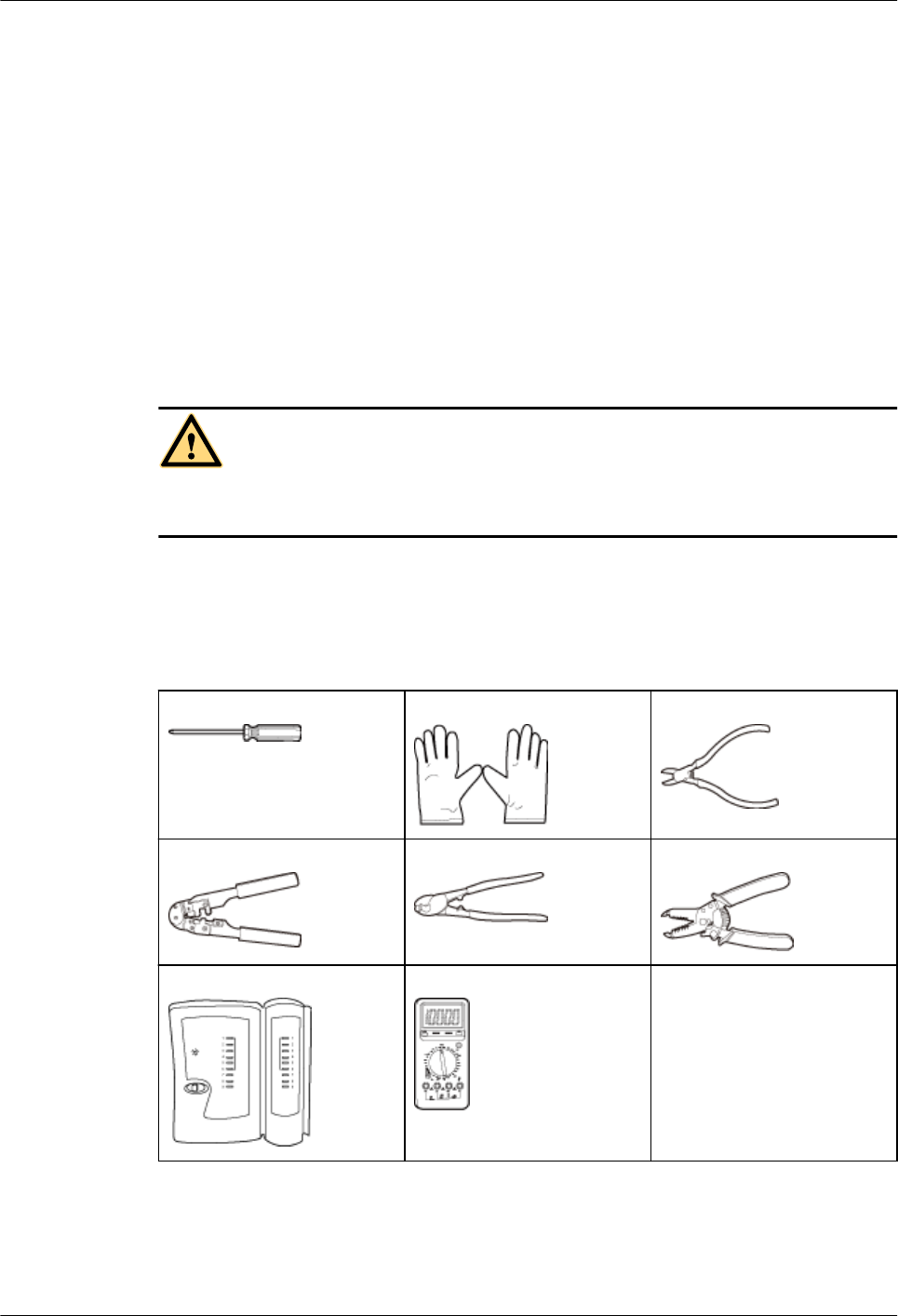
2.1 Preparing for Installation
This section describes safety precautions and tool preparations for AP installation.
Safety Precautions
lTake proper measures to prevent injuries and device damage.
lPlace the device in a dry and flat position away from any liquid and prevent the device
from slipping.
lKeep the device clean.
lDo not put the device and tools in the aisles.
CAUTION
Only the qualified personnel are permitted to install and remove the device and its
accessories. Before installation and operation, read the safety precautions carefully.
Tool Preparation
To install APs, prepare tools listed in Table 2-1.
Table 2-1 Tools
Phillips screwdriver ESD gloves Diagonal pliers
RJ45 crimping tool Cable cutter Wire stripper
Network cable tester Multimeter -
2.2 Installation Flowchart
AP2030DN
Hardware Installation and Maintenance Guide 2 AP Installation
Issue 05 (2016-07-22) Huawei Proprietary and Confidential
Copyright © Huawei Technologies Co., Ltd.
8
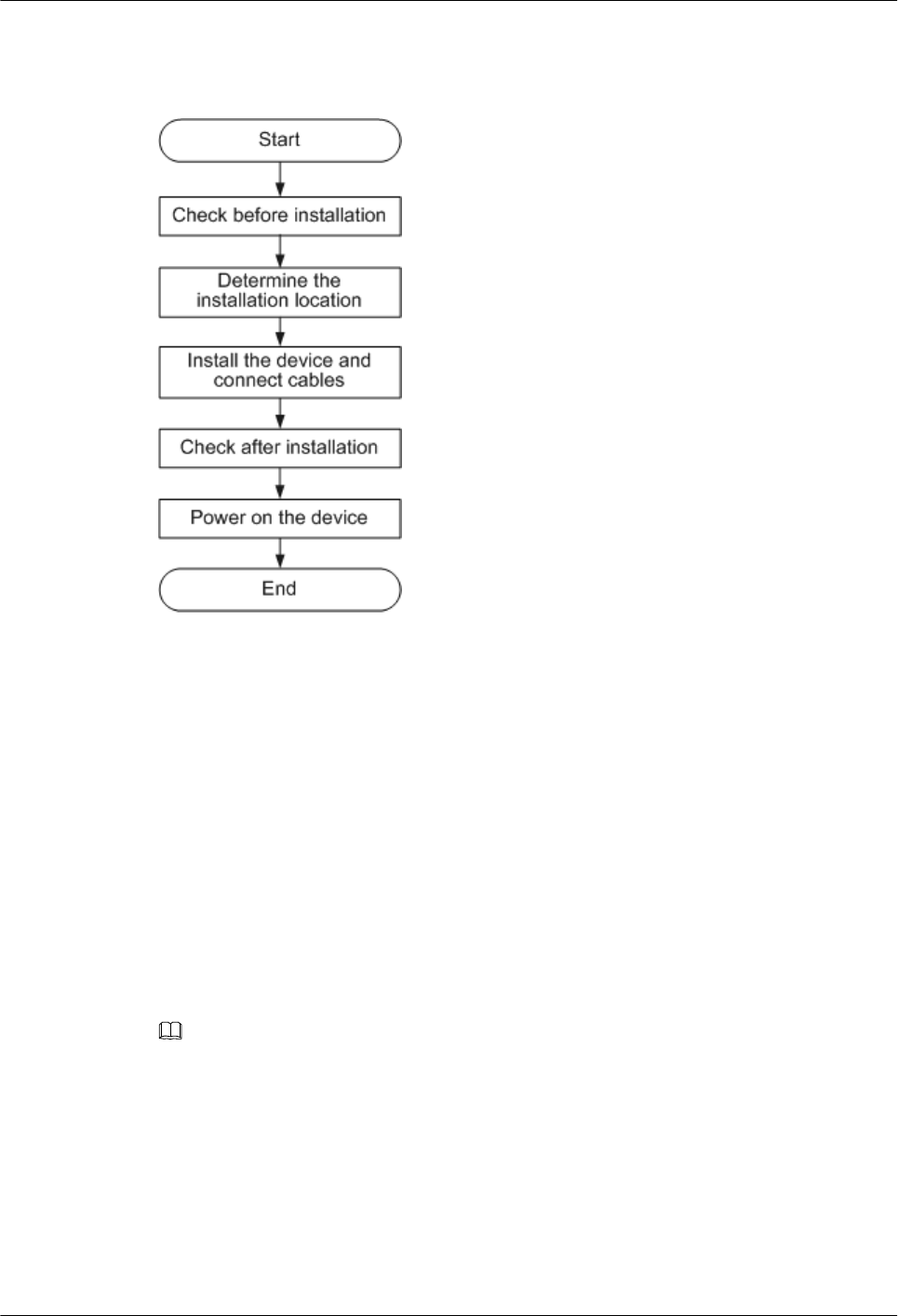
The following figure shows the process.
Figure 2-1 Installation flowchart
2.3 Unpacking the Equipment
Before unpacking the carton, ensure that the packing carton is intact and not damaged or
soaked. Stop unpacking if the equipment is rusted or soggy. Then, investigate causes and
contact the supplier.
Usually, the packing list contains the following items.
lAP device
lScrews
lQuick Start Guide
lWarranty card
lMAC address label
lSN label
NOTE
If a PoE adapter is required, you need to purchase it separately.
2.4 Determining the Installation Position
Figure 2-2 shows dimensions of the AP2030DN.
AP2030DN
Hardware Installation and Maintenance Guide 2 AP Installation
Issue 05 (2016-07-22) Huawei Proprietary and Confidential
Copyright © Huawei Technologies Co., Ltd.
9
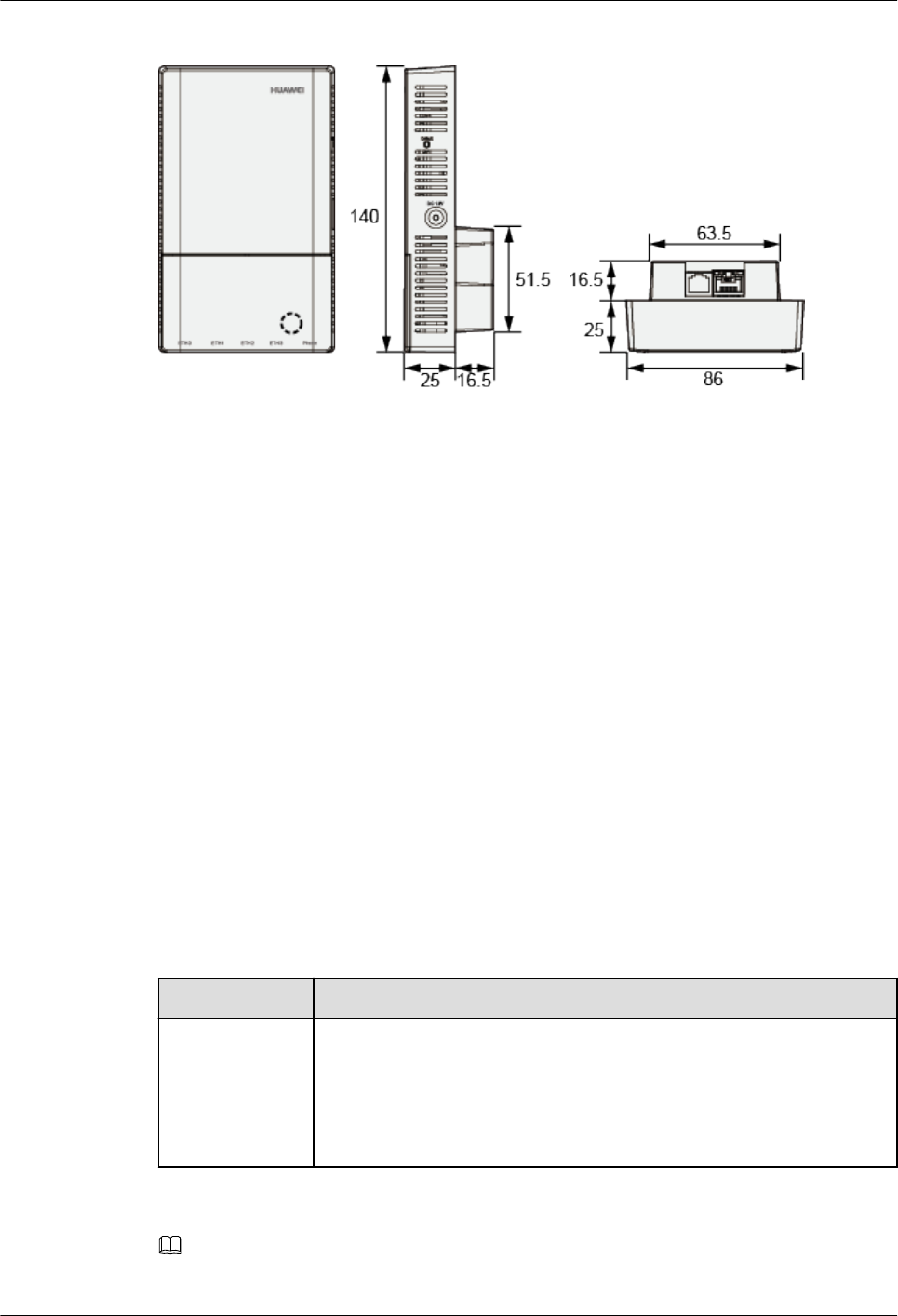
Figure 2-2 Dimensions of an AP2030DN (unit: mm)
When determining the device installation position, comply with the following rules:
lDo not deploy the device in places with high temperature, dust, noxious gas, unstable
voltage, much vibrations, or strong noise, or in places near flammable or explosive
materials and interference sources such as a large radar station, radio station, and
transformer station.
lInstall the device in a site that is free from leaking or dripping water, heavy dew, and
humidity, and take protective measures to prevent water from flowing into the equipment
along the cable.
lPlace the AP far away from electronic devices that may produce radio interference, such
as microwave ovens, other APs, antennas, and other radio communication devices. For
details, see Table 2-2.
lInstall the device in hidden places and ensure that the device does not disturb daily work
and life of residents.
lMake the engineering design by fully considering such factors as hydrology, geology,
earthquake, electric power, and traffic. The selected site should comply with the
environment design specifications of communications equipment.
lIndoor devices are usually mounted on a wall or ceiling using sheet metal mounting
brackets. The installation position is determined by the site survey. Leave at least 200
mm of clearance around the device.
Table 2-2 General anti-interference requirements
Scenario Deployment Distance Requirement
Indoor
installation
lThere should be at least a 7 m distance between antennas.
lThe antennas should be placed at least 2 m from the 4G antennas of
the carrier.
lThe antennas should be placed far away from electronic devices that
may produce interference, such as microwave ovens.
NOTE
If antennas are embedded into APs, the deployment distance requirements on the antennas are those on APs.
AP2030DN
Hardware Installation and Maintenance Guide 2 AP Installation
Issue 05 (2016-07-22) Huawei Proprietary and Confidential
Copyright © Huawei Technologies Co., Ltd.
10
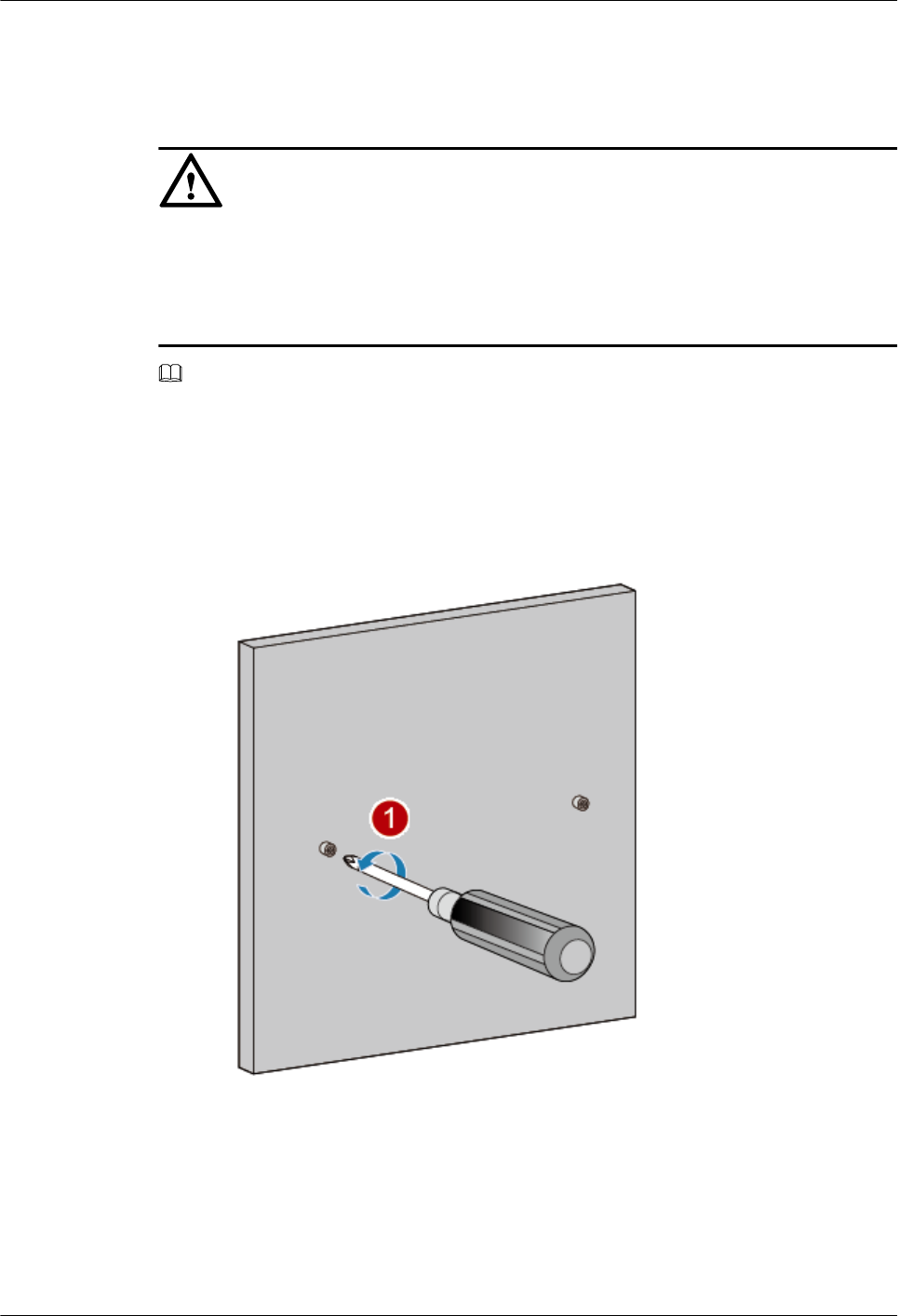
2.5 Installing the Device
NOTICE
lThe device should be isolated from strong electricity to ensure personal security and
prevent device damages.
lRemove the protective film on the surface before installation to prevent electrostatic
discharge.
NOTE
In most cases, the device is installed into an 86-type box in China. To install the device in another way,
purchase mounting brackets.
2.5.1 Installing the Device into an 86-Type Box
1. Use a screwdriver to remove the 86-type panel from the wall (skip this step if no 86-type
panel is installed on the wall).
2. Connect the network cable to the GE/PoE interface and the phone cable to the phone
interface.
3. Install the device that has cables properly connected to the 86-type box, as shown in the
following figure.
AP2030DN
Hardware Installation and Maintenance Guide 2 AP Installation
Issue 05 (2016-07-22) Huawei Proprietary and Confidential
Copyright © Huawei Technologies Co., Ltd.
11
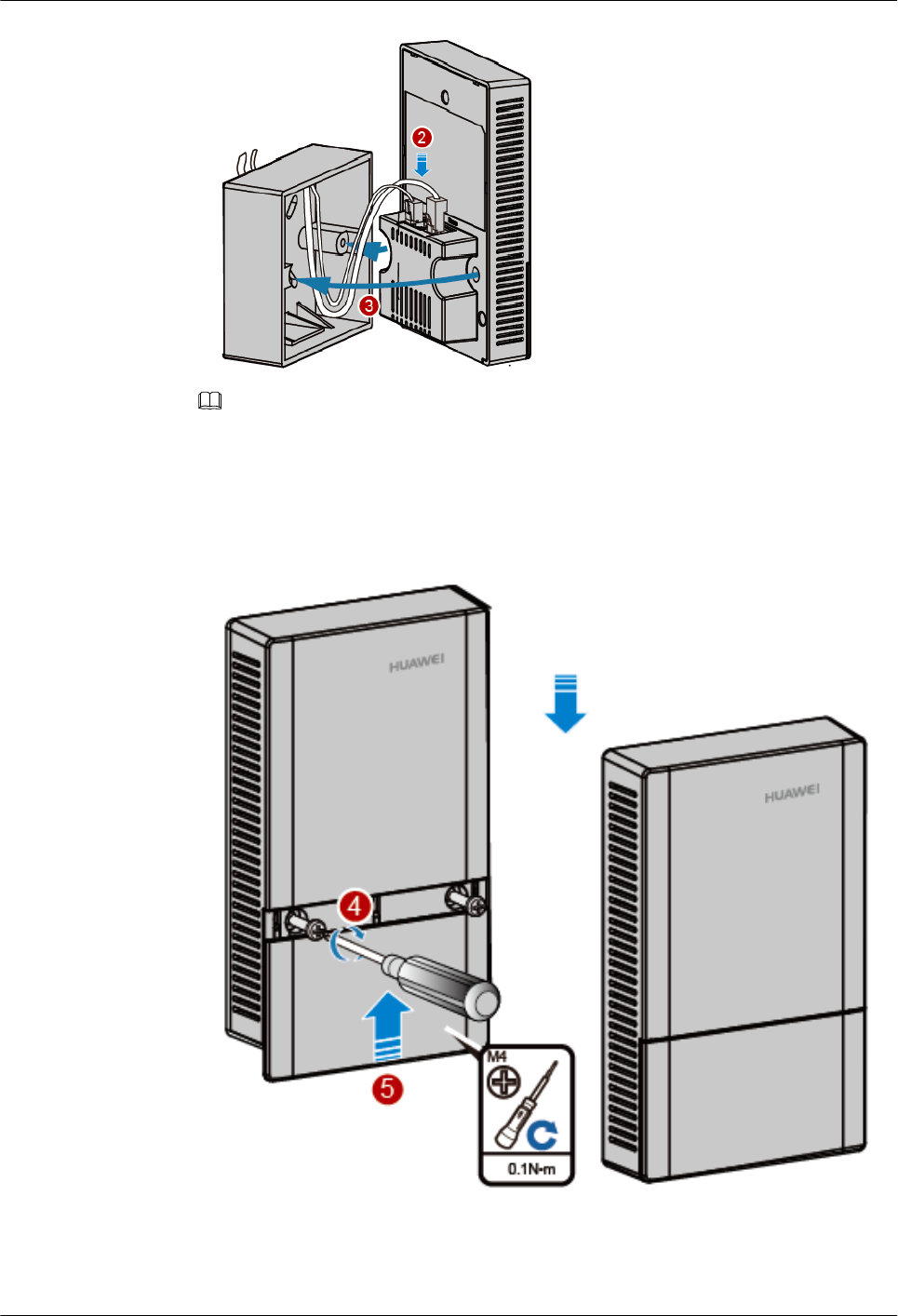
NOTE
It is recommended that the length of the cable in the 86-type box should be smaller than 130 mm.
You are advised to connect cables according to the figure.
4. Align the screw holes at the right and left of the device with the screw holes on the box
and secure the device on the box with a screwdriver.
5. Close the panel to complete installation.
2.5.2 Installing the Device into Other Junction Boxes
AP2030DN
Hardware Installation and Maintenance Guide 2 AP Installation
Issue 05 (2016-07-22) Huawei Proprietary and Confidential
Copyright © Huawei Technologies Co., Ltd.
12
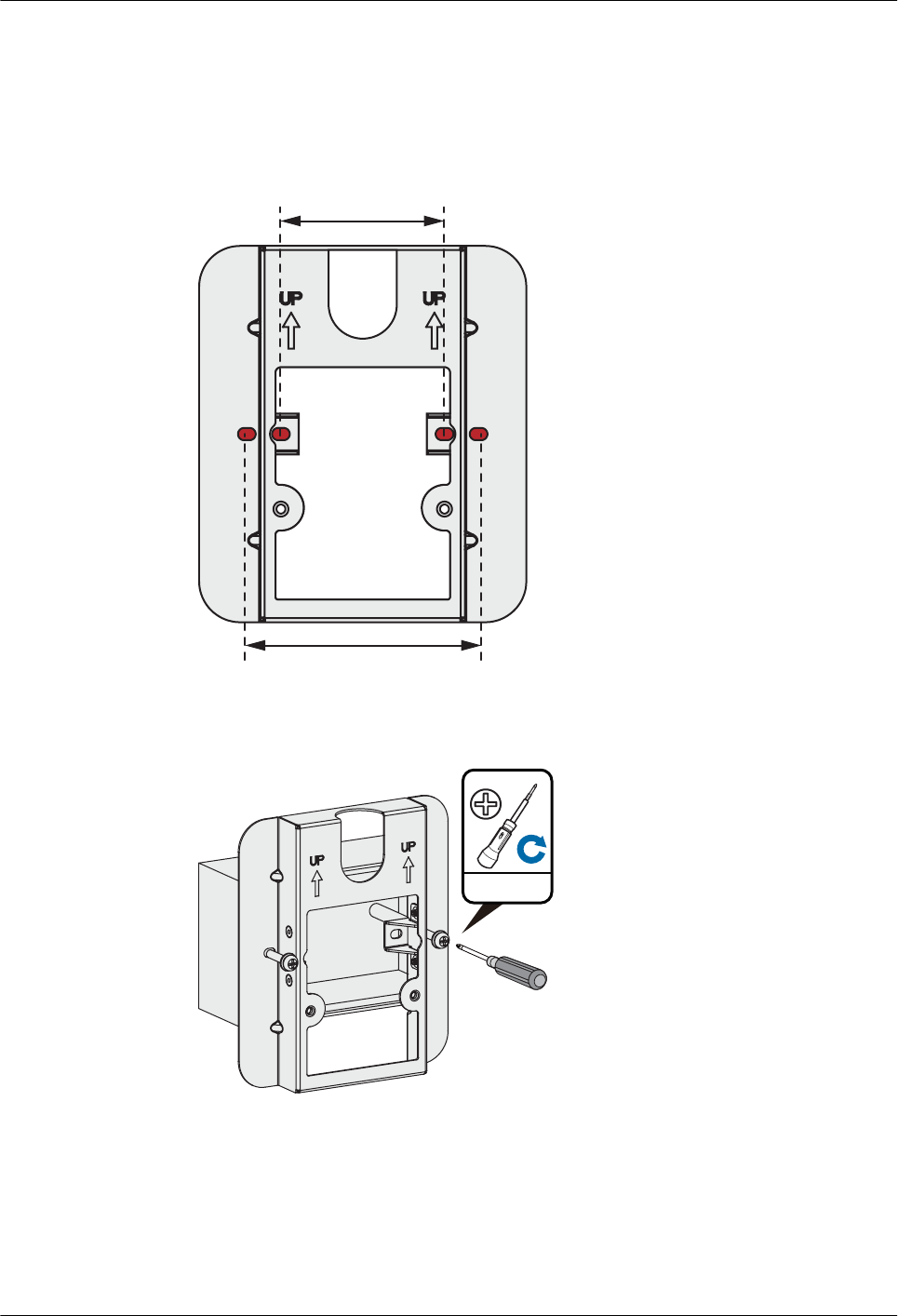
Installing the device into a junction box (excluding an 86-type box) requires sheet metal
mounting brackets (delivered with screws), which need to be purchased separately. The
procedure is as follows:
1. Determine locations of mounting holes on the sheet metal mounting bracket based on the
distance between screw holes on the junction box. (In the following example, the screw
holes on the junction box are 83.5 mm distant from each other.)
60mm
83.5mm
2. Use screws to fix the mounting bracket to the junction box. Ensure that the UP
arrowhead points upwards. If the screw holes on the junction box do not match the M4
screws, customers need to prepare the fastening screws by themselves.
1 N•m
M4
3. Connect the network cable to the GE/PoE interface and the telephone line to the phone
interface.
AP2030DN
Hardware Installation and Maintenance Guide 2 AP Installation
Issue 05 (2016-07-22) Huawei Proprietary and Confidential
Copyright © Huawei Technologies Co., Ltd.
13
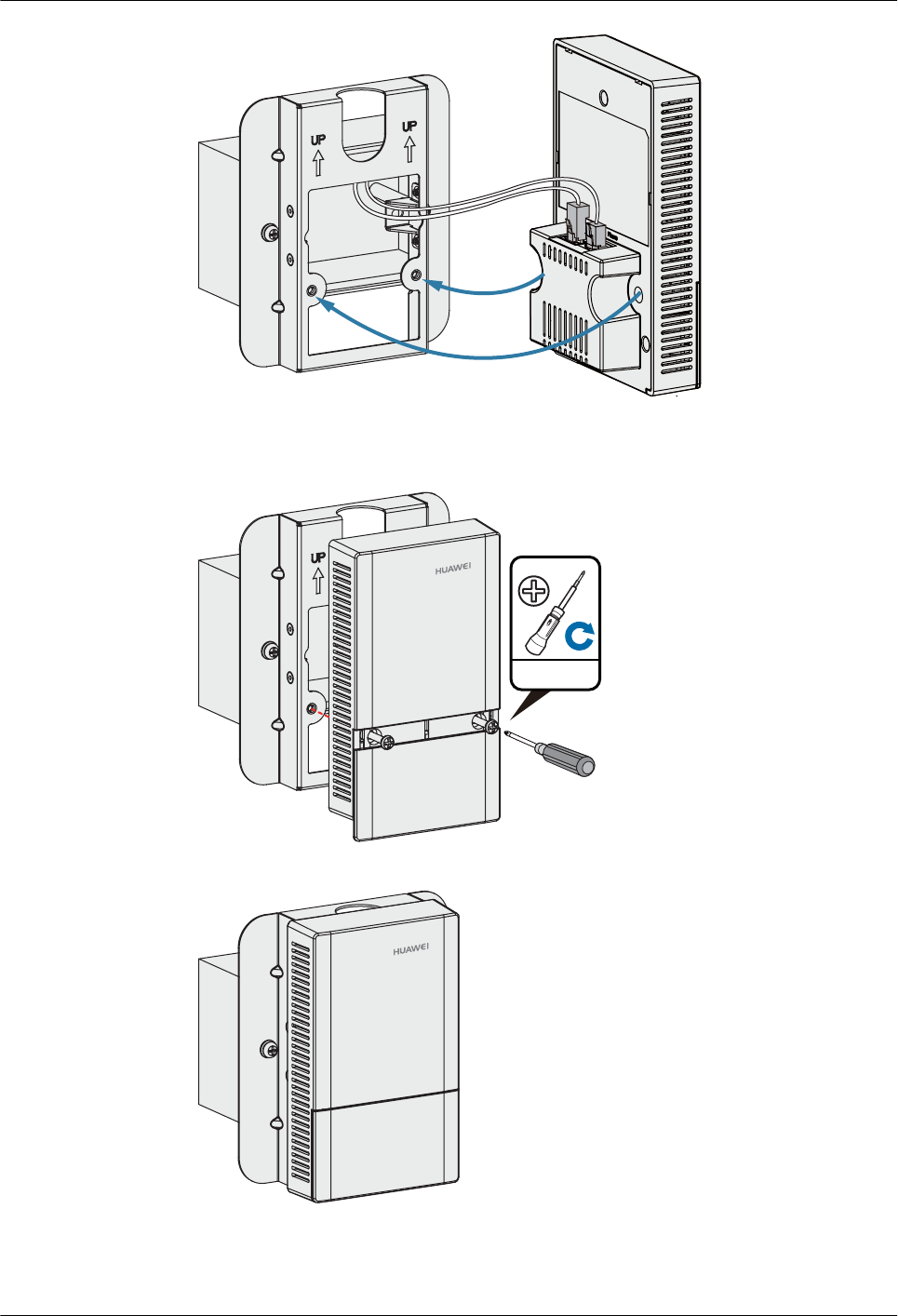
4. Open the front panel of the device, align the the screw holes at the right and left of the
AP with the screw holes on the mounting bracket, and secure theAP on the mounting
bracket with machine screws.
1 N•m
M4
5. Close the panel.
2.5.3 Installing the Device on a Wall or Ceiling
AP2030DN
Hardware Installation and Maintenance Guide 2 AP Installation
Issue 05 (2016-07-22) Huawei Proprietary and Confidential
Copyright © Huawei Technologies Co., Ltd.
14
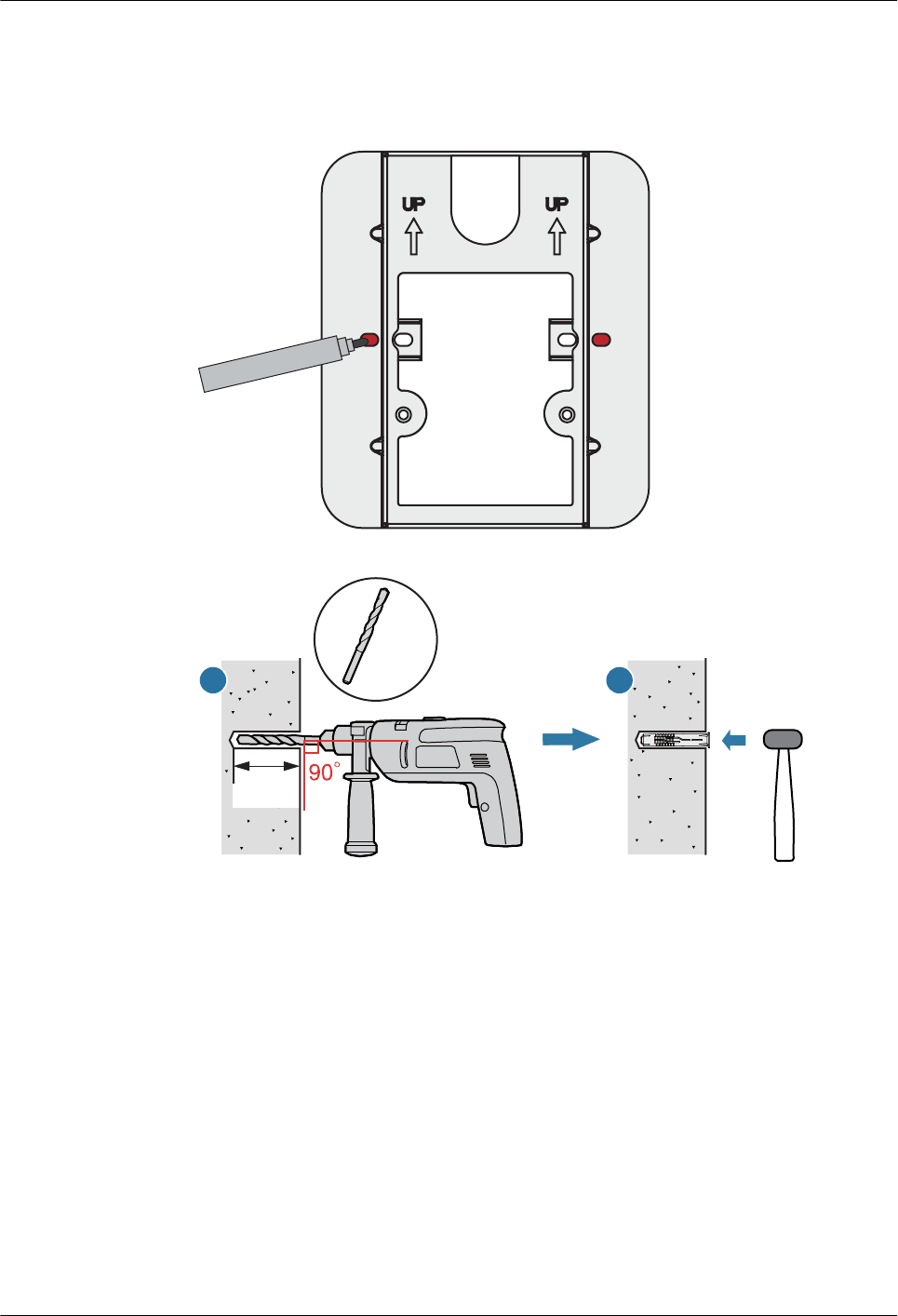
Installing the Device on a wall or ceiling requires sheet metal mounting brackets (delivered
with screws), which need to be purchased separately. The procedure is as follows:
1. Determine the target area on a wall or ceiling, attach the sheet metal mounting bracket
against the wall, and mark positions of the mounting holes with a marker.
2. Drill holes at the marked positions and install the plastic expansion tubes.
ab
Ø6
35mm
a. Use a 6 mm drill bit to drill holes at the marked positions.
b. Hammer the plastic expansion tubes into the holes.
3. Use the flat washer and self-tapping screws to fasten the mounting bracket to the wall or
ceiling. If the device is installed against the wall, ensure that UP arrowhead faces
upwards.
AP2030DN
Hardware Installation and Maintenance Guide 2 AP Installation
Issue 05 (2016-07-22) Huawei Proprietary and Confidential
Copyright © Huawei Technologies Co., Ltd.
15
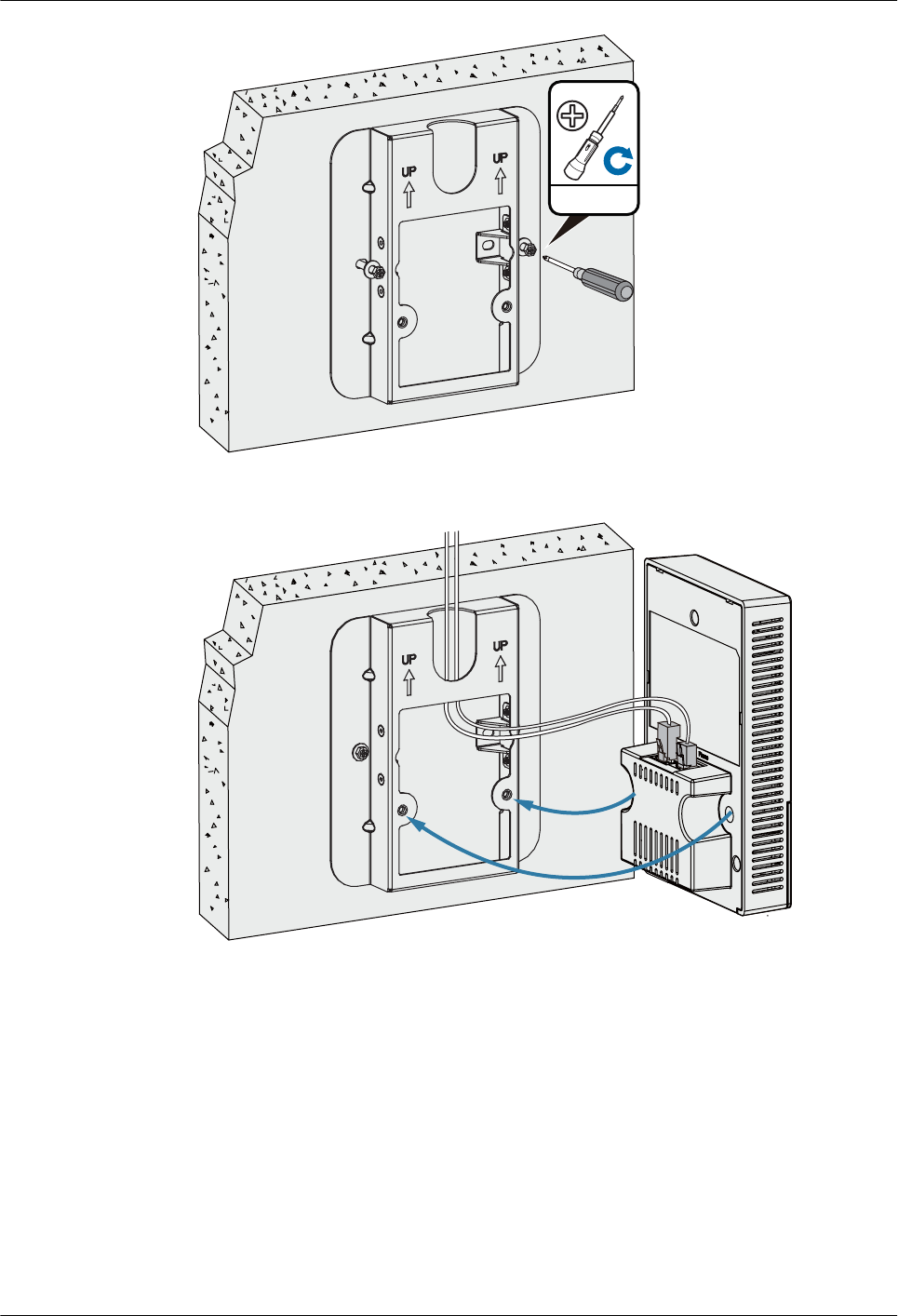
0.3 N•m
ST3.5
4. Connect the network cable to the GE/PoE interface and the telephone line to the phone
interface.
5. Open the front panel of the device, align the the screw holes at the right and left of the
AP with the screw holes on the mounting bracket, and secure theAP on the mounting
bracket with machine screws.
AP2030DN
Hardware Installation and Maintenance Guide 2 AP Installation
Issue 05 (2016-07-22) Huawei Proprietary and Confidential
Copyright © Huawei Technologies Co., Ltd.
16

Figure 2-3 Interfaces of the AP2030DN
Upper layer
network
12
3
4
Table 2-3 shows cable connections of the AP2030DN.
Table 2-3 Cable connections
No. Cable Description
1 Phone cable Connects the uplink phone
interface to the traditional
PSTN.
2 Ethernet cable Connects the Ethernet
interface to the upstream
PSE Ethernet interface.
CAT5e cables or higher
must be used.
3 Ethernet cable Connects the Ethernet
interface to the terminal.
CAT5 cables or higher must
be used.
4 Phone cable Connects the downstream
phone interface to the
traditional phone (POTS
phone) or modem
equipment.
AP2030DN
Hardware Installation and Maintenance Guide 2 AP Installation
Issue 05 (2016-07-22) Huawei Proprietary and Confidential
Copyright © Huawei Technologies Co., Ltd.
18

NOTE
lThe Ethernet cable must work properly; otherwise, the device may fail to be powered on or cannot
run properly. Before connecting an Ethernet cable to the AP, use the cable test tool to check whether
the cable is qualified. If not, replace the cable.
lThe cable cannot exceed 100 meters.
lWhen PoE and power adapter power supplies are available, the device is preferentially powered by
the PoE.
2.7 Checking the Device After Installation
Table 2-4 shows the items to be checked after installation is complete. For more details, see
Installation Checklist in the appendix.
Table 2-4 Installation checklist
No. Check Item
1 The device is installed by strictly following the design draft. The
installation position meets space requirements, with maintenance space
reserved.
2 The device is securely installed.
3 The power cables are intact and not spliced.
4 Terminals of the power cables are welded or cramped firmly.
5 All power cables are not short-circuited or reversely connected and must
be intact with no damage.
6 The power cables and ground cables are separated from other cables and
bundled separately.
7 Connectors of signal cables are complete, intact, and tightly connected.
The signal cables are not damaged or broken.
8 Labels on cables are clear and correct.
2.8 Powering on the Device
After the installation is complete, observe indicators on the device to determine the system
running status. For details, see 1.2 Indicator Description.
NOTE
Do not frequently power on and off an device.
AP2030DN
Hardware Installation and Maintenance Guide 2 AP Installation
Issue 05 (2016-07-22) Huawei Proprietary and Confidential
Copyright © Huawei Technologies Co., Ltd.
19
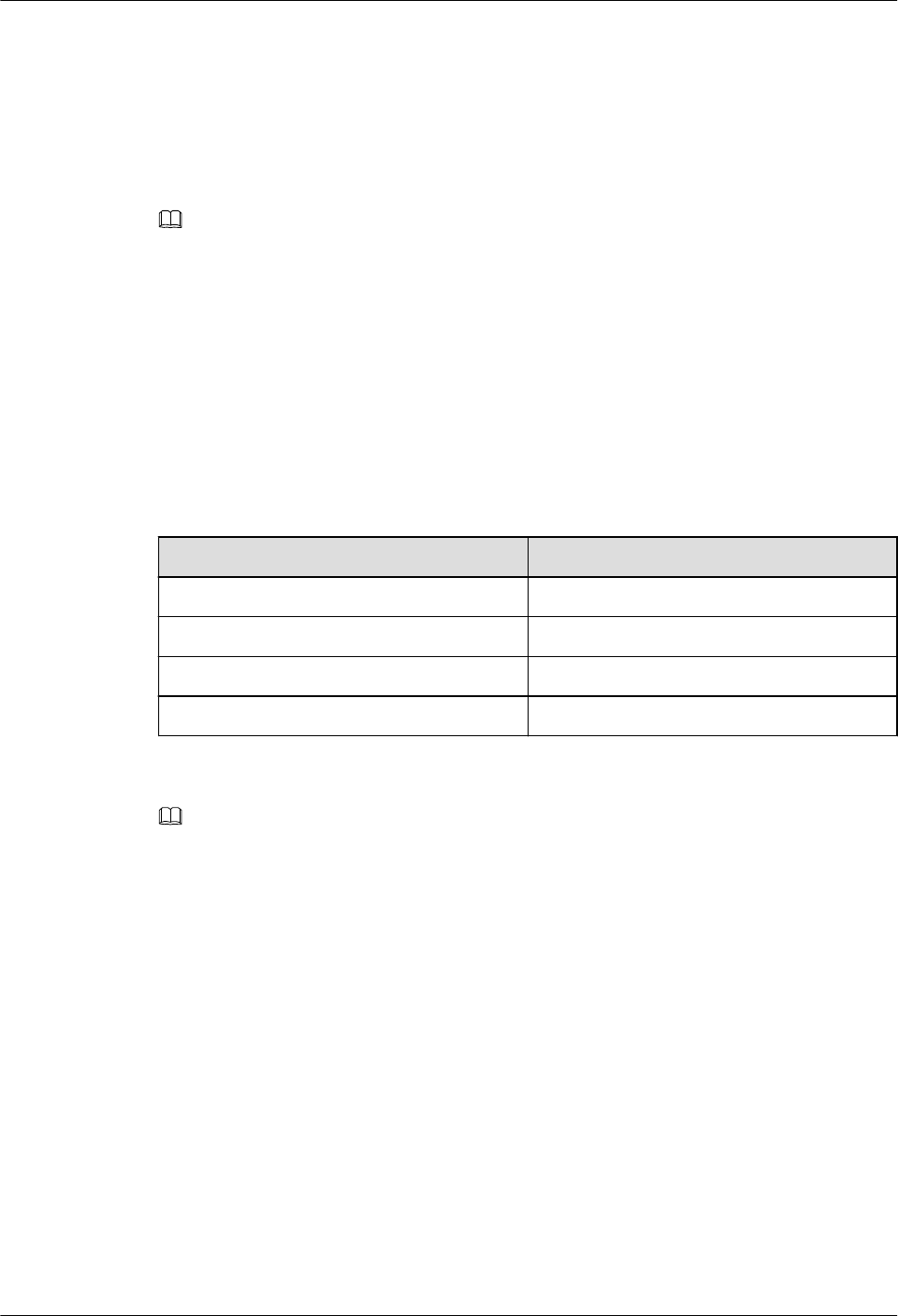
3.1 Logging In to the Device Using STelnet/Telnet
You can log in to the device using STelnet V2 or Telnet to configure, manage, and maintain
the device in the CLI.
NOTE
lBy default, only the STelnet V2 service is enabled on the device.
lTelnet has security vulnerabilities. You are not advised to enable the Telnet service.
Before logging in to the device, complete the following tasks:
lPower on the device.
lPrepare network cables used to connect device interfaces.
The following table lists the default configuration of the device. You are advised to change the
default user name and password on your first login.
Table 3-1 Default configuration of the device
Parameter Default Setting
User name admin
Password admin@huawei.com
IP address 169.254.1.1
Subnet mask 255.255.0.0
NOTE
If the device has gone online on the AC, you can log in to the AC through a remote terminal and run the
following command to check the IP address of the device.
lV200R005C30 and earlier versions: display ap-run-info id ap-id
lV200R006 and later versions: display ap all
Step 1 Use network cables and a LAN switch to connect the PC to the network interface of the
device.
Step 2 Assign the PC with an IP address on the same network segment as the default IP address of
the device so that the PC and device are reachable to each other.
If the IP address of the device is 169.254.1.1, the IP address of the PC must be in the network
segment 169.254.0.0/16 but cannot be 169.254.1.1. The IP address 169.254.1.100 is
recommended.
Step 3 Start the CLI on the PC and access the IP address 169.254.1.1 of the device using STelnet V2.
Step 4 Enter the user name and password as prompted to log in to the user interface.
----End
AP2030DN
Hardware Installation and Maintenance Guide 3 Logging In to the AP
Issue 05 (2016-07-22) Huawei Proprietary and Confidential
Copyright © Huawei Technologies Co., Ltd.
21

4 Hardware Failures
About This Chapter
This section describes common methods for troubleshooting typical hardware faults.
4.1 A Device Fails to Be Powered On
AP2030DN
Hardware Installation and Maintenance Guide 4 Hardware Failures
Issue 05 (2016-07-22) Huawei Proprietary and Confidential
Copyright © Huawei Technologies Co., Ltd.
22

4.1 A Device Fails to Be Powered On
Fault Description
The SYS indicator of a device is off.
Possible Causes
Power Supply Mode Possible Cause
Power supply using a power module lThe device is powered off.
lThe power cable is not securely
connected to the device.
lThe power supply unit has failed.
–If the device connects to an external
power source, its power adapter may
fail.
–If the device has a built-in power
supply, the device itself may be
faulty.
PoE power supply lThe power sourcing equipment does not
support the PoE function or is faulty.
lThe power sourcing equipment is
incorrectly configured (the PoE function
is disabled or the power-off time range is
improperly set).
lThe line is faulty (the network cable or
distribution frame is damaged).
lThe device is faulty.
AP2030DN
Hardware Installation and Maintenance Guide 4 Hardware Failures
Issue 05 (2016-07-22) Huawei Proprietary and Confidential
Copyright © Huawei Technologies Co., Ltd.
23

Troubleshooting Procedure
Power Supply Mode Troubleshooting Procedure
Power supply using a power module 1. Check whether the device is powered
off.
2. Check that the power cable is securely
connected to the device.
3. Check whether the power supply is
normal.
Replace the power adapter with a normal
one. If the device is powered on, the
original power adapter is faulty. Contact
technical support personnel or Huawei
agent and ask them to replace the power
adapter.
4. If the device still cannot be powered on,
the device itself is faulty. Contact
technical support personnel or Huawei
agent and ask them to replace the device.
PoE power supply 1. Check whether the power sourcing
equipment supports PoE or is faulty.
2. Check whether the configuration on the
power sourcing equipment causes PoE
power supply errors, such as the PoE
function is disabled or the power-off
time range is incorrectly set.
3. Check whether the network cable or
distribution frame is faulty.
4. If the device still cannot be powered on,
the device itself is faulty. Contact
technical support personnel or Huawei
agent and ask them to replace the device.
AP2030DN
Hardware Installation and Maintenance Guide 4 Hardware Failures
Issue 05 (2016-07-22) Huawei Proprietary and Confidential
Copyright © Huawei Technologies Co., Ltd.
24

5 Appendix
About This Chapter
5.1 On-site Cable Assembly and Installation
5.2 Environmental Requirements for Device Operation
5.3 Equipment Grounding Specifications
5.4 Engineering Labels for Cables
5.5 Guide to Using Optical Modules
5.6 Fault Tag
5.7 Installation Checklist
AP2030DN
Hardware Installation and Maintenance Guide 5 Appendix
Issue 05 (2016-07-22) Huawei Proprietary and Confidential
Copyright © Huawei Technologies Co., Ltd.
25

5.1 On-site Cable Assembly and Installation
5.1.1 Cable Assembly Precautions
Checking the Appearance of Cables
lIf the cable jacket or insulation is visibly dirty, clean it before assembly.
lIf the jacket or insulation of a cable has visible damage, irreparable scuffing, or other
defects, do not use the cable.
lIf the shield layer of a cable is damaged, do not use the cable.
lIf the cable jacket or insulation cracks after the cable is bent or twisted, discard this cable
and check whether other cables have the same problem. If other cables have the same
problem, replace these cables.
Checking the Appearance of Connectors
lDo not use connectors with visible defects, damage, rust or scuffing.
lDo not use connectors if their shells or pins have exposed part or uneven plating, or their
pins are lost, broken, or bent.
lDo not use connectors that have dirt on their pins or in their jacks or if there are
conductors between pins or between pins and the shell.
Precautions for Assembly
lUse dedicated tools or tools delivered by Huawei and follow the methods given here
during assembly.
lHold terminals of cables instead of pulling the cables themselves when installing or
removing cable components.
lTake the following precautions when cutting or stripping cables:
–Make cables slightly longer than necessary.
–Coil cables longer than 2 m (6.56 ft) after cutting. Bind and fasten the coils using
bundling ropes. The inner diameters of the coils should be larger than 20 times the
outer diameters of the cables.
–When stripping the jackets of cables, avoid damaging the shield layers (braid or
aluminum foil), insulation, core conductors, and other jackets that do not need to be
stripped.
–After assembling cables, cut all visible cross sections of jackets to ensure that the
cross sections are arranged neatly.
–Do not touch the core conductors of cables with your hands. Terminate exposed
conductors in a timely way after stripping off insulation so that the surface of the
conductors does not become oxidized.
lTake the following precautions when crimping and connecting cables or connectors:
–The terminals and conductors should be connected tightly after they are crimped.
They should not be moved or turned.
AP2030DN
Hardware Installation and Maintenance Guide 5 Appendix
Issue 05 (2016-07-22) Huawei Proprietary and Confidential
Copyright © Huawei Technologies Co., Ltd.
26
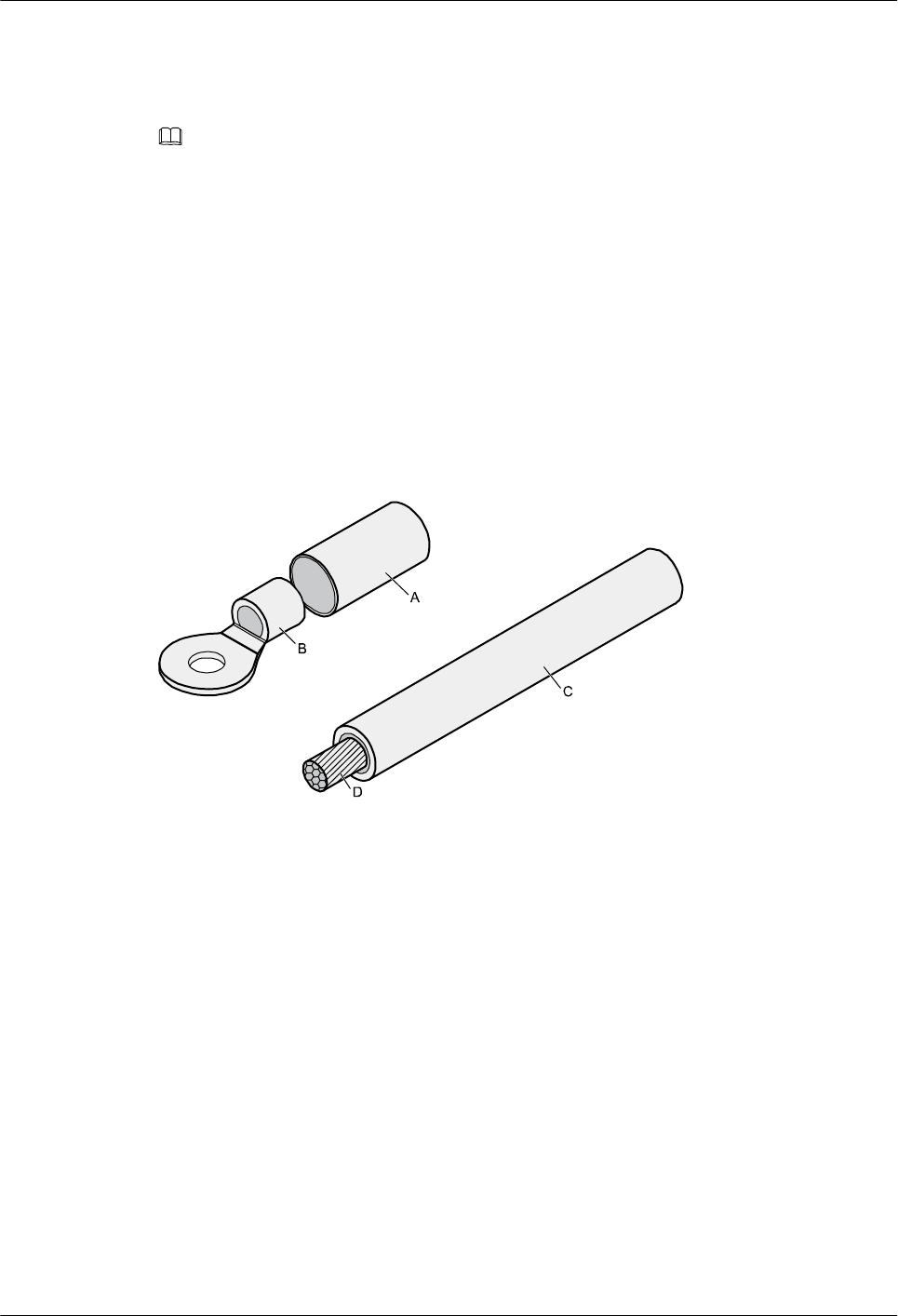
–Cut all the exposed copper wires.
–Try to avoid a second crimping of sleeves.
–Keep all the conductors clean and aligned.
NOTE
The connectors, cables, and tools provided by different vendors may be different. The figures in this
document are for your reference only.
5.1.2 Assembling Power Cables
Assembling the OT Terminal and Power Cable
Context
Figure 5-1 shows the components of an OT terminal and a power cable.
Figure 5-1 Components of an OT terminal and a power cable
A. Heat-shrinkable tubing B. Bare crimping terminal C. Insulation D. Conductor
Procedure
Step 1 Based on the cross-sectional area of the cable conductor, strip a length of insulation coating C
to expose the conductor D of length L1, as shown in Figure 5-2. The recommended values of
L1 are listed in Table 5-1.
AP2030DN
Hardware Installation and Maintenance Guide 5 Appendix
Issue 05 (2016-07-22) Huawei Proprietary and Confidential
Copyright © Huawei Technologies Co., Ltd.
27
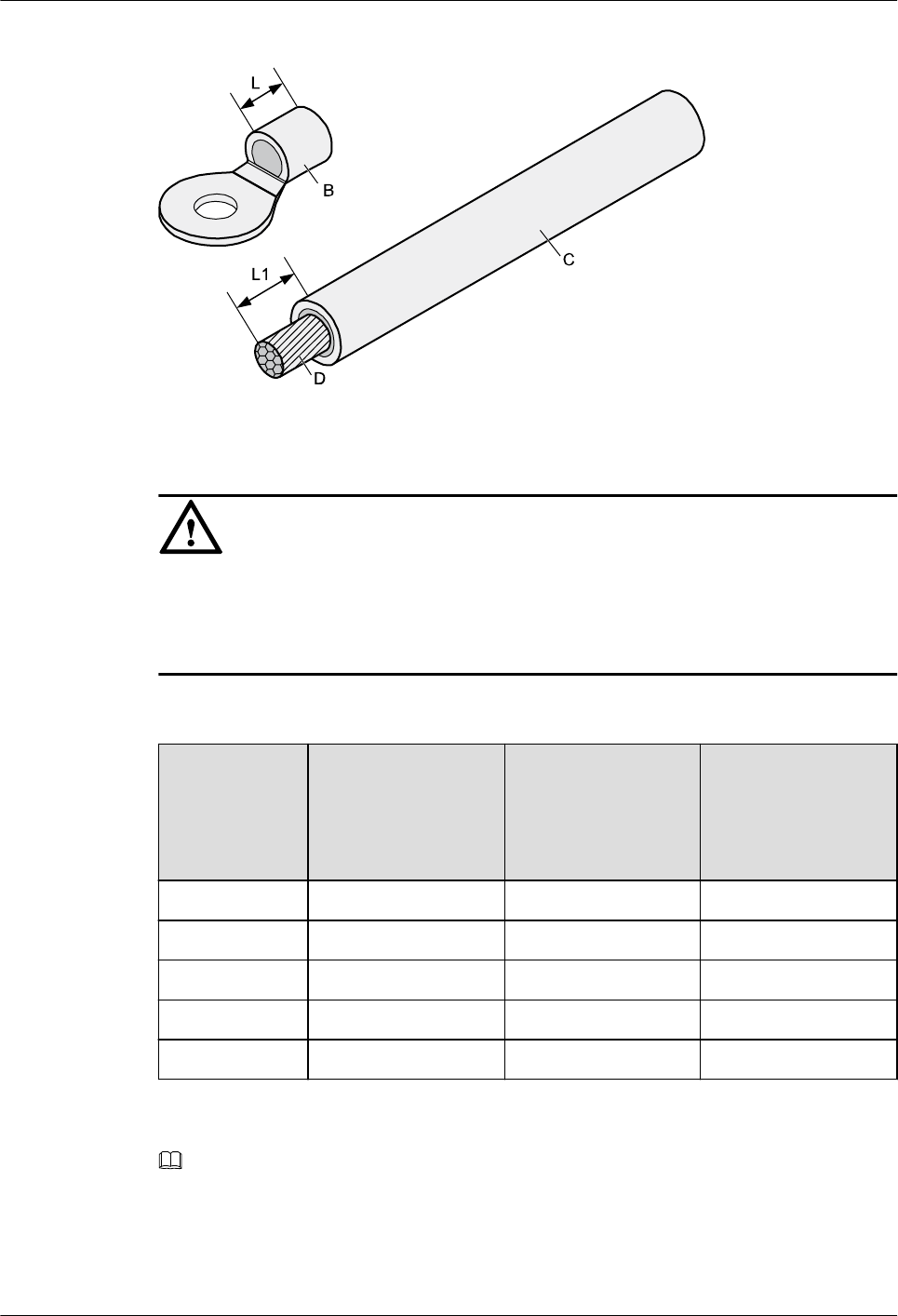
Figure 5-2 Stripping a power cable (OT terminal)
NOTICE
lWhen you strip a power cable, do not damage the conductor of the cable.
lIf the bare crimping terminal is not provided by Huawei, the value of L1 is 1 mm (0.04 in.)
to 2 mm (0.08 in.) greater than the value of L.
Table 5-1 Mapping between the cross-sectional area of the conductor and the value of L1
Cross-
Sectional
Area of
Conductor
(mm2(in.2))
Value of L1
(mm(in.))
Cross-Sectional
Area of Conductor
(mm2(in.2))
Value of L1
(mm(in.))
1 (0.002) 7 (0.28) 10 (0.015) 11 (0.43)
1.5 (0.002) 7 (0.28) 16 (0.025) 13 (0.51)
2.5 (0.004) 7 (0.28) 25 (0.039) 14 (0.55)
4 (0.006) 8 (0.31) 35 (0.054) 16 (0.63)
6 (0.009) 9 (0.35) 50 (0.077) 16 (0.63)
NOTE
If you are proficient in assembling OT terminals and power cables, you can obtain the value of L1 by
comparing the part to be crimped with the power cable.
Step 2 Put the heat-shrinkable (A) tubing onto the bare crimping terminal, as shown in Figure 5-3.
AP2030DN
Hardware Installation and Maintenance Guide 5 Appendix
Issue 05 (2016-07-22) Huawei Proprietary and Confidential
Copyright © Huawei Technologies Co., Ltd.
28
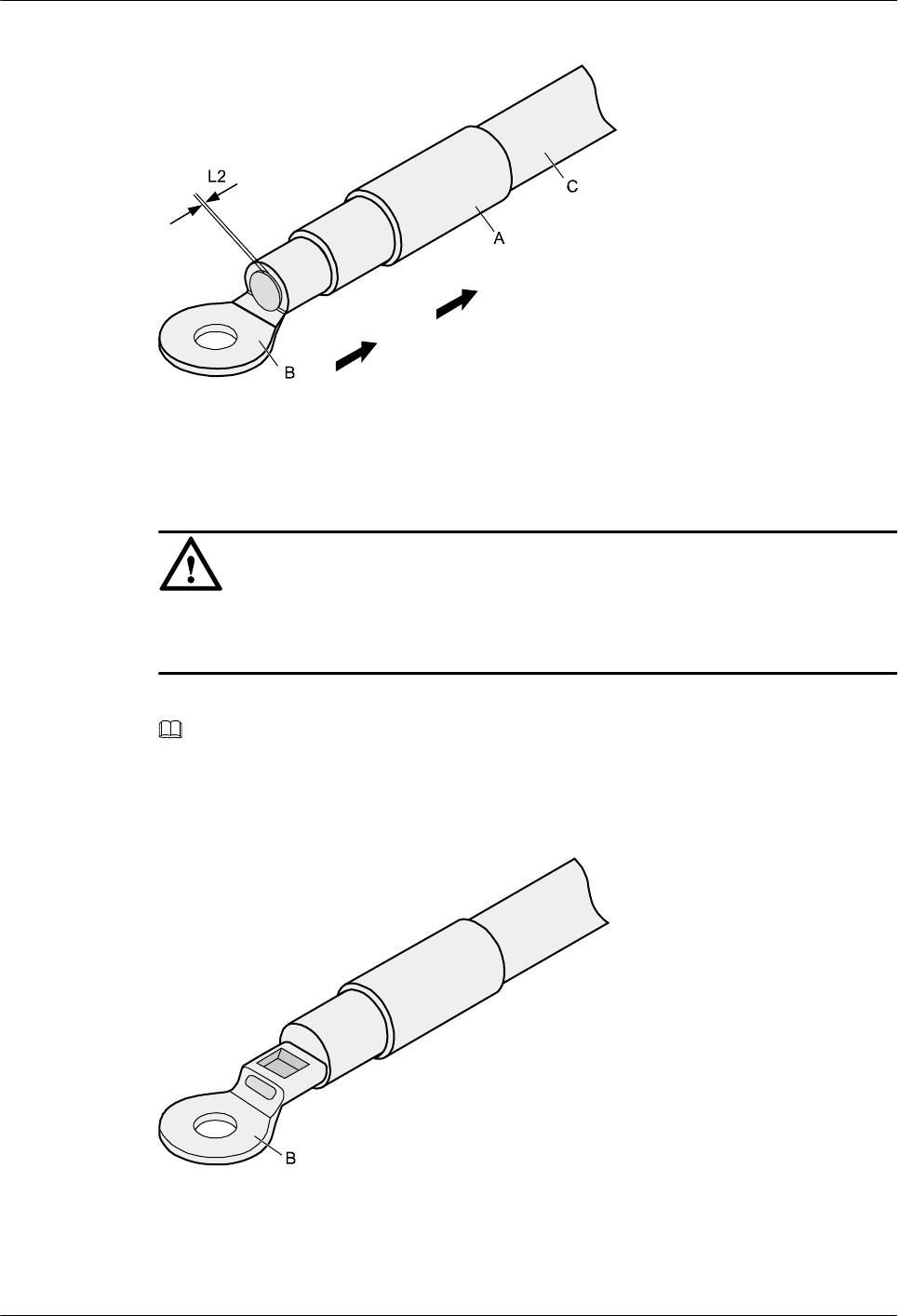
Figure 5-3 Putting the heat shrink tubing onto the bare crimping terminal
Step 3 Put the OT terminal B onto the exposed conductor, and ensure that the OT terminal is in good
contact with the insulation coating C, as shown in Figure 5-3.
NOTICE
After the conductor is fed into the OT terminal, the protruding part of the conductor, or L2 in
Figure 5-3, must not be longer than 2 mm (0.08 in.).
Step 4 Crimp the joint parts of the bare crimping terminal and the conductor, as shown in Figure 5-4.
NOTE
The shapes of crimped parts may vary with the crimping dies.
Figure 5-4 Crimping the joint parts of the bare crimping terminal and the conductor (OT
terminal)
Step 5 Push the heat shrink tubing (A) toward the connector until the tube covers the crimped part,
and then use a heat gun to heat the tube, as shown in Figure 5-5.
AP2030DN
Hardware Installation and Maintenance Guide 5 Appendix
Issue 05 (2016-07-22) Huawei Proprietary and Confidential
Copyright © Huawei Technologies Co., Ltd.
29
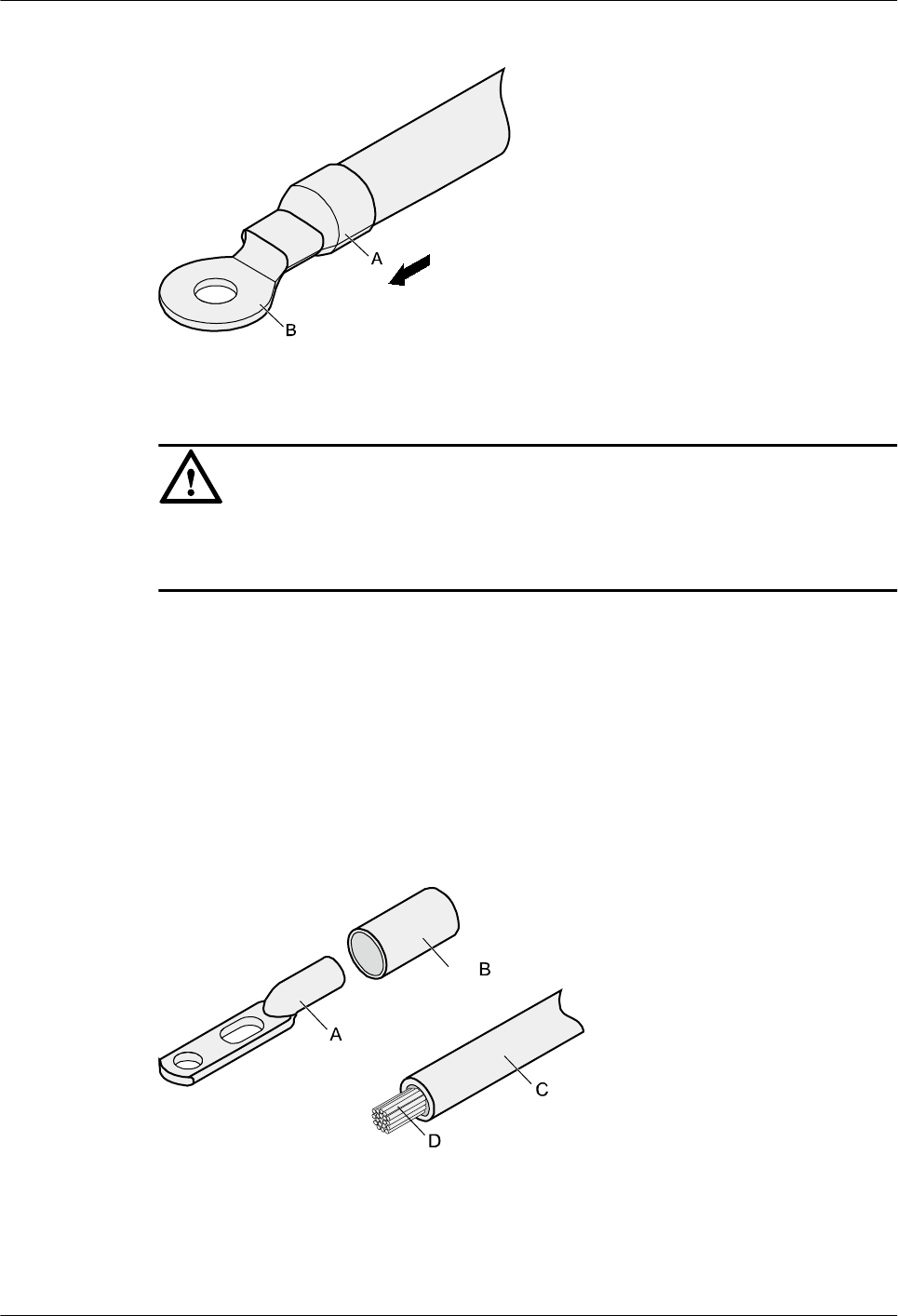
Figure 5-5 Heating the heat shrink tubing (OT terminal)
NOTICE
Stop heating the shrink tubing when the connector is securely locked in the shrink tubing. Do
not heat the shrink tubing too long as this may damage the insulation coating.
----End
Assembling the JG Terminal and Power Cable
Context
Figure 5-6 shows the components of a JG terminal and a power cable.
Figure 5-6 Components of a JG terminal and a power cable
A. JG terminal B. Heat-shrinkable tubing C. Insulation layer of a power
cable
D. Conductor of a power cable
AP2030DN
Hardware Installation and Maintenance Guide 5 Appendix
Issue 05 (2016-07-22) Huawei Proprietary and Confidential
Copyright © Huawei Technologies Co., Ltd.
30
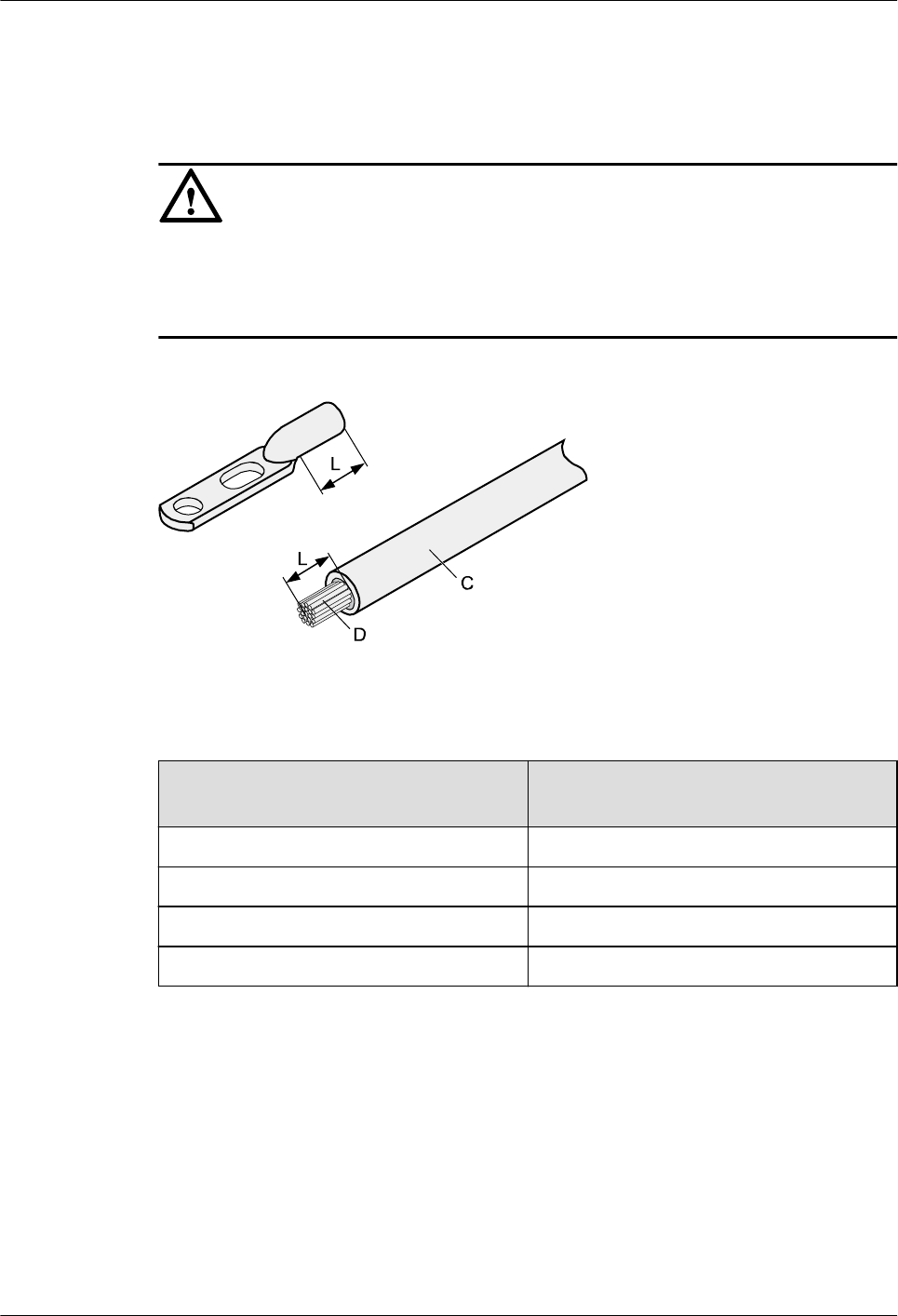
Procedure
Step 1 Strip a part of the insulation to expose the cable conductor with a length of L, as shown in
Figure 5-7. The recommended values of L are listed in Table 5-2.
NOTICE
lWhen you strip a power cable, do not damage the conductor of the cable.
lIf the bare crimping terminal is not provided by Huawei, you can adjust the value of L as
required.
Figure 5-7 Stripping a power cable (JG terminal)
Table 5-2 Mapping between the cross-sectional area of the conductor and the value of L
Cross-Sectional Area of Conductor
(mm2(in.2))
Value of L (mm(in.))
16 (0.025) 13 (0.51)
25 (0.039) 14 (0.55)
35 (0.054) 16 (0.63)
50 (0.077) 16 (0.63)
Step 2 Put the heat shrink tubing onto the bare crimping terminal, as shown in Figure 5-8.
AP2030DN
Hardware Installation and Maintenance Guide 5 Appendix
Issue 05 (2016-07-22) Huawei Proprietary and Confidential
Copyright © Huawei Technologies Co., Ltd.
31
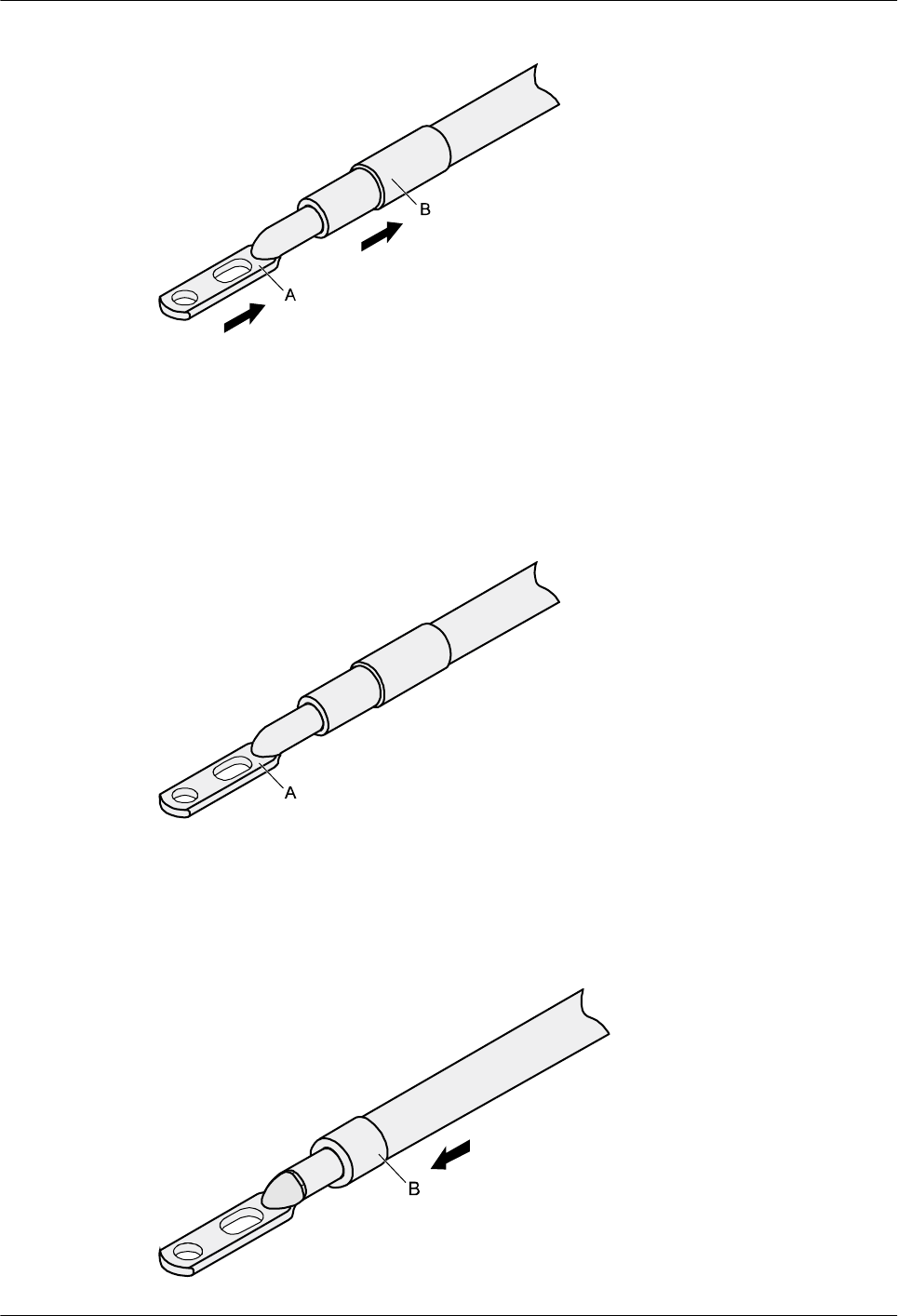
Figure 5-8 Putting the heat shrink tubing onto the bare crimping terminal
Step 3 Put the bare crimping terminal onto the exposed conductor, and ensure that the bare crimping
terminal is in good contact with the insulation of the power cable, as shown in Figure 5-8.
Step 4 Crimp the joint parts of the bare crimping terminal and the conductor, as shown in Figure 5-9.
Figure 5-9 Crimping the joint parts of the bare crimping terminal and the conductor (JG
terminal)
Step 5 Push the heat shrink tubing toward the connector until the tube covers the crimped part, and
then use a heat gun to heat the tube, as shown in Figure 5-10.
Figure 5-10 Heating the heat shrink tubing (JG terminal)
AP2030DN
Hardware Installation and Maintenance Guide 5 Appendix
Issue 05 (2016-07-22) Huawei Proprietary and Confidential
Copyright © Huawei Technologies Co., Ltd.
32
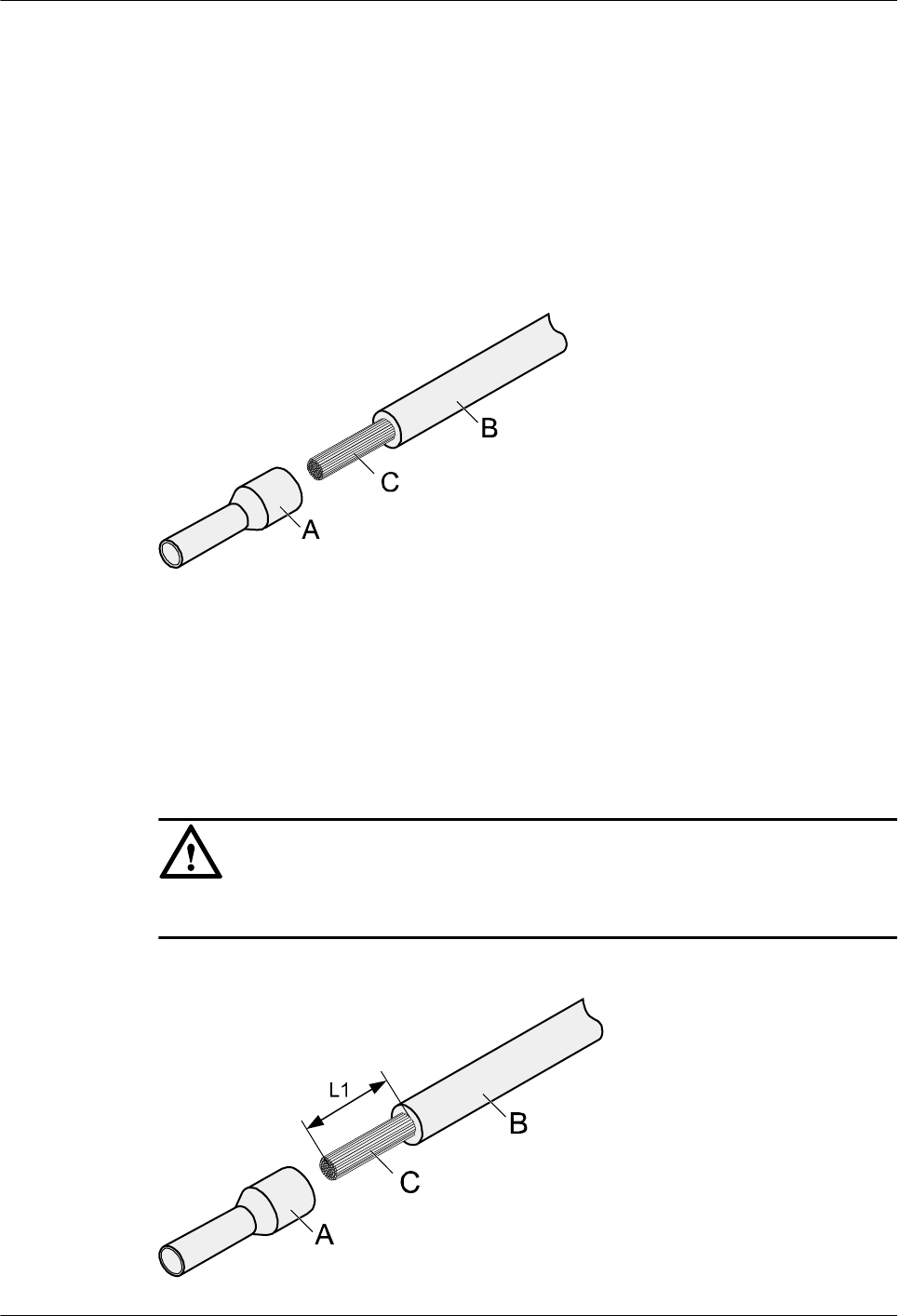
----End
Assembling the Cord End Terminal and the Power Cable
Context
Figure 5-11 shows the components of a cord end terminal and a power cable.
Figure 5-11 Components of a cord end terminal and a power cable
A. Cord end terminal B. Insulation layer of a power cable C. Conductor of a power cable
Procedure
Step 1 Strip a part of the insulation to expose the cable conductor with a length of L1, as shown in
Figure 5-12. The recommended values of L1 are listed in Table 5-3.
NOTICE
When you strip a power cable, do not damage the conductor of the cable.
Figure 5-12 Stripping a power cable (cord end terminal)
AP2030DN
Hardware Installation and Maintenance Guide 5 Appendix
Issue 05 (2016-07-22) Huawei Proprietary and Confidential
Copyright © Huawei Technologies Co., Ltd.
33
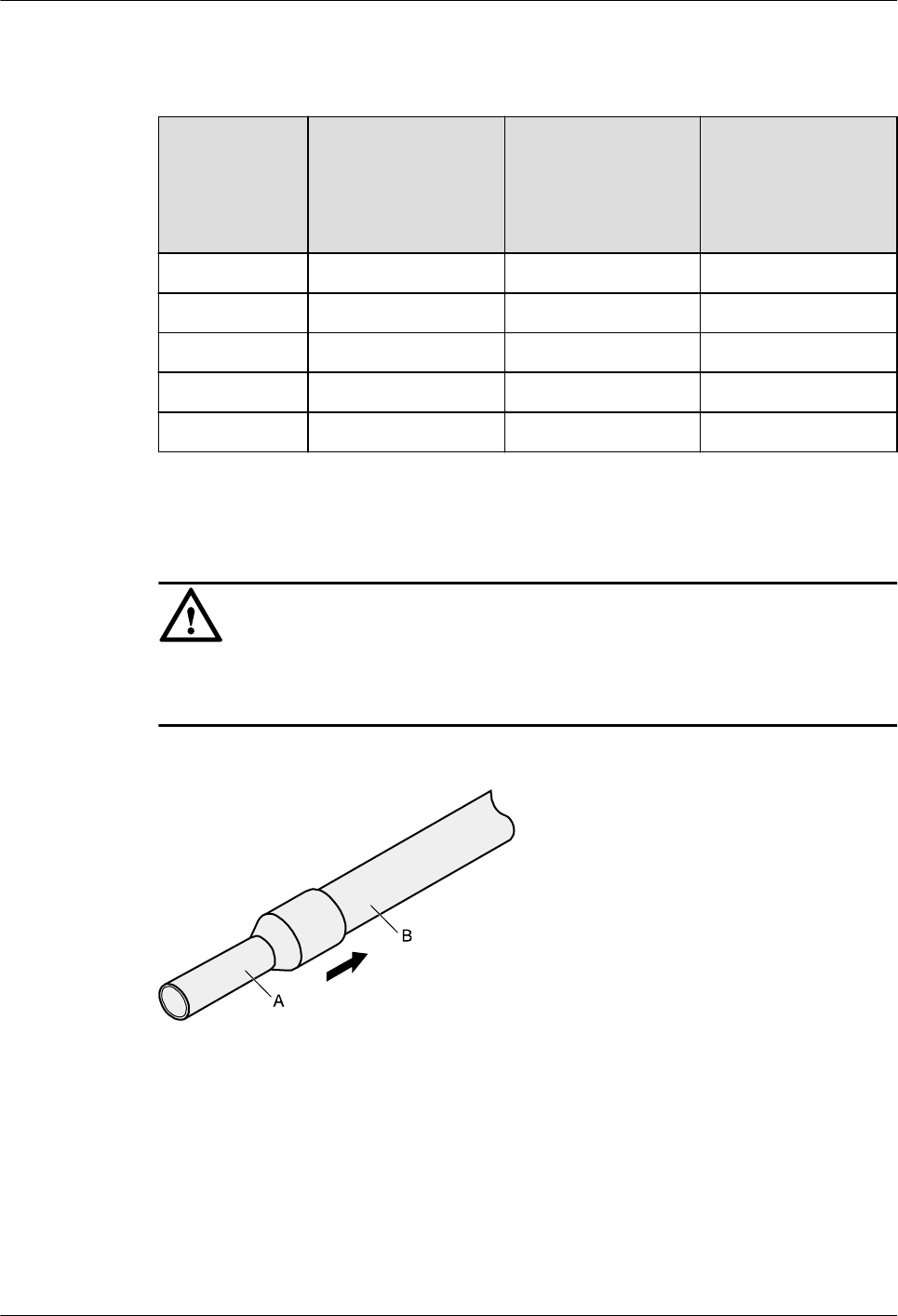
Table 5-3 Mapping between the cross-sectional area of the conductor and the value of L1
Cross-
Sectional
Area of
Conductor
(mm2(in.2))
Value of L1
(mm(in.))
Cross-Sectional
Area of Conductor
(mm2(in.2))
Value of L1
(mm(in.))
1 (0.002) 8 (0.31) 10 (0.015) 15 (0.59)
1.5 (0.002) 10 (0.39) 16 (0.025) 15 (0.59)
2.5 (0.004) 10 (0.39) 25 (0.039) 18 (0.71)
4 (0.006) 12 (0.47) 35 (0.054) 19 (0.75)
6 (0.009) 14 (0.55) 50 (0.077) 26 (1.02)
Step 2 Put the cord end terminal onto the conductor, and ensure that the conductor is aligned with the
edge of the cord end terminal, as shown in Figure 5-13.
NOTICE
After the conductor is fed into the cord end terminal, the protruding part of the conductor
must not be longer than 1 mm (0.04 in.).
Figure 5-13 Putting the cord end terminal onto the conductor
Step 3 Crimp the joint parts of the cord end terminal and the conductor, as shown in Figure 5-14.
AP2030DN
Hardware Installation and Maintenance Guide 5 Appendix
Issue 05 (2016-07-22) Huawei Proprietary and Confidential
Copyright © Huawei Technologies Co., Ltd.
34
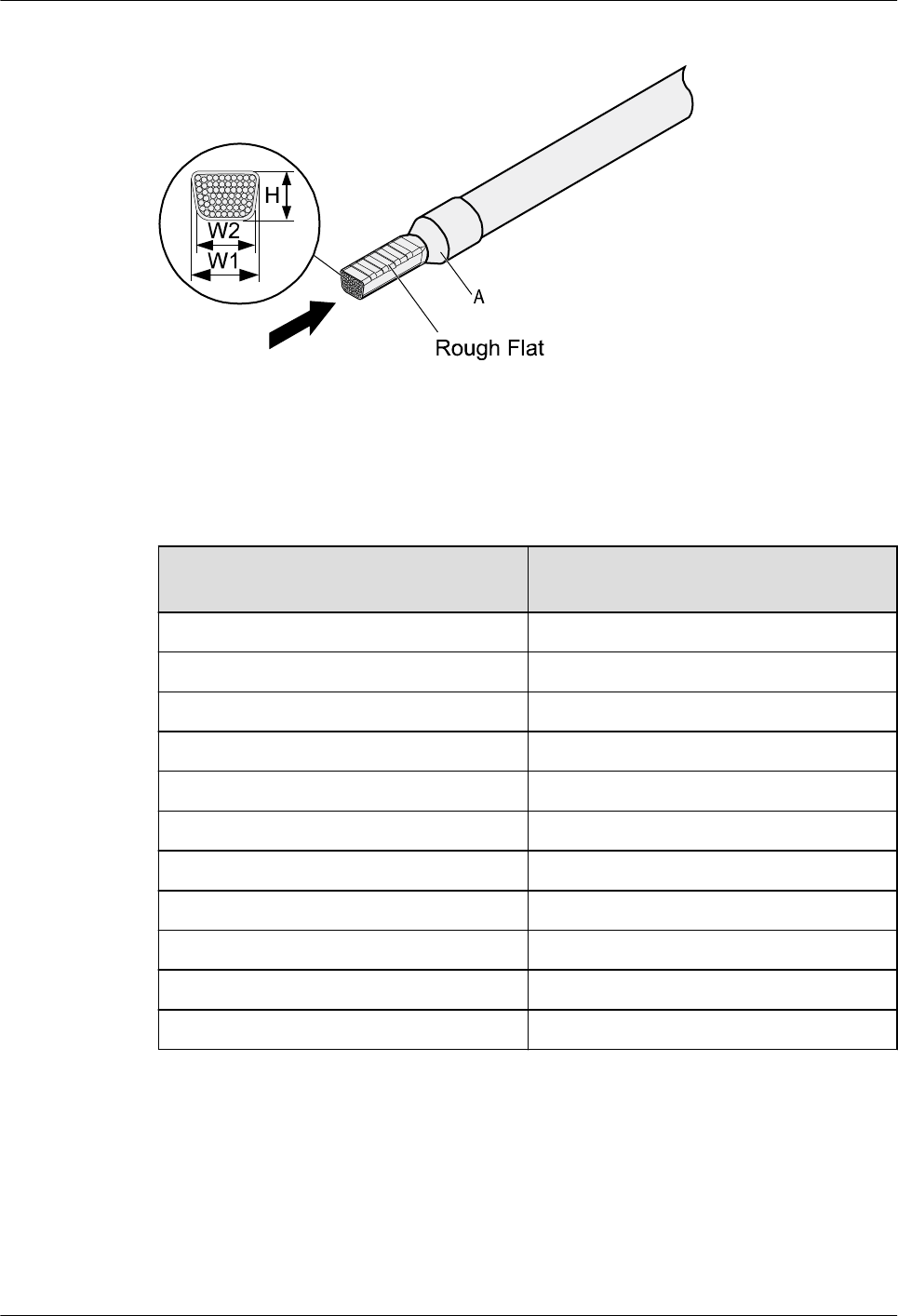
Figure 5-14 Crimping the cord end terminal and the conductor
Step 4 Check the maximum width of the tubular crimped terminal. The maximum width of a tubular
crimped terminal is listed in Table 5-4.
Table 5-4 Maximum width of a tubular crimped terminal
Cross-Sectional Area of Tubular
Terminal (mm2(in.2))
Maximum Width of Crimped Terminal
W1 (mm(in.))
0.25 (0.0004) 1 (0.04)
0.5 (0.0008) 1 (0.04)
1.0 (0.0015) 1.5 (0.06)
1.5 (0.0023) 1.5 (0.06)
2.5 (0.0039) 2.4 (0.09)
4 (0.006) 3.1 (0.12)
6 (0.009) 4 (0.16)
10 (0.015) 5.3 (0.21)
16 (0.025) 6 (0.24)
25 (0.039) 8.7 (0.34)
35 (0.054) 10 (0.39)
----End
5.1.3 Assembling Ethernet Cables
Assembling the Shielded RJ45 Connector and Ethernet Cable
AP2030DN
Hardware Installation and Maintenance Guide 5 Appendix
Issue 05 (2016-07-22) Huawei Proprietary and Confidential
Copyright © Huawei Technologies Co., Ltd.
35
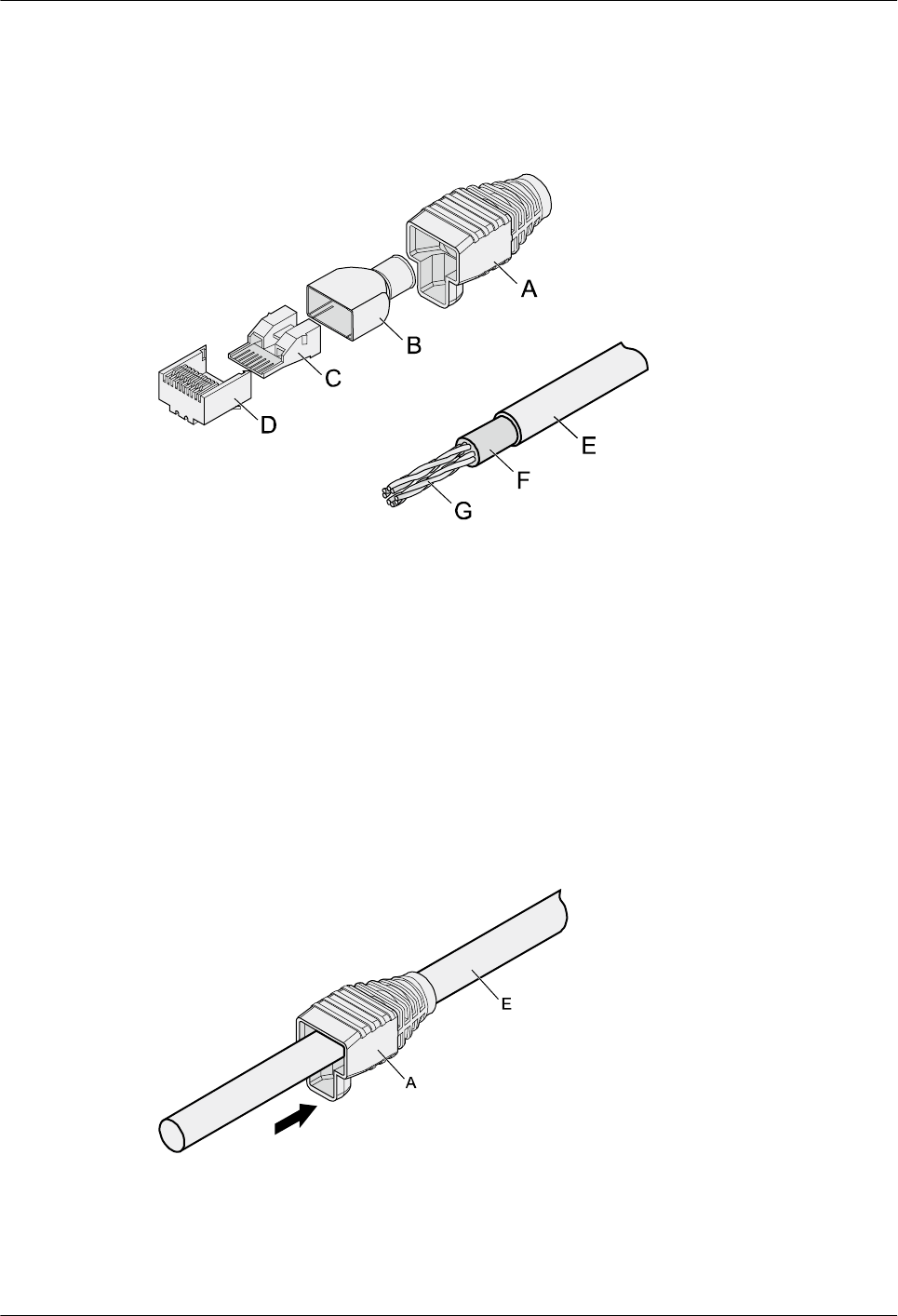
Context
Figure 5-15 shows the components of an RJ45 connector and a shielded Ethernet cable.
Figure 5-15 Shielded RJ45 connector and cable
A. Jacket of connector B. Metal shell of connector C. Wire holder of
connector
D. Plug of connector
E. Jacket of Ethernet cable F. Shield layer of Ethernet
cable
G. Twisted-pair wires -
Procedure
Step 1 Fit the jacket of the connector onto the Ethernet cable, as shown in Figure 5-16.
Figure 5-16 Fitting the jacket of the connector onto the Ethernet cable
Step 2 Remove a 30 mm (1.18 in.) long section of the jacket, cut off the nylon twine inside the
jacket, and cut a no more than 5 mm (0.20 in.) cleft in the jacket, as shown in Figure 5-17.
AP2030DN
Hardware Installation and Maintenance Guide 5 Appendix
Issue 05 (2016-07-22) Huawei Proprietary and Confidential
Copyright © Huawei Technologies Co., Ltd.
36
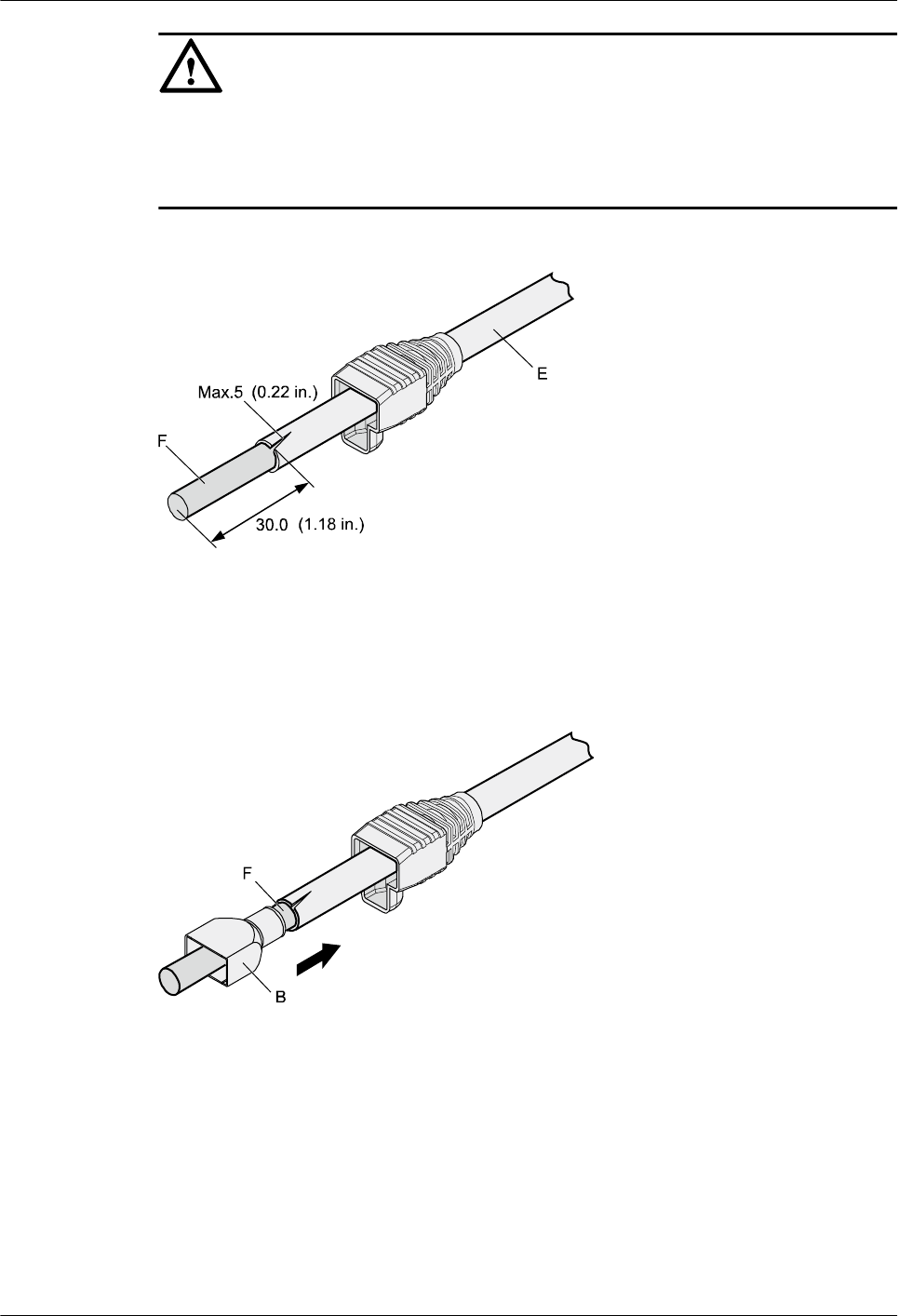
NOTICE
lWhen you remove a section of the jacket, do not damage the shield layer of the twisted-
pair cable.
lWhen you remove the shield layer, do not damage the insulation of the twisted-pair cable.
Figure 5-17 Removing the jacket of a twisted-pair cable (unit: mm (in.))
Step 3 Fit the metal shell onto the twisted-pair cable. The shield layer is covered by the metal shell,
as shown in Figure 5-18.
Figure 5-18 Fitting the metal shell onto the twisted-pair cable
Step 4 Fit the metal shell onto the twisted-pair cable until the shield layer is covered completely.
Along the edge of the metal shell, cut off the aluminum foil shield layer and ensure that there
is no surplus copper wire. The exposed twisted-pair cable is about 20 mm (0.79 in.) long, as
shown in Figure 5-19.
AP2030DN
Hardware Installation and Maintenance Guide 5 Appendix
Issue 05 (2016-07-22) Huawei Proprietary and Confidential
Copyright © Huawei Technologies Co., Ltd.
37
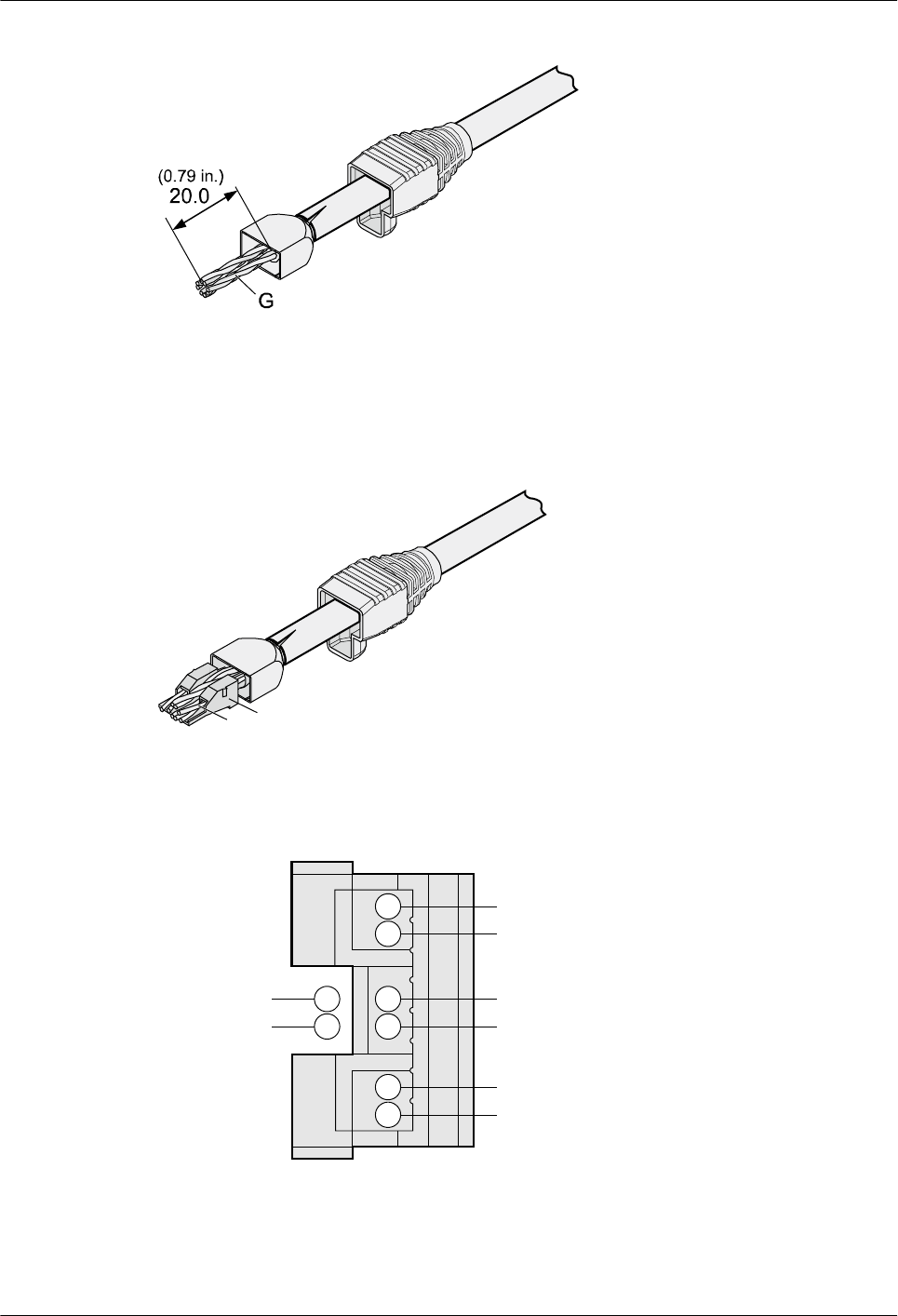
Figure 5-19 Removing the shield layer of a twisted-pair cable (unit: mm (in.))
Step 5 Lead the four pairs of twisted-pair wires through the wire holder, as shown in Figure 5-20 and
Figure 5-21. Ensure that the colored wires are in the correct location in the cable.
Figure 5-20 Leading wires through the wire holder
C
G
Figure 5-21 Cable locations in a wire holder
White-Green
Green
White-Orange
Orange
Blue
White-Blue
White-Brown
Brown
Step 6 Align the four pairs of cables in the holder, as shown in Figure 5-22. The connections
between the wires and the pins are shown in Figure 5-23 and listed in Table 5-5.
AP2030DN
Hardware Installation and Maintenance Guide 5 Appendix
Issue 05 (2016-07-22) Huawei Proprietary and Confidential
Copyright © Huawei Technologies Co., Ltd.
38
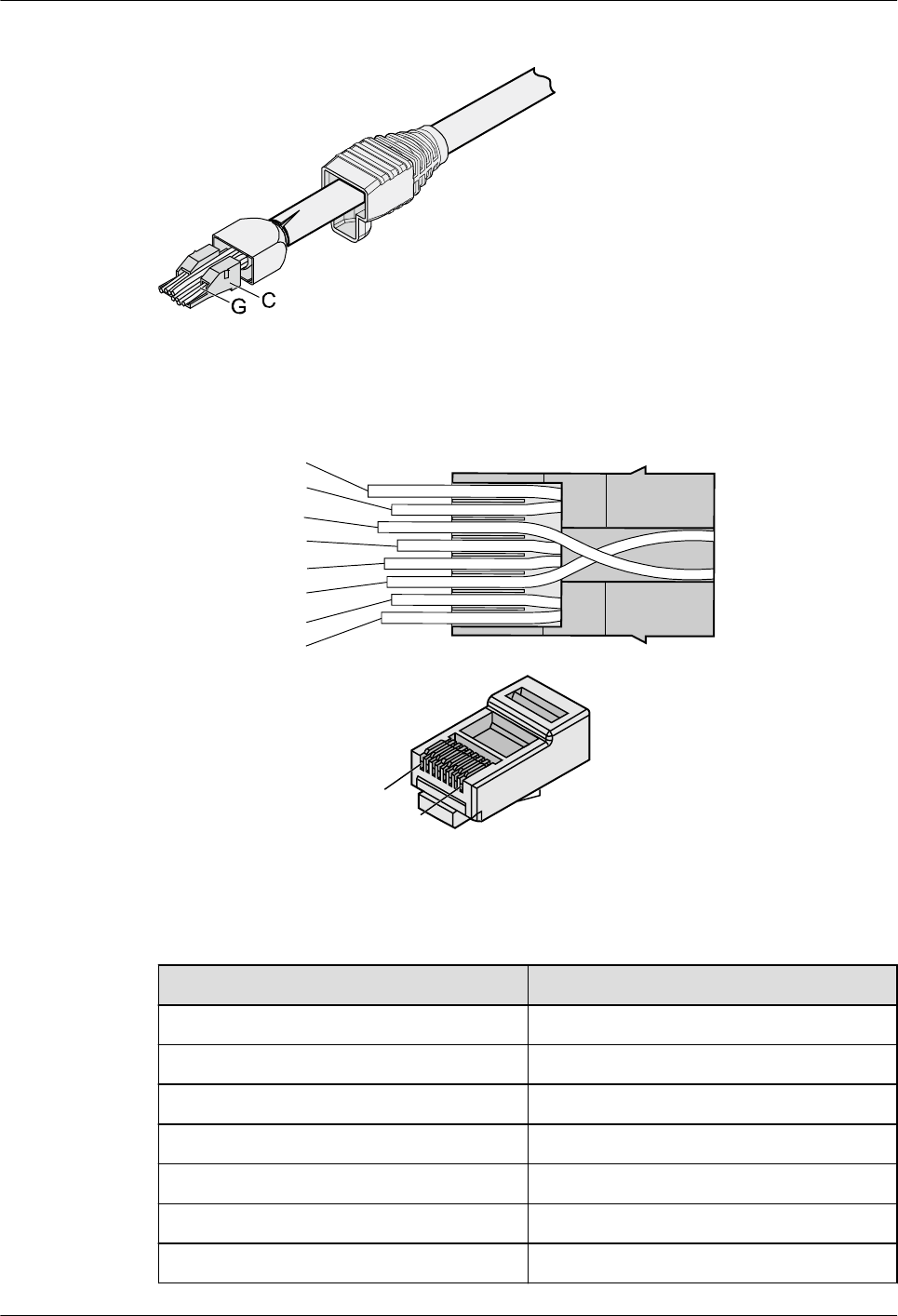
Figure 5-22 Four pairs of cables on a wire holder
Figure 5-23 Connections between wires and pins
Brown
White -Brown
Green
White-Blue
Blue
White-Green
Orange
White-Orange
Pin 8
Pin 1
Table 5-5 Connections between wires and pins (using a straight-through cable as an example)
Matching Pins of Wires Wire Color
1 White-Orange
2 Orange
3 White-Green
4 Blue
5 White-Blue
6 Green
7 White-Brown
AP2030DN
Hardware Installation and Maintenance Guide 5 Appendix
Issue 05 (2016-07-22) Huawei Proprietary and Confidential
Copyright © Huawei Technologies Co., Ltd.
39
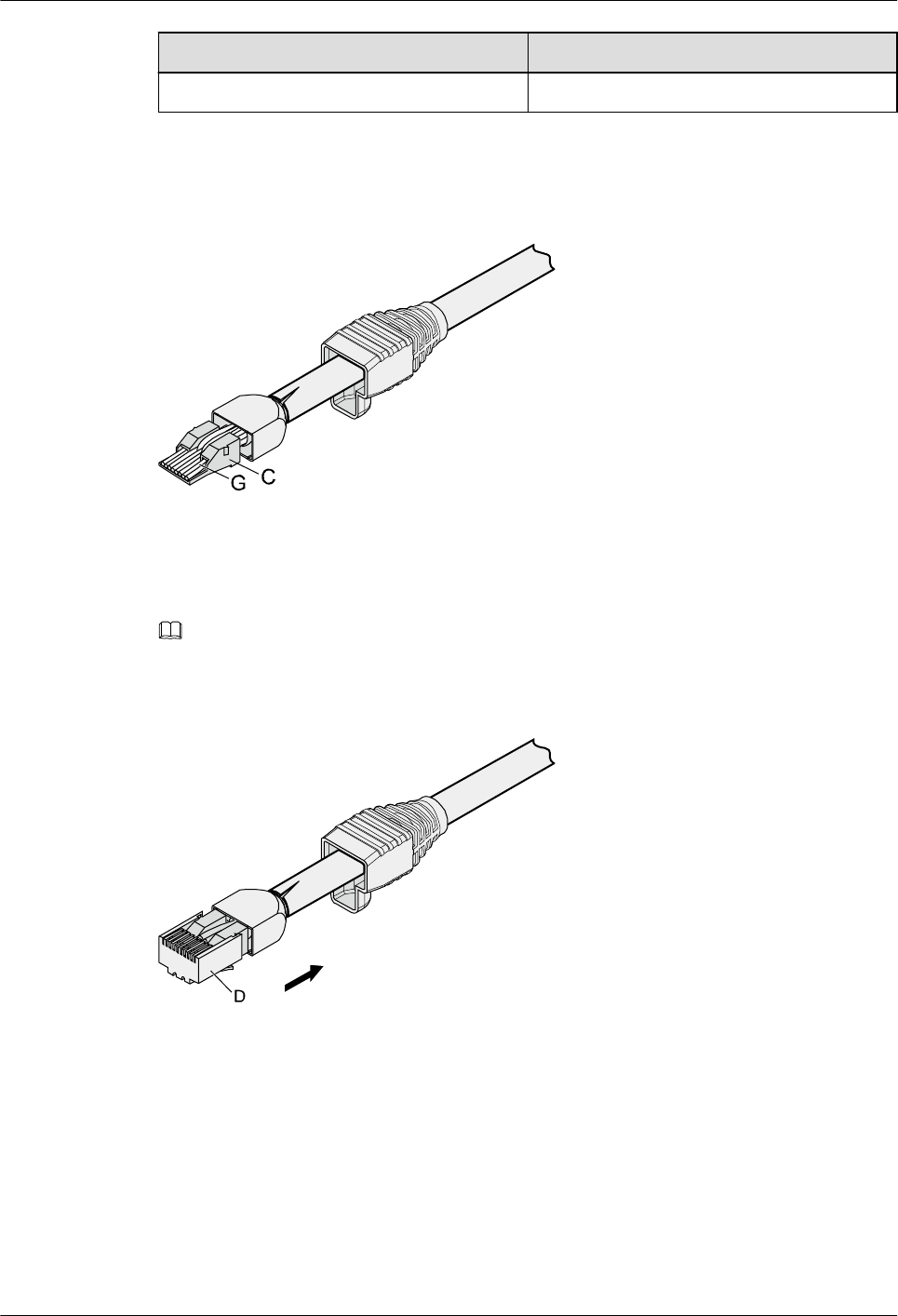
Matching Pins of Wires Wire Color
8 Brown
Step 7 Cut off the surplus cables along the lower edge of the wire holder, as shown in Figure 5-24.
Figure 5-24 Cutting off surplus cables
Step 8 Put the connector body onto the wire holder and turn the metal shell by 90°, as shown in
Figure 5-25.
NOTE
Ensure that the wire holder is in good contact with the connector body.
Figure 5-25 Putting the connector body onto the wire holder
Step 9 Push the metal shell toward the connector body until the wire holder and the connector body
are engaged completely. Crimp the connector, as shown in Figure 5-26.
AP2030DN
Hardware Installation and Maintenance Guide 5 Appendix
Issue 05 (2016-07-22) Huawei Proprietary and Confidential
Copyright © Huawei Technologies Co., Ltd.
40
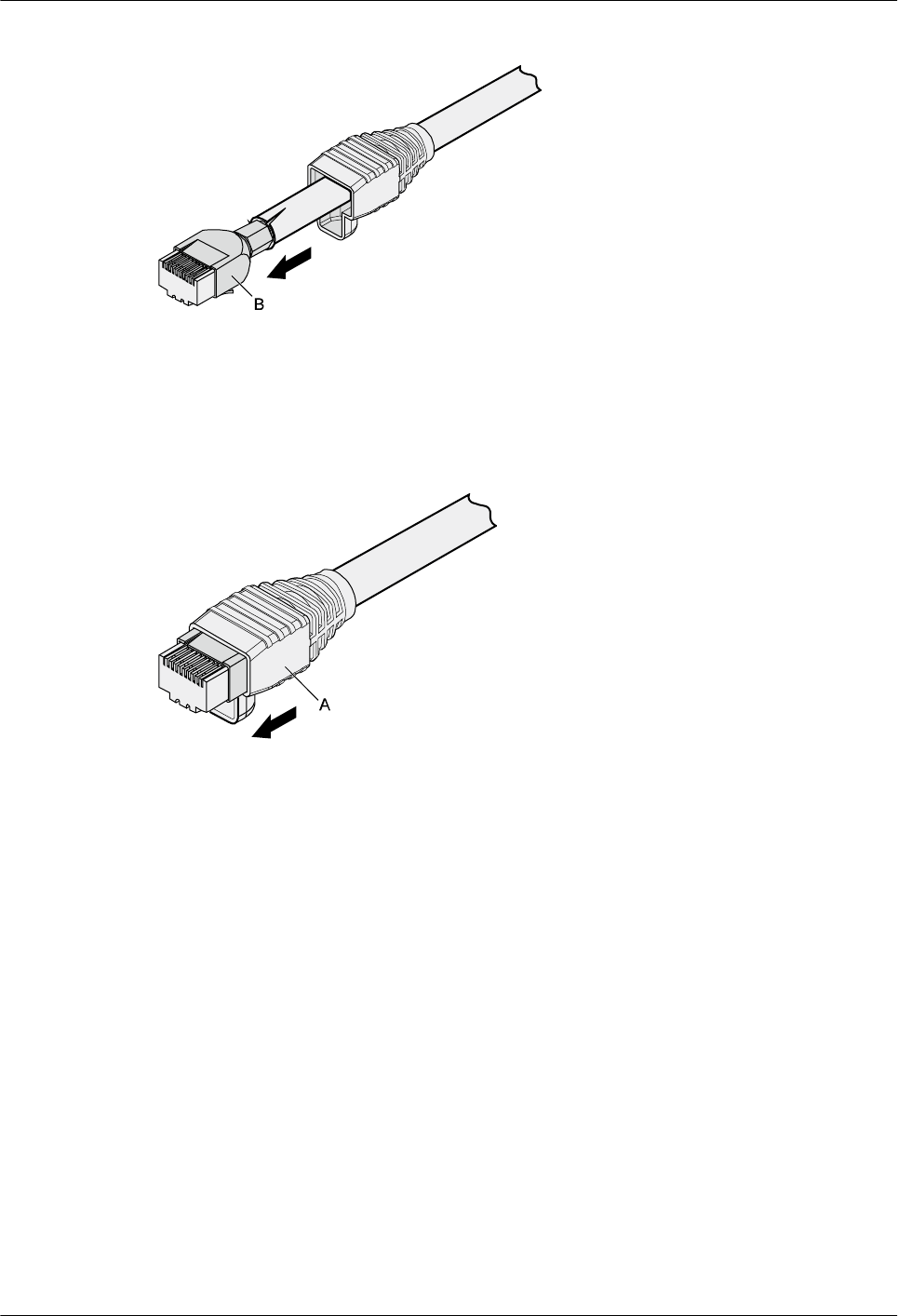
Figure 5-26 Crimping the connector
Step 10 Push the jacket towards the metal shell until the metal shell is covered. This completes the
assembly of one end of the cable, as shown in Figure 5-27.
Figure 5-27 Pushing the metal shell
Step 11 To complete the assembly of the other end, repeat Step 1 through Step 10.
----End
Assembling an Unshielded RJ45 Connector and Ethernet Cable
Context
Figure 5-28 shows the components of an unshielded RJ45 connector and cable.
AP2030DN
Hardware Installation and Maintenance Guide 5 Appendix
Issue 05 (2016-07-22) Huawei Proprietary and Confidential
Copyright © Huawei Technologies Co., Ltd.
41
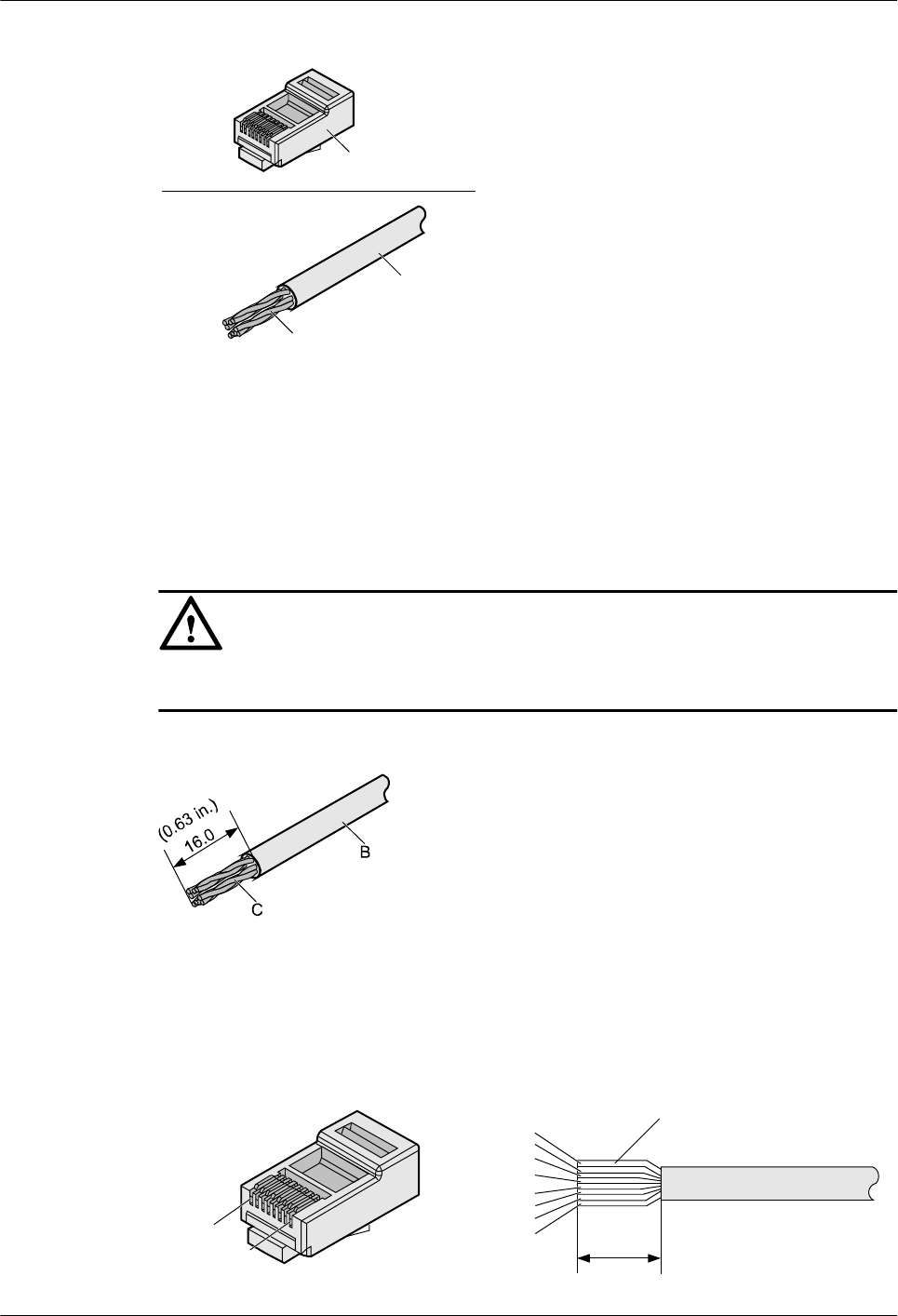
Figure 5-28 Components of an unshielded RJ45 connector and cable
A
B
C
A. Plug of connector B. Jacket C. Twisted-pair wires
Procedure
Step 1 Remove a 16-mm (0.63 in.) long section of the jacket, as shown in Figure 5-29.
NOTICE
When you remove the shield layer, do not damage the insulation of the twisted-pair cable.
Figure 5-29 Removing the jacket of a twisted-pair cable (unit: mm (in.))
Step 2 Align the four pairs of wires and cut the ends neatly, as shown in Figure 5-30. The
connections between the wires and the pins are listed in Table 5-6.
Figure 5-30 Connections between wires and pins (unit: mm (in.))
C
16
White-Orange
White-Green
Orange
Blue
White-Blue
Green
White-Brown
Brown
Pin 8
Pin 1
AP2030DN
Hardware Installation and Maintenance Guide 5 Appendix
Issue 05 (2016-07-22) Huawei Proprietary and Confidential
Copyright © Huawei Technologies Co., Ltd.
42
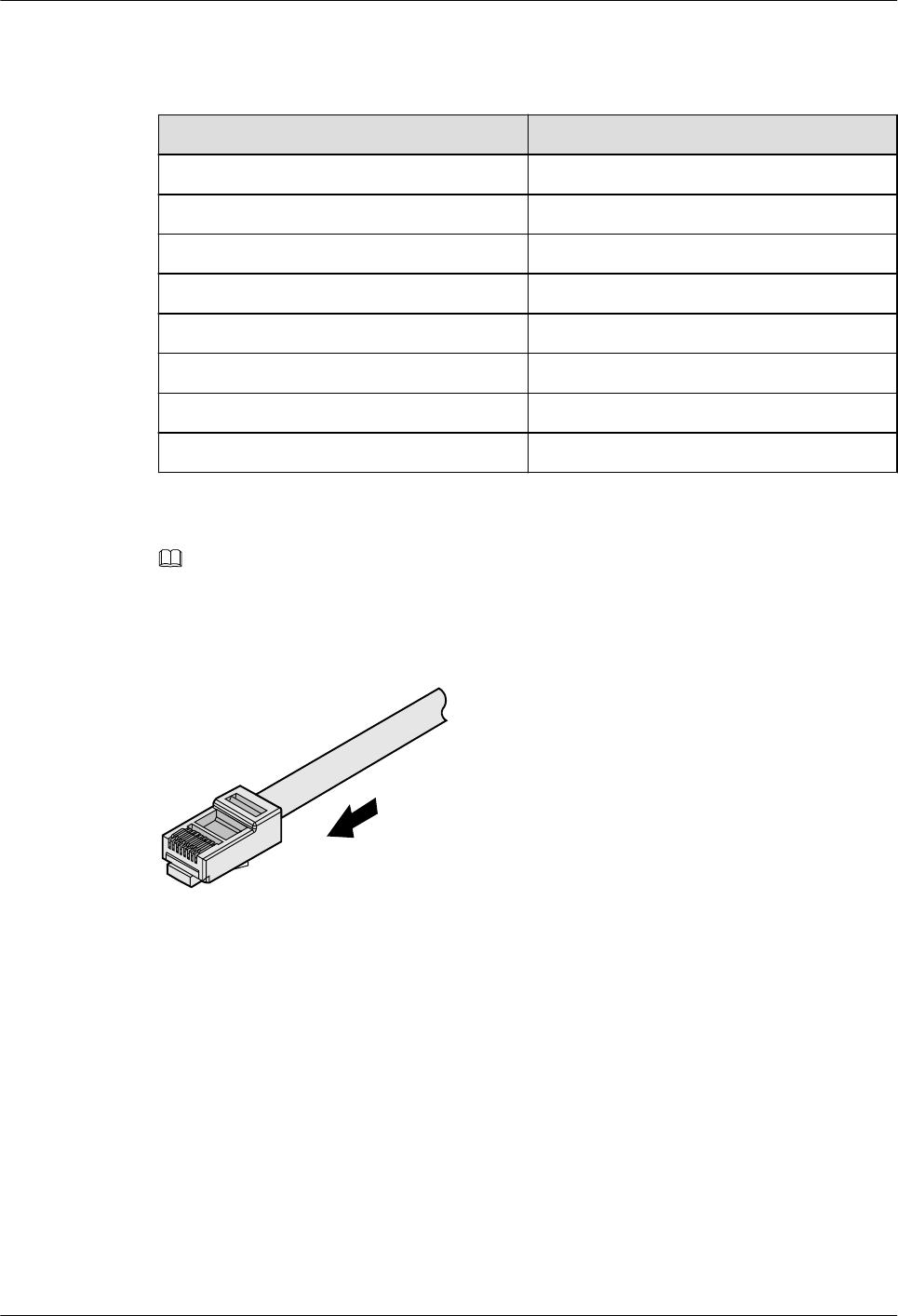
Table 5-6 Connections between wires and pins (using a straight-through cable as an example)
Matching Pins of Wires Wire Color
1 White-Orange
2 Orange
3 White-Green
4 Blue
5 White-Blue
6 Green
7 White-Brown
8 Brown
Step 3 Feed the cable into the plug, and crimp the connector, as shown in Figure 5-31.
NOTE
When inserting the cable, check from the side or bore of the plug to ensure that the cable is completely
seated in the plug.
Figure 5-31 Crimping the connector
Step 4 To complete the assembly of the other end, repeat Step 1 through Step 3.
----End
Checking the Appearance of Contact Strips
Context
lTo ensure proper contact between the crimped wires and the wire conductors, the heights
and sizes of the contact strips must be standard and the same.
lThe contact strips must be parallel to each other, with an offset of less than ± 5°. The top
margin of a strip must be parallel to the axis of the connector, with an offset of less than
± 10°.
AP2030DN
Hardware Installation and Maintenance Guide 5 Appendix
Issue 05 (2016-07-22) Huawei Proprietary and Confidential
Copyright © Huawei Technologies Co., Ltd.
43

lTo ensure conductivity, the surface of the contact strips must be clean.
lThe contact strips must be in good contact with the RJ45 socket. The plastic separators
must remain intact and be aligned.
lThe contact strip blade must extend beyond the ends of the wires. The ends of the wires
must be in contact with the edge of the RJ45. The distance between them must be less
than 0.5 mm (0.02 in.).
Procedure
Step 1 Hold the crimped connector, with the front side facing you, and check whether the contact
strips are of the same height. The height should be 6.02 ± 0.13 mm (0.237 ± 0.005). If a
measuring tool is not available, you can compare the connector with a standard connector.
Figure 5-32 shows an unqualified piece, and Figure 5-33 shows a qualified piece.
NOTE
All unqualified pieces must be crimped again.
Figure 5-32 Contact strips of different heights
Figure 5-33 Contact strips of the same height
Step 2 Hold an RJ45 connector and turn it 45°. Observe the top edges of the metal contact strips.
Figure 5-34 shows an unqualified piece.
AP2030DN
Hardware Installation and Maintenance Guide 5 Appendix
Issue 05 (2016-07-22) Huawei Proprietary and Confidential
Copyright © Huawei Technologies Co., Ltd.
44
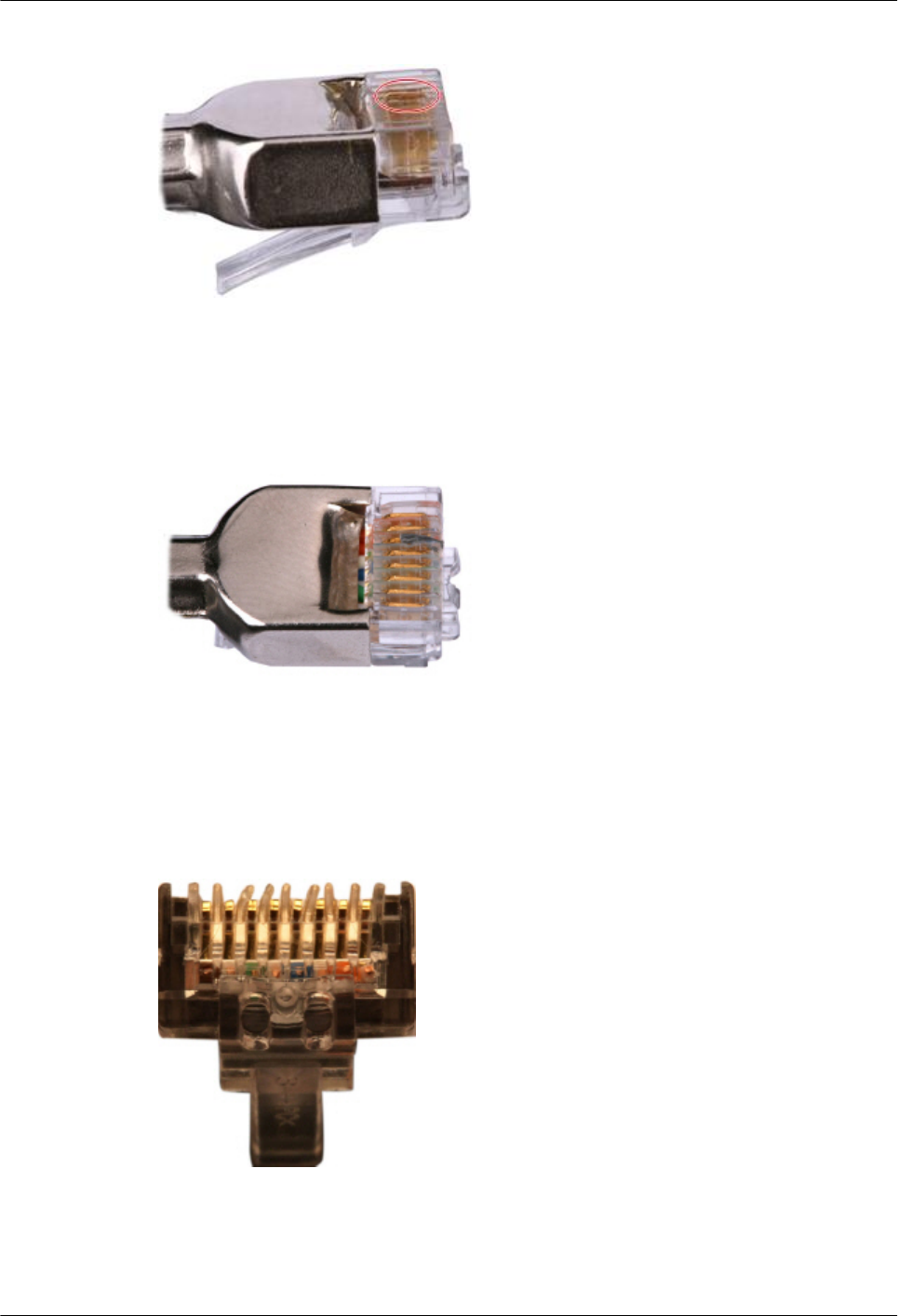
Figure 5-34 Unparallel contact strips of different heights
Step 3 Check whether the contact strips are clean. If they are not clean and the dirt cannot be
removed, replace it with a new RJ45 connector. Figure 5-35 shows an unqualified piece.
Figure 5-35 Dirt on a contract strip
Step 4 Check whether the contact strips and the plastic separators are well aligned and intact. If a
separator is skewed and cannot be fixed, replace it with a new RJ45 connector. Figure 5-36
shows an unqualified piece.
Figure 5-36 Skewed plastic separators
Step 5 Hold the connector with the side facing towards you, and check whether you can see the
cross-sections of the wires. Ensure that the ends of the wires are in good contact with the edge
AP2030DN
Hardware Installation and Maintenance Guide 5 Appendix
Issue 05 (2016-07-22) Huawei Proprietary and Confidential
Copyright © Huawei Technologies Co., Ltd.
45
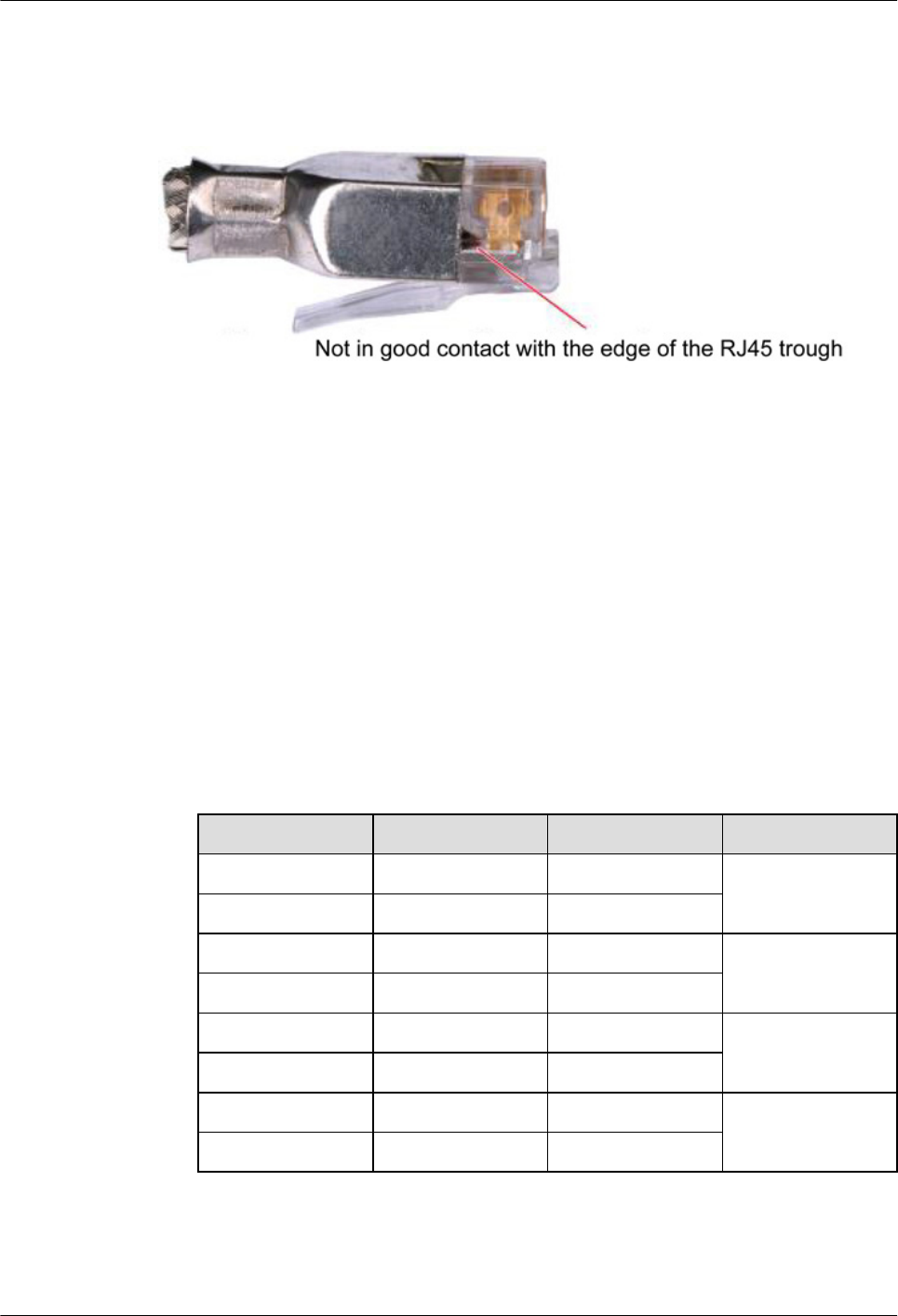
of the RJ45, and that the contact strip blade extends beyond the ends of the wires and is
crimped with the wires. If not, replace the connector. Figure 5-37 shows an unqualified piece.
Figure 5-37 Wires not in good contact with the edge of the RJ45
----End
Testing the Connection of Assembled Cables
Context
Huawei provides two types of Ethernet cables: straight-through cables and crossover cables.
lStraight-through cables are connected in a one-to-one manner. They are used to connect
terminals such as a computer or switch to network devices. Table 5-7 lists the
connections of core wires in a straight-through cable.
Table 5-7 Connections of core wires in a straight-through cable
RJ45 Connector 1 RJ45 Connector 2 Core Wire Color Twisted or Not
2 2 Orange Twisted
1 1 Orange-White
6 6 Green Twisted
3 3 Green-White
4 4 Blue Twisted
5 5 Blue-White
8 8 Brown Twisted
7 7 Brown-White
lCrossover cables are connected in a crossover manner. They are used to connect
terminals such as two computers or switches. Table 5-8 lists the connections of core
wires in a crossover cable.
AP2030DN
Hardware Installation and Maintenance Guide 5 Appendix
Issue 05 (2016-07-22) Huawei Proprietary and Confidential
Copyright © Huawei Technologies Co., Ltd.
46
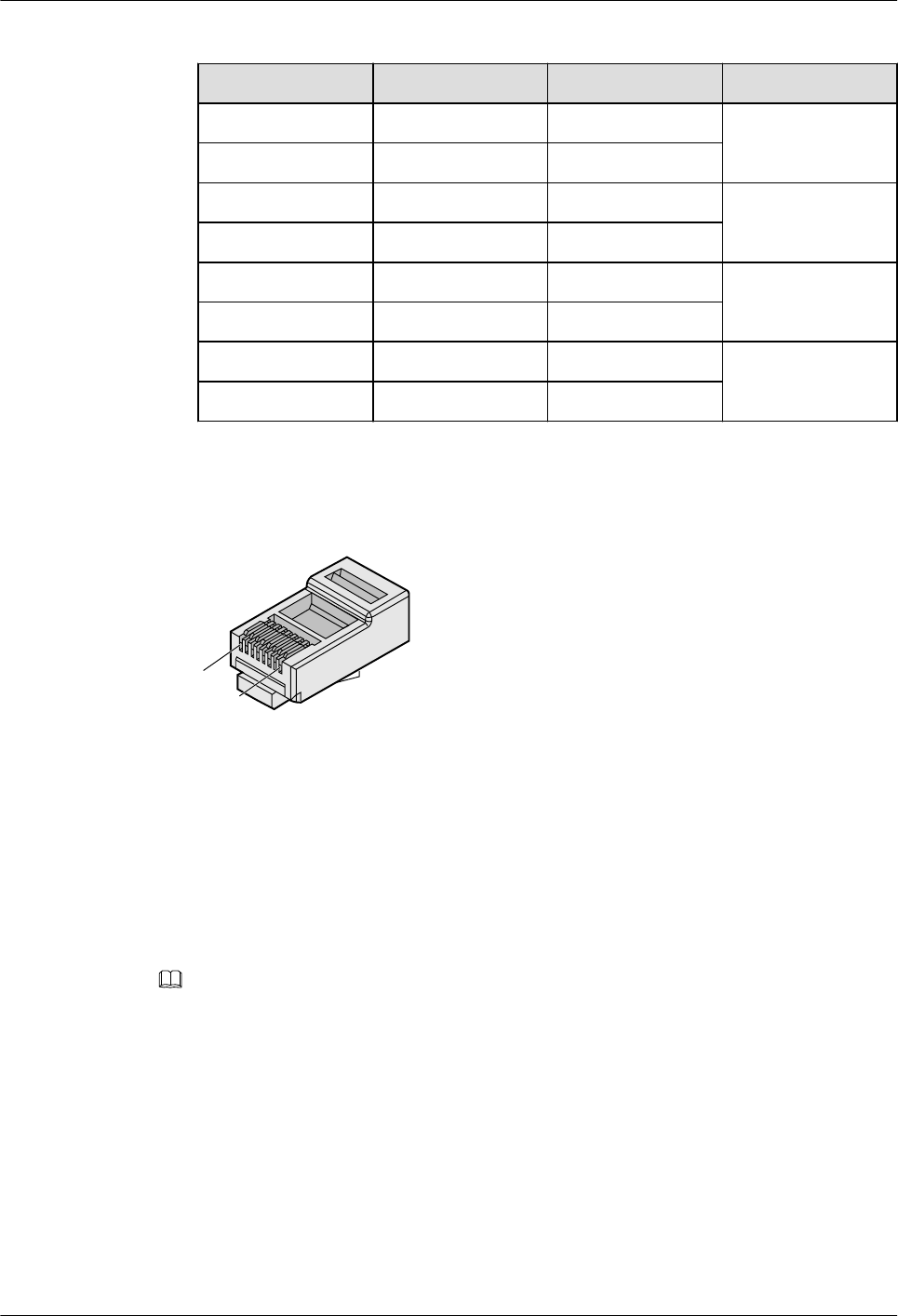
Table 5-8 Connections of core wires in a straight crossover cable
RJ45 Connector 1 RJ45 Connector 2 Core Wire Color Twisted or Not
6 2 Orange Twisted
3 1 Orange-White
2 6 Green Twisted
1 3 Green-White
4 4 Blue Twisted
5 5 Blue-White
8 8 Brown Twisted
7 7 Brown-White
Figure 5-38 shows the pins of an RJ45 connector.
Figure 5-38 Pins of an RJ45 connector
Pin8
Pin1
Procedure
Step 1 Feed both connectors of the cable into the ports of the cable tester.
Step 2 After the connectors are properly inserted, turn on the tester. If the indicators from 1 to G turn
on simultaneously, you can infer that the pins work normally and the wires are correctly
connected.
NOTE
Turn the switch to the S position to slow down lighting of the indicators so that you can see the
indicators more clearly, as shown in Figure 5-39.
AP2030DN
Hardware Installation and Maintenance Guide 5 Appendix
Issue 05 (2016-07-22) Huawei Proprietary and Confidential
Copyright © Huawei Technologies Co., Ltd.
47
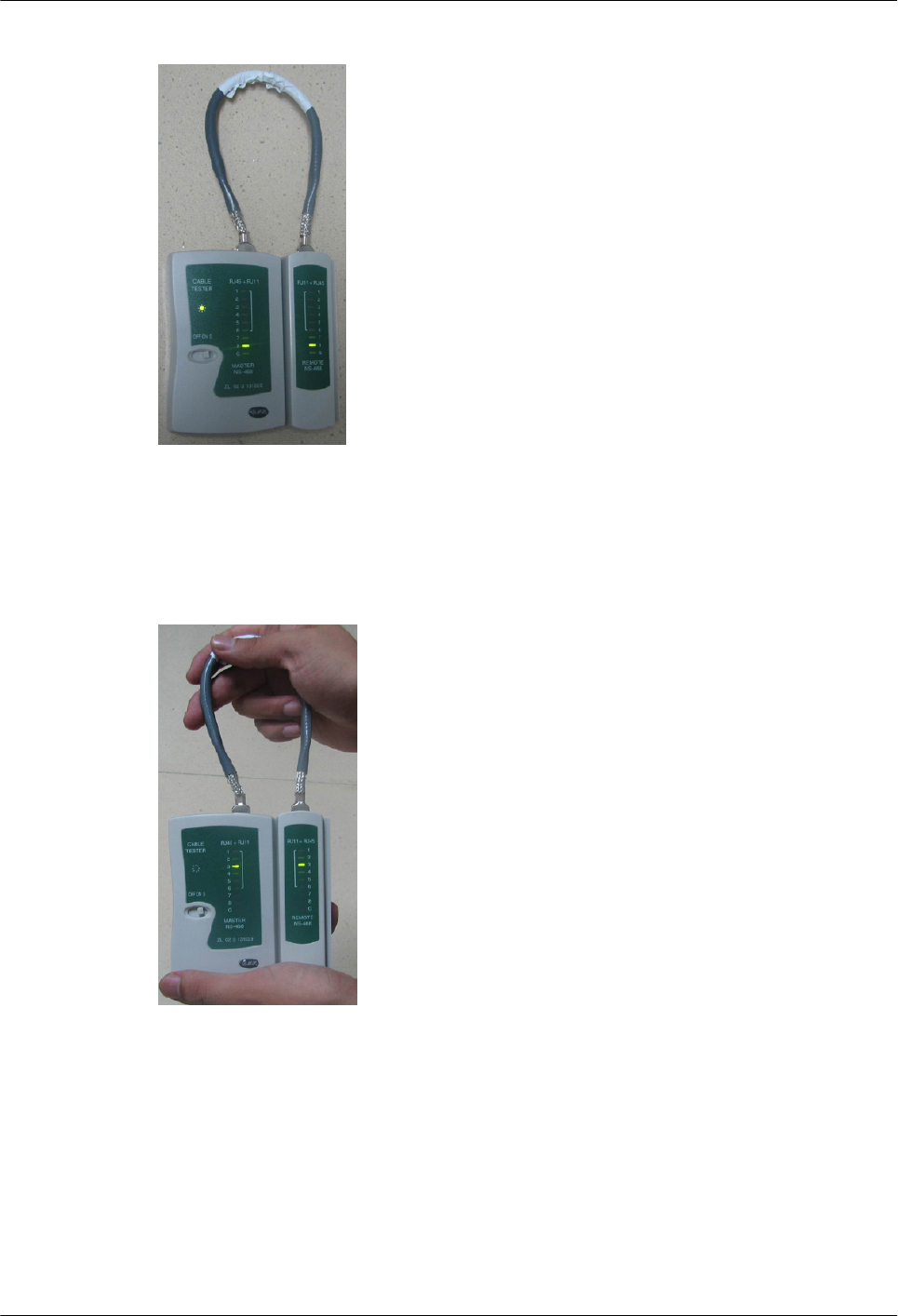
Figure 5-39 Testing the conduction and connections of wires
Step 3 Gently shake the connector and repeat Step 2 to check whether the metal contact strips are in
good contact with the core wires and Ethernet ports, as shown in Figure 5-40.
Figure 5-40 Checking the reliability
The procedure for testing a crossover cable is the same as that for testing a straight-through
cable except for the sequence in which the indicators turn on, which depends on the wire
connections of a crossover cable.
The Ethernet cable is qualified if the indicators turn on in the following sequence:
At the master (left) section of the tester, the indicators turn on in the sequence of 1-8-G. At the
slave (right) section of the tester, the indicators turn on in the sequence of 3-6-1-4-5-2-7-8-G.
If the indicators do not come on in this sequence, the Ethernet cable is unqualified.
AP2030DN
Hardware Installation and Maintenance Guide 5 Appendix
Issue 05 (2016-07-22) Huawei Proprietary and Confidential
Copyright © Huawei Technologies Co., Ltd.
48
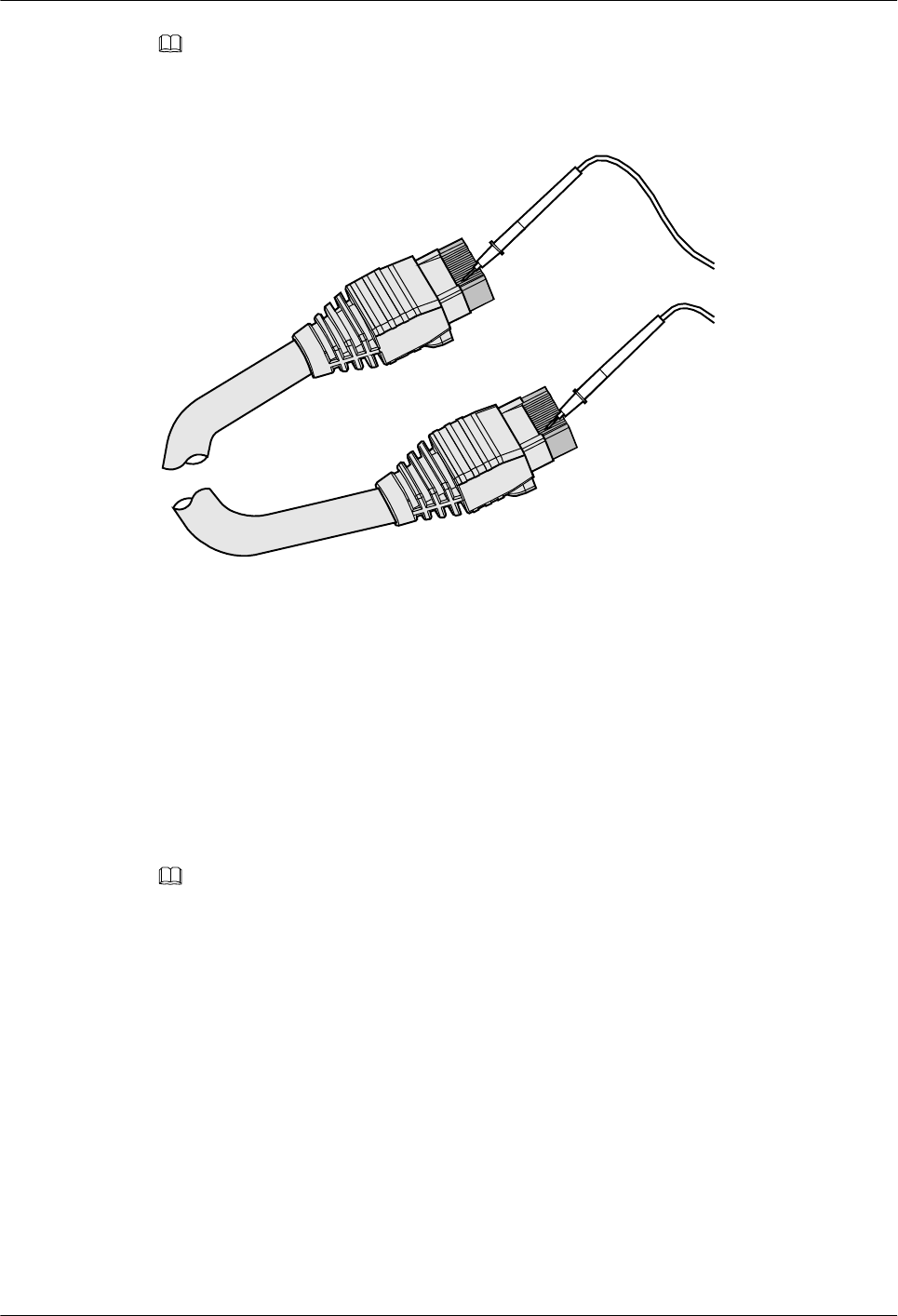
NOTE
If a tester is not available, you can use a multimeter to perform a simple test, as shown in Figure 5-41.
Figure 5-41 Testing the connection of an Ethernet cable
----End
5.1.4 Installing Cable Accessories
Precautions for Installing Cable Accessories
Tools
NOTE
The illustrations in this document may differ from actual situations, but the installation methods are the
same. For example, in this document, the adapters of cable connectors have separate interfaces. In the
actual situation, the adapters may have interfaces fixed on equipment.
Use dedicated tools provided or specified by Huawei and follow the installation procedure
described here.
Bending Radius
Unless otherwise specified, bending radius (R) of cables or fibers must meet the requirements
listed in Table 5-9.
AP2030DN
Hardware Installation and Maintenance Guide 5 Appendix
Issue 05 (2016-07-22) Huawei Proprietary and Confidential
Copyright © Huawei Technologies Co., Ltd.
49

Table 5-9 Bending radius of cables or fibers
Cable or Fiber Bending Radius (R)
Ordinary cable In normal cases, R ≥ 2d. When the cable is
connected with a connector, R ≥ 5d.
Fiber R ≥ 40 mm (1.57 in.); Bending angle > 90°
NOTE
The letter d indicates the diameter of a cable or fiber.
Precautions for Installation
lHold terminals of cables instead of pulling the cables themselves when installing or
removing cable components.
lDo not insert a connector forcibly when the connector is blocked. Use a dedicated tool to
pull out the connector. Install the connector again after you check that the pins are
inserted properly.
lBefore tightening screws on cable connectors, ensure that the connectors are properly
connected to their adapters. Tighten the screw with appropriate force using a flat-head or
Phillips screwdriver instead of bare hands or an electric screwdriver. If the screw cannot
be screwed into the tapped hole, determine the reason and try again. Do not apply too
much force, or the screw or adapter may be damaged.
lWhen removing densely aligned cables or fiber connectors, use dedicated pliers such as
cable-pulling pliers and fiber-pulling pliers.
lDo not twist, bend, stretch, or extrude fibers during installation.
lCover the idle fiber connectors with dust caps. Remove the dust caps before using the
fiber connectors.
Requirements for Cable Routing
lTo protect cables, remove the burrs in the cable through-holes or install protective rings
in the holes.
lTo ease the connection and to avoid stress, keep cable joints slack. After connecting
multiple cables to a connector that has multiple interfaces, keep the cables slack to avoid
generating stress.
lBind or clean cables gently because cable distortion affects signal quality.
lKeep cables away from moveable components such as doors.
lSharp objects must not touch cable wiring to prevent damage to cables.
lTo protect power cables, route power cables of the active and standby power modules
separately.
Installing Power Adapters
Installing the OT Terminal
AP2030DN
Hardware Installation and Maintenance Guide 5 Appendix
Issue 05 (2016-07-22) Huawei Proprietary and Confidential
Copyright © Huawei Technologies Co., Ltd.
50
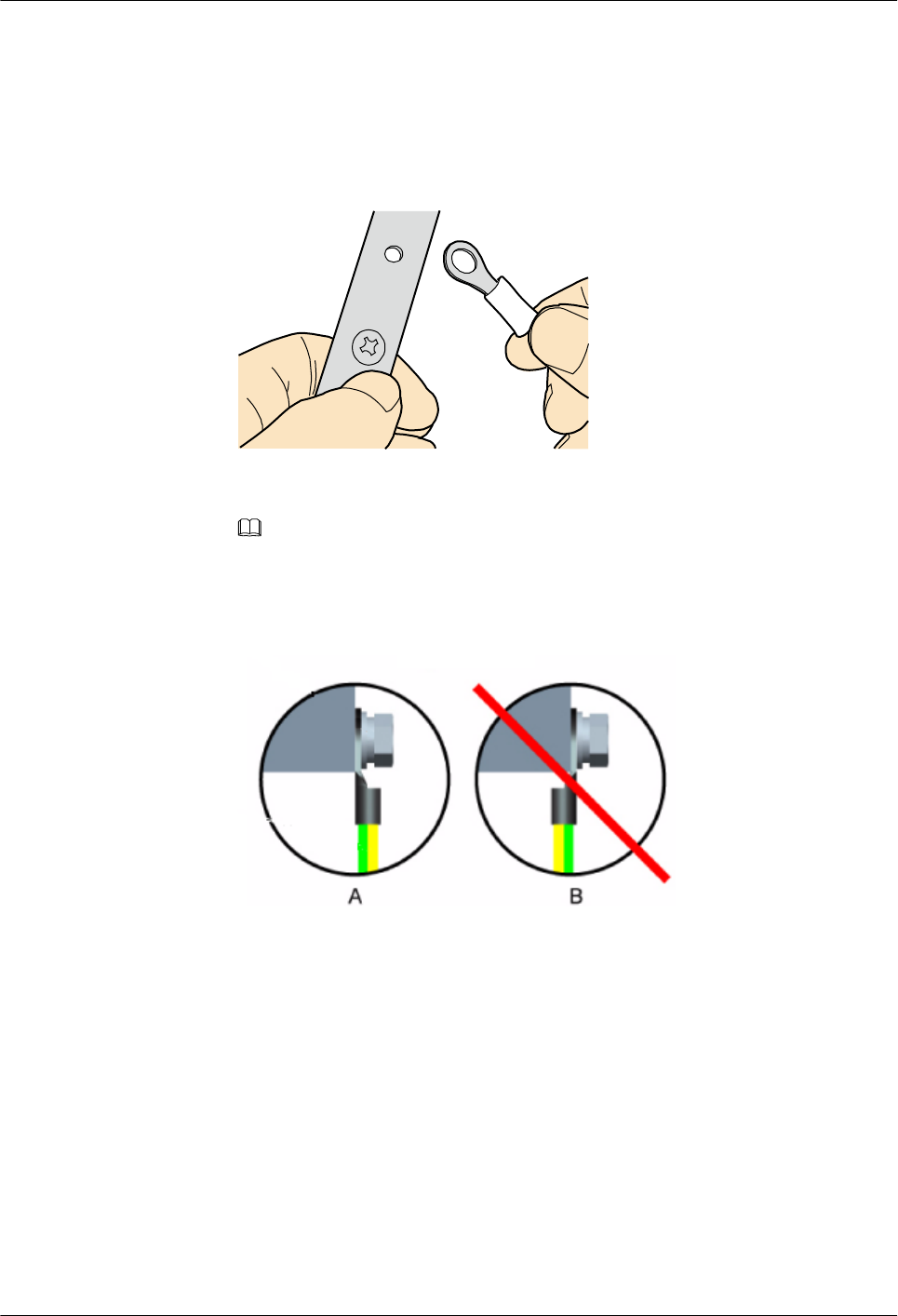
Procedure
lInstall an OT terminal.
a. Align the hole of the OT terminal (conductor upward) with a connecting hole, as
shown in Figure 5-42.
Figure 5-42 Aligning the OT terminal with a connecting hole
NOTE
When you install an OT terminal, the crimping sleeve is installed as shown in Figure 5-43,
where A is correct and B is incorrect.
Figure 5-43 Installing an OT terminal, showing the orientation of crimping sleeve
b. Place the spring washer and flat washer in turn, mount a matching screw, and fasten
it clockwise, as shown in Figure 5-44.
AP2030DN
Hardware Installation and Maintenance Guide 5 Appendix
Issue 05 (2016-07-22) Huawei Proprietary and Confidential
Copyright © Huawei Technologies Co., Ltd.
51
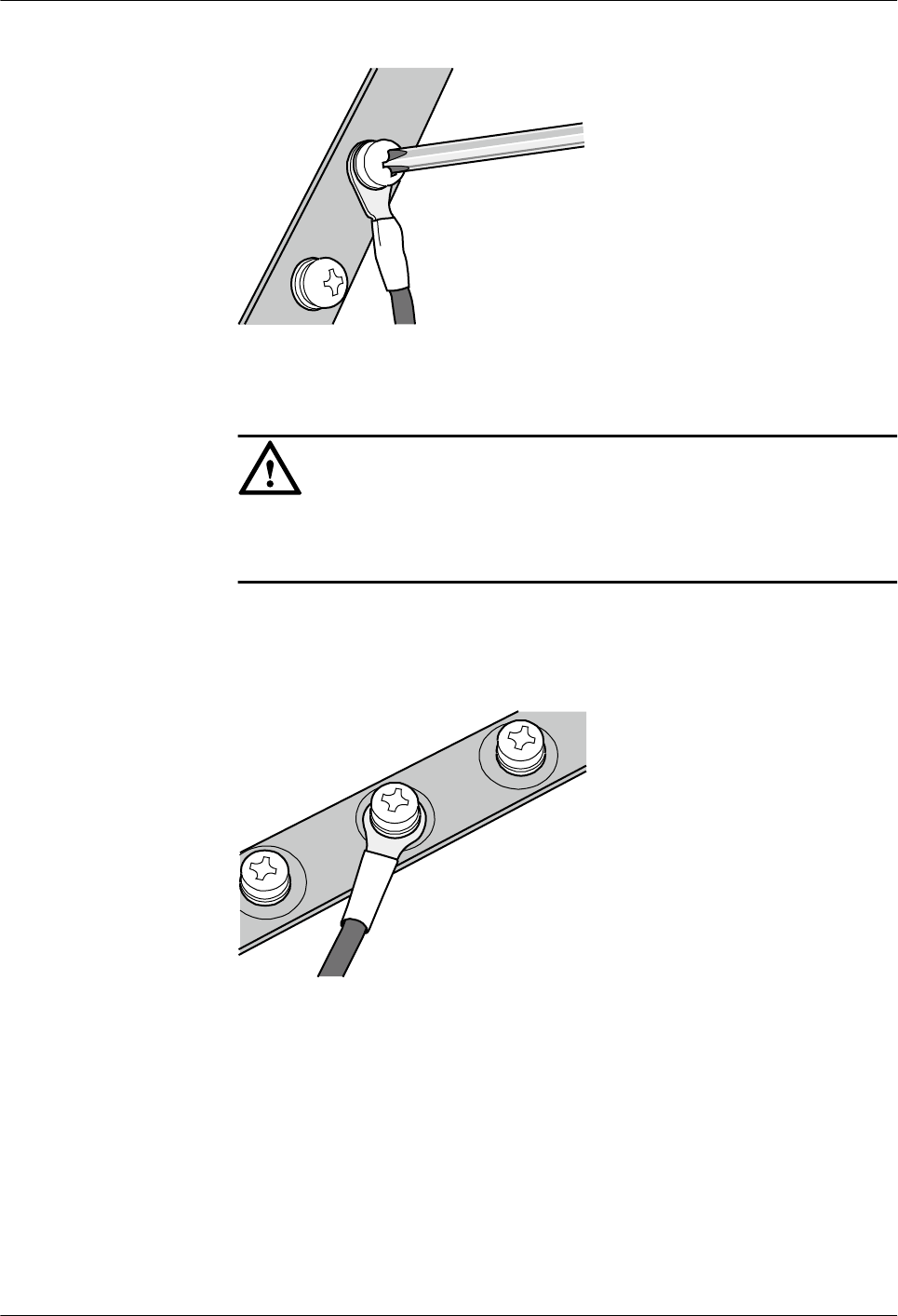
Figure 5-44 Installing two terminals back to back
NOTICE
Ensure that the OT terminal is not in contact with other terminals or metal
components.
c. Move the cable slightly and ensure that it is securely connected, as shown in Figure
5-45.
Figure 5-45 Installed OT terminal
lInstall two OT terminals on a post.
Before you install two OT terminals on a post, ensure that the two terminals can be
installed on the post and that the electrical connecting pieces have a large contact area.
Two OT terminals can be installed using any of these methods:
–Bend the upper OT terminal at a 45- or 90-degree angle, as shown in Figure 5-46.
–Cross the two terminals, as shown in Figure 5-47.
AP2030DN
Hardware Installation and Maintenance Guide 5 Appendix
Issue 05 (2016-07-22) Huawei Proprietary and Confidential
Copyright © Huawei Technologies Co., Ltd.
52
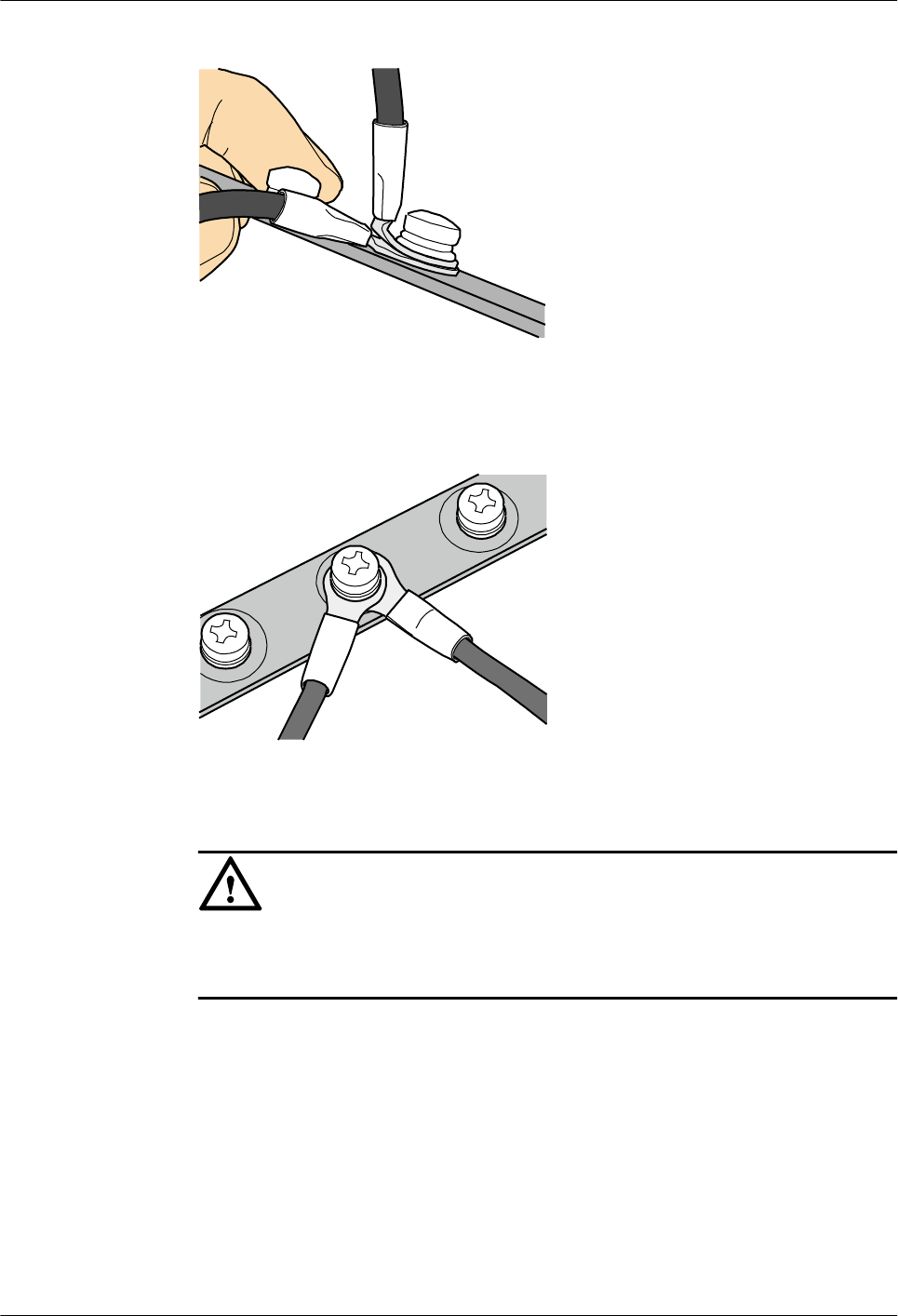
Figure 5-46 Bending the upper OT terminal at a 45- or 90-degree angle
Figure 5-47 Crossing two terminals
NOTICE
If the two terminals are different sizes, place the smaller one above the bigger one. A
maximum of two terminals can be installed on a post.
lTo remove an OT terminal, loosen the screw counterclockwise.
----End
Installing the Cord End Terminal
Procedure
Step 1 Hold a cord end terminal upright and place it on a terminal jack, as shown in Figure 5-48. To
ensure bump contact and dense connection, place the plain side of the terminal outwards.
AP2030DN
Hardware Installation and Maintenance Guide 5 Appendix
Issue 05 (2016-07-22) Huawei Proprietary and Confidential
Copyright © Huawei Technologies Co., Ltd.
53
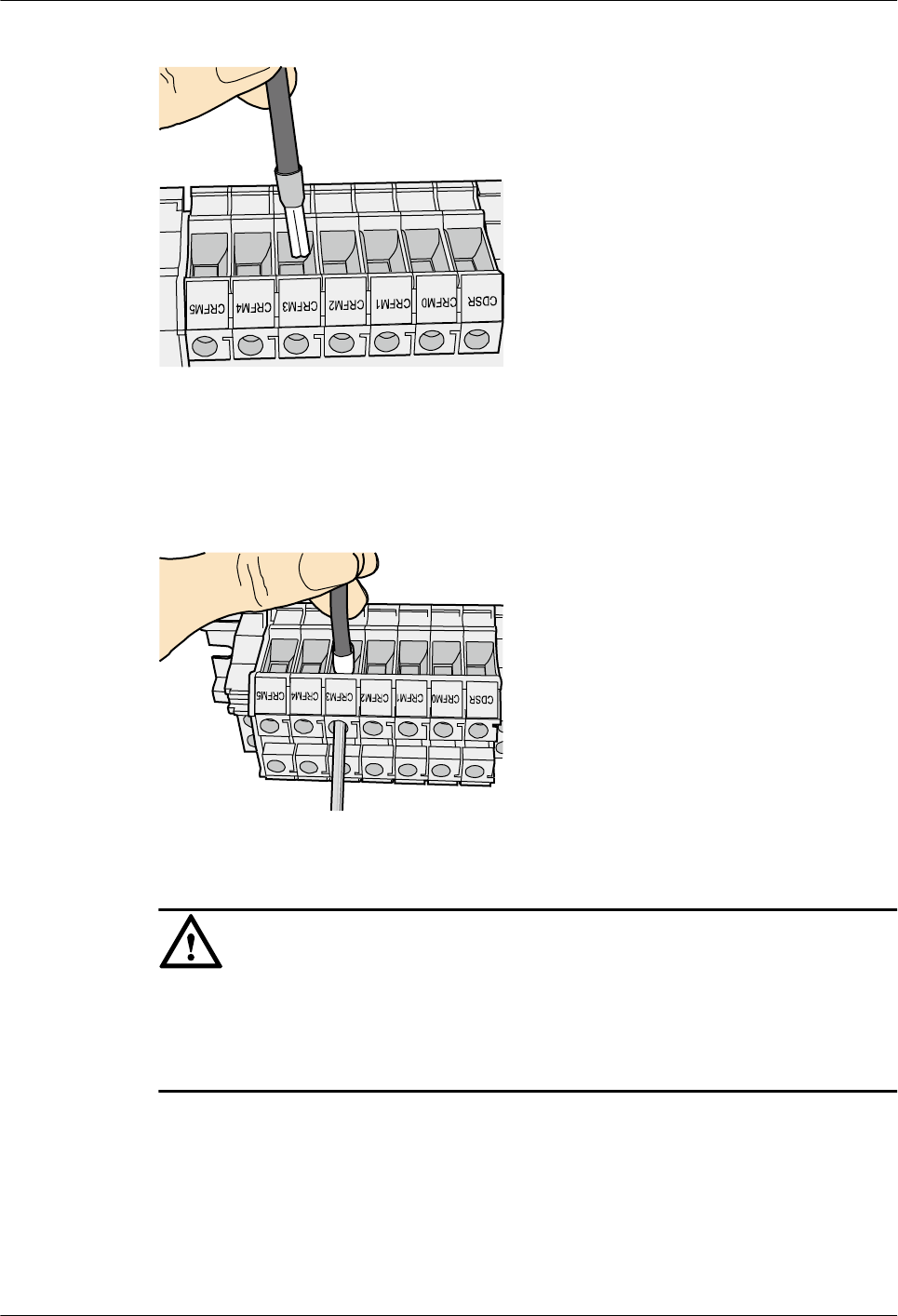
Figure 5-48 Placing a terminal on a terminal jack vertically
Step 2 Insert the terminal into the jack vertically, and turn the screw clockwise to fasten the terminal,
as shown in Figure 5-49.
Figure 5-49 Feeding the terminal into the jack
NOTICE
lEnsure that the exposed section of the terminal is less than 2 mm (0.079 in.) in length.
lDo not press the insulation of the terminal.
lInsert only one terminal into one jack.
Step 3 Move the cable slightly and ensure that it is securely connected.
Step 4 Before you remove a cord end terminal, loosen the screw counterclockwise.
----End
Installing Ethernet Adapters
AP2030DN
Hardware Installation and Maintenance Guide 5 Appendix
Issue 05 (2016-07-22) Huawei Proprietary and Confidential
Copyright © Huawei Technologies Co., Ltd.
54
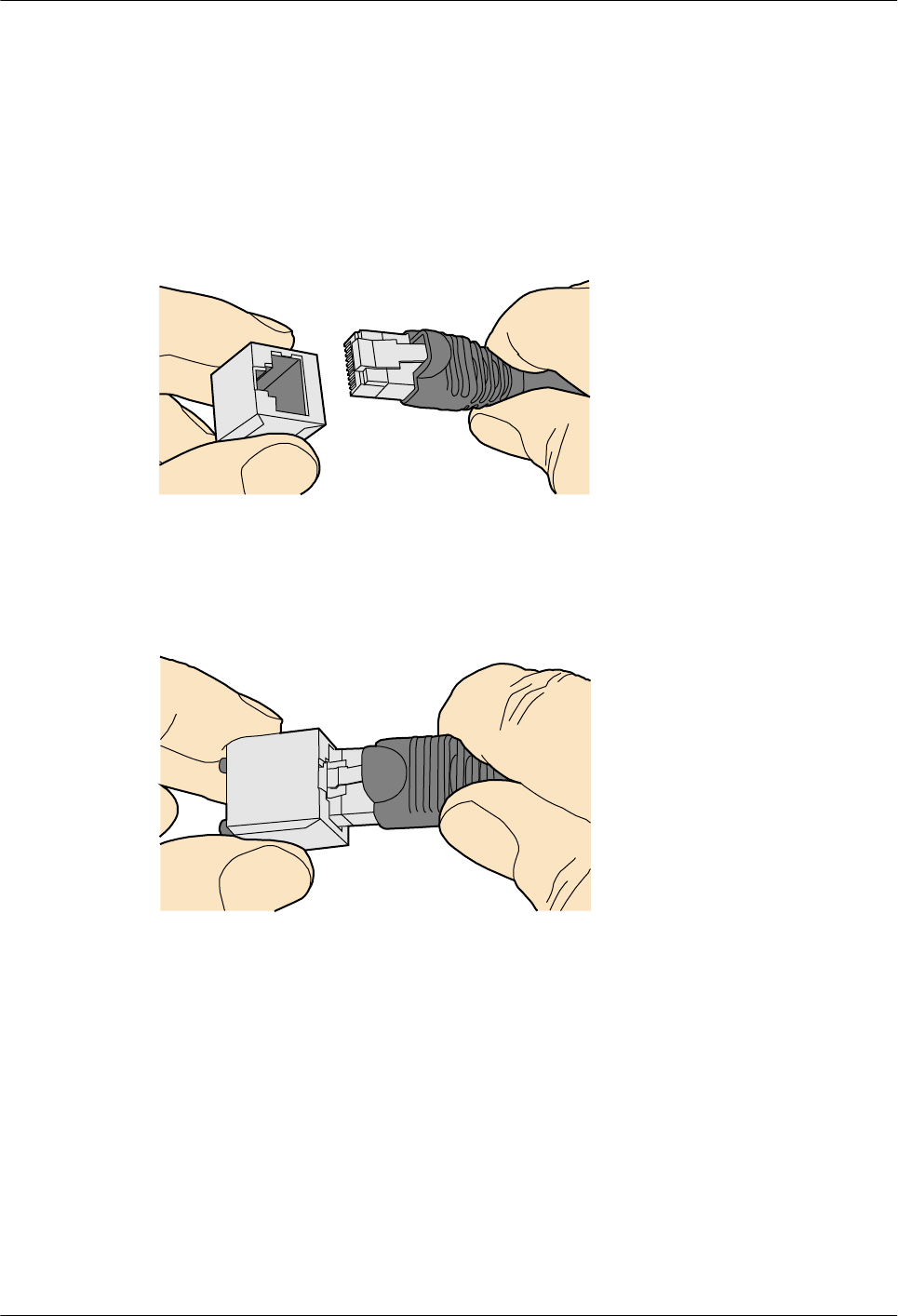
Installing a Shielded Ethernet Connector
Procedure
Step 1 Hold the male and female connectors, with the male connector facing the female connector, as
shown in Figure 5-50.
Figure 5-50 Holding the male and female shielded connectors
Step 2 Insert the male connector into the female connector, as shown in Figure 5-51.
Figure 5-51 Feeding the male shielded connector into the female shielded connector
Step 3 When you hear a click, the cable connector is completely inserted in the port. (The clip on the
cable connector pops up to fix the connector in the port.) Pull the connector slightly and
ensure that it is securely connected, as shown in Figure 5-52.
AP2030DN
Hardware Installation and Maintenance Guide 5 Appendix
Issue 05 (2016-07-22) Huawei Proprietary and Confidential
Copyright © Huawei Technologies Co., Ltd.
55
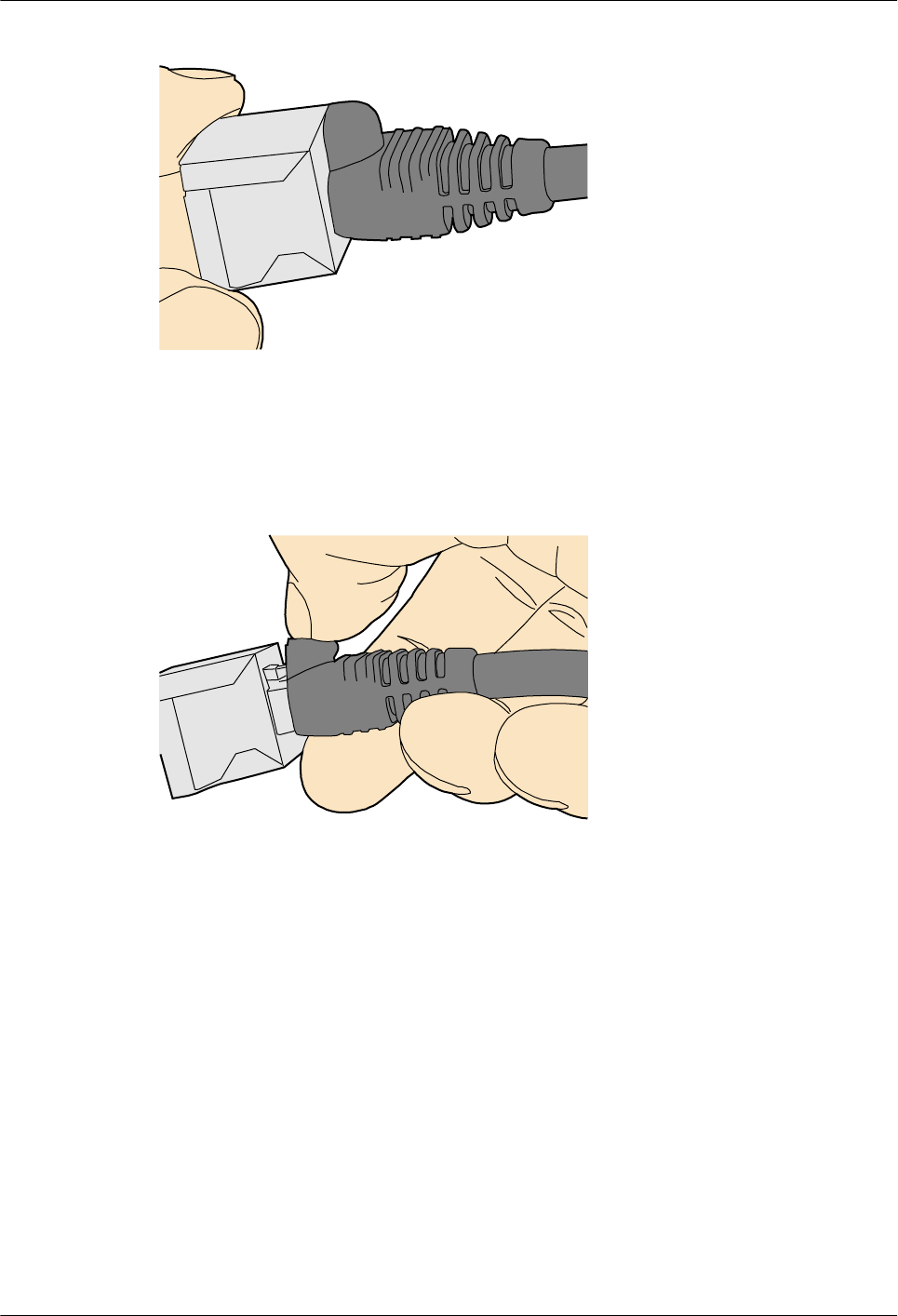
Figure 5-52 Installed shielded Ethernet connector
Step 4 To remove an Ethernet connector, press the locking key and pull out the connector, as shown
in Figure 5-53.
Figure 5-53 Removing a shielded Ethernet connector
----End
Installing an Unshielded Ethernet Connector
Procedure
Step 1 Hold the male and female connectors, with the male connector facing the female connector, as
shown in Figure 5-54.
AP2030DN
Hardware Installation and Maintenance Guide 5 Appendix
Issue 05 (2016-07-22) Huawei Proprietary and Confidential
Copyright © Huawei Technologies Co., Ltd.
56
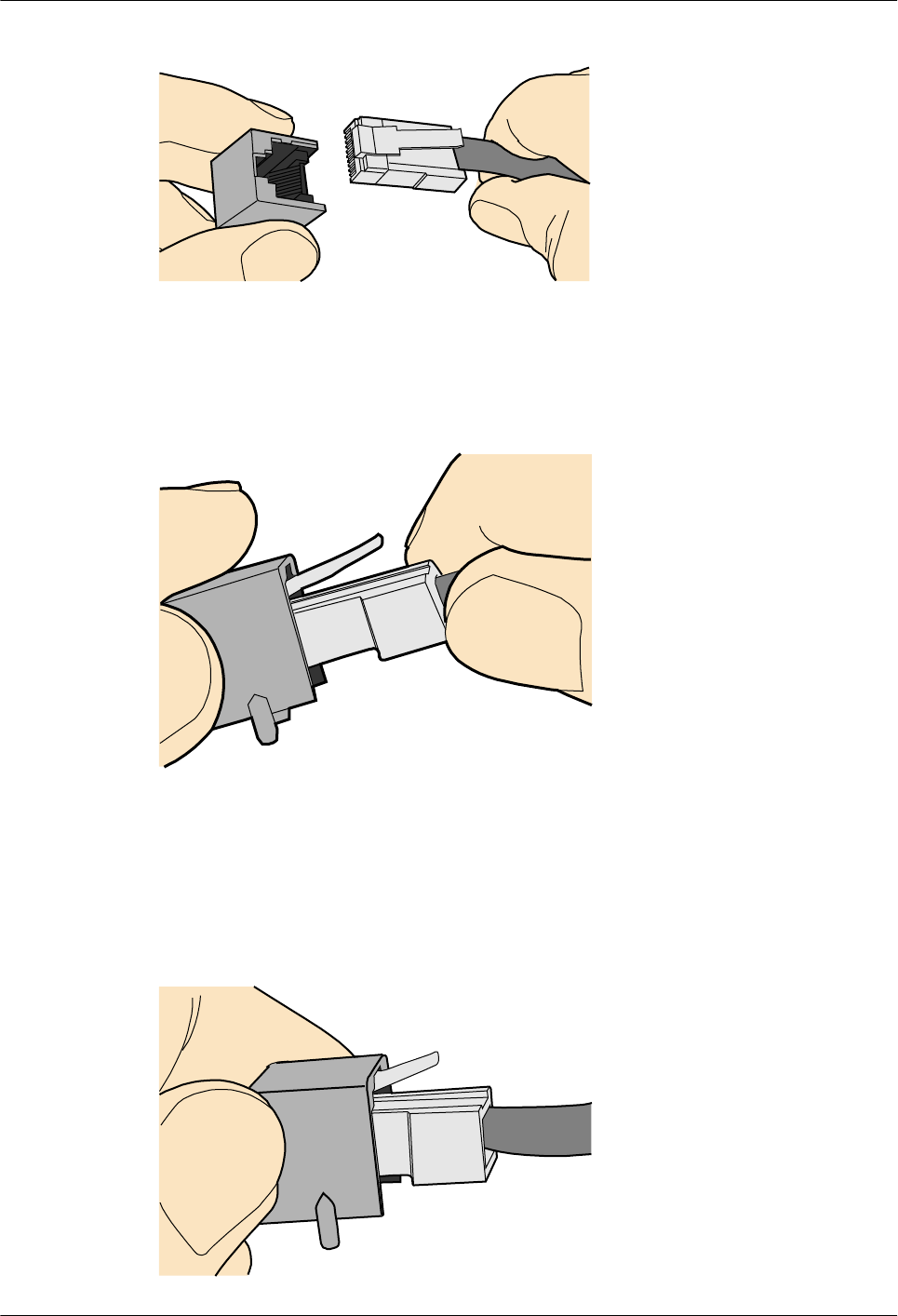
Figure 5-54 Holding the male and female unshielded connectors
Step 2 Feed the male connector into the female connector, as shown in Figure 5-55.
Figure 5-55 Feeding the male connector into the female unshielded connector
Step 3 A crisp click indicates that the connector is locked by the locking key. Pull the connector
slightly and ensure that it is securely connected. Figure 5-56 shows an installed Ethernet
connector.
Figure 5-56 Installed unshielded Ethernet connector
AP2030DN
Hardware Installation and Maintenance Guide 5 Appendix
Issue 05 (2016-07-22) Huawei Proprietary and Confidential
Copyright © Huawei Technologies Co., Ltd.
57
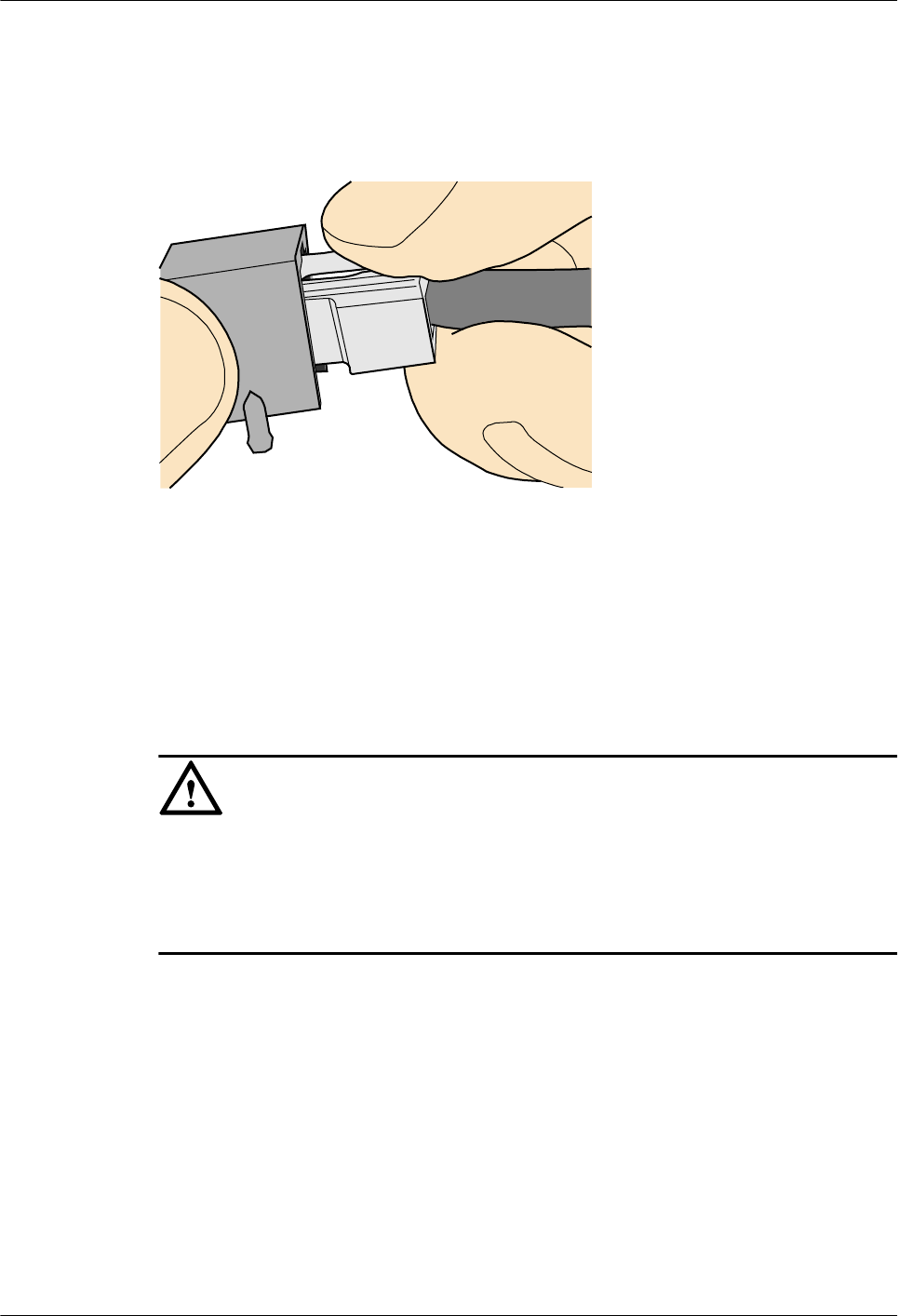
Step 4 To remove an Ethernet connector, press the locking key and pull out the connector, as shown
in Figure 5-57.
Figure 5-57 Removing an unshielded Ethernet connector
----End
Installing Fiber Connectors
Context
NOTICE
lAfter you remove the dustproof cap, ensure that the fiber pins are clean and install them as
soon as possible.
lWhen you disassemble fiber connectors, you must use a dedicated tool if the connectors
are densely installed.
Cleaning Fiber Connectors
Procedure
Step 1 Clean the pins of a fiber connector by using lint-free cotton and alcohol.
Step 2 Clean the pins again by using dust-free cotton. If necessary, clean the pins by using an air gun.
Ensure that the pins are free from any fiber or debris.
----End
Installing an FC Fiber Connector
AP2030DN
Hardware Installation and Maintenance Guide 5 Appendix
Issue 05 (2016-07-22) Huawei Proprietary and Confidential
Copyright © Huawei Technologies Co., Ltd.
58
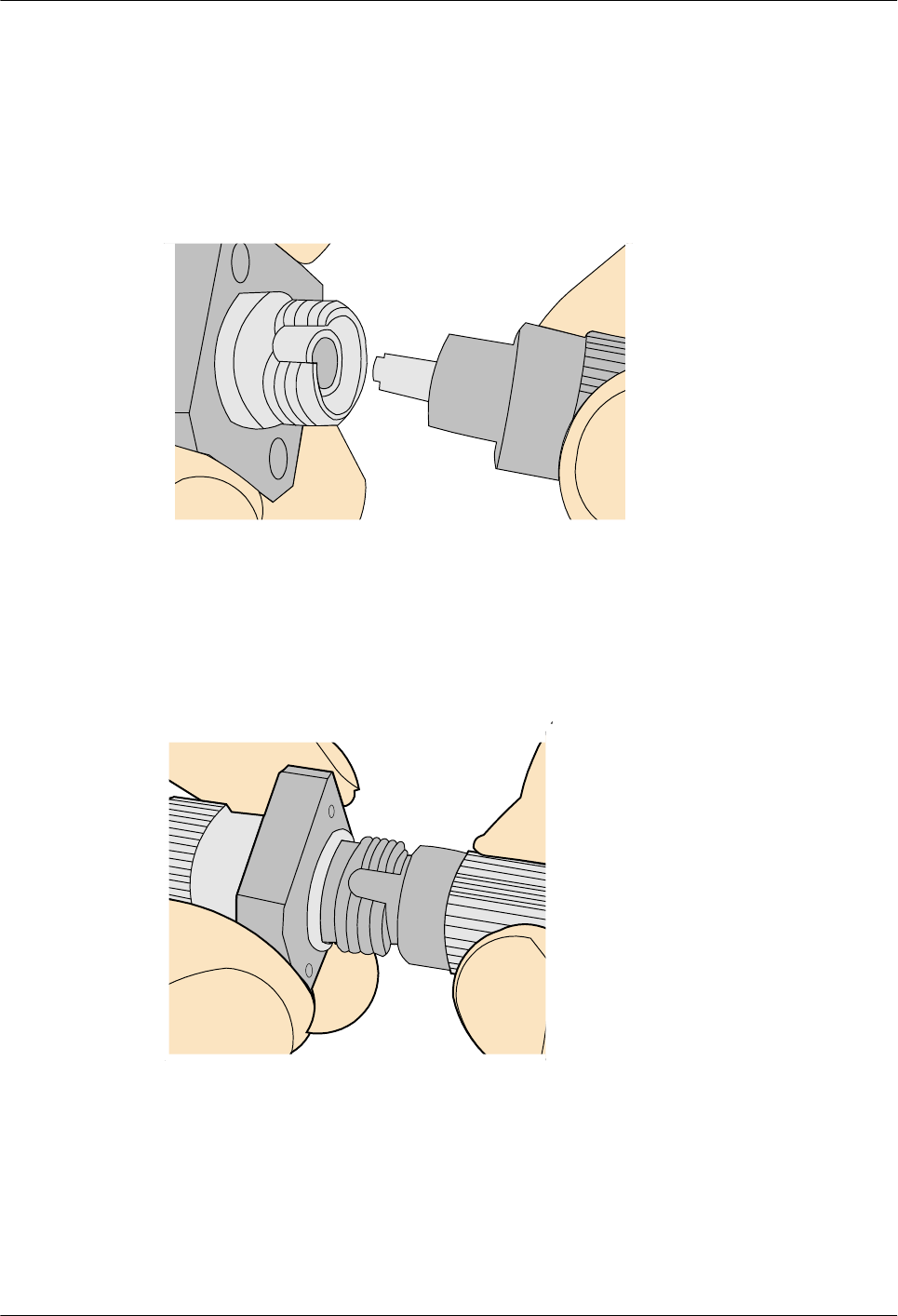
Procedure
Step 1 Remove the dustproof cap of the FC connector and store it for future use.
Step 2 Align the core pin of the male connector with that of the female connector, as shown in
Figure 5-58.
Figure 5-58 Aligning the male connector with the female connector
Step 3 Align the male connector with the female connector and gently push the male connector until
it is completely seated in the female connector, as shown in Figure 5-59.
Figure 5-59 Feeding the male connector into the female connector
Step 4 Fasten the locking nut clockwise and ensure that the connector is securely installed, as shown
in Figure 5-60.
AP2030DN
Hardware Installation and Maintenance Guide 5 Appendix
Issue 05 (2016-07-22) Huawei Proprietary and Confidential
Copyright © Huawei Technologies Co., Ltd.
59
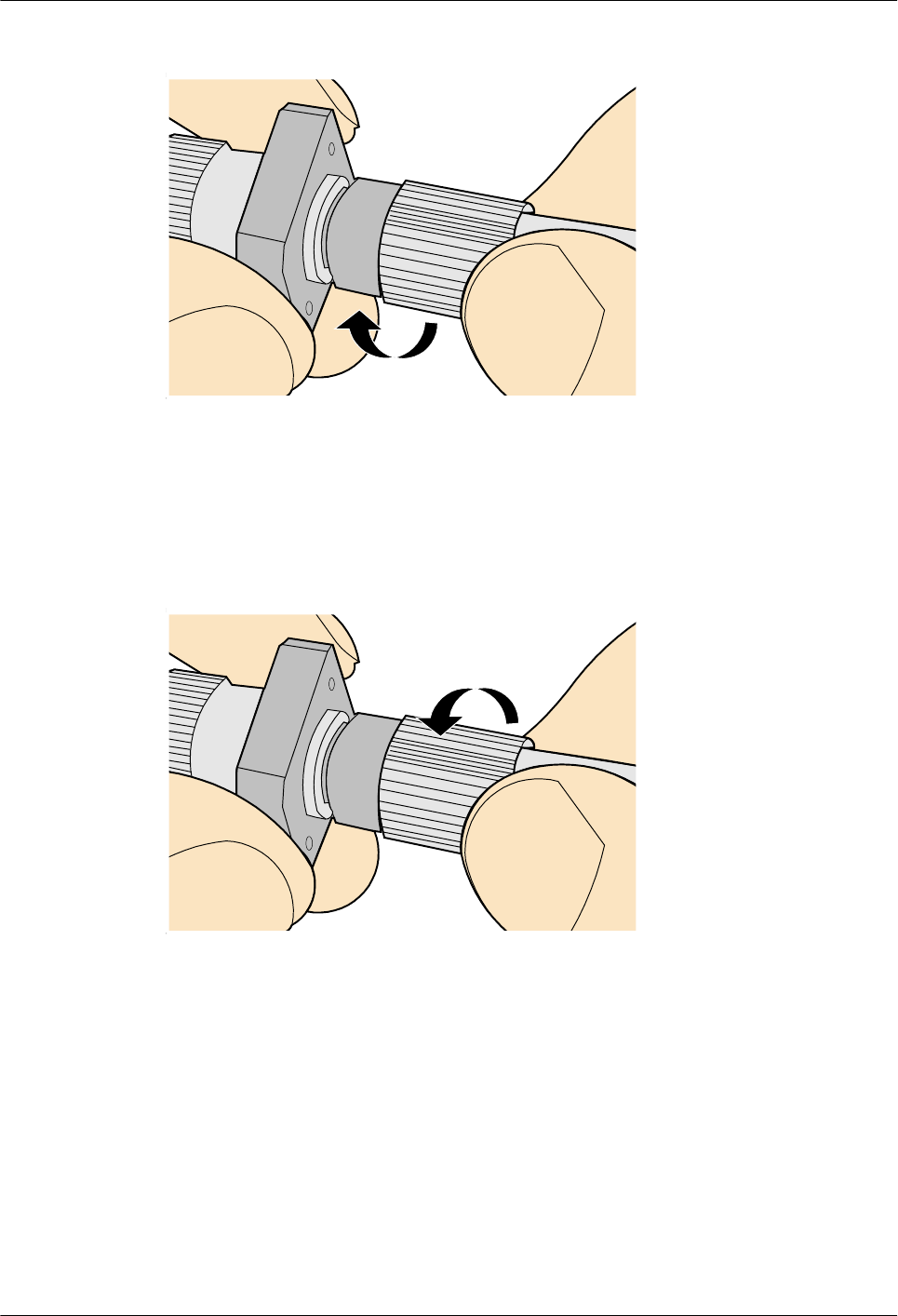
Figure 5-60 Fastening the locking nut
Step 5 To disassemble an FC fiber connector, loosen the locking nut counterclockwise, and gently
pull the male connector, as shown in Figure 5-61.
Figure 5-61 Disassembling an FC fiber connector
----End
Installing an LC Fiber Connector
Procedure
Step 1 Remove the dustproof cap of the LC fiber connector and store it for future use.
Step 2 Align the core pin of the male connector with that of the female connector, as shown in
Figure 5-62.
AP2030DN
Hardware Installation and Maintenance Guide 5 Appendix
Issue 05 (2016-07-22) Huawei Proprietary and Confidential
Copyright © Huawei Technologies Co., Ltd.
60
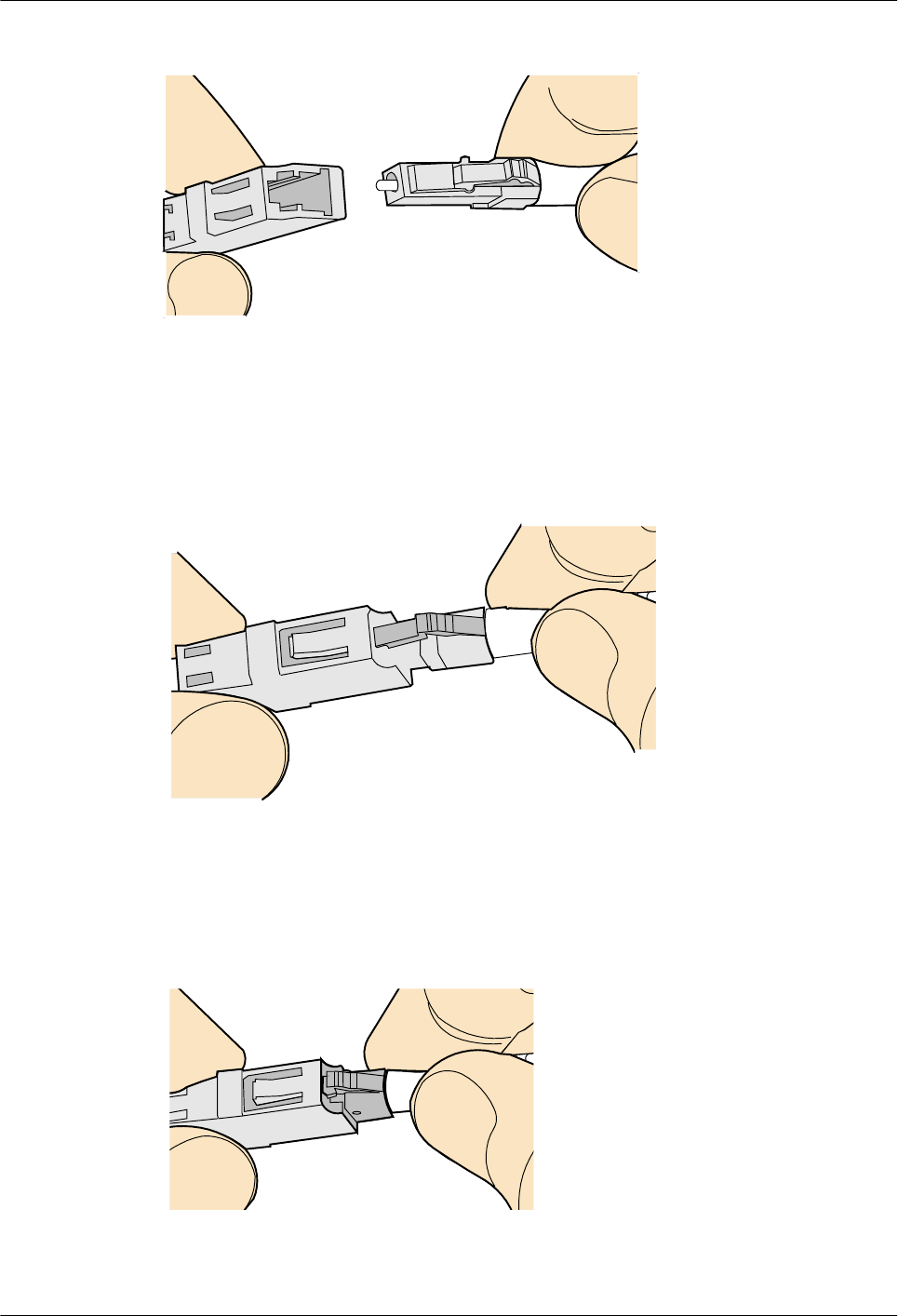
Figure 5-62 Aligning the male connector with the female connector
Step 3 Align the male connector with the fiber adapter and gently push the male connector until it is
completely seated in the fiber connector, as shown in Figure 5-63.
Figure 5-63 Feeding the male connector into the female connector
Step 4 A clicking sound indicates that the male connector is locked, as shown in Figure 5-64.
Figure 5-64 Installed LC connector
AP2030DN
Hardware Installation and Maintenance Guide 5 Appendix
Issue 05 (2016-07-22) Huawei Proprietary and Confidential
Copyright © Huawei Technologies Co., Ltd.
61
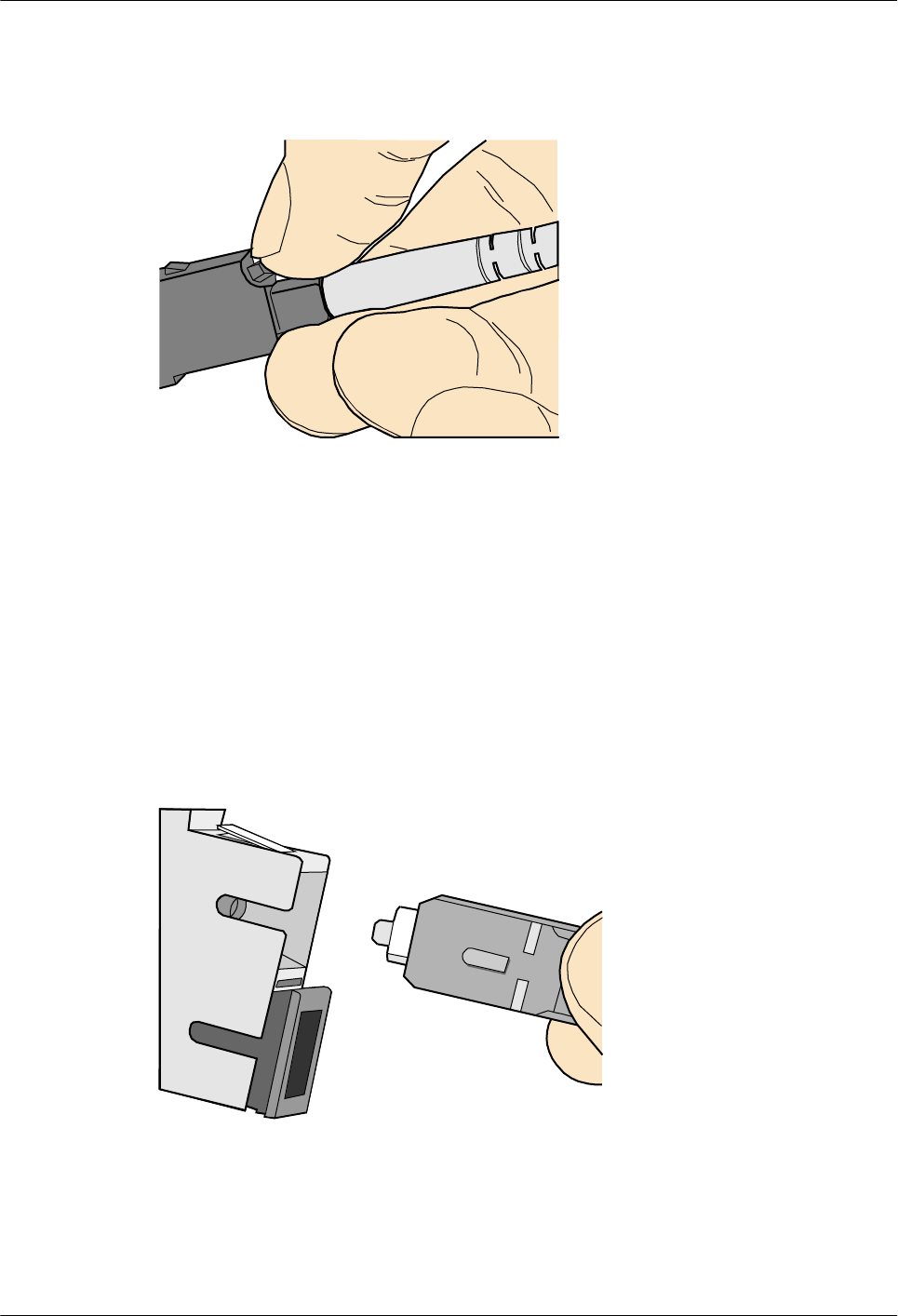
Step 5 To disassemble an LC fiber connector, press the locking nut to release the locking clips from
the bore, and gently pull the male connector, as shown in Figure 5-65.
Figure 5-65 Disassembling an LC fiber connector
----End
Installing the SC Fiber Connector
Procedure
Step 1 Remove the dustproof cap of the SC fiber connector and store it for future use.
Step 2 Align the core pin of the male connector with that of the female connector, as shown in
Figure 5-66.
Figure 5-66 Aligning the male connector with the female connector
Step 3 Feed the fiber connector into the female connector, with your fingers holding the shell of the
fiber connector (not the pigtail). When you hear a click, the fiber connector is secured by the
clips (internal parts, not illustrated in the figure). Pull the fiber connector gently. If the
connector does not loosen, the installation is complete. See Figure 5-67.
AP2030DN
Hardware Installation and Maintenance Guide 5 Appendix
Issue 05 (2016-07-22) Huawei Proprietary and Confidential
Copyright © Huawei Technologies Co., Ltd.
62
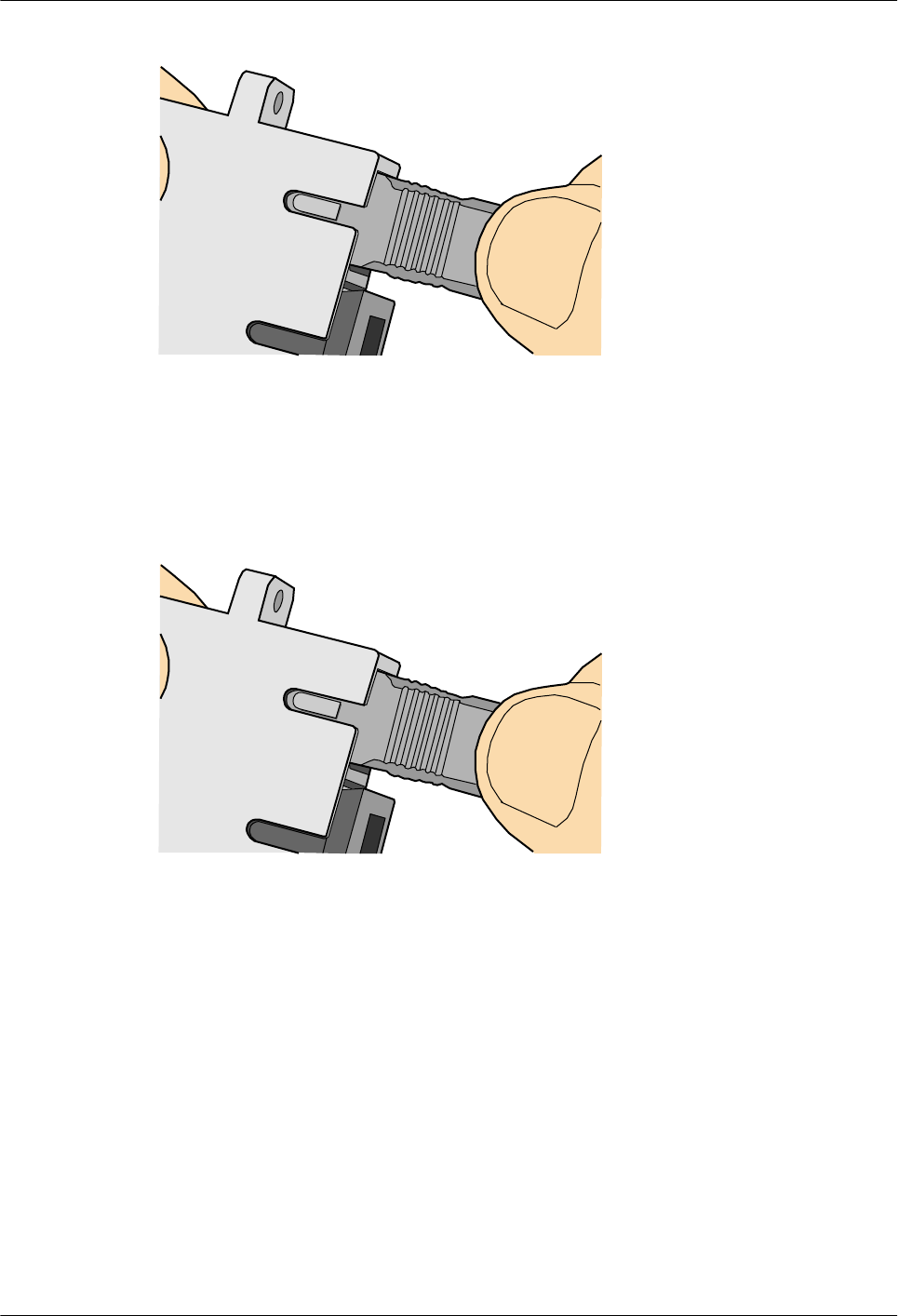
Figure 5-67 Installed SC fiber connector
Step 4 To disassemble an SC fiber connector, hold the shell of the connector (do not hold the fiber)
and gently pull the connector in the direction vertical to the adapter. Unlock the male
connector, and then separate it from the shell, as shown in Figure 5-68.
Figure 5-68 Disassembling an SC fiber connector
----End
Installing an MPO Connector
Procedure
Step 1 Remove the dustproof cap of the MPO fiber connector and store it for future use.
Step 2 Align the core pin of the male connector with that of the female connector, as shown in
Figure 5-69.
AP2030DN
Hardware Installation and Maintenance Guide 5 Appendix
Issue 05 (2016-07-22) Huawei Proprietary and Confidential
Copyright © Huawei Technologies Co., Ltd.
63
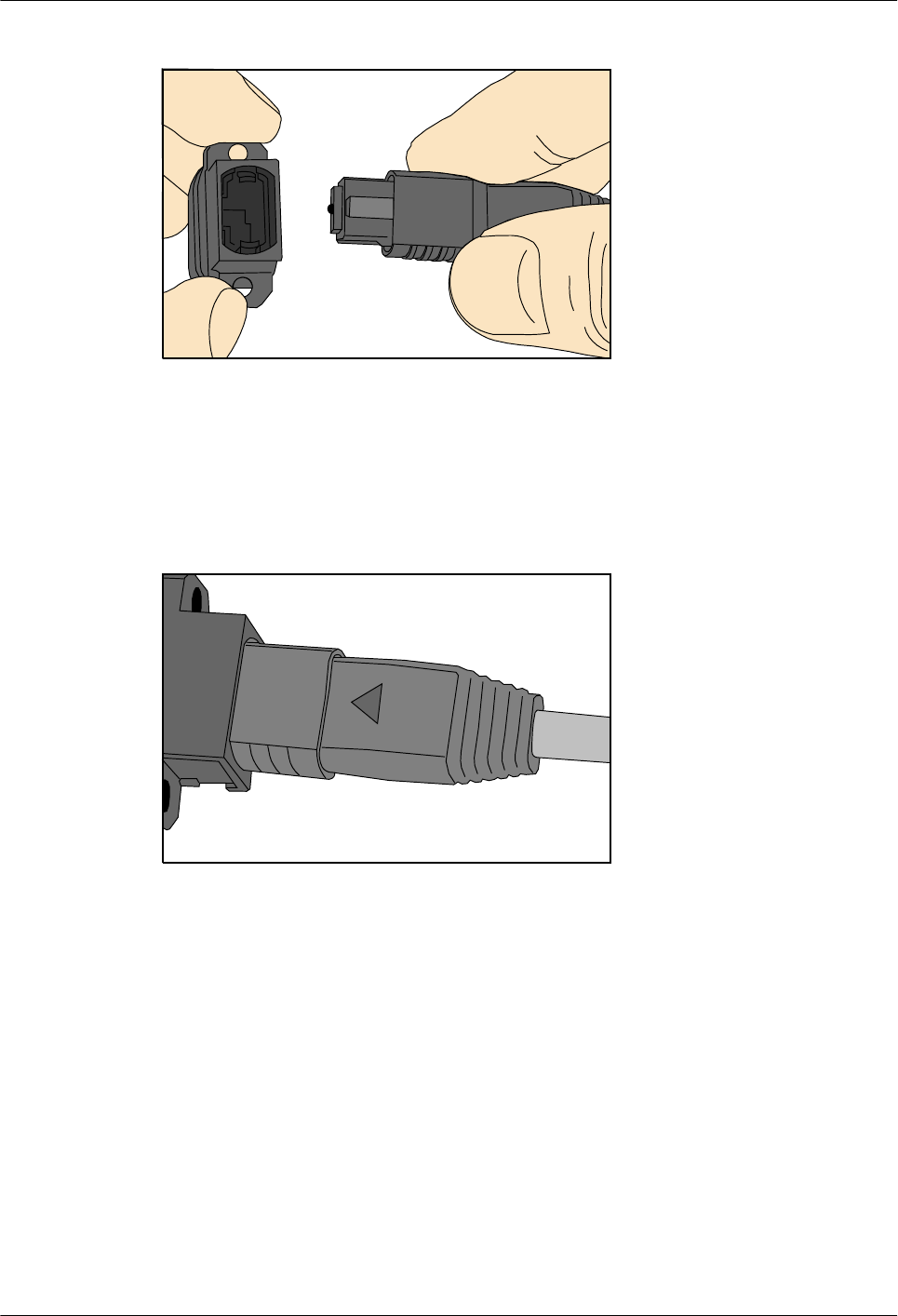
Figure 5-69 Aligning the male connector with the female connector
Step 3 Hold the shell labeled "PUSH" and feed the male connector into the female connector until
you hear a clicking sound. The male and female connectors are securely installed, as shown in
Figure 5-70.
Figure 5-70 Installed MPO fiber connector
Step 4 To disassemble an MPO fiber connector, hold the shell labeled "PULL" and remove the male
connector, as shown in Figure 5-71.
AP2030DN
Hardware Installation and Maintenance Guide 5 Appendix
Issue 05 (2016-07-22) Huawei Proprietary and Confidential
Copyright © Huawei Technologies Co., Ltd.
64
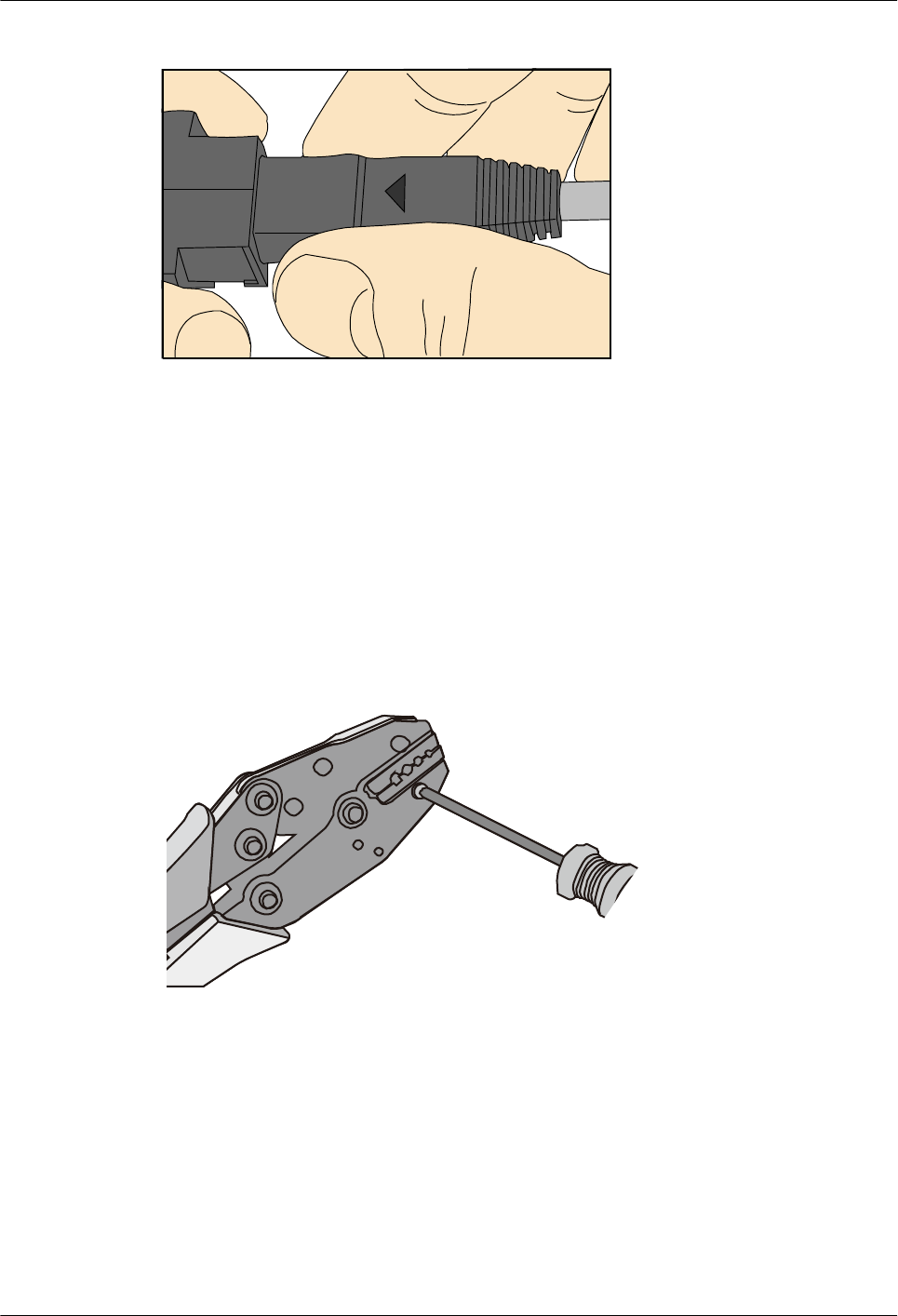
Figure 5-71 Disassembling an MPO fiber connector
----End
5.1.5 Replacing the Mold of the Crimping Tool
Procedure
Step 1 Hold the handles of a pair of COAX crimping tools. Loosen the two fastening screws
counterclockwise, as shown in Figure 5-72.
Figure 5-72 Loosening two fastening screws
Step 2 Hold the handles of the COAX crimping tools to open the self-locking mechanism. The jaw
of the COAX crimping tools opens automatically, as shown in Figure 5-73.
AP2030DN
Hardware Installation and Maintenance Guide 5 Appendix
Issue 05 (2016-07-22) Huawei Proprietary and Confidential
Copyright © Huawei Technologies Co., Ltd.
65
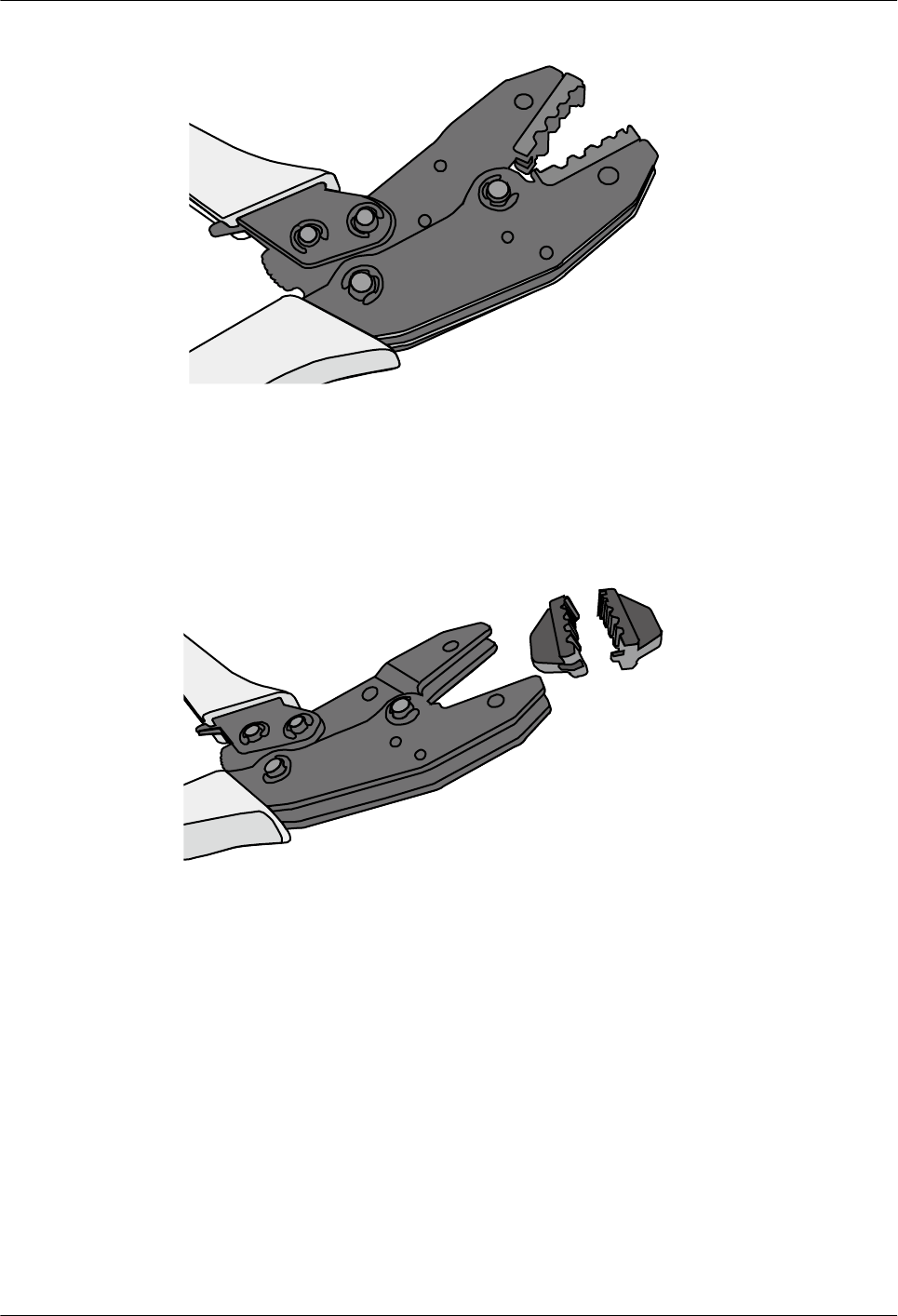
Figure 5-73 Pliers jaw opening automatically
Step 3 Remove the mold from the COAX crimping tools, as shown in Figure 5-74.
Figure 5-74 Removing the mold from the COAX crimping tools
Step 4 Place the mold to be installed into the jaw of the COAX crimping tools and align the screw
holes, as shown in Figure 5-75.
AP2030DN
Hardware Installation and Maintenance Guide 5 Appendix
Issue 05 (2016-07-22) Huawei Proprietary and Confidential
Copyright © Huawei Technologies Co., Ltd.
66
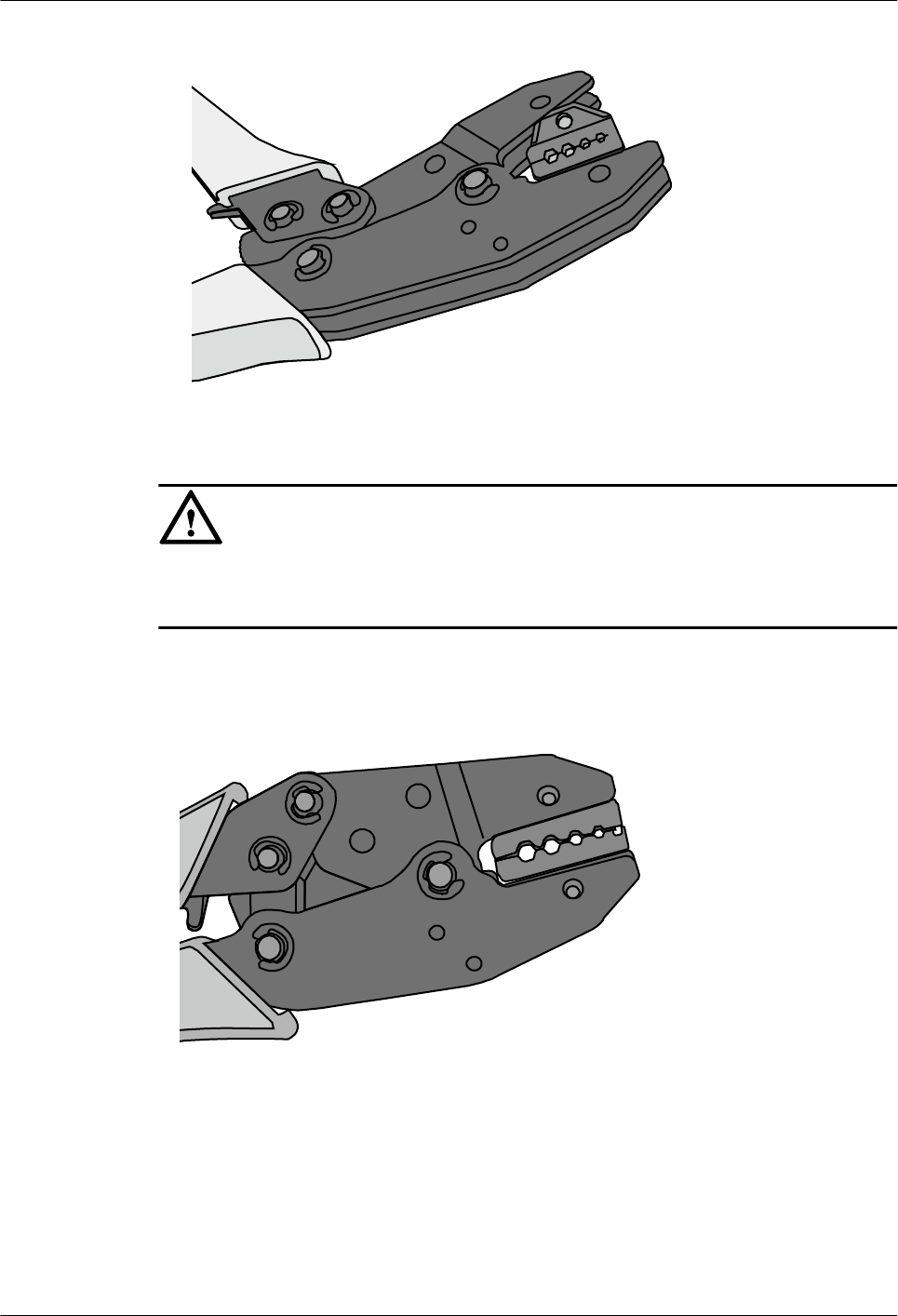
Figure 5-75 Installing a new mold in the COAX crimping tool
NOTICE
Keep the short side of the mold inwards and the long side outwards, with the teeth of the mold
aligning from the larger size to the smaller size.
Step 5 Hold the handles of the COAX crimping tools tightly to match the mold and the jaw
completely. Align the screw holes, as shown in Figure 5-76.
Figure 5-76 Aligning the screw holes
Step 6 Hold the handles of the COAX crimping tools with one hand. Tighten the two fastening
screws clockwise. Figure 5-77 and Figure 5-78shows the mold installed in the COAX
crimping tool.
AP2030DN
Hardware Installation and Maintenance Guide 5 Appendix
Issue 05 (2016-07-22) Huawei Proprietary and Confidential
Copyright © Huawei Technologies Co., Ltd.
67
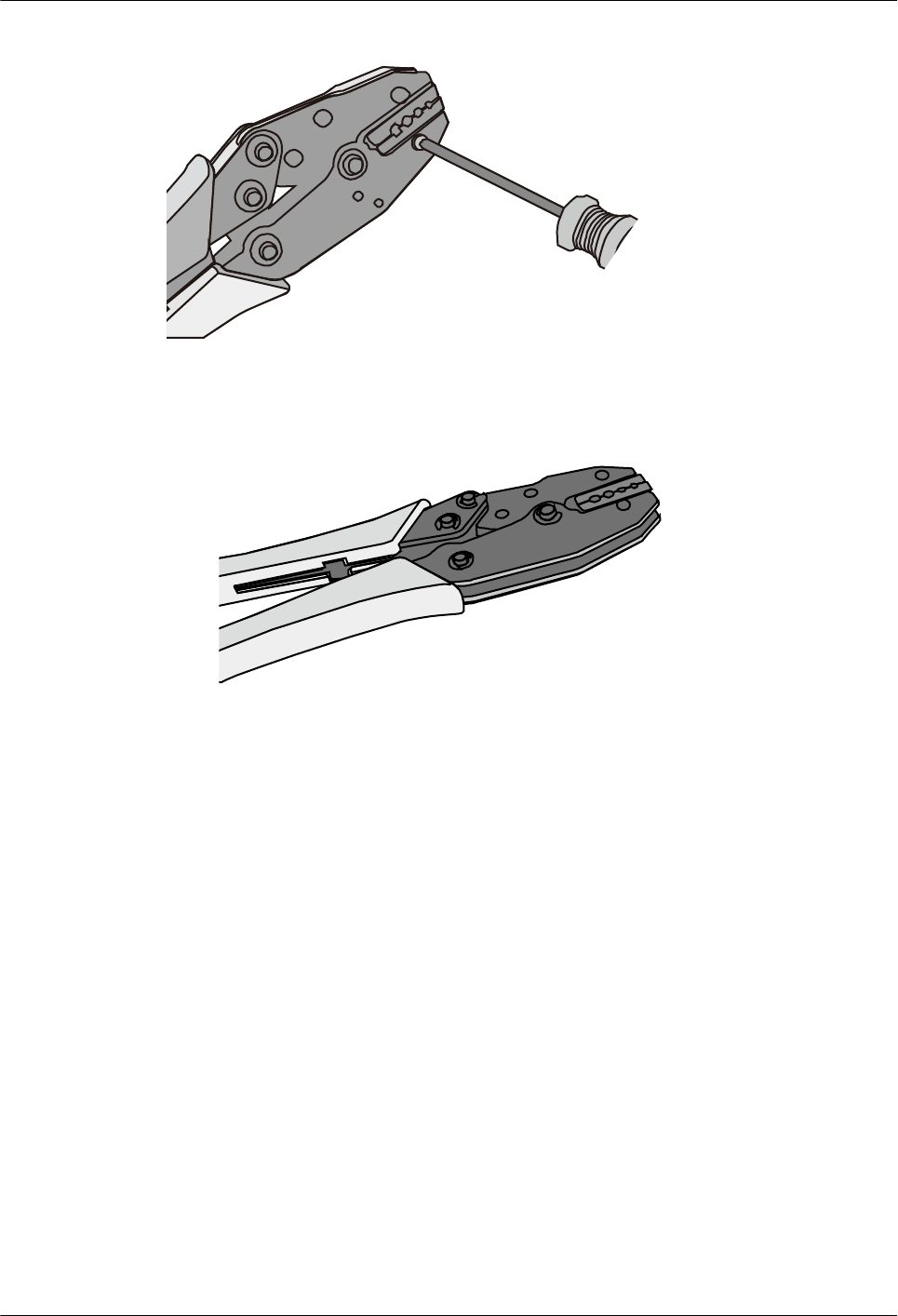
Figure 5-77 Mold installed in the COAX crimping tool
Figure 5-78 An installed mold
----End
5.2 Environmental Requirements for Device Operation
5.2.1 Environmental Requirements for an Equipment Room
Requirements for Selecting a Site for an Equipment Room
When designing a project, consider the communication network planning and technical
requirements of the equipment. Also consider hydrographic, geological, seismic, power
supply, and transportation factors.
Construction, structure, heating and ventilation, power supply, lighting and fire-proof
construction of the equipment room should be designed by specialized construction designers
to suit the environmental requirements of devices. The equipment room should also follow
local regulations concerning the industrial construction, environmental protection, fire safety,
and civil air defense. Construction must conform to government standards, regulations, and
other requirements.
AP2030DN
Hardware Installation and Maintenance Guide 5 Appendix
Issue 05 (2016-07-22) Huawei Proprietary and Confidential
Copyright © Huawei Technologies Co., Ltd.
68

The equipment room should be located in a place free from high temperature, dust, toxic
gases, explosive materials, or unstable voltage. Keep the equipment room away from
significant vibrations or loud noises, as well as power transformer stations.
The specific requirements for selecting a site for an equipment room are as follows:
lThe room should be located at a distance of at least 5 km (3.11 mi.) from heavy pollution
sources such as smelting and coal mines. It should be located at a distance of at least 3.7
km (2.30 mi.) from moderate pollution sources such as chemical, rubber, and
galvanization factories. It should be located at a distance of at least 2 km (1.24 mi.) from
light pollution sources such as packinghouses and tanyards. If these pollution sources
cannot be avoided, ensure that the equipment room is upwind of the pollution sources. In
addition, use a high-quality equipment room or protection products.
lThe room should be located away from livestock farms, or be upwind of the livestock
farms. Do not use an old livestock room or fertilizer warehouse as the equipment room.
lThe equipment room must be far away from residential areas. An equipment room that is
not far away from residential areas must comply with equipment room construction
standards to avoid noise pollution.
lThe room should be located far away from industrial and heating boilers.
lThe room should be at least 3.7 km (2.30 mi.) away from the seaside or salt lake.
Otherwise, the equipment room should be airtight with cooling facilities. In addition,
alkalized soil cannot be used as the construction material. Otherwise, equipment suitable
for wet conditions must be used.
lThe doors and windows of the equipment room must be kept closed to maintain an
airtight room.
lUsing steel doors to ensure sound insulation is recommended.
lNo cracks or openings are allowed on the walls or floors. The outlet holes on the walls or
windows must be sealed. Walls must be constructed such that they are smooth, wear-
resistant, dustproof, flame retardant, sound insulated, heat absorptive, and have
electromagnetic shielding.
lThe air vent of the room should be far from the exhaust of city waste pipes, big cesspools
and sewage treatment tanks. The room should be in the positive pressure state to prevent
corrosive gases from entering the equipment room and corroding components and circuit
boards.
lIt is recommended that the room be on or above the second floor. If this requirement
cannot be met, the ground for equipment installation in the room should be at least 600
mm (23.62 in,) above the maximum flood level.
lThe equipment room should be strong enough to resist winds and downpours.
lThe room should be located away from dusty roads or sand. If this is unavoidable, the
doors and windows of the equipment room must not face pollution sources.
lDo not place air conditioning vents near the equipment so that they blow directly on the
equipment because condensation may be blown into the equipment.
lDo not use decorative materials that contain sulfur in the equipment room.
Equipment Room Layout
An equipment room usually contains mobile switching equipment, telecommunications
equipment, power supply equipment, and other auxiliary equipment. To ensure easy
maintenance and management, place the equipment in different rooms. Figure 5-79 shows the
layout of the equipment room.
AP2030DN
Hardware Installation and Maintenance Guide 5 Appendix
Issue 05 (2016-07-22) Huawei Proprietary and Confidential
Copyright © Huawei Technologies Co., Ltd.
69
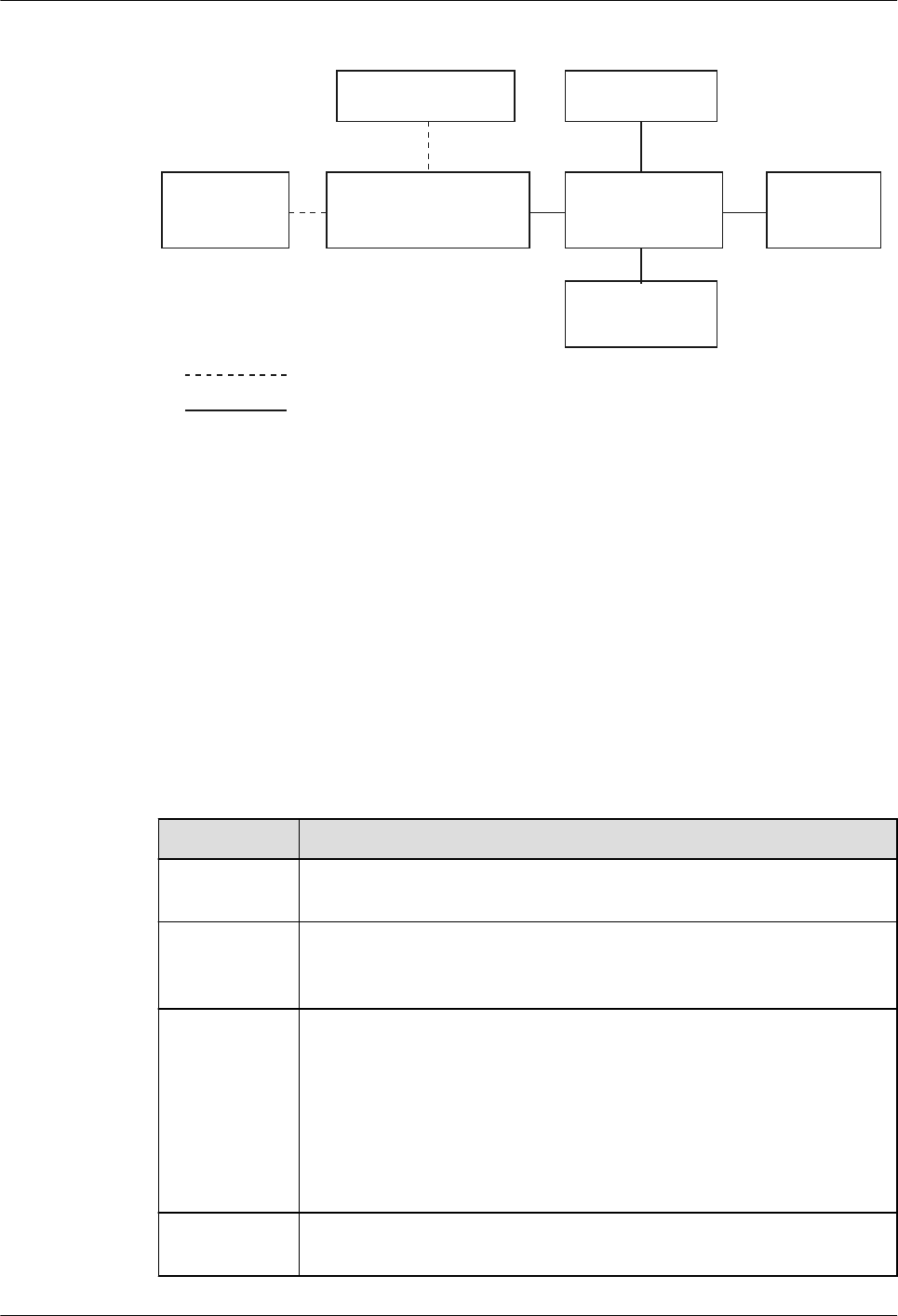
Figure 5-79 Layout of the equipment room
Control room Generator room
Transmission
room
Main communication
equipment room
Power distribution
room Battery room
Substation room
Communication cable and optical cable
Power cable
The general layout principles of the equipment room are as follows:
lIt should meet requirements for laying out and maintaining communication cables and
power cables.
lIt should reduce the cabling distance, which facilitates cable maintenance, reduces
potential communication faults, and maximizes efficiency.
Construction Requirements for the Equipment Room
Table 5-10 describes the construction requirements for the equipment room.
Table 5-10 Construction requirements for the equipment room
Item Requirements
Area The smallest area of the equipment room can accommodate the
equipment with the largest capacity.
Net height The minimum height of the equipment room should not be less than 3 m
(9.84 ft). The minimum height of the equipment room is the net height
below overhead beams or ventilation pipes.
Floor The floor in the equipment room should be semi-conductive and
dustproof. A raised floor with an ESD covering is recommended. Cover
the raised floor tightly and solidly. The horizontal tolerance of each
square meter should be less than 2 mm (0.08 in.). If raised floors are
unavailable, use a static-electricity-conductive floor material, with a
volume resistivity of 1.0 x 107 ohms to 1.0 x 1010 ohms. Ground this
floor material or raised floor. You can connect them to ground using a
one megohm current-limiting resistor and connection line.
Load-bearing
capacity
The floor must bear loads larger than 150 kg/m2 (0.21 bf/in.2).
AP2030DN
Hardware Installation and Maintenance Guide 5 Appendix
Issue 05 (2016-07-22) Huawei Proprietary and Confidential
Copyright © Huawei Technologies Co., Ltd.
70
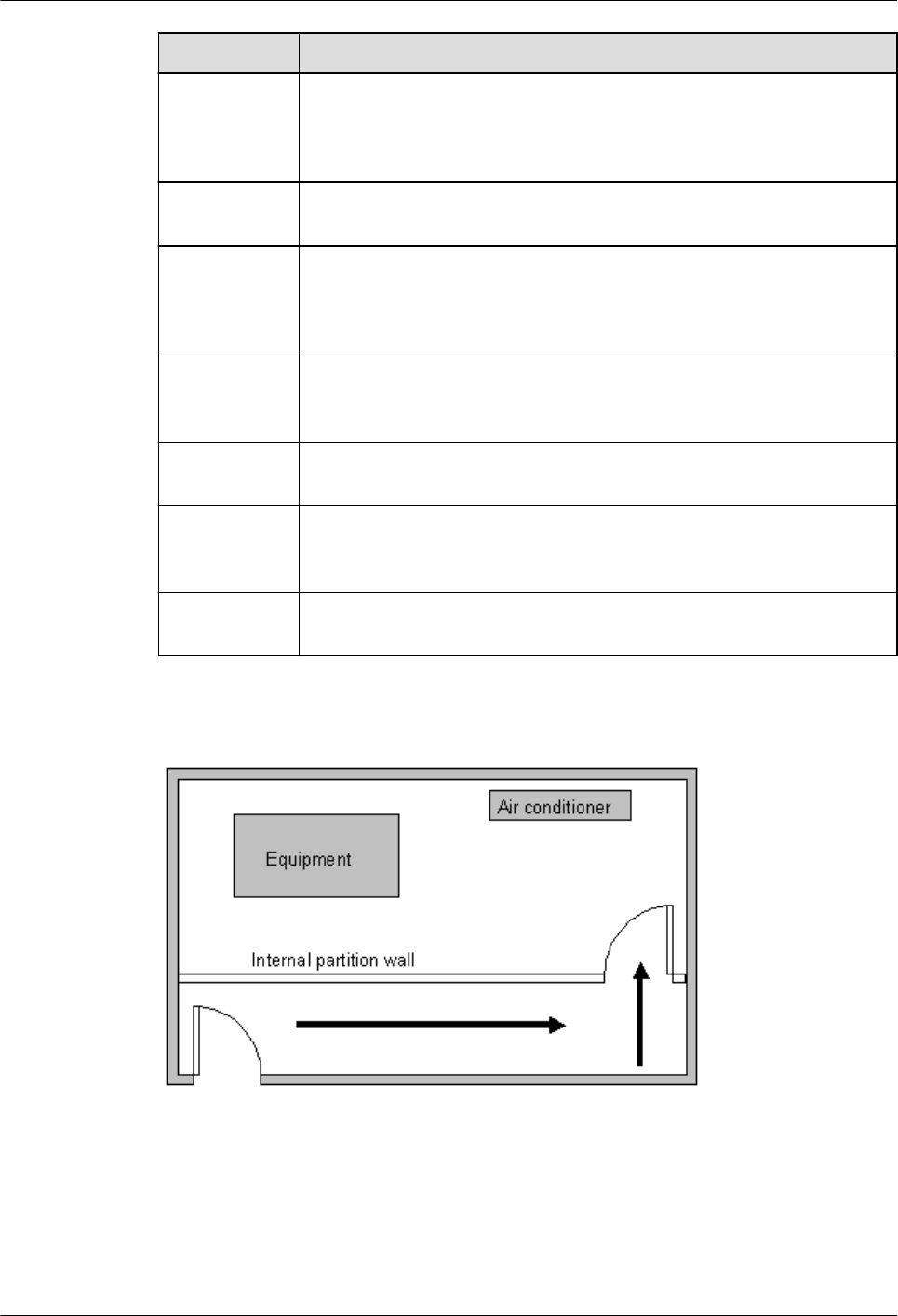
Item Requirements
Door and
windows
The door of the equipment room should be 2 m (6.56 ft) high and 1 m
(3.28 ft) wide. One door is enough. Seal the doors and windows with
dustproof plastic tape. Use double-pane glass in the windows and seal
them tightly.
Wall surface
treatment
Paste wallpaper on the wall or apply flat paint. Do not use pulverized
paint.
Cable trays Use cable trays to arrange cables. The inner faces of the cable trays must
be smooth. The reserved length and width of the cable trays, and the
number, position and dimensions of the holes must comply with the
requirements of device arrangement.
Water pipe Do not pass service pipes, drainpipes, and storm sewers through the
equipment room. Do not place a fire hydrant in the equipment room, but
place it in the corridor or near the staircase.
Internal
partition wall
Separate the area where the equipment is installed from the equipment
room door. The partition wall can block some outside dust.
Installation
position of the
air conditioner
Install air conditioner vents so that the air does not blow directly on
equipment.
Other
requirements
Avoid the proliferation of mildew, and keep out rodents (like mice).
Figure 5-80 Internal partition wall inside the equipment room
Equipment Room Environment
Dust on devices may cause electrostatic discharge and result in poor contact for connectors or
metal connection points. This problem can shorten the life span of devices and cause faults.
AP2030DN
Hardware Installation and Maintenance Guide 5 Appendix
Issue 05 (2016-07-22) Huawei Proprietary and Confidential
Copyright © Huawei Technologies Co., Ltd.
71

The equipment room must be free from explosive, conductive, magnetically-permeable, and
corrosive dust. Table 5-11 lists the requirement for dust concentration in the equipment room.
Table 5-11 Requirements for dust particles in the equipment room
Mechanical active
material
Unit Concentration
Dust particle Particle /m3≤ 3x 104
(no visible dust accumulated
on a workbench in three
days)
Suspending dust mg/m3≤0.2
Precipitable dust mg/m2·h ≤1.5
Description
lDust particle diameter ≥ 5 µm
lSuspending dust diameter ≤ 75 µm
l75 µm ≤ precipitable dust diameter ≤ 150 µm
Take the following measures to meet the requirements:
lUse dustproof materials for ground, wall, and ceiling construction.
lUse screens on the door and windows facing outside. The outer windows should be dust-
proof.
lClean the equipment room regularly and clean the air filter monthly.
lWear shoe covers and ESD clothing before entering the equipment room.
Requirements for Corrosive Gases
The room should be free from dusts and corrosive gases, such as SO2, H2S, and NH3. Table
5-12 lists the requirements for the corrosive gas concentration.
Table 5-12 Requirements for corrosive gas concentration
Chemical active
material Unit Concentration
SO2mg/m3≤0.20
H2Smg/m3≤0.006
NH3mg/m3≤0.05
Cl2mg/m3≤0.01
Take the following measures to meet the requirements:
AP2030DN
Hardware Installation and Maintenance Guide 5 Appendix
Issue 05 (2016-07-22) Huawei Proprietary and Confidential
Copyright © Huawei Technologies Co., Ltd.
72

lAvoid constructing the room near a place where the corrosive gas concentration is high,
such as a chemical plant.
lEnsure the air intake vent of the room is in the prevailing upwind direction from any
pollution source.
lPlace batteries in different rooms.
lA professional service should monitor the corrosive gas conditions regularly.
Requirements for ESD Prevention
The absolute value of electrostatic voltage must be less than 1000 V.
Take the following measures to meet this requirement:
lTrain operators about ESD prevention.
lKeep the correct humidity level in the equipment room to reduce the impact of static
electricity.
lLay out an ESD floor in equipment rooms.
lWear ESD shoes and clothing before entering equipment room.
lUse ESD tools, such as wrist straps, tweezers, and pullers.
lGround all conductive materials in the room, including computer terminals. Use ESD
worktables.
lKeep non-ESD materials (such as common bags, foam, and rubber) at least 30 cm (11.81
in.) away from boards and ESD-sensitive components.
Electromagnetism Requirements for the Equipment Room
All interference sources, inside or outside the equipment room, can cause equipment problems
with capacitive coupling, inductive coupling, electromagnetic wave radiation, and common
impedance (including grounding system) coupling. Prevent the interference using these
approaches:
lTake effective measures against electrical interference from the power supply system.
lDo not use the working ground of the equipment as the same ground for surge
protection. Separate them as far as possible.
lKeep the equipment far away from high-power radio transmitters, radar units, and high-
frequency and high-current equipment.
lUse electromagnetic shielding if necessary.
Requirements for Lightning Proof Grounding
Table 5-13 lists the requirements for lightning proof grounding.
Table 5-13 Requirements for lightning proof grounding
Item Requirements
Capital
construction
lUse reinforced concrete to construct the equipment room.
lInstall a lightning proof device like a lightning rod outside the room.
lThe lightning proof ground shares the same grounding body with
the protective ground of the room.
AP2030DN
Hardware Installation and Maintenance Guide 5 Appendix
Issue 05 (2016-07-22) Huawei Proprietary and Confidential
Copyright © Huawei Technologies Co., Ltd.
73

Item Requirements
Power cables
leading in the
equipment room
need to be
equipped with a
surge protector
lAfter the low-voltage power cables are led into the room, install the
surge protector for the power cables in the AC voltage stabilizer and
the AC power distribution panel (box). Correctly ground the surge
protector nearby.
lFor an equipment room in urban area, install a power supply surge
protector with the nominal discharge current of no less than 20 kA.
For an equipment room that is built in a suburb and subject to
lightning strikes, install a power supply surge protector with the
nominal discharge current of more than 60 kA. For an equipment
room that is built in a mountain area and subject to frequent
lightning strikes, or in a separate high-rise building in a city, install a
power supply surge protector with the nominal discharge current of
more than 100 kA.
lThe ground cable of the surge protector should be no longer than 1
m (3.28 ft).
Grounding for
DC power
distribution
lConnect the DC working ground (positive pole of the -48 V DC
power supply or the negative pole of the 24 V DC power supply)
with the indoor collective ground cable nearby. The total ground
cable should meet the maximum load of the equipment.
lThe power equipment must have a DC working ground cable, which
can connect the power equipment to the collective ground cable of
the telecommunication site (or the protective ground bar of the
equipment room).
Equipotential
connection
lProperly ground the devices and auxiliary devices in the room such
as mobile base station, transmission, switching equipment, power
supply equipment, and cable distribution frame. Connect all PGND
cables to the collective protective ground bar. Connect all PGND
cables in one equipment room to one protective ground bar.
lApply joint grounding to the working ground and protective ground
of devices, which means the two share one grounding network.
lThe cable tray, rack or shell, metal ventilation pipe, metal door or
window of the equipment should be grounded for protection.
General
requirements for
grounding
lDo not connect the neutral line of the AC power cable with the
protective ground of any telecom equipment in the equipment room.
lDo not install a fuse or switch on the ground cable.
lAll ground cables should be as short as possible, and arranged in a
straight line.
Grounding
resistance
lThe grounding resistance must be lower than 1 ohm.
lThe upper end of the grounding body should be at least 0.7 m (2.30
ft) over the ground. In cold areas, bury the grounding body below
the frozen ground.
lMeasure the grounding resistance periodically to ensure effective
grounding.
AP2030DN
Hardware Installation and Maintenance Guide 5 Appendix
Issue 05 (2016-07-22) Huawei Proprietary and Confidential
Copyright © Huawei Technologies Co., Ltd.
74

Item Requirements
Routing of
signal cable
lDo not arrange the signal cables overhead in the equipment room.
All signal cables must be led into the site underground.
lUse the cables with a metal jacket or place them into a metal pipe if
they come out/in the equipment room.
lGround the idle lines inside the cable in the equipment room.
lSignal cables should be deployed on internal walls. Do not deploy
outdoor aerial cables.
lKeep signal cables away from power cables and surge protection
devices.
Collective
ground cable
lUse a ground ring or ground bar for the collective ground cable.
lDo not use aluminum cables as ground cables. Adopt measures to
prevent electrification corrosion when connecting different metal
parts together.
lUse a copper busbar as the collective ground cable with a cross-
sectional area of no less than 120 mm2 (0.19 in.2), or use the
galvanized flat steel of the same resistance. Insulate the collective
ground cable from the reinforcing steel bars of the building.
Grounding lead-
in
The grounding lead-in should be a maximum of 30 m (98.42 ft) long.
Use the galvanized flat steel with cross-sectional area of 40 mm x 4
mm (1.58 in. x 0.158 in.) or 50 mm x 5 mm (1.97 in. x 0.197 in.).
AP2030DN
Hardware Installation and Maintenance Guide 5 Appendix
Issue 05 (2016-07-22) Huawei Proprietary and Confidential
Copyright © Huawei Technologies Co., Ltd.
75

Item Requirements
Grounding of the
cabinet
lAll the devices including the surge protection device in the cabinet
must be connected in an equipotential manner. The ground cables
can be aggregated to the ground bar or surge protector socket first,
and then the ground bar or surge protector socket can be connected
to the ground.
lThe resistance between the device ground terminals and ground bar
cannot exceed 0.1 ohm.
lThe cabinet can be grounded using the protecting earthing (PE) wire
of the electrical network in the building, zinc-coated angle steel, or
the main steel bar of the building.
lIf the cabinet is grounded using the PE wire of the electrical
network, use a multimeter to test the grounding status. If the voltage
between the PE wire and neutral wire is lower than 5 V and the
voltage between the PE wire and live wire is about 220 V, the PE
wire is grounded well. If the tested AC voltages are not within the
ranges, the cabinet must be grounded in other ways.
lThe yellow-green ground cable contains multiple copper wires. The
cross-sectional area of the ground cable must be no less than 6 mm2
(0.0093 in.2) and the length cannot exceed 3 m (9.84 ft.).
lGround cables cannot be twisted with signal cables.
lAntirust and anticorrosion measures must be taken on the ground
terminals.
lThe fiber reinforcing rib can be directly connected to the ground bar
of the cabinet. Before wrapping the reinforcing rib with insulation
tape, cut a 0.5 m (1.64 ft.) segment from the reinforcing rib. Wrap
the reinforcing rib with at least five layers of insulation tape. Keep
the reinforcing rib at least 5 cm (1.969 in.) from the cabinet surface.
5.2.2 Requirements for Power Supply
Requirements for AC Power Supply
An AC power supply system consists of power mains, uninterruptible power supplies (UPSs),
and self-supplied electric generators. In addition to meeting the requirements of the server
load, the AC power supply must have a simple connection line, safe operation, flexible
scheduling, and easy maintenance.
The low-voltage power supply should be 3-phase, 5-wire mode or monophase 3-wire mode.
This AC power supply should be 110 V/220 V, with a frequency of 50 Hz.
The UPS should supply the same power and operate at the same phase as the power mains.
The switching time between the UPS and mains should be less than 10 ms; otherwise, the
networking devices will reboot or reset.
For power distribution capacity in the equipment room, both the working current and fault
current of the devices should be considered. Ensure that independent AC power supplies
AP2030DN
Hardware Installation and Maintenance Guide 5 Appendix
Issue 05 (2016-07-22) Huawei Proprietary and Confidential
Copyright © Huawei Technologies Co., Ltd.
76

protect independent devices. Configure the current-carrying capacity of the protection switch
of the equipment room for more than that of the devices.
Table 5-14 lists the voltage range of the AC power supply for the devices.
Table 5-14 Voltage range of AC power supply
Item Requirements
AC power capacity to
support the devices
-10% to +5% of the rated voltage
AC power capacity to
support the power modules
and important buildings
-15% to +10% of the rated voltage
Frequency of alternating
current
-4% to +4% of the rated value
Voltage wave shape sine
distortion
Within 5% of the rated voltage
The automated electric generator must have a standard interface that supports
telecommunication protocols, remote telecommunication, monitoring, and control.
AC power cables should meet the following specifications:
lAC neutral should have a conductor with the same cross section as the phase line.
lAC cables should have non-flammable insulation. The layout of AC cables should
comply with local regulations. Low-voltage power distribution rooms should comply
with local regulations.
Recommendations for AC Power Supply
The following are recommendations for the AC power supply.
lIf the voltage of the power mains that supply power directly to devices exceeds the rated
voltage by -10% to 5%, or exceeds the voltage range that devices can support, a voltage
regulating device or voltage stabilizing device is required.
lIf the mains do not supply power for the device directly, or if the mains voltage exceeds
the rated voltage by -15% to 10% or exceeds the input voltage range of the DC power
supply, a voltage regulating device or voltage stabilizing device is required.
lA UPS or inverter power supply system is required to provide uninterrupted AC power
to support the telecommunication load.
lIf abnormalities occur on the mains, telecommunication servers should be equipped with
a self-supplied electric generator to support the key telecommunication load. The
capacity should be not less than 150% to 200% of the total uninterruptible power supply.
lStorage batteries are usually installed in a parallel connection of two groups. UPS
storage batteries are generally installed in one group. The redundancy required for the
UPS can rely on concatenation or parallel connection. When an inverter or a UPS is
used, the active inverter is determined by the maximum power and a backup inverter is
required.
AP2030DN
Hardware Installation and Maintenance Guide 5 Appendix
Issue 05 (2016-07-22) Huawei Proprietary and Confidential
Copyright © Huawei Technologies Co., Ltd.
77

Requirements for DC Power Supply
The equipment room should receive stable and reliable DC power. Deploy the power
equipment near the telecommunications equipment to make the DC feeder as short as
possible. To reduce power consumption and installation cost, the loop voltage drop from the
battery port to the equipment port should be less than 3.2 V.
lA large-scale enterprise can deploy an independent power supply system on each floor to
supply power to the telecommunications equipment room on the respective floor.
lA medium-scale enterprise can use a power room and a battery room for centralized
power supply or use distributed power supply systems.
lA small-scale enterprise can deploy an integrated power supply system in its equipment
room but must take measures to prevent corrosive gases released from batteries from
eroding circuit boards of telecommunications equipment.
Table 5-15 lists the specifications for the DC power supply.
Table 5-15 Specifications for the DC power supply
Item Requirements
DC power
capacity to
support the surge
current
Greater than 1.5 times the rated current
Regulated
voltage precision
If the AC input voltage is in the range of 85% to 110% of the rated
value, and the load current is in the range of 5% to 100% of the rated
value, the output voltage of the rectifier ranges from -46.0 V to -56.4 V,
with the regulated voltage precision less than or equal to 1%.
Overshoot
amplitude of
switch on/off
Integral value of the DC output voltage ±5%
Peak noise
voltage
≤200 mV
Dynamic
response
The recovery time is less than 200 ms. The overshoot is in the range of
the integral value of the DC output voltage ±5%.
Recommendations for DC Power Supply
The following are recommendations for the DC power supply.
lUse distributed power supply mode. Use multiple DC power supply systems and put
power equipment in multiple locations.
lAdopt a standard DC power supply system, and set the output voltage to the
communications equipment within the required range.
lImprove reliability of the AC power supply system to reduce the necessary capacity of
storage batteries. For small offices, increase the capacity of storage batteries if it is
difficult to enhance reliability of the AC power supply system.
AP2030DN
Hardware Installation and Maintenance Guide 5 Appendix
Issue 05 (2016-07-22) Huawei Proprietary and Confidential
Copyright © Huawei Technologies Co., Ltd.
78
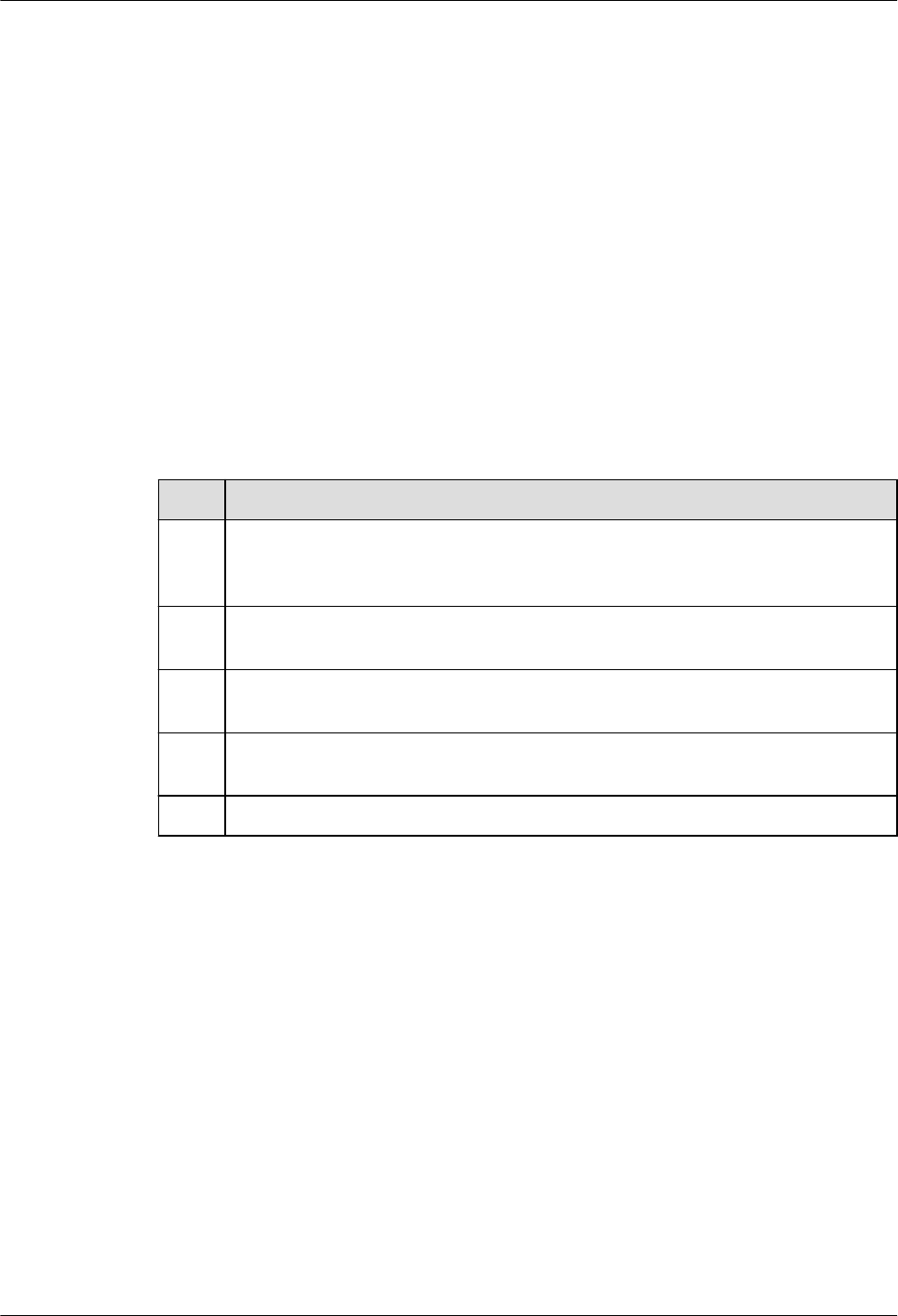
lThe total capacity of the high-frequency switching rectifier must satisfy the power of the
communication loading and battery charging. If there are 10 or fewer active rectifier
modules, configure one backup module. If there are more than 10 active modules,
configure one backup module for every 10 active modules.
lInstall storage batteries in two or more groups. The capacity is determined by the
duration for which the storage batteries must supply power. For most offices, the
batteries should be able to supply power for at least one hour.
5.3 Equipment Grounding Specifications
5.3.1 General Grounding Specifications
Table 5-16 shows the general grounding specifications.
Table 5-16 General grounding specifications
No. Description
1 The working ground and protective ground, including the shielded ground and the
lightning-proof ground of the cable distribution frame should share the same
grounding conductor.
2 The cable trays, shells, metal ventilation pipes, metal doors and windows in the
equipment room should be grounded for protection.
3 The metal parts of the equipment which are electrically floating in normal
conditions should be grounded for protection.
4 The ground cable must be connected securely to the protective ground bar of the
equipment room.
5 Do not use other equipment as part of the ground cable or electrical connection.
5.3.2 Grounding Specifications for an Equipment Room
The grounding resistance of a comprehensive communication building should be less than or
equal to one ohm. The grounding resistance of an ordinary communication office should be
less than five ohms. The grounding resistance in an area where the earth resistance rate is high
should be less than 10 ohms.
5.3.3 Grounding Specifications for Devices
Table 5-17 lists the equipment grounding specifications.
AP2030DN
Hardware Installation and Maintenance Guide 5 Appendix
Issue 05 (2016-07-22) Huawei Proprietary and Confidential
Copyright © Huawei Technologies Co., Ltd.
79

Table 5-17 Equipment Grounding Specifications
No. Description
1 All communication devices and auxiliary devices (such as mobile base stations,
transmission and switching devices, power supply devices) in the equipment room
should be grounded for protection. Connect all protective ground for various
devices jointly to a general ground bar, and then to the same protective ground bar
in the room together with the protective ground (PGND) of the device.
2 The PGND of the equipment is shorted to the copper ground bar provided by the
customer. The short-circuiting cable used should be a yellow-green plastic
insulated cable with a copper core and a cross-sectional area greater than 25 sq.
mm (0.039 sq. in.).
3 There are grounding terminals and grounding lugs at the lower part of the front
door, rear door and side panel of the cabinet, connected to the grounding terminals
of the cabinet framework through connection cables with cross-sectional area of no
less than 1.6 sq. mm (0.002 sq. in.).
4 Ensure that all metal components of the cabinet conduct well. No insulating
coating should be sprayed on the connection part of the metal components.
5 Connect the cabinets in the same row by fastening captive screws and gaskets on
the top of the cabinets. Do not spray any coating into a rectangular area measuring
30 mm x 50 mm (1.18 in. x 1.97 in.) around the connection hole for a captive bolt.
Measures to prevent rust and corrosion must be taken for this area. Zinc
electroplating with iridescent yellow chromate conversion coating should be
applied to the gasket and nut to ensure good electrical contact.
6 When combining cabinets of the same type, short-circuiting cables are required to
connect the ground busbars (if any) of the cabinets. The cross-sectional area of the
short-circuiting cable is 6 sq. mm (0.009 sq. in.) and is no more than 300 mm (11.8
in.) long. Connect the two ends of the short-circuiting cable to the ground busbar
terminals of neighboring cabinets and fix them firmly.
5.3.4 Grounding Specifications for Communications Power
Supply
Table 5-18 shows the grounding specifications for communication power supplies.
Table 5-18 Grounding specifications for communication power supplies
No. Description
1 The inlet for the AC power cable at the equipment room should be equipped with a
surge protection device (C-level) with a nominal discharge current no less than 20
kA.
2 The protective ground for the power supply and that for communication equipment
share the same grounding conductor. If the power supply and the equipment are in
the same equipment room, use the same protective ground bar for them if possible.
AP2030DN
Hardware Installation and Maintenance Guide 5 Appendix
Issue 05 (2016-07-22) Huawei Proprietary and Confidential
Copyright © Huawei Technologies Co., Ltd.
80

No. Description
3 Use a surge protection circuit on the AC power interface.
4 The positive of the -48 V DC power supply or negative pole of the 24 V DC power
supply should be grounded at the output of the DC power supply.
5 The working ground and protective ground of the DC power supply equipment
should use the same grounding conductor with the protective ground of the
switching equipment. If the power supply and equipment are in the same
equipment room, use the same protection ground bar for them if possible.
6 Add surge protection on the DC power interface.
5.3.5 Grounding Specifications for Signal Cables
Table 5-19 lists the grounding specifications for signal cables.
Table 5-19 Grounding specifications for signal cables
No. Description
1 Equip the cable outdoors with a metal jacket, well grounded at both ends, or
connect the ends of the metal jacket to the protective ground bar of the equipment
room. For cables inside the equipment room, install surge protection devices at the
interface to the equipment. The PGND cable for the surge protection devices
should be as short as possible.
2 The incoming and outgoing signal cables to and from the office and unused wires
inside the cable should be grounded for protection.
3 The Tone & Data Access (TDA) cable must pass through the Main Distribution
Frame (MDF) with surge protective device (SPD) when going out of the office.
The cable's shield layer should be connected to the protective ground of the MDF.
The MDF should use the same grounding conductor as the cabinet.
4 Do not route signal cables overhead.
5.3.6 Specifications for Laying Out Grounding Cables
Table 5-20 shows the specifications for the ground cable.
Table 5-20 Specifications for laying out ground cables
No. Description
1 The grounding wire should not run parallel to or twist around the signal cable.
AP2030DN
Hardware Installation and Maintenance Guide 5 Appendix
Issue 05 (2016-07-22) Huawei Proprietary and Confidential
Copyright © Huawei Technologies Co., Ltd.
81

No. Description
2 Bury ground underground or arrange them indoors. Do not route ground cables
overhead.
3 Do not connect two cables together to extend the PGND cable, or add any switches
or fuses.
4 The PGND cable should be an alternating yellow and green plastic insulated one
with a copper core.
5 The neutral line of the AC power cable cannot be connected to the protective
ground of transmission and communication equipment in the equipment room.
6 A PGND cable should be as short as possible, with a length of no more than 45 m
(147.64 ft).
5.4 Engineering Labels for Cables
An engineering label serves as an identifier for on-site installation and maintenance after the
installation. Labels on the cables facilitate correct and orderly connection of cables, and easy
maintenance after installation.
Engineering labels are specialized for power cables and signal cables:
lSignal cables include network cables, optical fibers, and user cables.
lPower cables include the AC power cables and DC power cables.
NOTE
Fill in labels according to specified requirements to keep consistency of labels in the equipment room.
Make a relevant statement in the self-check report.
5.4.1 Introduction to Labels
Label Materials
Features:
lThickness: 0.09 mm (0.004 in.)
lColor: chalk white
lMaterial: polyester (PET)
lAmbient temperature: -29°C (-20.2°F) to +149°C (300.2°F)
lPrinted by a laser printer and written with a marker
lPass UL and CSA authentication
AP2030DN
Hardware Installation and Maintenance Guide 5 Appendix
Issue 05 (2016-07-22) Huawei Proprietary and Confidential
Copyright © Huawei Technologies Co., Ltd.
82
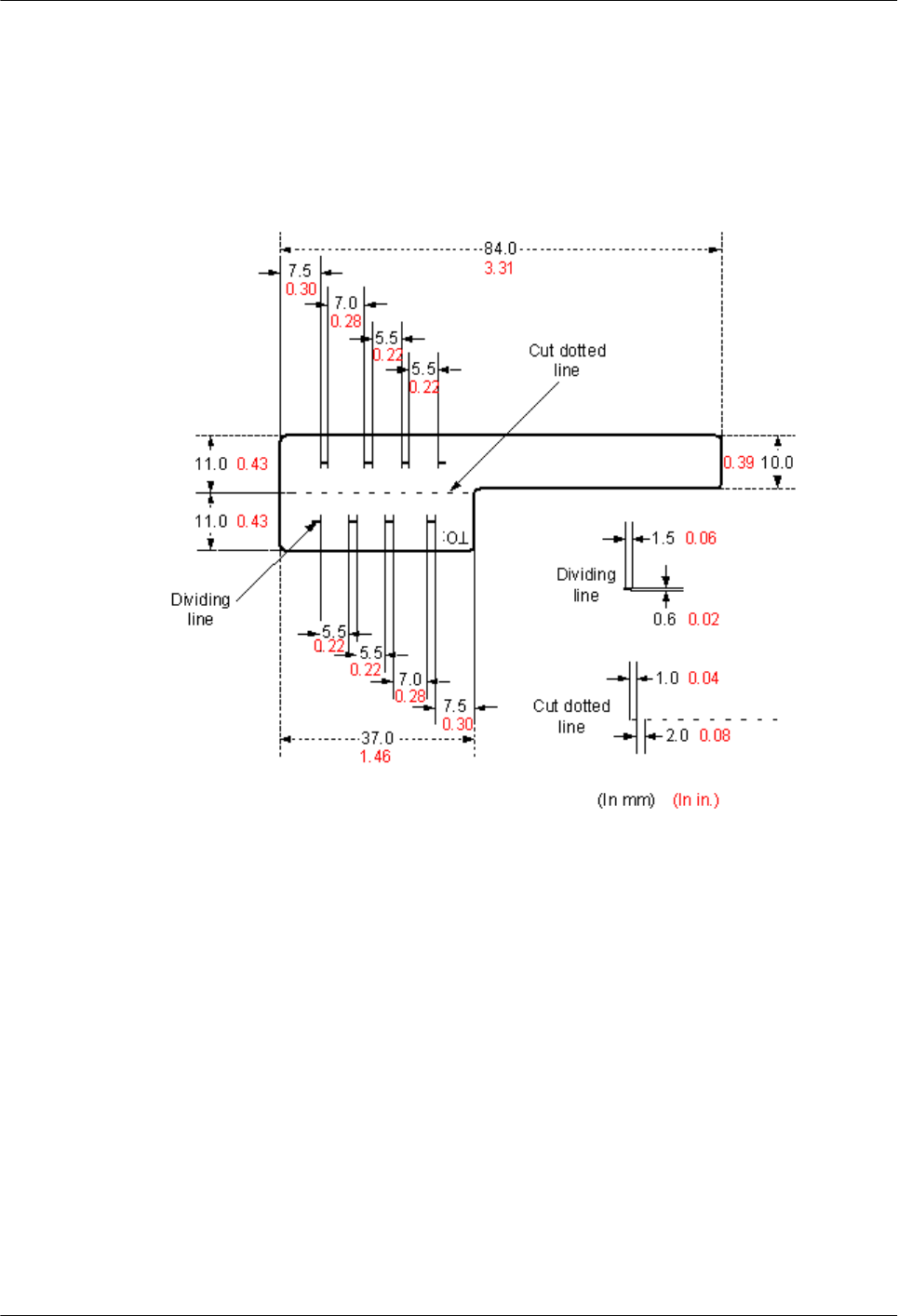
Type and Structure
Label for Signal Cables
The label for signal cables is L-shaped with fixed dimensions, as shown in Figure 5-81.
Figure 5-81 Label for signal cables
To specify more clearly the position of a cable, use the dividing lines on the label. For
example, there is a dividing line between the cabinet number and the chassis number, and
another one between the chassis number and the slot number. Each dividing line is light blue
(Pantone 656c) and 1.5 mm x 0.6 mm (0.06 in. x 0.02 in.).
The cut dotted line helps to fold the label when affixed to the cable, and its size is 1 mm x 2
mm (0.04 in. x 0.08 in.).
The word "TO:" (upside down in the figure) at the lower right corner of the label is used to
identify the opposite end of the cable on which the label is affixed.
Power Cable Label
The label for power cables should be attached to the identification plate on the cable ties that
are attached to the cable. The identification plate has an embossed area 0.2 mm x 0.6 mm
(0.008 in. x 0.02 in.) around (symmetric on both sides), and the area in the middle is for
affixing the label, as shown in Figure 5-82.
AP2030DN
Hardware Installation and Maintenance Guide 5 Appendix
Issue 05 (2016-07-22) Huawei Proprietary and Confidential
Copyright © Huawei Technologies Co., Ltd.
83
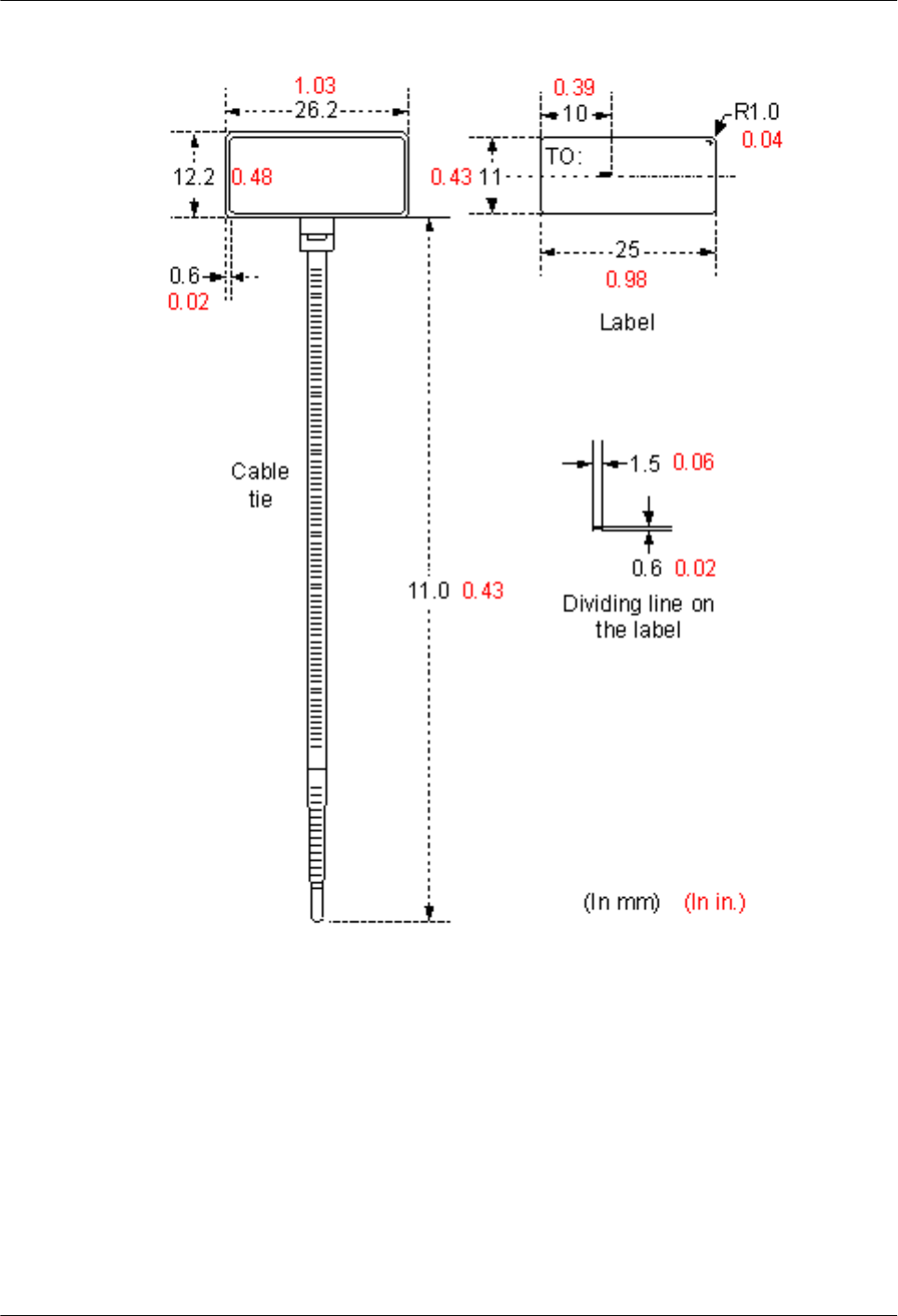
Figure 5-82 Power cable label
Label Printing
The contents can be printed or written on the labels. Printing is recommended for the sake of
high efficiency and eye-pleasant layout.
Template for Printing
You can obtain a template from the Huawei local office to print labels.
The template is made in Microsoft Word. Follow these instructions to use the template:
lYou can modify the contents of the template. Do not change settings of centered
characters, direction, and fonts.
AP2030DN
Hardware Installation and Maintenance Guide 5 Appendix
Issue 05 (2016-07-22) Huawei Proprietary and Confidential
Copyright © Huawei Technologies Co., Ltd.
84

lIf many characters need to be filled in, decrease the font size, but make sure that the
printouts are clear and legible.
Merging Cells in the Template
To merge two or more cells, do as follows:
1. Select Edit/Select All.
2. Select Format/Borders and Shading/Borders. Select Box tab and click OK.
3. Drag the mouse to select cells to be merged and select the Table/Merge Cells.
Requirements on the Printer
To print labels, use a laser jet printer of any model. Before printing labels, set up the page and
try printing.
1. Try printing on ordinary paper with both sides blank. Place the blank paper over the
whole page of the label paper, and check whether the page setup conforms to the label
layout.
2. Make sure the printer properties, such as "paper size" and "direction", have been set
correctly.
–If the printout conforms to the sheet of labels, print the labels on the label paper.
–If the printout does not conform, adjust the page setup and try printing again until
the correct printout is produced.
The method for adjusting the page setup is as follows.
1. Select File/Page Setup.
2. Select Layout and set Header and Footer as 0.
3. Select the Margins tab page. Select Left for Gutter Position and adjust the values of Top,
Bottom, Left, and Right.
NOTE
If the warning prompt as shown in Figure 5-83 appears before printing, click Ignore to continue
the printing.
Figure 5-83 Warning prompt before printing
After the page setup has been made correctly, save it for future use. This page setup is only
necessary the first time you use the template to print the labels.
AP2030DN
Hardware Installation and Maintenance Guide 5 Appendix
Issue 05 (2016-07-22) Huawei Proprietary and Confidential
Copyright © Huawei Technologies Co., Ltd.
85

Requirements for Feeding the Printer
The label paper consists of two layers and has undergone multiple processing procedures such
as printing and cutting. No matter what model of printer you use, feed in the labels one page
at a time. To avoid jamming the labels, never use the auto-feed mode.
Feed in the label paper in the correct direction to ensure that the text is printed in a correct
position.
Requirements for the Printed Label
Make sure that the printed labels satisfy the following requirements:
lAll the printouts must be on the label, and nothing should be printed on the backing layer
of the label page.
lContents in the cells should be aligned in the center. In a single-line printout, the
dividing lines and the word "TO:" should not be covered by printed characters.
lWhen the cells are merged and the printouts are made in multiple lines, avoid covering
the word "TO:" when printing the text. Use the space bar to move the text to the next
line.
Writing Labels
Writing Tools
To make sure the printouts are clear and legible, use black markers instead of ball-point pens
to write the labels.
If no marker is available, black ball-point pens are allowed, although not recommended.
Compared with ball-point pens, water-proof markers are better. When writing with a ball-
point pen, do not leave the oil on the label, which may contaminate the label and blur the
words.
NOTE
The delivered marker has two nibs. Use the smaller nib to write the labels.
Font
For the sake of legibility, use standard block letters and numbers as shown in Table 5-21
(Times New Roman).
Table 5-21 Standard typeface for handwriting
012345678
9 A B C D E F G H
I J K L M N O P Q
R S T U V W X Y Z
Determine the size of characters based on the number of letters or digits and ensure that the
characters are distinct and tidy.
AP2030DN
Hardware Installation and Maintenance Guide 5 Appendix
Issue 05 (2016-07-22) Huawei Proprietary and Confidential
Copyright © Huawei Technologies Co., Ltd.
86
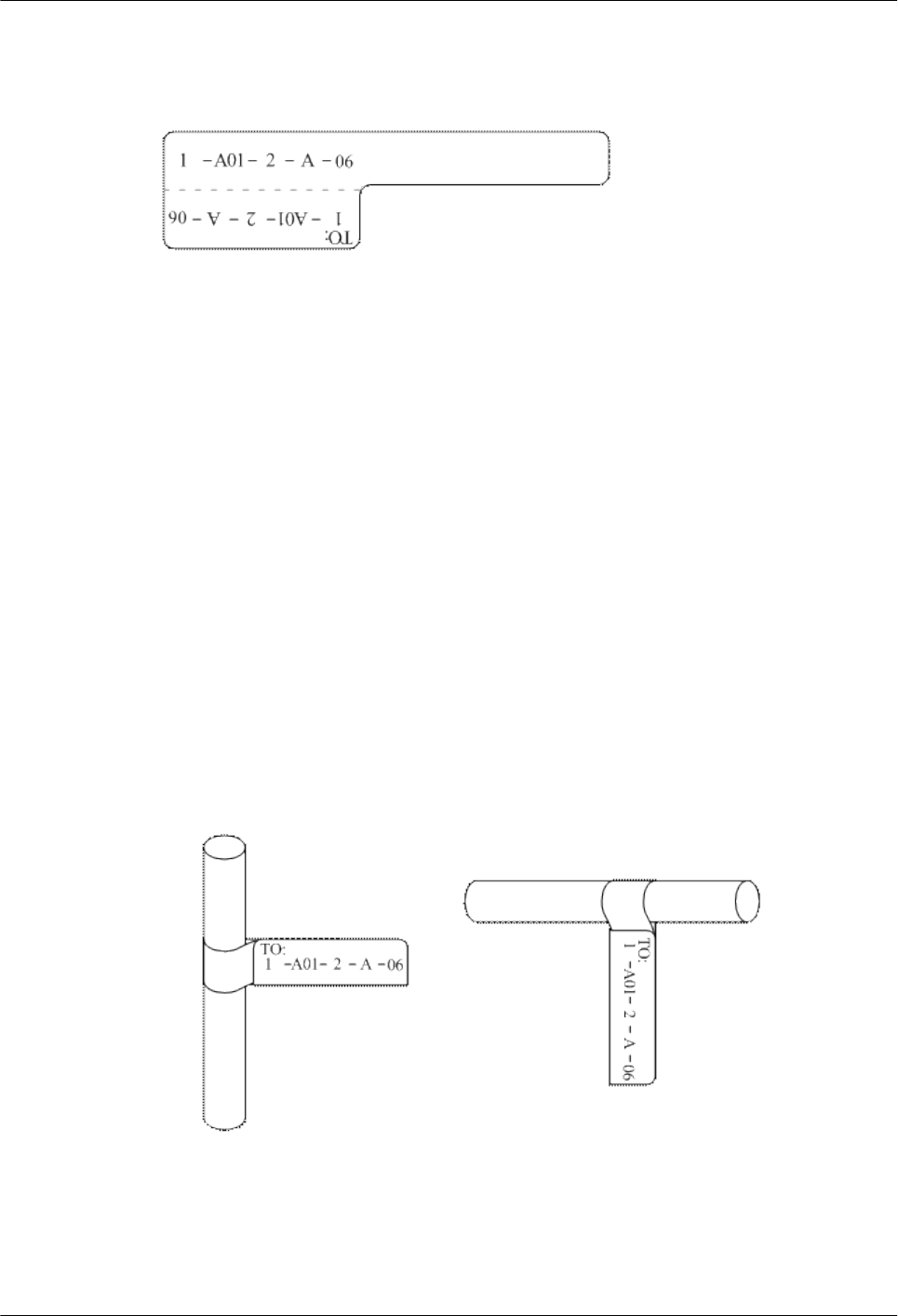
Placement of text on a label is shown in Figure 5-84.
Figure 5-84 Placement of text on a label
Attaching Labels
After printing or writing the label, remove the label from the page and attach it to the signal
cable, or the identification plate of the power cable. The methods for attaching labels are
described in the following sections.
Label for Signal Cables
lChoose the place to attach labels.
The label is attached 2 cm (0.79 in.) from the connector on a signal cable. In special
cases (for example, to avoid cable bending or affecting other cables), other positions are
allowed to attach the labels. The rectangular part with text is attached facing right or
downward, as shown in Figure 5-85. The details are as follows:
–The identification card is to the right of the cable in vertical cabling.
–The identification card should be downward when you lay out the cable
horizontally.
Figure 5-85 Text area of the label
lProcedure for attaching labels
Figure 5-86 shows the methods and procedures for attaching labels.
AP2030DN
Hardware Installation and Maintenance Guide 5 Appendix
Issue 05 (2016-07-22) Huawei Proprietary and Confidential
Copyright © Huawei Technologies Co., Ltd.
87
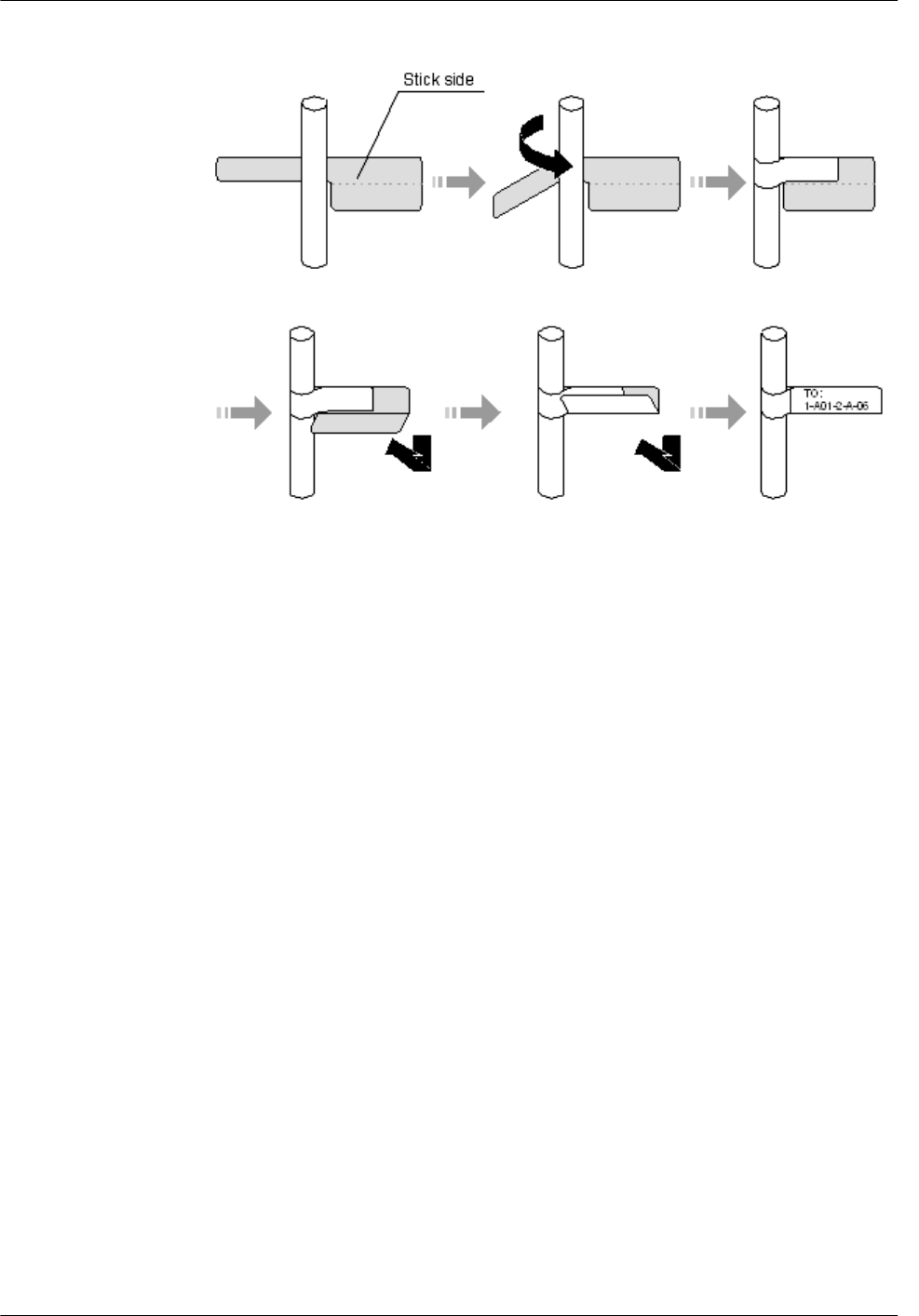
Figure 5-86 Label for signal cables
Power Cable Label
Remove the label from the backing page, and attach it to the identification plate on the cable
tie. The label should be attached to the rectangular flute on the identification plate, and
attached to only one side of the identification plate. The cable ties are bundled at 2 cm (0.79
in.) from the connectors, and other positions are allowed in special circumstances.
Cable ties should be bound on both ends of a cable. After the bundling, the finished
identification plate should be on top of the cable in horizontal cabling, or on the right side of
the cable in vertical cabling, as shown in Figure 5-87. The details are as follows:
lThe identification card is to the right of the cable in vertical cabling.
lThe identification card is on the top of the cable in horizontal cabling. Make sure that the
label is facing out.
AP2030DN
Hardware Installation and Maintenance Guide 5 Appendix
Issue 05 (2016-07-22) Huawei Proprietary and Confidential
Copyright © Huawei Technologies Co., Ltd.
88
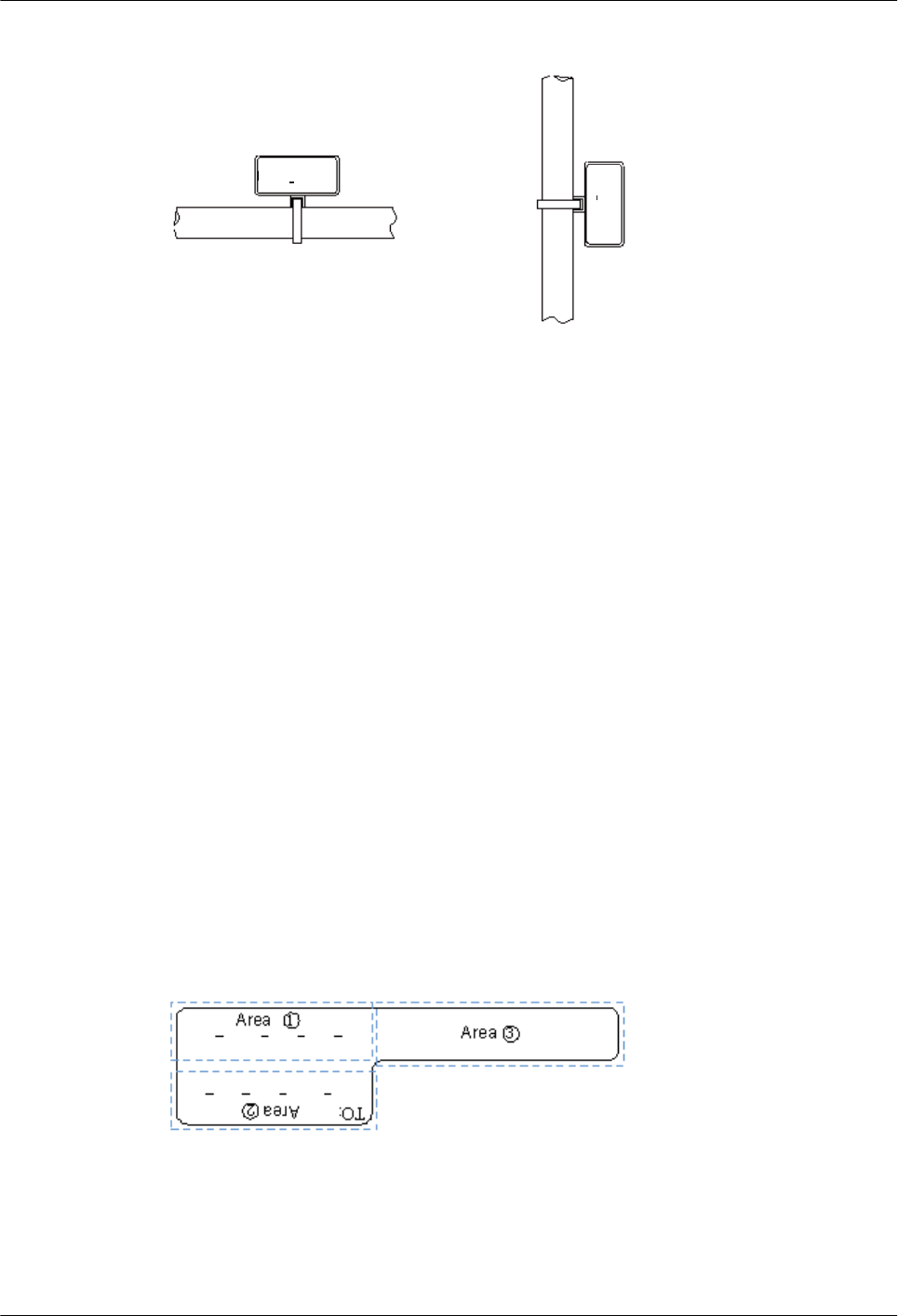
Figure 5-87 Binding the label for the power cable
The identification card is on the
top of the cable in horizontal
cabling.
The identification card is to
the right of the cable in
vertical cabling.
TO:
B03 -48V2
TO:
B03 -48V2
Cable
Cable
Contents of Engineering Labels
Contents of Labels for Power Cables
Labels for power cables are affixed on only one side of the identification plates. On the labels,
there is information (the part after the word "TO:") about the location of the device on the
other end of the cable, like the location of control cabinet, distribution box or power socket.
Contents of Labels for Signal Cables
The two sides of the label affixed on the signal cable carry information about the location of
the ports connected to both ends of the cable. Figure 5-88 shows the information on both
sides of the labels affixed to the signal cables.
lArea 1 contains the location information of the local end of the cable.
lArea 2 (with the word "TO:") contains the location information of the opposite end of the
cable.
lArea 3 has been folded up inside the label.
Figure 5-88 Printed parts on the label for signal cables
Seen from the cabling end of the equipment, the text part of the label is on the right side of the
cable. The side with "TO:" that is facing outside carries the location information of the
opposite end; and the other side carries the location information of the local end.
AP2030DN
Hardware Installation and Maintenance Guide 5 Appendix
Issue 05 (2016-07-22) Huawei Proprietary and Confidential
Copyright © Huawei Technologies Co., Ltd.
89

In other words, the information in Area 1 at one end is the same as the information in Area 2
at the other end of the cable.
Precautions for Using Engineering Labels
When using labels, pay attention to the following points:
lWhen printing, writing, or attaching labels, keep the labels clean.
lSince the label paper is made of moistureproof material, ink-jet printers and ink pens
cannot be used to print and write labels.
lLabels should be attached neatly. New-type labels are L-shaped. If they are pasted at
incorrect locations or in the incorrect direction, the appearance of the device is affected.
lPower cable ties should be attached in the same positions on power cables, with
identification plates on the same side.
lThe positions of "up", "down", "left" or "right" are all based on the viewpoint of the
engineering person who is working on the label.
5.4.2 Engineering Labels for Optical Fibers
These labels are affixed to the optical fibers that connect the optical interfaces on the boards
in a chassis, or on the device boxes. There are two types of labels for optical cables:
lOne is for the fiber that connects the optical interfaces on two devices.
lThe other is for the fiber that connects the device and the ODF.
Labels for the Optical Fibers Connecting Devices
Meaning of the Label
Table 5-22 lists information on both sides of the labels affixed to the optical fibers that
connect two devices.
Table 5-22 Information on labels affixed to the fibers between two devices
Content Meaning Example
MN-B-C-D-
R/T
MN: cabinet
number
M: The cabinet rows from front to back are numbered
from A to Z.
N: The cabinet columns from left to right are numbered
from 01 to 99.
For example, A01 is the cabinet in row A and column
01.
B: chassis
number
Numbered in bottom-up order with two digits, for
example, 01.
C: physical slot
number
Numbered in top-down and left-right order starting
from 01. For example, 01 is the first slot at the top left
of the chassis.
AP2030DN
Hardware Installation and Maintenance Guide 5 Appendix
Issue 05 (2016-07-22) Huawei Proprietary and Confidential
Copyright © Huawei Technologies Co., Ltd.
90
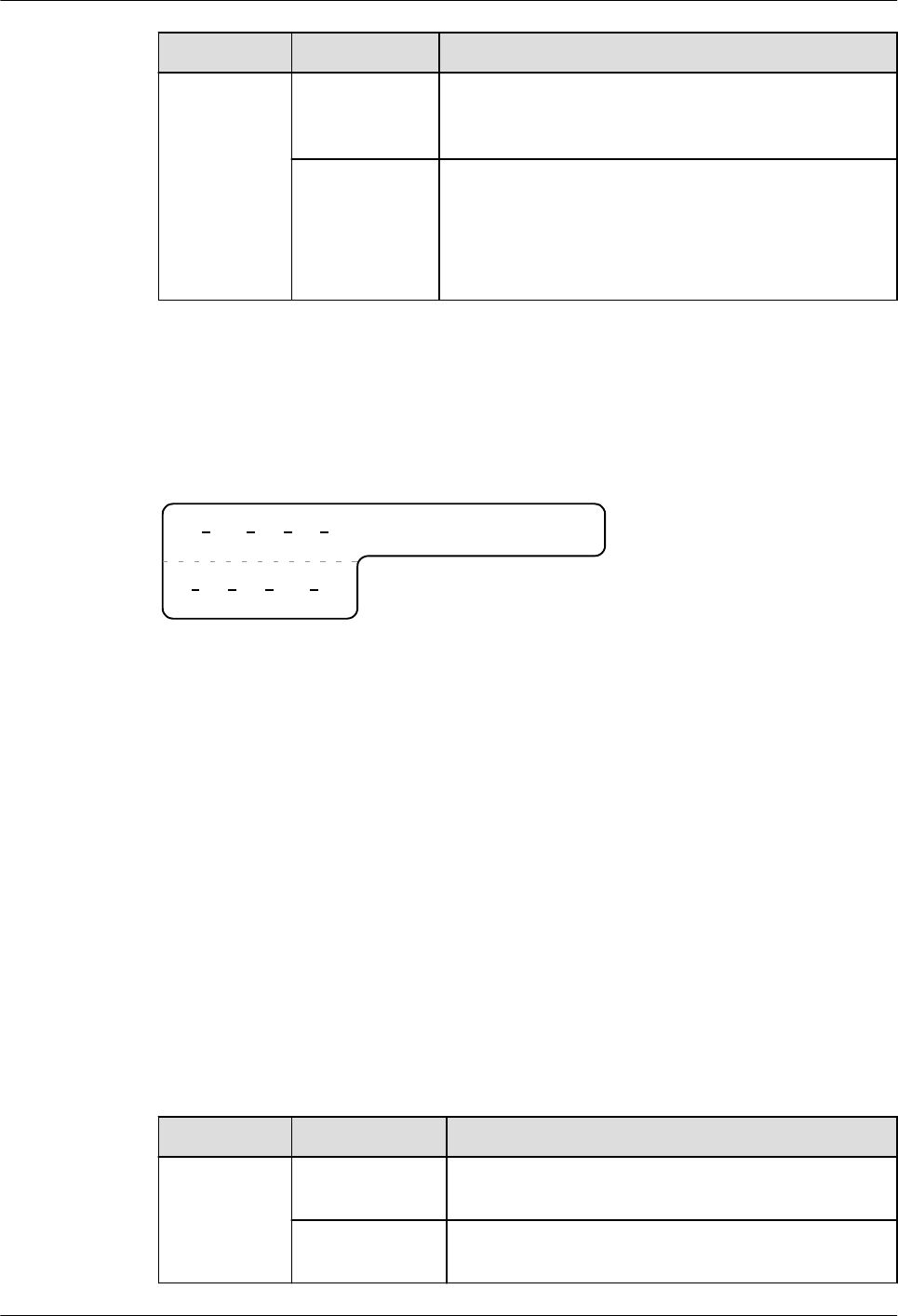
Content Meaning Example
D: optical
interface
number.
Numbered in top-down and left-right order, consistent
with the port sequence number on the device.
R: Receiving
interface
T: optical
transmitting
interface
-
Example of the Label
Figure 5-89 shows a sample label on an optical fiber.
Figure 5-89 Sample label on an optical fiber between two devices
A01 R
TO:
01 05 01
G01 T
01 01 01
The meaning of the label is listed in Figure 5-89.
l"A01-01-05-01-R" indicates that the local end of the optical fiber is connected to the
optical receiving interface 01 in slot 5, chassis 01 in the cabinet in row A, column 01 in
the machine room.
l"G01-01-01-01-T" indicates that the opposite end of the optical fiber is connected with
optical transmitting interface 01 in slot 01, chassis 01 in the cabinet in row G, column 01
in the machine room.
Labels for the Optical Fibers Connecting the Device and an ODF
Meaning of the Labels
Table 5-23 shows information on both sides of labels attached to an optical fiber between a
device and an optical distribution frame (ODF).
Table 5-23 Information on labels affixed to a fiber between a device and an ODF
Content Meaning Example
MN-B-C-D-
R/T
MN: cabinet
number
For example, A01.
B: chassis
number
Numbered in bottom-up order with two digits, for
example, 01.
AP2030DN
Hardware Installation and Maintenance Guide 5 Appendix
Issue 05 (2016-07-22) Huawei Proprietary and Confidential
Copyright © Huawei Technologies Co., Ltd.
91

Content Meaning Example
C: physical slot
number
Numbered in top-down and left-right order starting
from 01. For example, 01 is the first slot at the top left
of the chassis.
D: optical
interface
number.
Numbered in top-down and left-right order, consistent
with the port sequence number on the device.
R: Optical
receiving
interface
T: optical
transmitting
interface
-
ODF-MN-B-
C-R/T
MN: row
number and
column number
of an ODF
M: The cabinet rows from front to back are numbered
from A to Z.
N: The cabinet columns from left to right are
numbered from 01 to 99.
For example, G01 is the ODF of row G and column
01.
B: row number
of the terminal
device
Range from 01 to 99, for example, 01-01.
C: column
number of the
terminal device
R: Optical
receiving
interface
T: optical
transmitting
interface
-
Example of the Label
Figure 5-90 shows a sample label on an optical fiber.
Figure 5-90 Sample label on an optical fiber between the device and the ODF
ODF R
TO:
G01 01 01
A01 R
01 05 01
AP2030DN
Hardware Installation and Maintenance Guide 5 Appendix
Issue 05 (2016-07-22) Huawei Proprietary and Confidential
Copyright © Huawei Technologies Co., Ltd.
92

Meaning of the label in Figure 5-90
l"ODF-G01-01-01-R" indicates that the local end of the optical fiber is connected to the
optical receiving terminal in row 01, column 01 of the ODF in row G, column 01 in the
machine room.
l"A01-01-05-01-R" indicates that the opposite end of the optical fiber is connected to
optical receiving interface 1 in slot 05, chassis 01 in the cabinet in row A, column 01 in
the machine room.
5.4.3 Engineering Labels for Network Cables
Applicable Ranges
The labels can be applied to Ethernet cables.
Label Content
Table 5-24 shows the information on both sides of the labels affixed to Ethernet cables.
You can also decide the label content based on the actual environment. If the device is not
installed in the cabinet, for example, you can remove the cabinet number.
Table 5-24 Information on the Ethernet cables
Content Meaning Example
MN-B-C-D MN: cabinet
number
For example, A01 is the first cabinet in row A.
B: chassis
number
Numbered in bottom-up order with two digits, for
example, 01.
C: physical slot
number
Numbered with two digits in top-down and left-
right order. For example, 01.
D: network port
number
Numbered in top-down and left-right orders. For
example, 01.
MN-Z MN: cabinet
number
For example, B02 is the second cabinet in row B.
Z: Location
number
Fill in the location number of the terminal device
on site. If the cable is connected to a device in a
cabinet, specify the serial numbers of the cabinet,
the chassis, and the Ethernet interface of the device.
For example, B02-03-12. If the cable is connected
to the Network Management Station (NMS),
specify the specific location of the NMS.
The contents of the labels for network cables connecting hubs and devices or agents and the
network cables for other purposes should be specified according to actual connections. The
details are as follows:
AP2030DN
Hardware Installation and Maintenance Guide 5 Appendix
Issue 05 (2016-07-22) Huawei Proprietary and Confidential
Copyright © Huawei Technologies Co., Ltd.
93
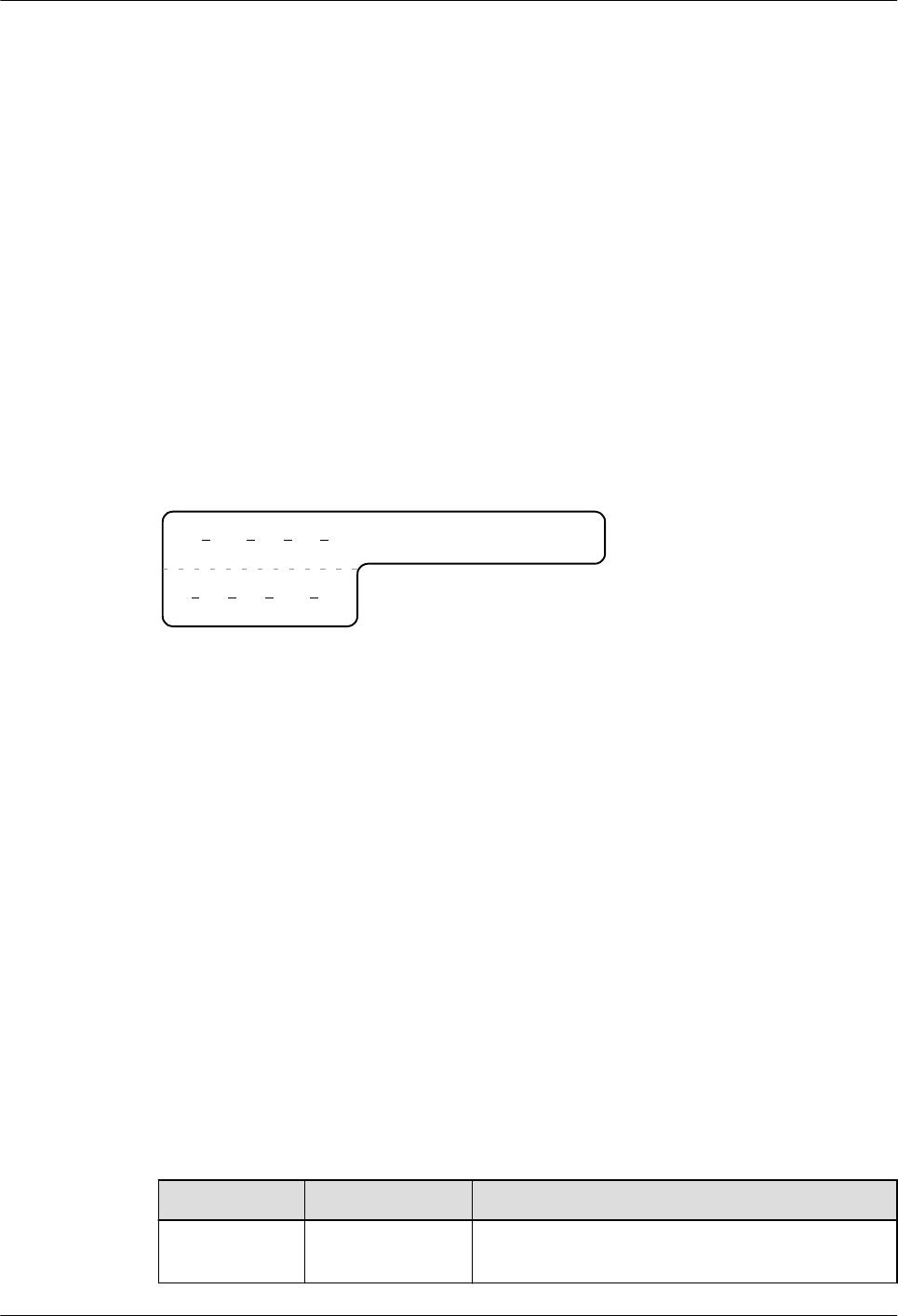
lFor a network cable connecting a hub and device, the label on the hub end should
indicate the numbers of the chassis and cabinet where the hub resides, and the serial
number on the hub. The label on the device end should indicate the number of the
chassis and cabinet where the device is located. If the device is a standalone device,
provide the specific position of the device.
lFor a network cable connecting a hub and an agent or terminal, the label on the agent or
terminal end should contain the serial number of the network interface. The definitions
of the cabinet number and chassis number are the same as those described in Table 5-24.
lIf the hub is a standalone device without a cabinet or chassis, the label should contain
specific location information that identifies the hub.
The serial number on the hub, the network interface number of the agent or terminal, and the
location of the standalone device should be specified according to actual connections.
Label Example
Figure 5-91 shows a sample label on an Ethernet cable.
Figure 5-91 Sample label on an Ethernet cable
A01
TO:
03 01 01
B02 03 01
Meaning of the label in Figure 5-91.
l"A01-03-01-01" indicates that one end of the network cable is connected to network
interface 01 in slot 01, chassis 03 of the cabinet in row A, column 01 in the equipment
room.
l"B02-03-01" indicates that another end of the network cable is connected to network
interface 01 in chassis 03 of the cabinet on row B, column 02 in the equipment room. No
slot number is given.
5.4.4 Engineering Labels for User Cables
Attach labels to both ends of a user cable to indicate the locations of the cable on the device
and main distribution frame (MDF).
Meaning of the Engineering Labels for User Cables
Table 5-25 shows the contents of the labels.
Table 5-25 Contents of the engineering labels for user cables
Content Meaning Example
MN-B-C-D MN: cabinet
number
For example, A01 is the first cabinet in row A.
AP2030DN
Hardware Installation and Maintenance Guide 5 Appendix
Issue 05 (2016-07-22) Huawei Proprietary and Confidential
Copyright © Huawei Technologies Co., Ltd.
94
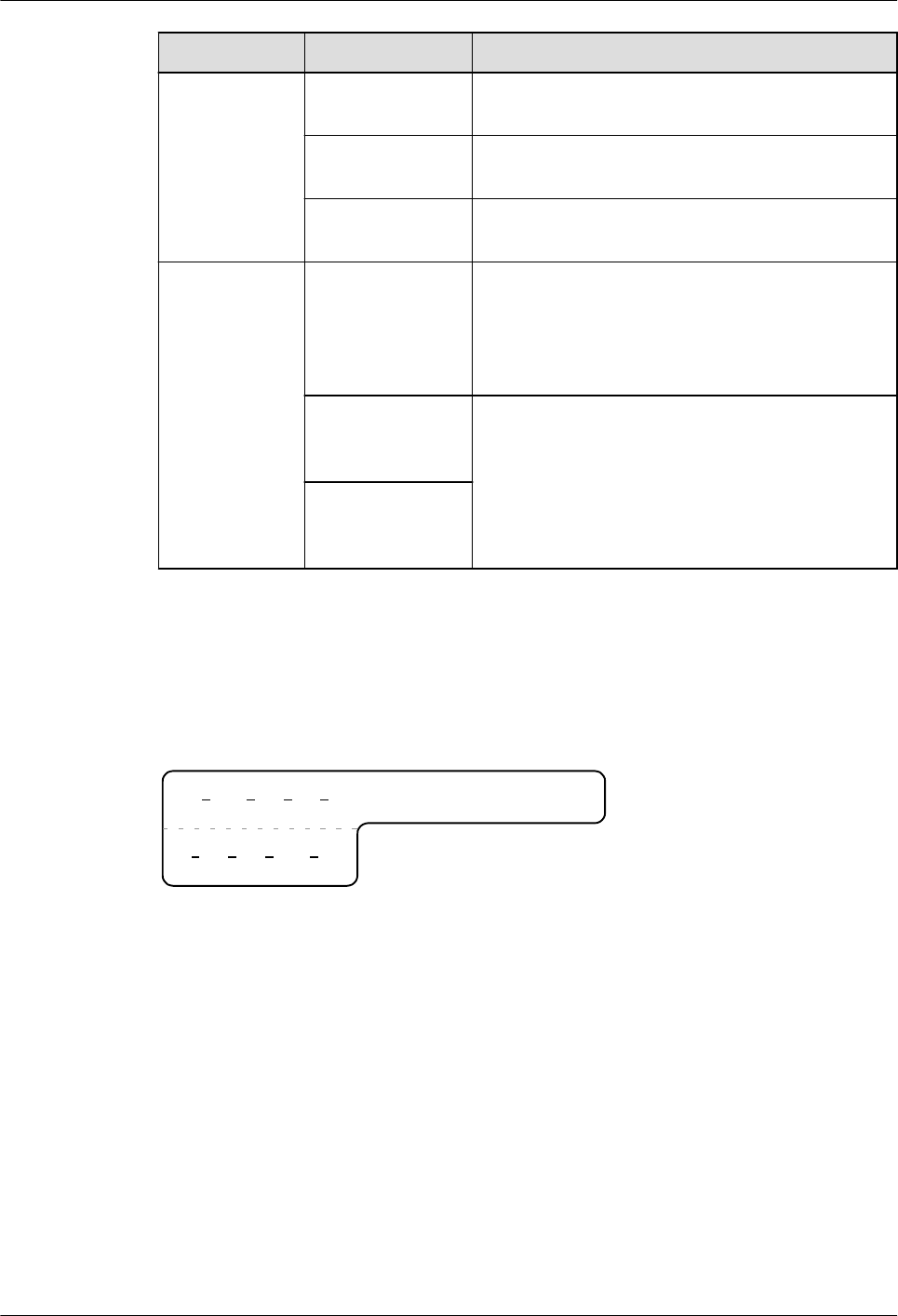
Content Meaning Example
B: frame number Numbered in the bottom-up order with two digits,
for example, 03.
C: physical slot
number
Numbered with two digits in top-down and left-
right order. For example, 01.
D: cable number Numbered with two digits in top-down and left-
right order. For example, 01.
MDF-MN-B-C MN: row number
and column
number of the
MDF
M: The rows of cabinets from front to back are
numbered from A to Z. N: The columns of cabinets
from left to right are numbered from 01 to 99. For
example, G01 is the MDF of Row G and Column
01.
B: row number of
the terminal
device
Ranges from 01 to 99, for example, 01-01.
C: column number
of the terminal
device
Example of the Label
Figure 5-92 shows a sample label on a user cable.
Figure 5-92 Sample label on a user cable
A01
TO:
03 01 01
MDF G01 01 01
The meaning of the label in Figure 5-92 is as follows:
l"A01-03-01-01" indicates that the local end of the user cable is connected to port 1 in
slot 1, chassis 03 of the cabinet in row A, column 01 in the equipment room.
l"MDF-G01-01-01" indicates that the opposite end of the user cable is connected to the
terminal in row 01, column 01 of the MDF in row G, column 01 in the equipment room.
5.4.5 Engineering Labels for Power Cables
AP2030DN
Hardware Installation and Maintenance Guide 5 Appendix
Issue 05 (2016-07-22) Huawei Proprietary and Confidential
Copyright © Huawei Technologies Co., Ltd.
95
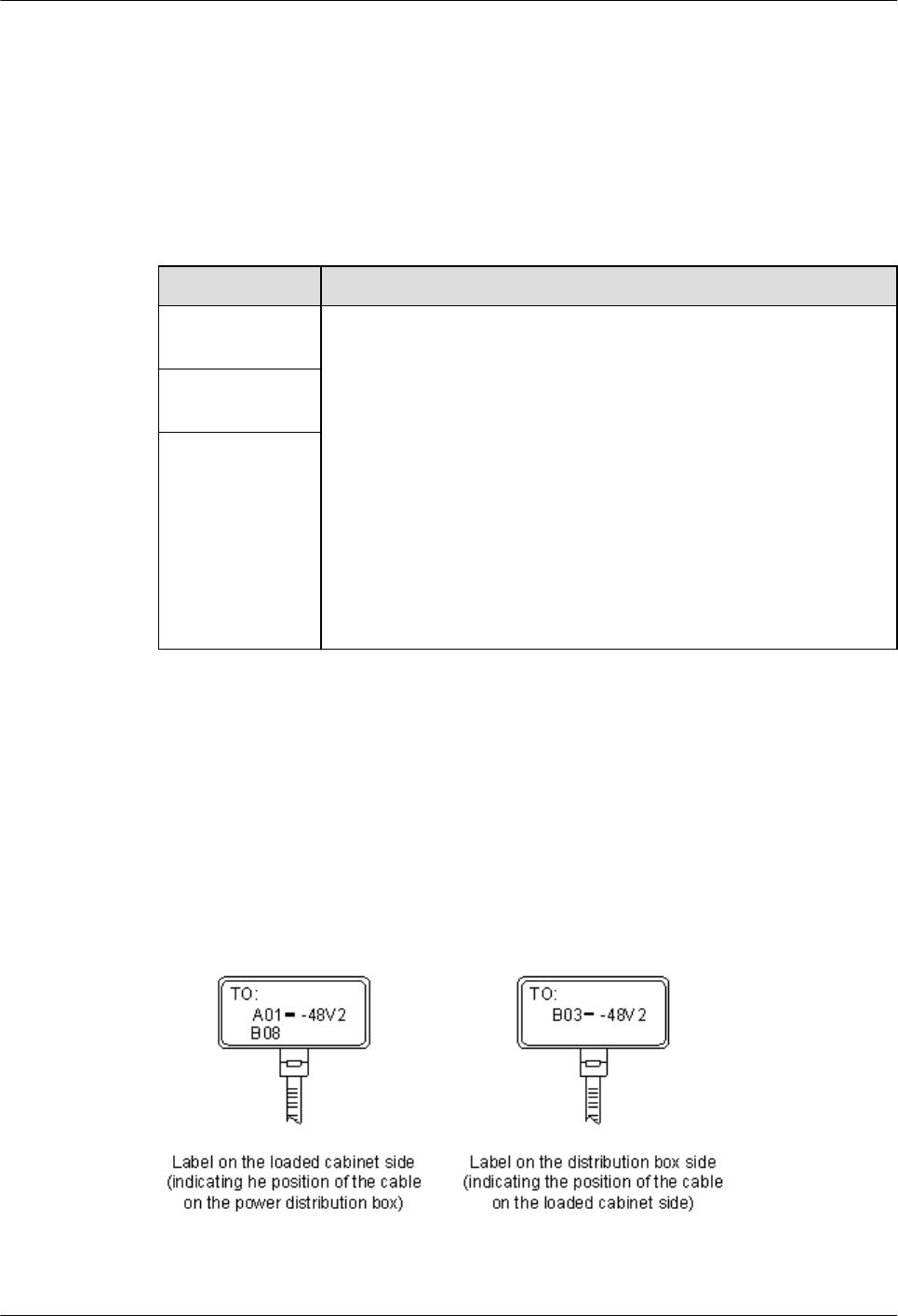
Engineering Labels for DC Power Cables
These labels are affixed to the DC power cables that provide power supply for cabinets,
including the -48 V, PGND, and BGND cables. Here, the DC power cables also include power
cables and PGND cables.
The labels for DC power cables are affixed to one side of the identification plates on cable
ties. For details of the labels, see Table 5-26.
Table 5-26 Contents of the label
Content Meaning
MN(BC)-
B--48Vn
MN(BC): BC is written right under MN.
B: chassis number, numbered in bottom-up order with two digits, for
example, 01.
N: power socket number, numbered as 1 to 3 in the bottom-up and left-
to-right orders.
On the loaded cabinet side, only MN is used to identify the cabinet.
On the power cabinet side, MN identifies the row and column number
of the power distribution equipment like a control cabinet and
distribution box, and BC identifies the row and column number of the
-48 V connector. If there is no row number or column number, or the
connector can be identified without them, BC can be omitted. It is
unnecessary to identify the row and column number for BGND and
PGND.
MN(BC)-B-
BGND
MN(BC)-B-
PGND
The label only carries location information about the destination direction of the power cable
whereas information about the local end is unnecessary. That is, the label only carries location
information about the opposite equipment, the control cabinet, or the distribution box. Table
5-26 lists the information on two -48 V power supplies on the label. The information on other
DC voltages, such as 24 V and 60 V should be given in similar methods.
Make sure that labels are affixed in the correct direction. That is, after the cable ties are
bundled onto the cable, the identification plates with the labels should face up, and the text on
the labels in the same cabinet should be in the same direction. For details, see Figure 5-93.
Figure 5-93 Example of the labels for DC power cables
AP2030DN
Hardware Installation and Maintenance Guide 5 Appendix
Issue 05 (2016-07-22) Huawei Proprietary and Confidential
Copyright © Huawei Technologies Co., Ltd.
96

The meaning of the label in Figure 5-93 is as follows:
lOn the loaded cabinet side, the label "A01/B08--48V2" on the cable indicates that the
cable is -48 V DC supply, which is from the eighth connector in row B of -48 V bus bar
in the cabinet in row A, and column 1 in the equipment room.
lOn the distribution box side, the label "B03--48V2" indicates that the cable is -48 V DC
supply, connected to DC power socket 2 in row B, column 03 in the equipment room.
NOTE
In the power distribution box or the first power cabinet of a row in a transmission equipment room,
every terminal block on the -48 V connector bar has a numeric identification. For example, in the above
label of "A01/B08--48V2", "08" (or sometimes "8") is the numeric identification of the terminal block.
PGND and BGND are two copper bars, on which the terminal blocks are short-circuited.
Therefore, it makes no difference which terminal is connected to them. It is only necessary to
give the row and column of the power distribution box, instead of giving the specific serial
number of the terminal block on the copper bar. For example, if the label on the loaded
cabinet side is "A01-BGND", it means that the power cable is a BGND that connects BGND
copper bar in the power distribution box in row A, column 01 in the machine room.
Information on the labels for PGND cables should be given in a similar way.
Engineering Labels for AC Power Cables
These labels are affixed to both ends of an AC power cable that provides AC power supply to
cabinets, including 110/220 V, PGND, and BGND cables. The 110/220 V AC cables and
related PGND and BGND cables are covered with an insulating sheath, so the labels need to
contain only the word "AC" and the cabinet numbers.
The labels for AC power cables are affixed to one side of the identification plates on cable
ties. For details, see Table 5-27.
Table 5-27 Label content
Content Meaning
MN-(B)-ACn MN: serial number of the cabinet or the socket where the power is led
in
B: chassis number, numbered in bottom-up order with two digits, for
example, 01.
n: power port number, numbered as 1 to 3 in bottom-up and left-to-right
order.
Serial number of the socket where the power is led in: the location of
the socket is marked according to the actual situation. If the sockets can
be identified by row numbers and column numbers, they can be
numbered following the same rule for the cabinets. If the sockets
cannot be identified by rows and columns, specify the detailed
locations to avoid confusion with other sockets.
The label only carries location information about the opposite equipment and the power
socket; information about the local end is unnecessary.
AP2030DN
Hardware Installation and Maintenance Guide 5 Appendix
Issue 05 (2016-07-22) Huawei Proprietary and Confidential
Copyright © Huawei Technologies Co., Ltd.
97
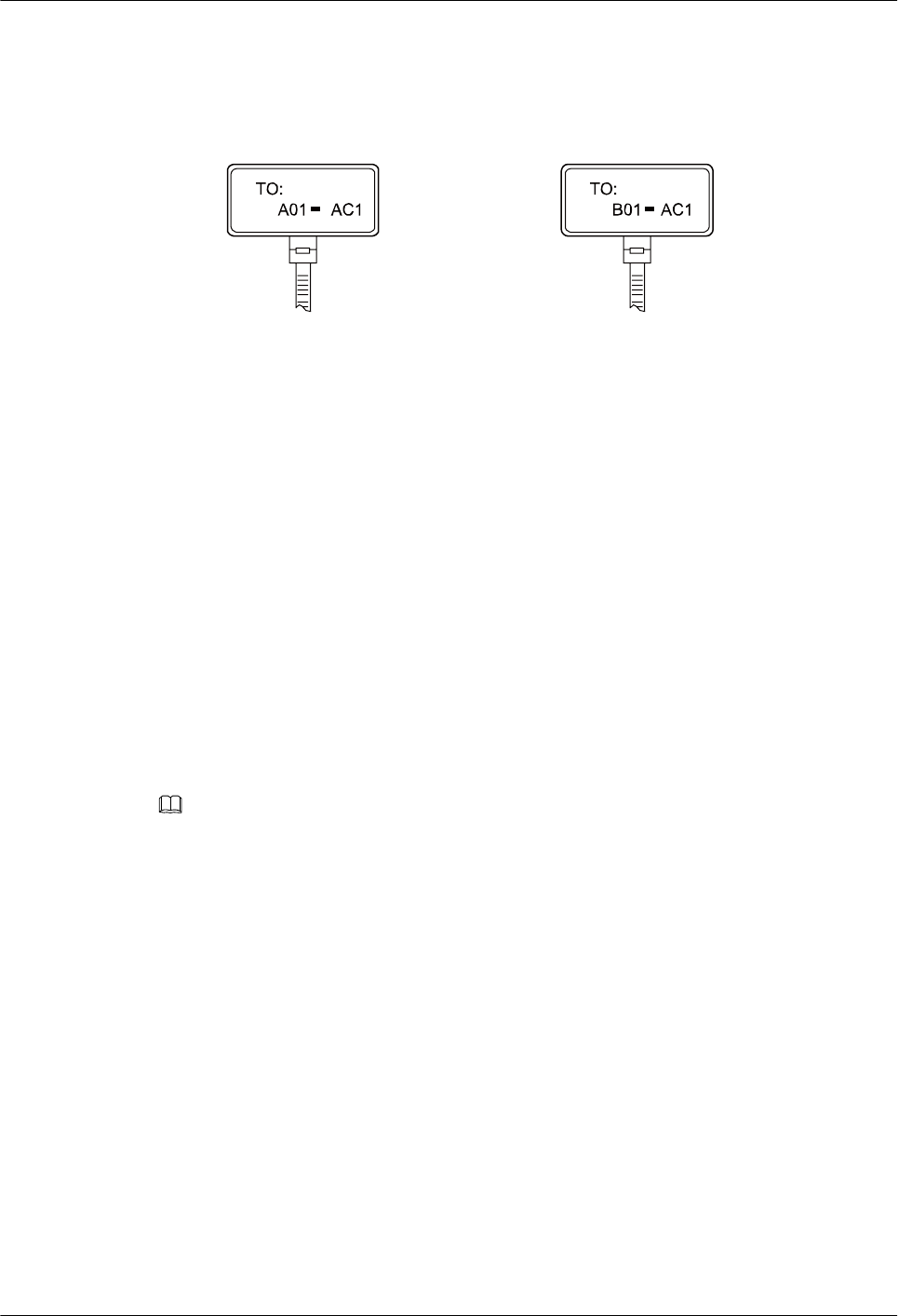
Make sure that labels are affixed in the correct direction. That is, after the cable ties are
bundled onto the cable, the identification plates with the labels should face up, and the text on
the labels in the same cabinet should be in the same direction, as shown in Figure 5-94.
Figure 5-94 Labels for AC power cables
Label on the loaded cabinet side
(indicating the position of the cable
on the power distribution box)
Label on the distribution box side
(indicating the position of the cable
on the loaded cabinet side)
Meaning of the label in Figure 5-94.
lOn the equipment cabinet side, the label marked "A01-AC1" indicates that the power
cable is connected to the first AC power socket of row A and column 01 in the
equipment room.
lOn the power socket side, the label marked "B01-AC1" indicates that the power cable is
connected to the first AC power socket in the cabinet of row B and column 01 in the
equipment room.
5.5 Guide to Using Optical Modules
Common Faults of an Optical Module
NOTE
The system may fail to obtain information about non-Huawei-certified optical modules or obtain incorrect
information. You are advised to use Huawei-certified optical modules. Obtain the electronic label of the
optical module and contact technical support personnel to confirm whether it is a Huawei-certified optical
module.
1. An optical module is not completely installed in position.
If the optical module is not completely installed in position and the latch boss is not
secured, the device cannot identify the optical module. After the optical module works
for a long time, it will be ejected under external stress.
2. The optical receptacle on an optical module is contaminated.
If an optical module is not cleaned or protected properly, contaminants may accumulate
on the fiber pin in the optical module. As a result, the coupling efficiency is reduced,
optical signals are cut off, or even worse, the surface of the fiber pin is damaged
permanently.
3. An optical module is burnt.
If high-power optical signals (caused by an optical time domain reflectometer or self-
loop test) are transmitted through an optical module that is used for long-distance
transmission but no optical attenuator is used, the optical power will exceed the overload
power of the avalanche photodiode (APD). Then the optical module is burnt.
AP2030DN
Hardware Installation and Maintenance Guide 5 Appendix
Issue 05 (2016-07-22) Huawei Proprietary and Confidential
Copyright © Huawei Technologies Co., Ltd.
98
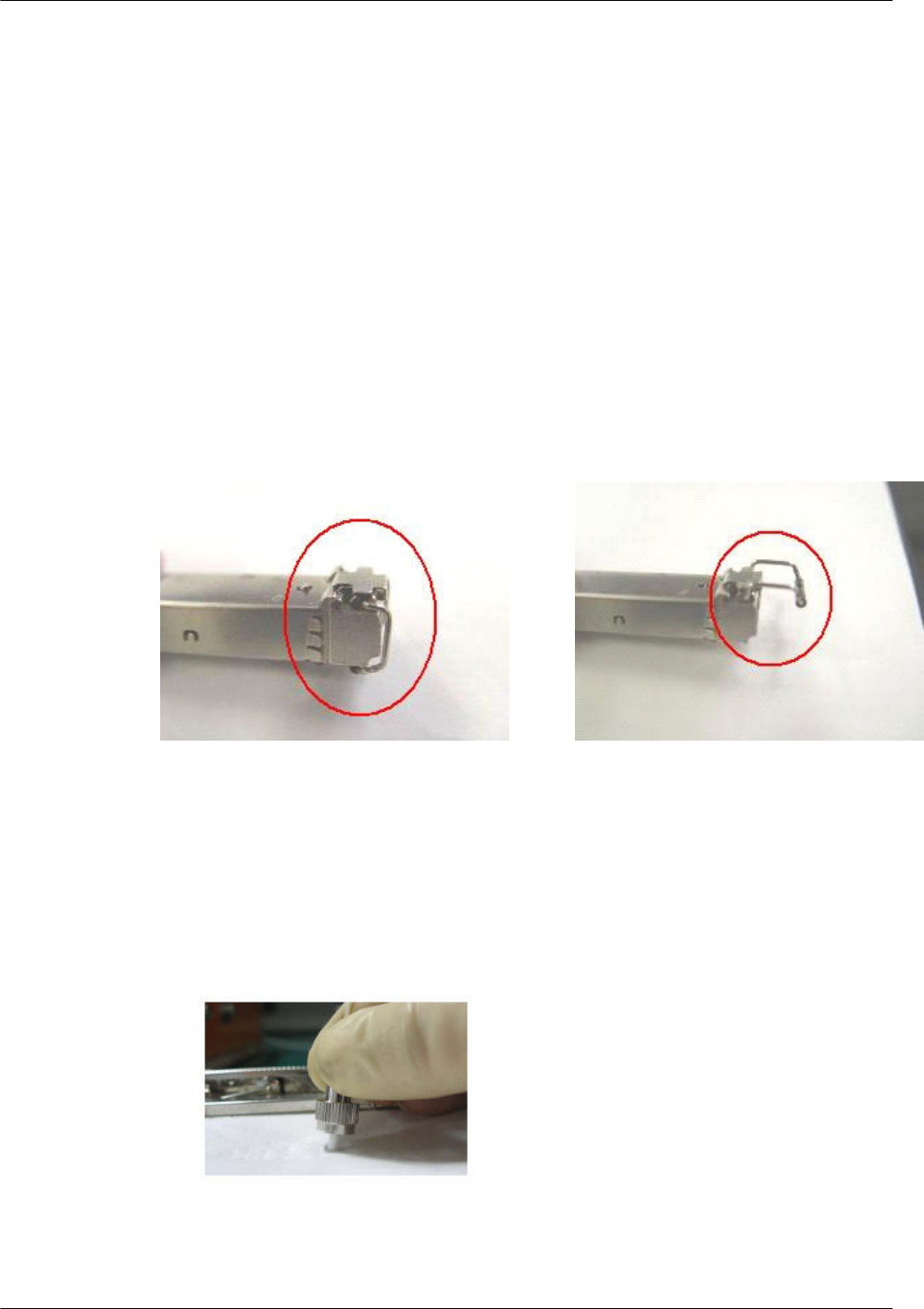
The preceding faults lead to temporary or long-term cut-off of optical signals; or even cause
permanent damages to the optical module, affecting communication services.
Measures to Prevent a Loosened Optical Module
1. When installing an optical module, insert it in position. If you hear a click or feel a slight
shake, it indicates that the latch boss is secured.
If the latch boss is not secured, the gold finger of the optical module is not in good
contact with the connector on the board. In this case, the link may be connected but
optical signals will be cut off or the optical module will be loosened when the optical
module is shaken or hit.
2. Figure 5-95 shows the release handle on an optical module when it is open and closed.
When inserting the optical module, make sure that the release handle is closed. At this
time, the latch boss locks the optical module. After the optical module is inserted, try
pulling it out to see if it is installed in position. If the optical module cannot be pulled
out, it is secured.
Figure 5-95 State of the release handle
Close the release handle Open the release handle
Measures to Prevent Receptacle Contamination
1. Cleaning tissues must be prepared on site. You need to clean the optical connector before
inserting it in the receptacle. This protects the receptacle against contamination on the
surface of the optical connector.
Figure 5-96 Cleaning optical fibers with special cleaning tissues
AP2030DN
Hardware Installation and Maintenance Guide 5 Appendix
Issue 05 (2016-07-22) Huawei Proprietary and Confidential
Copyright © Huawei Technologies Co., Ltd.
99
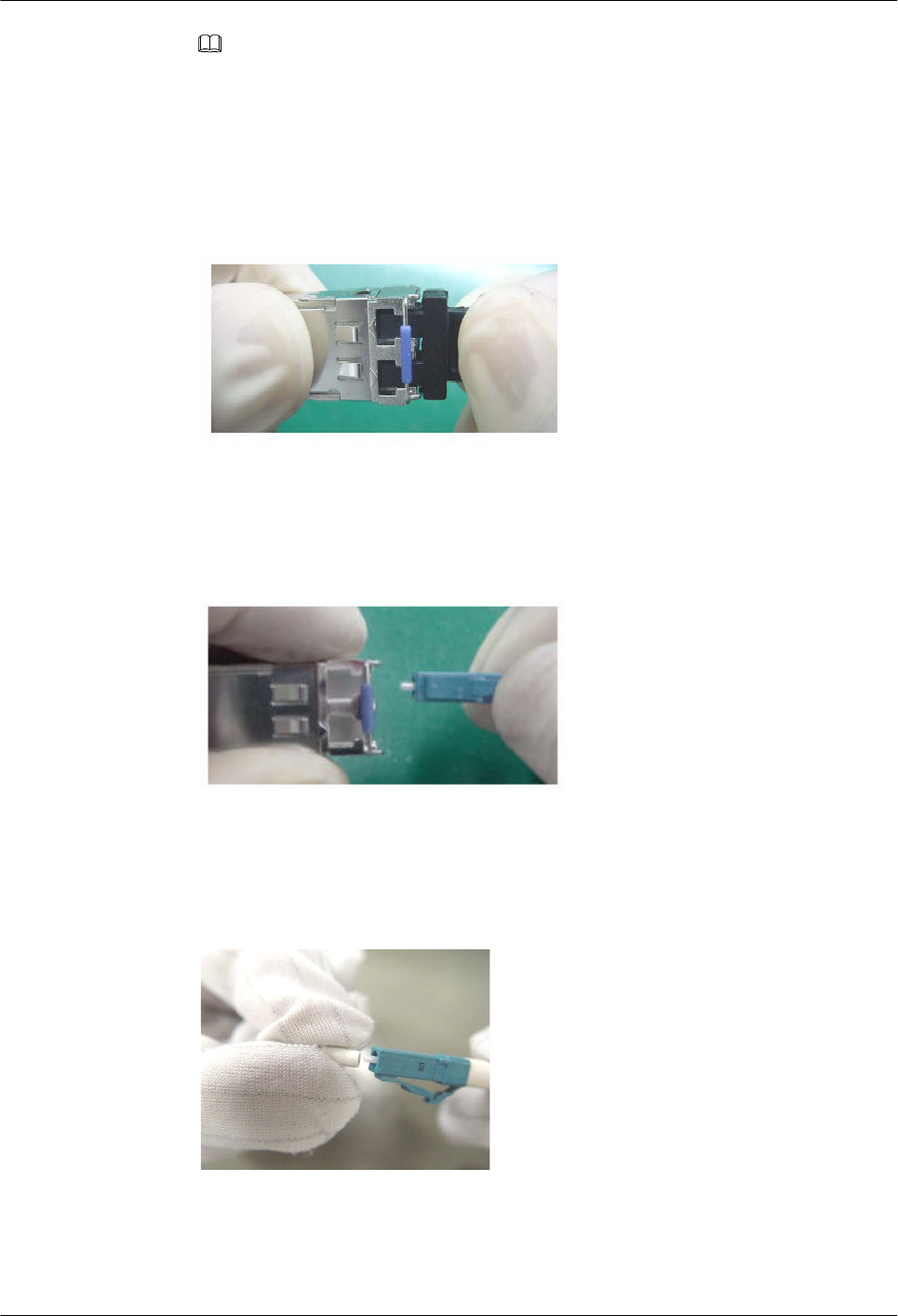
NOTE
Place at least three cleaning tissues on the work bench. As shown in Figure 5-96, wipe the end of
an optical connector from left to right or from right to left on a cleaning tissue, and then move the
connector end to the unused part of the cleaning tissue to continue.
2. Cover an unused optical module with a protective cap to prevent dust, as shown in
Figure 5-97.
Figure 5-97 Installing a protective cap
If no protective cap is available, use fibers to protect the optical module, as shown in
Figure 5-98.
Figure 5-98 Using fibers to protect an optical module
3. Cover unused optical connectors with protective caps, as shown in Figure 5-99, and then
lay out fibers on the fiber rack or coil them in a fiber management tray to prevent fibers
from being squeezed.
Figure 5-99 Installing a protective cap on a fiber
4. If a receptacle or an optical connector has not been used for a long time and is not
covered with a protective cap, you need to clean it before using it. Clean a receptacle
with a cotton swab, as shown in Figure 5-100. Clean an optical connector with cleaning
tissues.
AP2030DN
Hardware Installation and Maintenance Guide 5 Appendix
Issue 05 (2016-07-22) Huawei Proprietary and Confidential
Copyright © Huawei Technologies Co., Ltd.
100
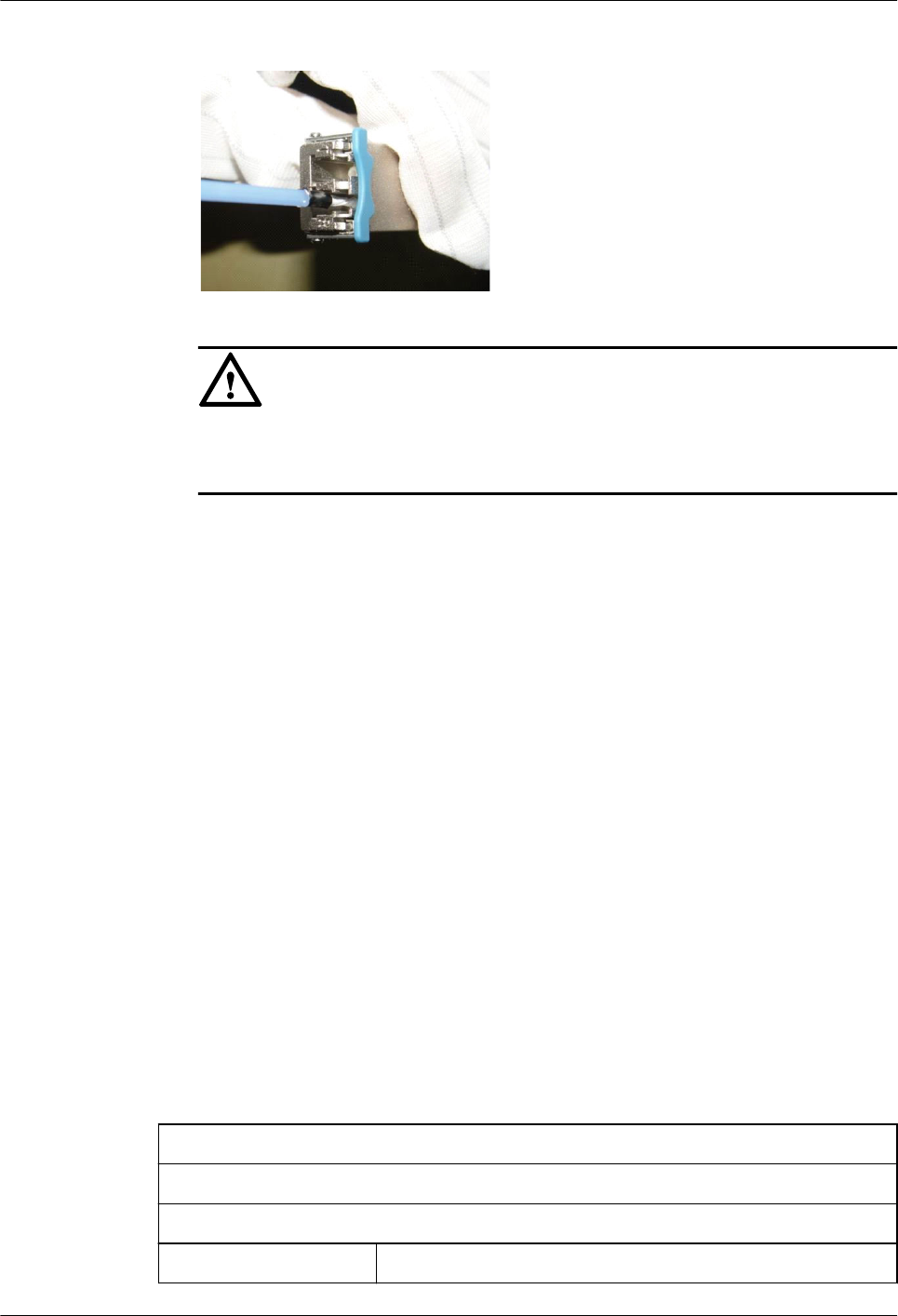
Figure 5-100 Cleaning a receptacle with a cotton swab
NOTICE
When cleaning a receptacle, insert the cotton swab and turn it slowly in the receptacle.
Do not use too much strength because the receptacle may be damaged.
5. If optical signals are lost during the operation of a device, use the preceding method to
clean the receptacle or the optical connector. In this manner, the possibility of
contamination can be excluded.
Measures to Prevent an Optical Module from Being Burnt
1. Before using an optical time-domain reflectometer (OTDR) to test the connectivity or the
attenuation of optical signals, disconnect the optical fibers from the optical module.
Otherwise, the optical module will be burnt.
2. When performing a self-loop test, use an optical attenuator. Do not loosen the optical
connector instead of the optical attenuator.
Precautions
1. The optical connector should be vertically inserted in the receptacle to avoid damages to
the receptacle.
2. Fibers must be inserted into optical modules of the corresponding type. That is,
multimode fibers must be inserted into multimode optical modules, and single mode
fibers must be inserted into single mode optical modules. If a fiber is inserted into an
optical module of a different mode, faults may occur. For example, optical signals will
be lost.
5.6 Fault Tag
*Customer name:
Address:
Contact person:
Tel.: Fax:
AP2030DN
Hardware Installation and Maintenance Guide 5 Appendix
Issue 05 (2016-07-22) Huawei Proprietary and Confidential
Copyright © Huawei Technologies Co., Ltd.
101

Category*: □ RMA □ Return □ Analysis
BOM
Code
Product
Description
Bar
Code*
Fault
Occurring
Date*
Description
of the Fault
Phenomena*
Category
No.*
Software
Version*
Reasons for Repairing (Category No.):
Category No. includes the following eight types:
F001 - Wear out damaged (◊ In warranty Period ◊ Out of warranty period)
F002 - Deployment damaged
F003 - Intransit damaged
F004 - Version upgrade
F005 - Batch replace
F007 - Overdue spare parts inspecting
F008 - Others
F011 - Running circumstance change
Note:
lFor optical interface cards returned, the optical interfaces should be covered with
protection caps.
lIn general, the analysis card will not be returned to you. If you have any special
requirements, please contact Huawei.
lOne Fault Tag should be adapted in one return category, such as RMA/Return/Analysis.
lThe items marked with "*" are the mandatory fields that you must fill in.
5.7 Installation Checklist
Com
pone
nt
No.
Applic
able
Scope
Check Item
AC 1Indepen
dent AC
The air vent of the device is free from blockage to ensure
normal heat dissipation.
AP2030DN
Hardware Installation and Maintenance Guide 5 Appendix
Issue 05 (2016-07-22) Huawei Proprietary and Confidential
Copyright © Huawei Technologies Co., Ltd.
102

Com
pone
nt
No.
Applic
able
Scope
Check Item
2Indepen
dent AC
The power modules are securely installed with their captive
screws tightly fixed.
3Indepen
dent AC
Four rubber pads are attached to specified positions on the
bottom of the AC before it is placed on a desk.
4Indepen
dent AC
The AC is secured in the cabinet or rack by rack-mounting
brackets or guide rails (or trays), and floating nuts are
correctly secured.
5 AC card
The AC card is secured in the cabinet or rack by guide rails
or trays, and the guide rails or trays and floating nuts are
correctly secured.
6 AC card The AC card is correctly inserted into the device slot and
secured using the ejector lever.
7 AC card No pins on the backplane are bent when the AC card is
installed.
8Indepen
dent AC
The AC is grounded using a ground cable, meeting surge
protection requirements.
9Indepen
dent AC
When the AC directly connects to APs, location IDs of the
APs are provided at the cable connection points.
PoE
power
supply
1 General The proper PoE switch or power adapter is selected, meeting
AP power supply and onsite environment requirements.
2 General
To ensure that the PoE power meets requirements, the PoE
power supply device and APs must be connected through
CAT5E and CAT6E network cables, and the cable length
cannot exceed 100 m.
3 General Labels must be made for the PoE power cable to identify AP
locations.
4 General Leave a 20 cm space between PoE power adapters to ensure
normal heat dissipation.
5 General The PoE switch is correctly grounded with the ground cable.
6 General
Reserve a few downlink network interfaces for the PoE
switch (for example, connect at most 20 APs to a 24-port
switch) for future capacity expansion.
7 General
You are advised to configure dual power modules for a PoE
switch for power redundancy backup and providing power
for more APs.
AP2030DN
Hardware Installation and Maintenance Guide 5 Appendix
Issue 05 (2016-07-22) Huawei Proprietary and Confidential
Copyright © Huawei Technologies Co., Ltd.
103

Com
pone
nt
No.
Applic
able
Scope
Check Item
AP
1 General
The AP installation positions comply with the network
planning report and APs cannot be installed in environments
with strong electrical or magnetic interference or corrosive
materials. If the onsite environment does not meet
requirements, adjust the AP installation positions properly.
2 General The devices are installed correctly, securely, without
damages or paint peeling. Screws are tightened.
3 General
Leave at least 20 cm space at the cable outlet and top
(convex) of the AP to facilitate commissioning, maintenance,
and heat dissipation. APs that dissipate heat from the rear
must be fixed using mounting brackets in wall mounting
scenarios. Ensure that there is a certain space between the
APs and wall to facilitate heat dissipation.
4 General
APs with built-in antennas should be installed in open areas
and there should be no obvious obstruction in the coverage
direction of the main lobe. The main lobe of built-in antennas
faces the top (convex).
5 General The APs and antennas are neatly installed, without affecting
the overall layout of the environment.
6Indoor
AP
Indoor APs are placed far away from windows and in dry
environments with little dust and good ventilation. There
should be no inflammable materials in rooms. The indoor
temperature and humidity must be within acceptable ranges.
7Indoor
AP
When being mounted to a ceiling, the APs must be fixed
using the matching mounting brackets. The APs cannot be
hung in the air or placed directly on the ceiling. When the
APs are mounted to a wall, the bottom of the APs should be
at least 30 mm from the ground. The APs should be installed
in places out of reach of people.
8Outdoor
AP
When two or more APs are installed in the same area, they
must be installed in the same vertical or horizontal line with
certain spacing greater than 15 mm.
9 General
Dustproof, waterproof, and anti-theft measures are taken and
the devices are kept clean. The APs are secured using the
security locks (separately purchased) based on onsite
situations and customer requirements. If APs are placed in a
network box, ensure that the box is well-ventilated, clean,
and dustless, and the ventilation holes are not blocked.
AP2030DN
Hardware Installation and Maintenance Guide 5 Appendix
Issue 05 (2016-07-22) Huawei Proprietary and Confidential
Copyright © Huawei Technologies Co., Ltd.
104

Com
pone
nt
No.
Applic
able
Scope
Check Item
10 Indoor
AP
Indoor APs should be mounted on walls with network ports
downwards to prevent device damages caused by water drops
or other liquid. Install the device in a site that is free from
leaking or dripping water, heavy dew, and humidity, and take
protective measures to prevent water from flowing into the
equipment along the cable.
11 Outdoor
AP
When an outdoor AP is installed against a wall or pole, keep
the indicator downwards for easy observation.
12 General
Use waterproof labels to mark the registration names of APs
on the AC, as well as their channels and IP addresses. The
lables should be attached to the front of the APs for easy
observation.
13 General
Record AP installation positions, MAC addresses, interfaces
of uplink PoE switches, and IP addresses (APs use fixed IP
addresses) into a table.
14 Indoor
AP
The devices required during indoor AP installation, such as
the splitter, coupler, and antennas are operated in accordance
with specifications.
15 General The APs using a metal shell (with a ground point) must be
properly grounded.
16 Outdoor
AP Unused radio ports should be installed with 50 Ω RF loads.
17 Outdoor
AP
Take lightning protection measures on outdoor APs (the
outdoor APs have built-in 5 kV surge protectors. If
customers require a higher surge protection capability on the
feeder ports, they can purchase additional surge protective
devices, which need to be separately grounded). The APs
should be located in the protection scope (within a 45-degree
angle) of a lightning rod.
18 Outdoor
AP
When an AP is mounted to a pole, the distance between the
AP and the top of pole should be at least 30 cm.
Signal
cable 1 General
Routes of signal cables comply with the engineering design
document. The signal cables are correctly connected to
facilitate maintenance and capacity expansion.
2 General Radio ports of an AP are correctly connected to radio ports
A/B/C of antennas.
3 General
Signal cable connectors are correctly installed and securely
connected to the device. Wires of each signal cable are
securely cramped in the connectors and pass connectivity
tests.
AP2030DN
Hardware Installation and Maintenance Guide 5 Appendix
Issue 05 (2016-07-22) Huawei Proprietary and Confidential
Copyright © Huawei Technologies Co., Ltd.
105

Com
pone
nt
No.
Applic
able
Scope
Check Item
4 General
Signal cables are orderly routed and not crossed, twisted, or
winded (cables can be crossed at 1 m out of the cabinet). The
bend radius of cables meets requirements, and the cables are
not excessively bent.
5 General
Signal cables are not damaged or broken and have no splices.
Sufficient cable length is reserved. The reserved cables are
twined and placed properly to facilitate subsequent
maintenance.
6Indoor
AP
The optical, power, network, and feeder cables are bundled
using straps (one strap every 0.5 m) and securely fastened.
7Outdoor
AP
The signal cables shall be bundled at even intervals (about
1000 mm), not too tight or too loose. The cables shall be
bundled properly with cable ties placed in neat order. Cut off
redundant cable ties and remove burrs from them to avoid
injuries. The cables shall be fixed using fasteners or ageing-
resistant outdoor metal binding straps.
8 General
Keep the signal cables away from heat sources and use heat
insulation materials to insulate the cables from the heat
sources. Do not place signal cables on the air vents of the
cabinet to avoid affecting subrack heat dissipation or cable
lifetime.
9 General
Pigtail layout should meet the following requirements:
lPigtails are not strained or twisted at the bent parts. They
are bundled by binding tape with appropriate force.
lPigtails can be pulled back and forth easily inside the
cable tie and are not bent at a right angle.
lPigtails are not squeezed by other cables or objects.
lThe flange must be fixed.
lPigtails are protected with protective tubes or enveloped
in troughs when they are routed outside the cabinet. The
protective tubes are bundled and processed to prevent
cutting.
lThe optical fiber cannot be folded or twisted, and the
pigtail cannot be squeezed. The binding diameter of an
optical fiber must be larger than 6 cm.
lThe pigtail connection points must be clean and dustless.
Fiber connectors and optical ports that are not used must
be protected with protective caps or plugs. Cleaning must
be carried out in strict accordance with Huawei tool
specifications.
10 General The feeder cables shall not be bent or twisted, with no copper
wire exposed.
AP2030DN
Hardware Installation and Maintenance Guide 5 Appendix
Issue 05 (2016-07-22) Huawei Proprietary and Confidential
Copyright © Huawei Technologies Co., Ltd.
106

Com
pone
nt
No.
Applic
able
Scope
Check Item
11 General The feeder cable connectors comply with corresponding
standards and are correctly connected, without looseness.
12 General
The feeder cables, power splitter, coupler, and surge
protective devices are connected correctly and reliably in
accordance with specifications.
13 General
Strong current and weak current cables are routed separately.
The power cables, ground cables, and signal cables are
bundled and routed separately (with a spacing of more than
30 mm) to prevent electrical or magnetic interference. Use
shielded cables in places with strong interference.
14 General
When routing cables in walls, place the cables in the cable
troughs or pipes and fix the cables using pipe straps. For non-
metal corrugated pipes, the fixing distance should be about
1000 mm.
15 Outdoor
AP
All outdoor connectors or feeder cable connectors are
properly sealed to prevent water. Wrap the cable using one-
layer PVC insulation tape, three-layer waterproof tape, and
then three-layer PVC insulation tape. The tape shall be
attached evenly and neatly. The network cables shall be
covered with waterproof PG tubes.
16 Outdoor
AP
Cable connectors are secured on cables and sealed to prevent
water intrusion. The outlets of cable conduits on a wall are
sealed by waterproof and flame-retardant materials. Drip
loops meeting the minimum bending radius requirement are
made on the network cable segment that stretches indoor.
17 Outdoor
AP Do not deploy cables overhead between two buildings.
18 General
Waterproof labels (providing device names and cable
directions) are filled and attached to signal cables correctly.
Each label is attached 20 mm to 100 mm from the
corresponding cable connector.
19 Outdoor
AP
Surge protection measures are taken in the places where the
outdoor APs are installed. The outdoor APs, antennas, and
signal cables are deployed within 45-degree protection area
of a lightning rod.
20 Outdoor
AP
The bare wires of network and feeder cables should be
covered by the winding pipes, flexible metal conduit, PVC
pipes, or galvanization pipes. The cable outlet and inlet are
sealed to prevent dusts.
AP2030DN
Hardware Installation and Maintenance Guide 5 Appendix
Issue 05 (2016-07-22) Huawei Proprietary and Confidential
Copyright © Huawei Technologies Co., Ltd.
107

Com
pone
nt
No.
Applic
able
Scope
Check Item
Anten
na 1 General
The installation positions of antennas should comply with the
engineering design and antennas should be securely and
reliably installed.
2 General
There should be no obstacles in the major coverage direction
of antennas. The direction and downlink tilt of antennas
should be adjusted based on the coverage targets.
3 General There should not be metal subjects within 1 m around an
outdoor omnidirectional antenna.
4 General The azimuth deviation of a directional antenna should be
within 5 degrees and the tilt deviation within 0.5 degree.
5Outdoor
antenna
The antennas are fixed using special support that supports
installation of surge protection devices and shall be located
within a 45 degree protection angle of a lightning rod. When
an antenna is mounted to a pole, the distance between the
antenna and top of the pole should be at least 30 cm.
6Outdoor
antenna
Take waterproof measures on connectors of the antennas and
feeder cables and keep the drain holes of antennas
downwards.
7Outdoor
antenna
The pole used in antenna mounting should meet the
following requirements:
Pole height: ≥ 2000 mm
Bottom pole diameter: ≥ 220 mm
Top pole diameter: ≥ 120 mm
Pole thickness: ≥ 6 mm
Depth of foundation: ≥ 1500 mm
The pole deployed outdoors must be reinforced with hot-dip
zinc to prevent water corrosion and rust.
8Outdoor
antenna
It is recommended that at most three APs or antennas be
mounted to the same pole. The APs or antennas mounted to
the same pole should meet the following requirements:
lThe vertical distance should be at least 3.5 m between
adjacent 2.4G antennas and 2 m between adjacent 5G
antennas.
lThere should be at least 1 m vertical distance between
antennas that work on the same frequency band and
belong to different APs.
9Outdoor
antenna
When outdoor APs use single-polarized antennas, the
horizontal distance between 2.4G antennas should be at least
1 m and that between 5G antennas should be at least 0.5 m.
AP2030DN
Hardware Installation and Maintenance Guide 5 Appendix
Issue 05 (2016-07-22) Huawei Proprietary and Confidential
Copyright © Huawei Technologies Co., Ltd.
108

Com
pone
nt
No.
Applic
able
Scope
Check Item
10 Outdoor
antenna
If multiple APs are mounted to different poles, the APs
should provide signal coverage in the same direction or in
back-to-back mode to ensure that main lobe of antennas on
different APs do not face each other.
Recommended AP distance:
≥ 44 m (APs provide signal coverage in the same direction)
≥ 6 m (APs provide distance in back-to-back mode)
Power
and
groun
d
cables
1 General The female connectors of power cables connecting to the
device are fixed using a locking latch.
2 General The power cables and ground cables are correctly connected.
3 General The power cables and ground cables are complete and not
spliced.
4 General
The excess of power cables or ground cables are trimmed off
without any coils. The power cables connecting the delivered
surge protection boxes and devices cannot be cut. These
power cables can be coiled.
5 General Power cables and ground cable are separated from the signal
cables.
6 General
Power cables and ground cables are routed straightly and
properly bundled, with sufficient slack at the bend part. If the
cables are fixed on a sharp mechanical part, take protection
measures.
7 General The equipotential cables between the attaching cabinets shall
be securely connected.
8 General The lugs for the power cables and ground cables are soldered
or crimped securely.
9 General
The lugs and bare wires of power cables and ground cables
are tightly wrapped with tubes or insulation tape without any
exposed copper wire. Flat washers and spring washers are
installed correctly.
10 General Labels are filled and attached to power cables and ground
cables correctly.
11 General Power cables deployed outdoors must be covered by PVC
tubes.
Optica
l
modul
e
1 General
A single-mode fiber can only be used with a single-mode
optical module while a multimode optical fiber can only be
used with a multimode optical module. On most optical
modules, the fibers of different types cannot be used together.
AP2030DN
Hardware Installation and Maintenance Guide 5 Appendix
Issue 05 (2016-07-22) Huawei Proprietary and Confidential
Copyright © Huawei Technologies Co., Ltd.
109

Com
pone
nt
No.
Applic
able
Scope
Check Item
2 General
The labels of pluggable optical modules are smoothly
attached and intact, and cannot be covered by the optical
modules.
3 General
If a short-distance optical fiber is used for a long-distance
optical module, especially in loopback scenarios, use an
optical attenuator to prevent the optical module from being
burnt.
AP2030DN
Hardware Installation and Maintenance Guide 5 Appendix
Issue 05 (2016-07-22) Huawei Proprietary and Confidential
Copyright © Huawei Technologies Co., Ltd.
110

AP2030DN
Product Description
Issue 01
Date 2015-03-10
HUAWEI TECHNOLOGIES CO., LTD.

Issue 01 (2015-03-10) Huawei Proprietary and Confidential
Copyright © Huawei Technologies Co., Ltd.
i
Copyright © Huawei Technologies Co., Ltd. 2015. All rights reserved.
No part of this document may be reproduced or transmitted in any form or by any means without prior
written consent of Huawei Technologies Co., Ltd.
Trademarks and Permissions
and other Huawei trademarks are trademarks of Huawei Technologies Co., Ltd.
All other trademarks and trade names mentioned in this document are the property of their respective
holders.
Notice
The purchased products, services and features are stipulated by the contract made between Huawei and
the customer. All or part of the products, services and features described in this document may not be
within the purchase scope or the usage scope. Unless otherwise specified in the contract, all statements,
information, and recommendations in this document are provided "AS IS" without warranties, guarantees or
representations of any kind, either express or implied.
The information in this document is subject to change without notice. Every effort has been made in the
preparation of this document to ensure accuracy of the contents, but all statements, information, and
recommendations in this document do not constitute a warranty of any kind, express or implied.
Huawei Technologies Co., Ltd.
Address: Huawei Industrial Base
Bantian, Longgang
Shenzhen 518129
People's Republic of China
Website: http://e.huawei.com
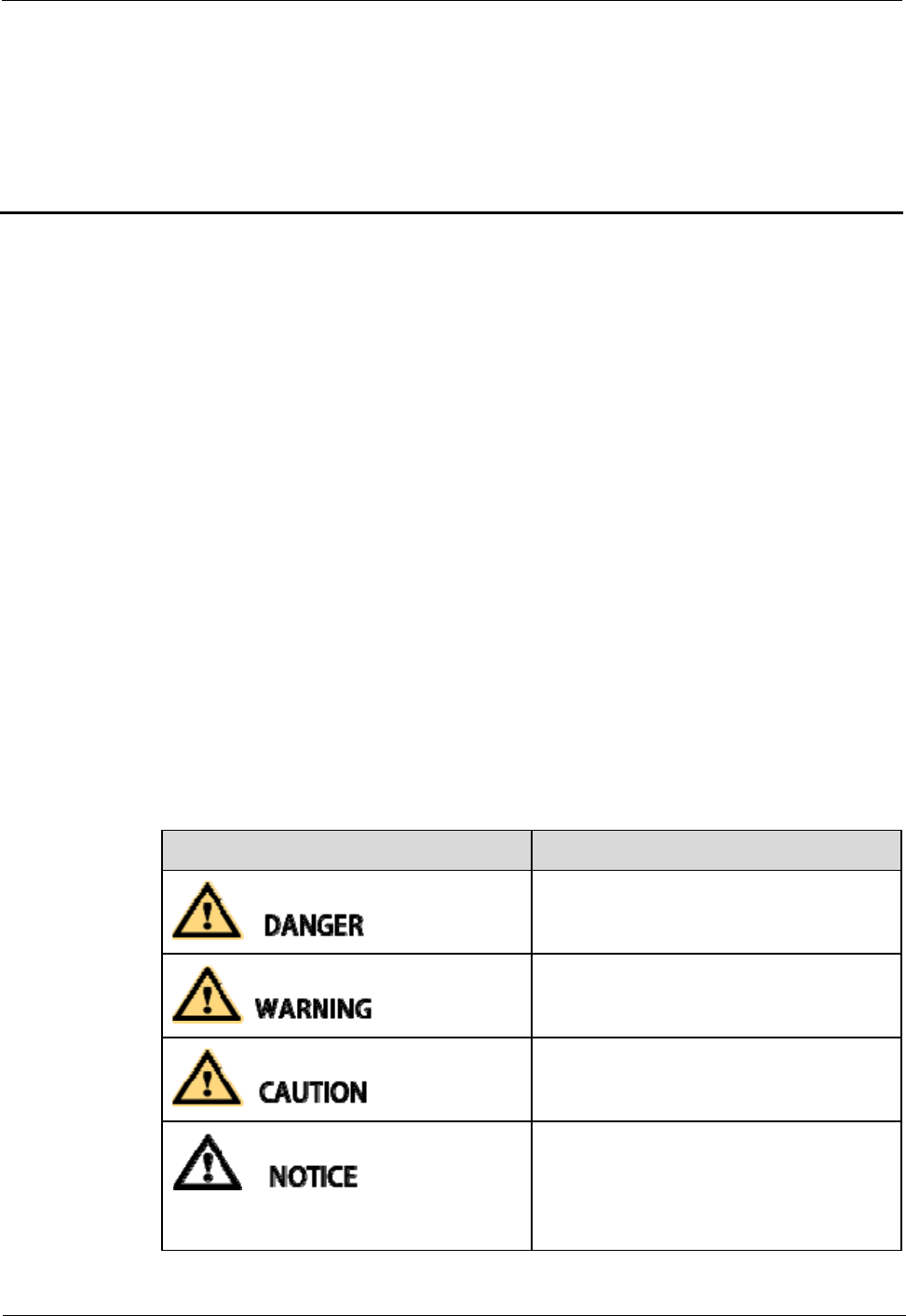
AP2030DN
Product Description About This Document
Issue 01 (2015-03-10) Huawei Proprietary and Confidential
Copyright © Huawei Technologies Co., Ltd.
ii
About This Document
Intended Audience
This document describes the positioning, characteristics, hardware structure, product features,
and technical specifications of the AP.
This document helps you understand the characteristics and features of the AP.
This document is intended for:
z Network planning engineers
z Hardware installation engineers
z Commissioning engineer
z Data configuration engineers
z On-site maintenance engineers
z Network monitoring engineers
z System maintenance engineers
Symbol Conventions
The symbols that may be found in this document are defined as follows.
Symbol Description
Indicates an imminently hazardous situation
which, if not avoided, will result in death or
serious injury.
Indicates a potentially hazardous situation
which, if not avoided, could result in death
or serious injury.
Indicates a potentially hazardous situation
which, if not avoided, may result in minor
or moderate injury.
Indicates a potentially hazardous situation
which, if not avoided, could result in
equipment damage, data loss, performance
deterioration, or unanticipated results.
NOTICE is used to address practices not

AP2030DN
Product Description About This Document
Issue 01 (2015-03-10) Huawei Proprietary and Confidential
Copyright © Huawei Technologies Co., Ltd.
iii
Symbol Description
related to personal injury.
Calls attention to important information,
best practices and tips.
NOTE is used to address information not
related to personal injury, equipment
damage, and environment deterioration.
Change History
Changes between document issues are cumulative. The latest document issue contains all the
changes made in previous issues.
Changes in Issue 01 (2015-03-10)
This is the initial commercial release.

AP2030DN
Product Description Contents
Issue 01 (2015-03-10) Huawei Proprietary and Confidential
Copyright © Huawei Technologies Co., Ltd.
iv
Contents
About This Document .................................................................................................................... ii
1 Product Positioning and Characteristics ................................................................................... 1
1.1 Product Positioning ....................................................................................................................................................... 1
1.2 Product Characteristics ................................................................................................................................................. 3
2 Hardware Structure....................................................................................................................... 6
2.1 AP2030DN .................................................................................................................................................................... 6
3 Product Features ............................................................................................................................ 9
3.1 WLAN Features ............................................................................................................................................................ 9
3.2 Network Features .......................................................................................................................................................... 9
3.3 QoS Features ............................................................................................................................................................... 10
3.4 Security Features ........................................................................................................................................................ 10
3.5 Maintenance Features ................................................................................................................................................. 11
3.6 BYOD ......................................................................................................................................................................... 11
3.7 Spectrum Analysis ...................................................................................................................................................... 11
4 Technical Specifications ............................................................................................................ 12
4.1 Basic Specifications .................................................................................................................................................... 12
4.2 Radio Specifications ................................................................................................................................................... 13
4.3 Standards Compliance ................................................................................................................................................ 16
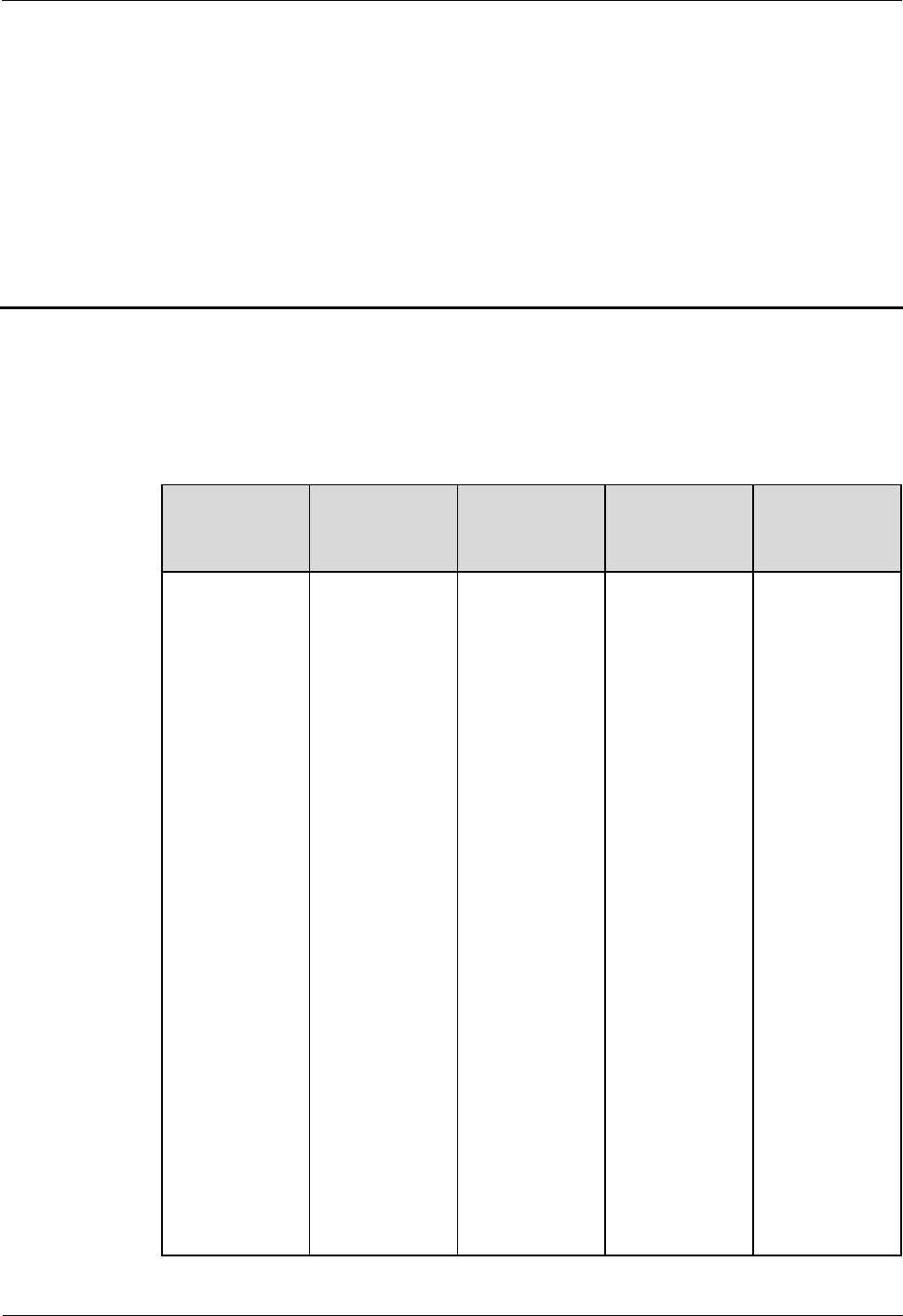
AP2030DN
Product Description 1 Product Positioning and Characteristics
Issue 01 (2015-03-10) Huawei Proprietary and Confidential
Copyright © Huawei Technologies Co., Ltd.
1
1 Product Positioning and Characteristics
1.1 Product Positioning
Table 1-1 Product positioning
Model Frequency
Band
Supported
IEEE
Standards
Compliance
Positioning Usage
Scenario
AP2030DN Dual bands
supported:
z 2.4 GHz
z 5 GHz
The AP
provides
services
simultaneously
on the 2.4 GHz
and 5 GHz
frequency
bands to
support more
access users.
IEEE
802.11a/b/g/n/a
c
Huawei
AP2030DN is a
wall plate
access point. It
uses an 86 mm
x 86 mm plate
design and can
be easily
installed in an
86-type box.
The AP2030DN
is beautifully
designed, with
built-in
antennas, a
hidden
indicator, and a
sliding panel. It
provides
comprehensive
service support
capabilities and
features high
security, simple
network
deployment,
automatic AC
discovery and
configuration,
and real-time
AP2030DN
offers both
wired and
wireless
network
connections,
applicable to
hotels,
apartments, and
offices.

AP2030DN
Product Description 1 Product Positioning and Characteristics
Issue 01 (2015-03-10) Huawei Proprietary and Confidential
Copyright © Huawei Technologies Co., Ltd.
2
Model Frequency
Band
Supported
IEEE
Standards
Compliance
Positioning Usage
Scenario
management
and
maintenance.
The AP2030DN
can connect to
wireless
terminals
through
wireless
connections or
to wired
terminals using
wired cables.
This makes it
the ideal choice
of customers to
construct indoor
distributed
networks.
The following figure shows typical AP2030DN networking.
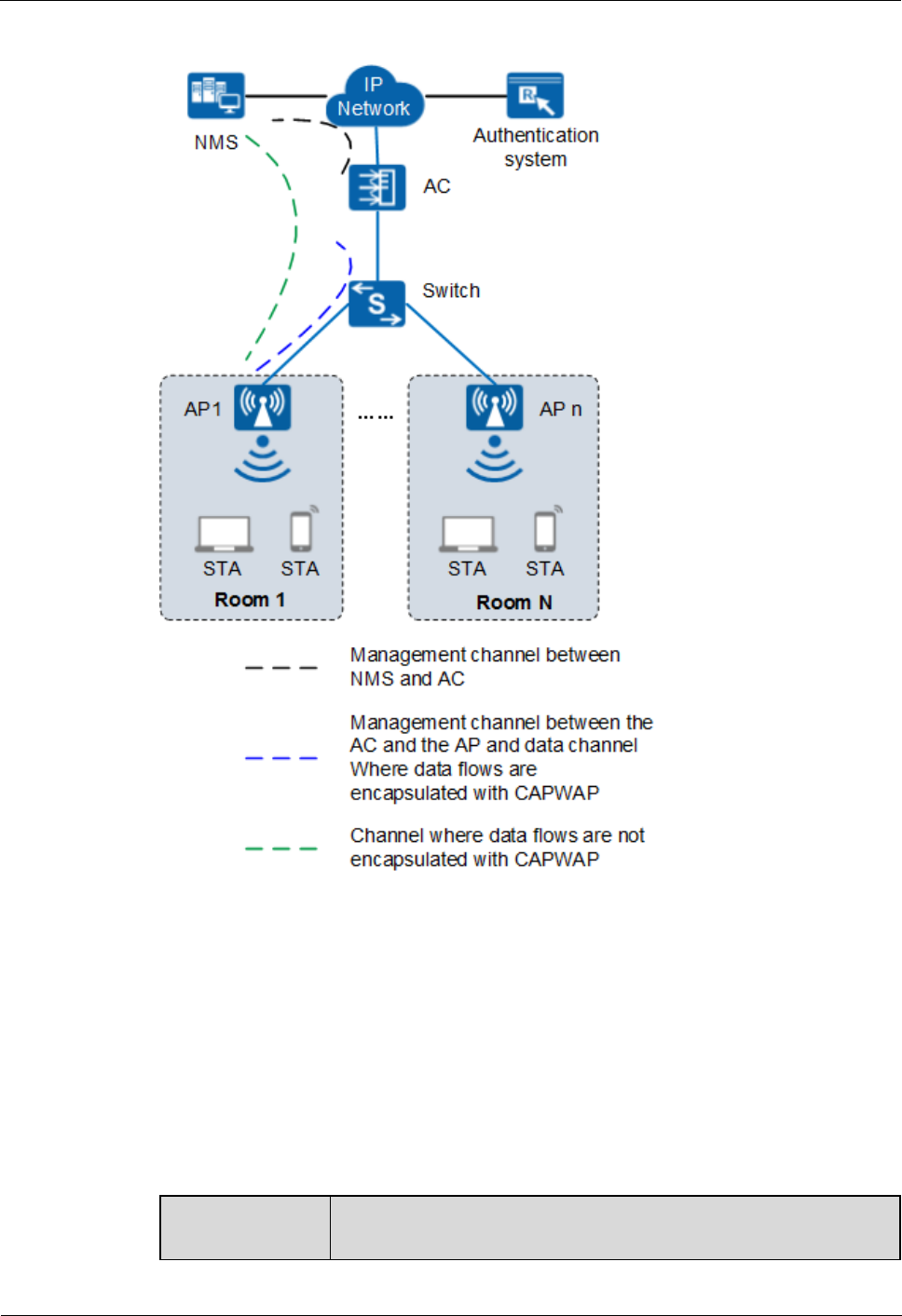
AP2030DN
Product Description 1 Product Positioning and Characteristics
Issue 01 (2015-03-10) Huawei Proprietary and Confidential
Copyright © Huawei Technologies Co., Ltd.
3
Figure 1-1 Fit AP networking
In this networking, the AP functions as a Fit AP. The AC is responsible for user access, AP
go-online, AP management, authentication, routing, security, and QoS. Huawei products that
provide the AC function include the AC6605, AC6005, ACU2 (with S7700, S9700, or
S12700), S5720HI, S7700 (with X series board), S9700 (with X series board), and S12700
(with X series board).
1.2 Product Characteristics
The AP2030DN has the following advantages on a WLAN.
Product
Characteristics
Description

AP2030DN
Product Description 1 Product Positioning and Characteristics
Issue 01 (2015-03-10) Huawei Proprietary and Confidential
Copyright © Huawei Technologies Co., Ltd.
4
Product
Characteristics
Description
High-speed and
reliable wireless
access
z Compatibility with IEEE 802.11a/b/g/n/ac.
z 2 x 2 MIMO and a maximum rate of 1.16 Gbit/s
z Supports Wi-Fi Multimedia (WMM) and priority mapping on the
air interface and wired interface.
z Working simultaneously on 2.4 GHz and 5 GHz frequency bands
z Supports wired link integrity check.
z Supports roaming without service interruptions.
z Supports beamforming.
z Uses the latest 802.11n chip to provide higher performance and
wider coverage.
z Supports airtime scheduling which ensures fairness in channel
occupation time for all users.
Comprehensive
user access control
capability
z Supports access control lists (ACLs) and implements user access
control based on the user group policy.
z Provides fine-grained bandwidth management for each user.
z Supports user isolation policies.
z Supports uniform authentication on an AC.
z Identifies the device type according to the organizationally unique
identifier (OUI) in the MAC address, user agent (UA) information
in an HTTP packet, and DHCP options in Fit AP mode.
z The RADIUS server delivers packet forwarding, security, and
QoS policies according to the device type carried in the RADIUS
authentication and accounting packets.
High network
security
z Open system authentication
z WEP authentication/encryption
z WPA/WPA2-PSK authentication and encryption
z WPA/WPA2-802.1x authentication and encryption
z WAPI authentication and encryption
z Wireless intrusion detection system (WIDS) and wireless
intrusion prevention system (WIPS), including rogue device
detection and countermeasure, attack detection and dynamic
blacklist, and STA/AP blacklist and whitelist
z Auto shutdown of the AP's wired interface. In some cases, a loop
may occur on a network connected to the AP's wired interface, for
example, when the AP and the network are connected through a
hub. The auto shutdown function enables the AP to automatically
shut down its wired interface for protection.
NOTE
This function takes effect only when the wired network connected to the AP's
wired interface does not terminate STP packets from the AP.
Flexible
networking and
environment
z Has strong environment adaptability. The AP can automatically
select the transmission rates, channels, and transmit power to
adapt to various radio environments and avoid interference in real

AP2030DN
Product Description 1 Product Positioning and Characteristics
Issue 01 (2015-03-10) Huawei Proprietary and Confidential
Copyright © Huawei Technologies Co., Ltd.
5
Product
Characteristics
Description
adaptability time.
z Adjusts bandwidth allocation based on the user quantity and
environment to improve user experience.
z Works in Fit AP mode to identify interference sources such as
baby monitors, Bluetooth devices, digital cordless phones (at 2.4
GHz frequency band only), wireless audio transmitters (at both the
2.4 GHz and 5 GHz frequency bands), wireless game controllers,
and microwaves, and works together with eSight to locate
interference sources and display spectrums.
Easy device
management and
maintenance
z Works in Fit AP mode to support automatic going-online,
configuration loading, and plug-and-play (PnP).
z Supports batch upgrade.
z Allows real-time monitoring on the network management system
(NMS) to facilitate remote configuration and fast fault location.
z Supports the Link Layer Discovery Protocol (LLDP) to implement
automatic link discovery and obtain the network topology.
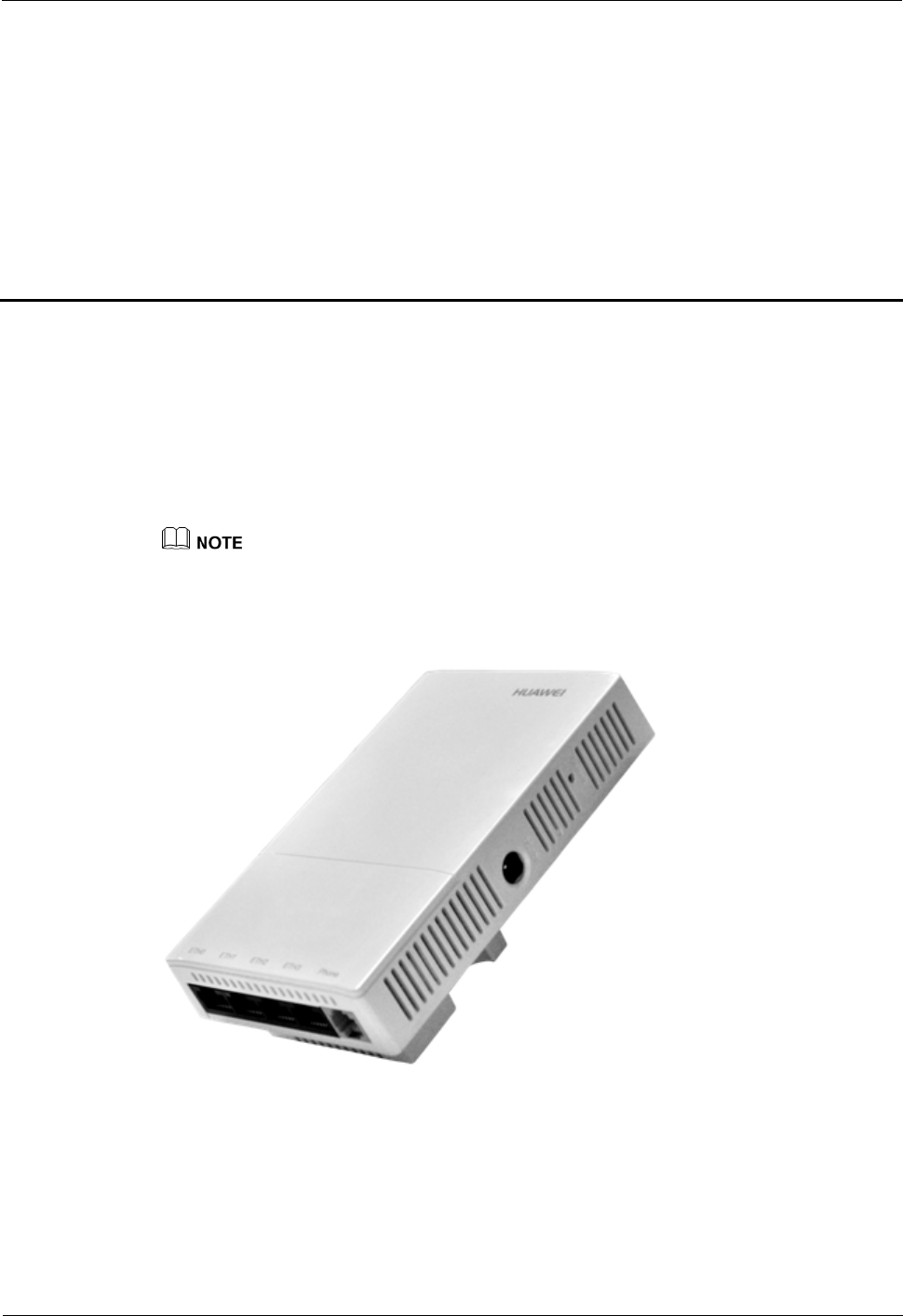
AP2030DN
Product Description 2 Hardware Structure
Issue 01 (2015-03-10) Huawei Proprietary and Confidential
Copyright © Huawei Technologies Co., Ltd.
6
2 Hardware Structure
2.1 AP2030DN
Appearance
Figure 2-1 shows the appearance of the device.
The actual device appearance may be different from the following device appearance; these differences
will not affect device functions.
Figure 2-1 Appearance
Port
Figure 2-2 shows ports on the device.
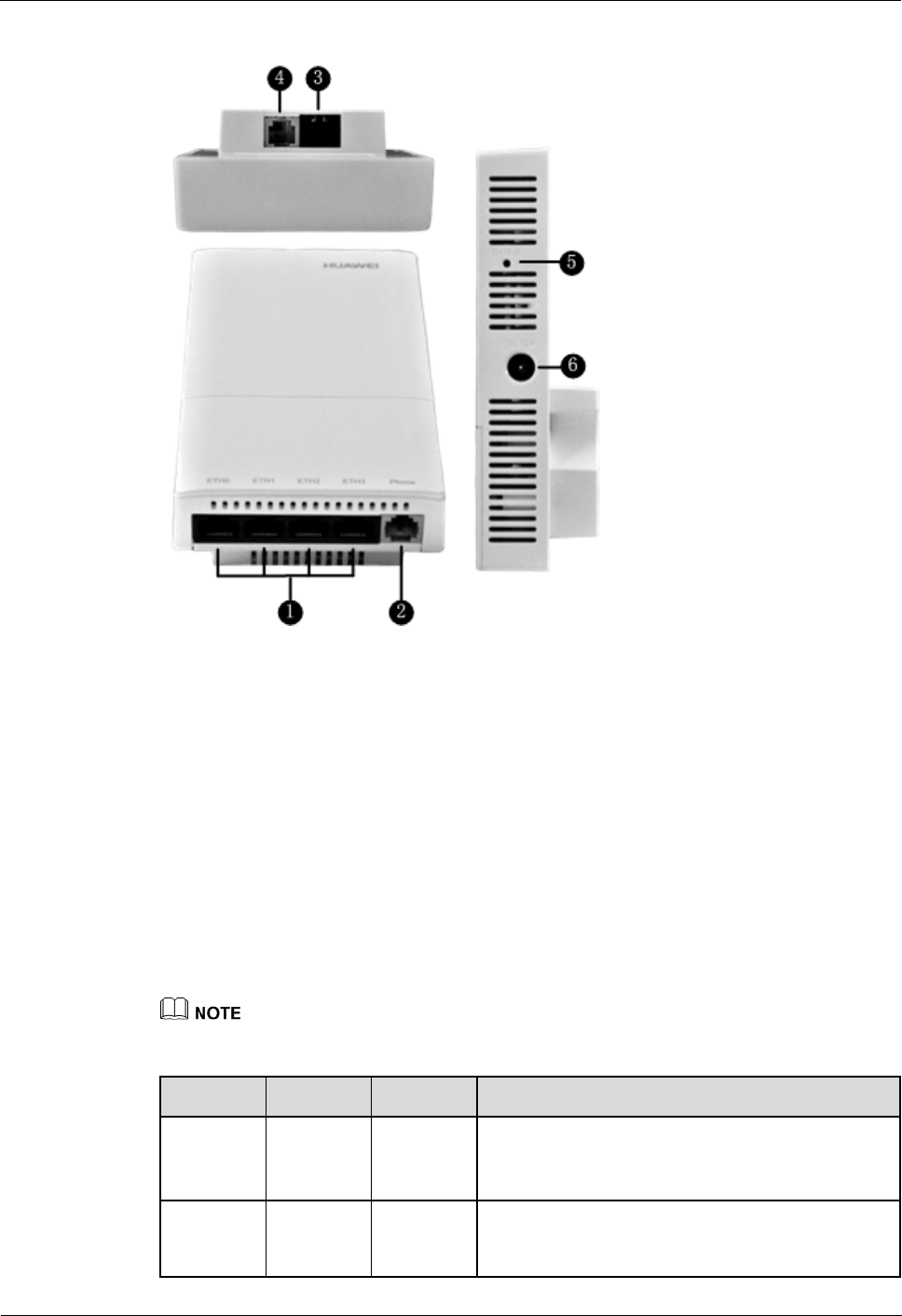
AP2030DN
Product Description 2 Hardware Structure
Issue 01 (2015-03-10) Huawei Proprietary and Confidential
Copyright © Huawei Technologies Co., Ltd.
7
Figure 2-2 Ports
Each port can be described as follows:
1. ETH0~3: 10/100M port used to connect to the wired Ethernet.
2. Phone: Phone interface: connects to a POTS phone or modem device.
3. GE/PoE: 10/100/1000M port used to connect to the wired Ethernet. The port can connect
to a PoE power supply to provide power for the device.
4. Phone: Phone interface: connects to a traditional PSTN.
5. Default: Reset button used to restore factory settings if you hold down the button more
than 3 seconds.
6. Power input interface: 12 V DC.
LED Indicator
The actual indicator color may vary according to temperature.
The device has indicators located inside the panel. The indicators turn on after the device is powered on.
Type Color Status Description
Default
status after
power-on
Green Steady on The AP is just powered on and the software is not
started yet.
Software
startup
Green Steady on
after
blinking
After the system is reset and starts uploading the
software, the indicator blinks green once. Until the
software is uploaded and started, the indicator

AP2030DN
Product Description 2 Hardware Structure
Issue 01 (2015-03-10) Huawei Proprietary and Confidential
Copyright © Huawei Technologies Co., Ltd.
8
Type Color Status Description
status once remains steady green.
Running
status
Green Blinking
once every
2s (0.5
Hz)
z The system is running properly, the Ethernet
connection is normal, and STAs are associated
with the AP.
z The system enters the Uboot CLI.
Blinking
once every
5s (0.2
Hz)
The system is running properly, the Ethernet
connection is normal, and no STA is associated
with the AP. The system is in low power
consumption state.
Alarm Green Blinking
once every
0.25s (4
Hz)
z The software is being upgraded.
z After the software is uploaded and started, the
AP working in Fit AP mode requests to go
online on the AC and maintains this state until
it goes online successfully on the AC (before
the CAPWAP link is established).
z The AP working in Fit AP mode fails to go
online on the AC (the CAPWAP link
disconnects).
Fault Red Steady on A fault that affects services has occurred, such as a
DRAM detection failure or system software
loading failure. The fault cannot be automatically
rectified and must be rectified manually.

AP2030DN
Product Description 3 Product Features
Issue 01 (2015-03-10) Huawei Proprietary and Confidential
Copyright © Huawei Technologies Co., Ltd.
9
3 Product Features
3.1 WLAN Features
WLAN features supported by the AP are as follows:
z Compliance with IEEE 802.11a/b/g/n/ac
z Maximum rate of 1.16 Gbit/s
z Maximum ratio combining (MRC)
z Space time block code (STBC)
z Beamforming
z Low-density parity-check (LDPC)
z Maximum-likelihood detection (MLD)
z Frame aggregation, including A-MPDU (Tx/Rx) and A-MSDU (Rx only)
z Short guard interval (GI) in 20 MHz, 40 MHz, and 80 MHz modes
z Priority mapping and packet scheduling based on a Wi-Fi Multimedia (WMM) profile to
implement priority-based data processing and forwarding
z Automatic and manual rate adjustment
z WLAN channel management and channel rate adjustment
For details about WLAN channel management, see the Country Code & Channel Compliance Table.
z Automatic channel scanning and interference avoidance
z Service set identifier (SSID) hiding
z Signal sustain technology (SST)
z Unscheduled automatic power save delivery (U-APSD)
z Control and Provisioning of Wireless Access Points (CAPWAP)
z Automatic login
z Extended Service Set (ESS)
z Multi-user CAC
3.2 Network Features
Network features supported by the AP are as follows:

AP2030DN
Product Description 3 Product Features
Issue 01 (2015-03-10) Huawei Proprietary and Confidential
Copyright © Huawei Technologies Co., Ltd.
10
z Compliance with IEEE 802.3u
z Auto-negotiation of the rate and duplex mode and automatic switchover between the
Media Dependent Interface (MDI) and Media Dependent Interface Crossover (MDI-X)
z Compliance with IEEE 802.1q
z SSID-based VLAN assignment
z VLAN trunk on uplink Ethernet ports
z Management channel of the AP uplink port in tagged and untagged mode
z DHCP client, obtaining IP addresses through DHCP
z Tunnel data forwarding and direct data forwarding
z STA isolation in the same VLAN
z Access control lists (ACLs)
z Link Layer Discovery Protocol (LLDP)
z Uninterrupted service forwarding upon CAPWAP channel disconnection
z Unified authentication on the AC
z AC dual-link backup
z IPv6
3.3 QoS Features
QoS features supported by the AP are as follows:
z Priority mapping and packet scheduling based on a Wi-Fi Multimedia (WMM) profile to
implement priority-based data processing and forwarding
z WMM parameter management for each radio
z WMM power saving
z Priority mapping for upstream packets and flow-based mapping for downstream packets
z Queue mapping and scheduling
z User-based bandwidth limiting
z Adaptive bandwidth management (automatic bandwidth adjustment based on the user
quantity and radio environment) to improve user experience
z Airtime scheduling
3.4 Security Features
Security features supported by the AP are as follows:
z Open system authentication
z WEP authentication/encryption using a 64-bit, 128-bit, or 152-bit encryption key
z WPA/WPA2-PSK authentication and encryption (WPA/WPA2 personal edition)
z WPA/WPA2-802.1x authentication and encryption (WPA/WPA2 enterprise edition)
z WPA-WPA2 hybrid authentication
z WAPI authentication and encryption

AP2030DN
Product Description 3 Product Features
Issue 01 (2015-03-10) Huawei Proprietary and Confidential
Copyright © Huawei Technologies Co., Ltd.
11
z Wireless intrusion detection system (WIDS) and wireless intrusion prevention system
(WIPS), including rogue device detection and countermeasure, attack detection and
dynamic blacklist, and STA/AP blacklist and whitelist
z 802.1x authentication, MAC address authentication, and Portal authentication
z DHCP snooping
z Dynamic ARP Inspection (DAI)
z IP Source Guard (IPSG)
3.5 Maintenance Features
Maintenance features supported by the AP are as follows:
z Unified management and maintenance on the AC
z Automatic login and configuration loading, and plug-and-play (PnP)
z Batch upgrade
z Telnet
z STelnet using SSH v2
z Real-time configuration monitoring and fast fault location using the NMS
z System status alarm
3.6 BYOD
BYOD features supported by the AP are as follows:
z Identifies the device type according to the organizationally unique identifier (OUI) in the
MAC address.
z Identifies the device type according to the user agent (UA) information in an HTTP
packet.
z Identifies the device type according to DHCP options.
z The RADIUS server delivers packet forwarding, security, and QoS policies according to
the device type carried in the RADIUS authentication and accounting packets.
3.7 Spectrum Analysis
Spectrum analysis features supported by the AP are as follows:
z Identifies interference sources such as baby monitors, Bluetooth devices, digital cordless
phones (at 2.4 GHz frequency band only), wireless audio transmitters (at both the 2.4
GHz and 5 GHz frequency bands), wireless game controllers, and microwaves.
z Works with eSight to locate and perform spectrum analysis on interference sources.

AP2030DN
Product Description 4 Technical Specifications
Issue 01 (2015-03-10) Huawei Proprietary and Confidential
Copyright © Huawei Technologies Co., Ltd.
12
4 Technical Specifications
4.1 Basic Specifications
Table 4-1 Basic specifications of the AP2030DN
Item Description
Technical specifications Dimensions outside the wall
(H x W x D)
25 mm x 140 mm x 86 mm
Dimensions inside the wall
(H x W x D)
16.5 mm x 51.5 mm x 63.5
mm
Weight 0.2 kg
System memory z 128 MB DDR2
z 32 MB Flash
Power specifications Power input 12 V±10%
PoE power: in compliance
with IEEE 802.3af/at
Maximum power
consumption
8.7 W
NOTE
The actual maximum power
consumption depends on local
laws and regulations.
Environment specifications Operating temperature and
altitude
-60 m to +1800 m: 0°C to
+40°C
1800 m to 5000 m:
Temperature decreases by
1°C every time the altitude
increases 300 m.
Storage temperature -40°C to +70°C
Operating humidity 5% to 95%
(non-condensing)
IP rating IP20

AP2030DN
Product Description 4 Technical Specifications
Issue 01 (2015-03-10) Huawei Proprietary and Confidential
Copyright © Huawei Technologies Co., Ltd.
13
Item Description
Atmospheric pressure 70 kPa to 106 kPa
4.2 Radio Specifications
Table 4-2 Radio specifications
Item Description
Antenna
type
Built-in antenna
Antenna
gain
z 2.4 GHz: Ant0: 3.8 dBi,Ant1: 3.3 dBi
z 5 GHz: Ant0: 5.3 dBi,Ant1: 5.2 dBi
Maximum
number of
users
≤64
Maximum
number of
VAPs for
each radio
8
Maximum
transmit
power
z 2.4 GHz: 22 dBm
z 5 GHz: 20 dBm
NOTE
The actual transmit power depends on local laws and regulations. The AP2030DN
uses a 86-type box and applies only to countries and regions that support 86-type
boxes.
You can adjust the transmit power from the maximum transmit power to 1 dBm, with
a step of 1 dB.
Maximum
number of
non-overlap
ping
channels
2.4 GHz
802.11b/g
z 20 MHz: 3
802.11n
z 20 MHz: 3
z 40 MHz: 1
5 GHz
z 802.11a
− 20 MHz:
13
z 802.11n
− 20 MHz:
13
− 40 MHz:
6
z 802.11ac
− 20 MHz:
13
− 40 MHz:
6
NOTE
The table uses the number of
non-overlapping channels supported by
China as an example. The number of
non-overlapping channels varies in
different countries. For details, see the
Country Codes & Channels
Compliance.

AP2030DN
Product Description 4 Technical Specifications
Issue 01 (2015-03-10) Huawei Proprietary and Confidential
Copyright © Huawei Technologies Co., Ltd.
14
Item Description
− 80 MHz:
3
Channel rate z 802.11b: 1, 2, 5.5, and 11 Mbit/s
z 802.11a/g: 6, 9, 12, 18, 24, 36, 48, and 54 Mbit/s
z 802.11n: 6.5 to 300 Mbit/s
z 802.11ac: 6.5 to 867 Mbit/s
Receiver
sensitivity
(Typical
values)
2.4 GHz
802.11b (CCK)
z -101 dBm @
1 Mbit/s
z -96 dBm @ 2
Mbit/s
z -94 dBm @
5.5 Mbit/s
z -90 dBm @
11 Mbit/s
2.4 GHz
802.11g
(non-HT20)
z -95 dBm @ 6
Mbit/s
z -95 dBm @ 9
Mbit/s
z -94 dBm @
12 Mbit/s
z -92 dBm @
18 Mbit/s
z -88 dBm @
24 Mbit/s
z -85 dBm @
36 Mbit/s
z -81 dBm @
48 Mbit/s
z -79 dBm @
54 Mbit/s
2.4 GHz
802.11n (HT20)
z -95 dBm @
MCS0
z -94 dBm @
MCS1
z -92 dBm @
MCS2
z -87 dBm @
MCS3
z -84 dBm @
MCS4
z -79 dBm @
MCS5
z -78 dBm @
MCS6
z -77 dBm @
MCS7
z -93 dBm @
MCS8
z -92 dBm @
MCS9
z -90 dBm @
MCS10
z -85 dBm @
MCS11
z -82 dBm @
MCS12
z -77 dBm @
MCS13
z -76 dBm @
MCS14
z -75 dBm @
MCS15
2.4 GHz
802.11n(HT40)
z -93 dBm @
MCS0
z -91 dBm @
MCS1
z -89 dBm @
MCS2
z -84 dBm @
MCS3
z -81 dBm @
MCS4
z -77 dBm @
MCS5
z -75 dBm @
MCS6
z -74 dBm @
MCS7
z -91 dBm @
MCS8
z -89 dBm @
MCS9
z -87 dBm @
MCS10
z -82 dBm @
MCS11
z -79 dBm @
MCS12
z -75 dBm @
MCS13
z -73 dBm @
MCS14
z -72 dBm @
MCS15
5 GHz
802.11a
(non-HT20)
z -94 dBm @ 6
5 GHz
802.11n (HT20)
z -94 dBm @
5 GHz
802.11n (HT40)
z -91 dBm @
-

AP2030DN
Product Description 4 Technical Specifications
Issue 01 (2015-03-10) Huawei Proprietary and Confidential
Copyright © Huawei Technologies Co., Ltd.
15
Item Description
Mbit/s
z -94 dBm @ 9
Mbit/s
z -93 dBm @
12 Mbit/s
z -91 dBm @
18 Mbit/s
z -87 dBm @
24 Mbit/s
z -84 dBm @
36 Mbit/s
z -79 dBm @
48 Mbit/s
z -78 dBm @
54 Mbit/s
MCS0
z -93 dBm @
MCS1
z -90 dBm @
MCS2
z -86 dBm @
MCS3
z -83 dBm @
MCS4
z -78 dBm @
MCS5
z -77 dBm @
MCS6
z -76 dBm @
MCS7
z -92 dBm @
MCS8
z -91 dBm @
MCS9
z -88 dBm @
MCS10
z -84 dBm @
MCS11
z -81 dBm @
MCS12
z -76 dBm @
MCS13
z -75 dBm @
MCS14
z -74 dBm @
MCS15
MCS0
z -90 dBm @
MCS1
z -87 dBm @
MCS2
z -83 dBm @
MCS3
z -80 dBm @
MCS4
z -76 dBm @
MCS5
z -74 dBm @
MCS6
z -73 dBm @
MCS7
z -89 dBm @
MCS8
z -88 dBm @
MCS9
z -85 dBm @
MCS10
z -81 dBm @
MCS11
z -78 dBm @
MCS12
z -74 dBm @
MCS13
z -72 dBm @
MCS14
z -71 dBm @
MCS15
5 GHz
802.11ac
(VHT20)
z -95 dBm @
MCS0NSS1
z -93 dBm @
MCS1NSS1
z -90 dBm @
MCS2NSS1
z -86 dBm @
MCS3NSS1
z -83 dBm @
MCS4NSS1
z -78 dBm @
5 GHz
802.11ac
(VHT40)
z -91 dBm @
MCS0NSS1
z -90 dBm @
MCS1NSS1
z -88 dBm @
MCS2NSS1
z -83 dBm @
MCS3NSS1
z -80 dBm @
MCS4NSS1
z -76 dBm @
5 GHz
802.11ac
(VHT80)
z -88 dBm @
MCS0NSS1
z -87 dBm @
MCS1NSS1
z -84 dBm @
MCS2NSS1
z -80 dBm @
MCS3NSS1
z -77 dBm @
MCS4NSS1
z -73 dBm @
-

AP2030DN
Product Description 4 Technical Specifications
Issue 01 (2015-03-10) Huawei Proprietary and Confidential
Copyright © Huawei Technologies Co., Ltd.
16
Item Description
MCS5NSS1
z -77 dBm @
MCS6NSS1
z -75 dBm @
MCS7NSS1
z -71 dBm @
MCS8NSS1
z -93 dBm @
MCS0NSS2
z -91 dBm @
MCS1NSS2
z -88 dBm @
MCS2NSS2
z -84 dBm @
MCS3NSS2
z -81 dBm @
MCS4NSS2
z -76 dBm @
MCS5NSS2
z -75 dBm @
MCS6NSS2
z -73 dBm @
MCS7NSS2
z -69 dBm @
MCS8NSS2
MCS5NSS1
z -74 dBm @
MCS6NSS1
z -72 dBm @
MCS7NSS1
z -68 dBm @
MCS8NSS1
z -66 dBm @
MCS9NSS1
z -89 dBm @
MCS0NSS2
z -88 dBm @
MCS1NSS2
z -86 dBm @
MCS2NSS2
z -81 dBm @
MCS3NSS2
z -78 dBm @
MCS4NSS2
z -74 dBm @
MCS5NSS2
z -72 dBm @
MCS6NSS2
z -70 dBm @
MCS7NSS2
z -65 dBm @
MCS8NSS2
z -63 dBm @
MCS9NSS2
MCS5NSS1
z -71 dBm @
MCS6NSS1
z -69 dBm @
MCS7NSS1
z -65 dBm @
MCS8NSS1
z -63 dBm @
MCS9NSS1
z -86 dBm @
MCS0NSS2
z -85 dBm @
MCS1NSS2
z -82 dBm @
MCS2NSS2
z -78 dBm @
MCS3NSS2
z -75 dBm @
MCS4NSS2
z -71 dBm @
MCS5NSS2
z -69 dBm @
MCS6NSS2
z -67 dBm @
MCS7NSS2
z -62 dBm @
MCS8NSS2
z -60 dBm @
MCS9NSS2
4.3 Standards Compliance
Safety standards
z UL 60950–1
z IEC 60950–1
z EN 60950–1
z GB 4943
Radio standards
z ETSI EN 300 328
z ETSI EN 301 893

AP2030DN
Product Description 4 Technical Specifications
Issue 01 (2015-03-10) Huawei Proprietary and Confidential
Copyright © Huawei Technologies Co., Ltd.
17
z RSS-210
z AS/NZS 4268
EMC standards
z EN 301 489–1
z EN 301 489–17
z ETSI EN 60601-1-2
z ICES-003
z YD/T 1312.2-2004
z ITU k.21
z GB 9254
z GB 17625.1
z EN 55022
z EN 55024
z CISPR 22
z CISPR 24
z IEC61000-4-6
z IEC61000-4-2
IEEE standards
z IEEE 802.11a/b/g
z IEEE 802.11n
z IEEE 802.11ac
z IEEE 802.11h
z IEEE 802.11d
z IEEE 802.11e
Security Standards
z 802.11i, Wi-Fi Protected Access 2 (WPA2), and WPA
z 802.1X
z Advanced Encryption Standards (AES) and Temporal Key Integrity Protocol (TKIP)
z EAP Type (s)
Environment Standards
z ETSI 300 019-2-1
z ETSI 300 019-2-2
z ETSI 300 019-2-3
z ETSI 300 019-1-1
z ETSI 300 019-1-2
z ETSI 300 019-1-3

AP2030DN
Product Description 4 Technical Specifications
Issue 01 (2015-03-10) Huawei Proprietary and Confidential
Copyright © Huawei Technologies Co., Ltd.
18
EMF
z CENELEC EN 62311
z CENELEC EN 50385
z RSS-102
RoHS
z Directive 2002/95/EC & 2011/65/EU
Reach
z Regulation 1907/2006/EC
WEEE
z Directive 2002/96/EC & 2012/19/EU
